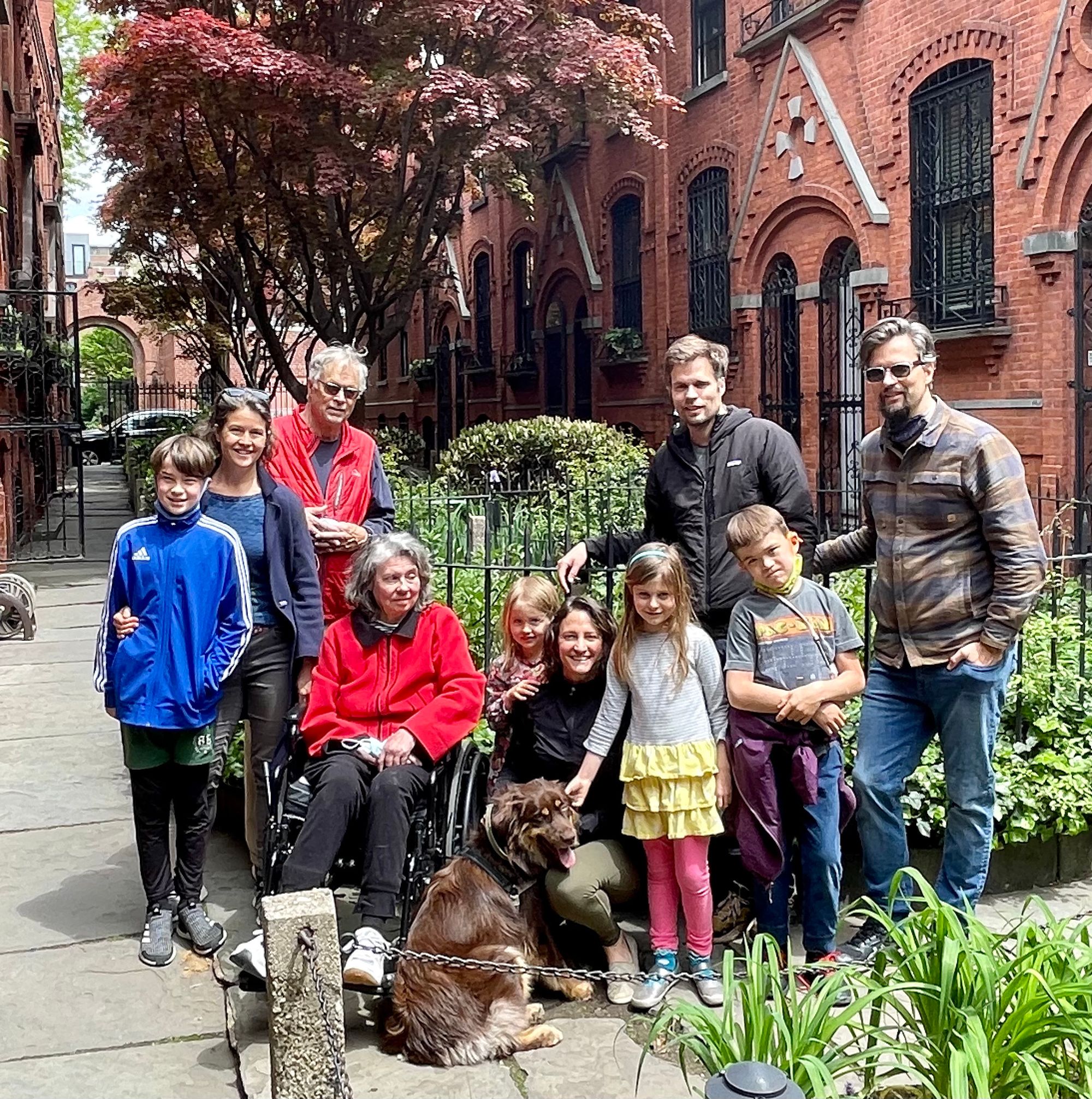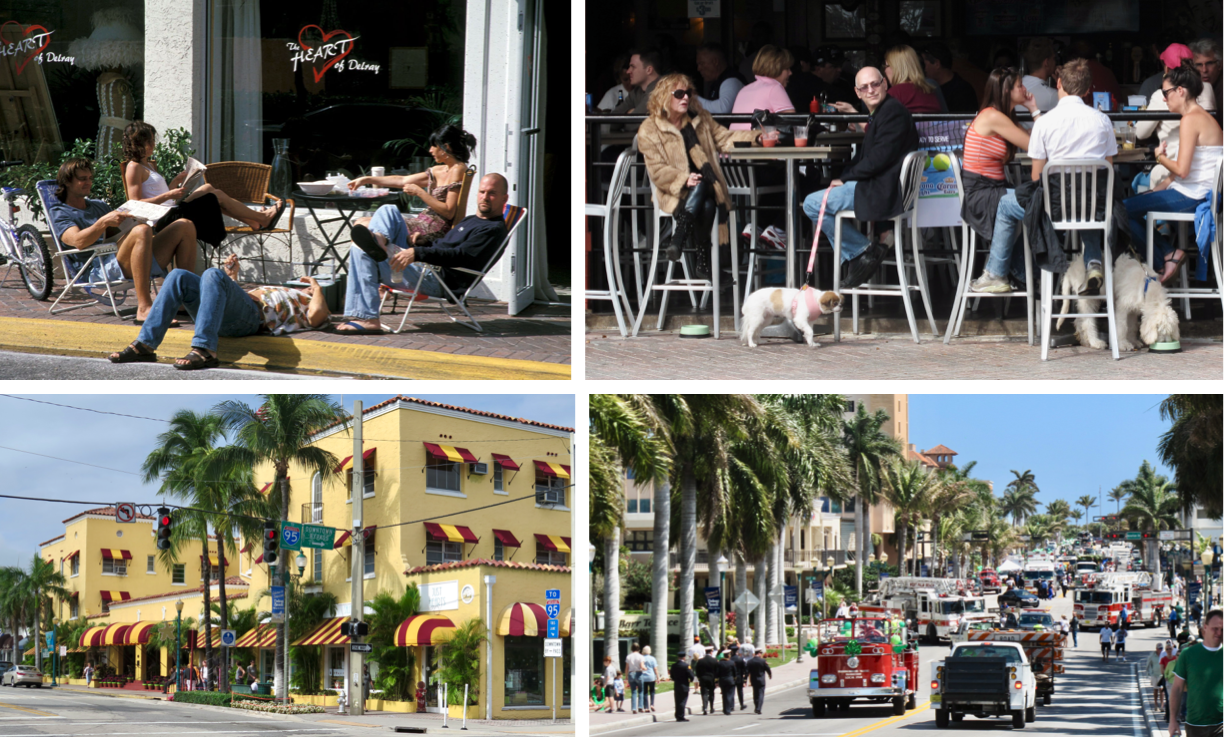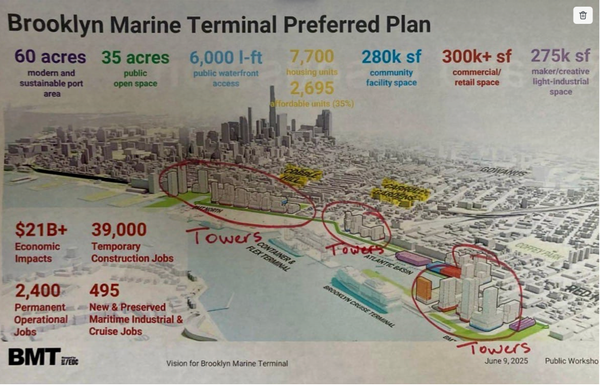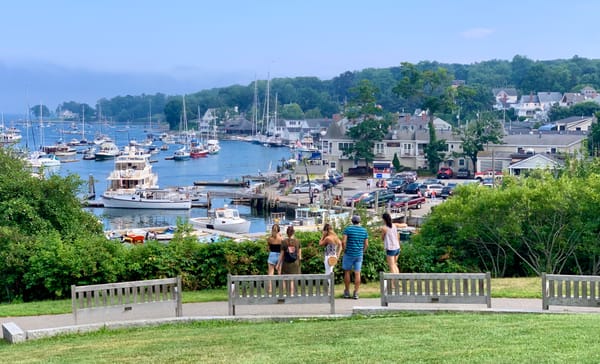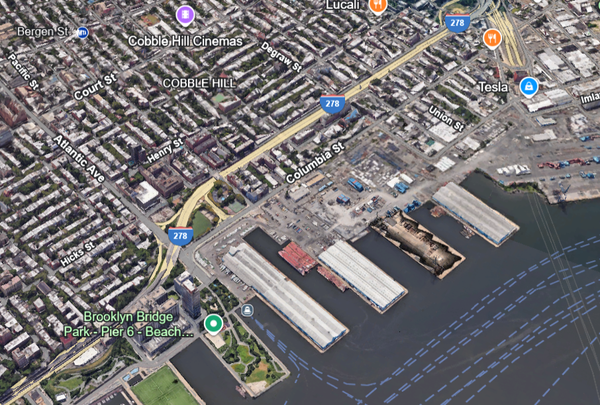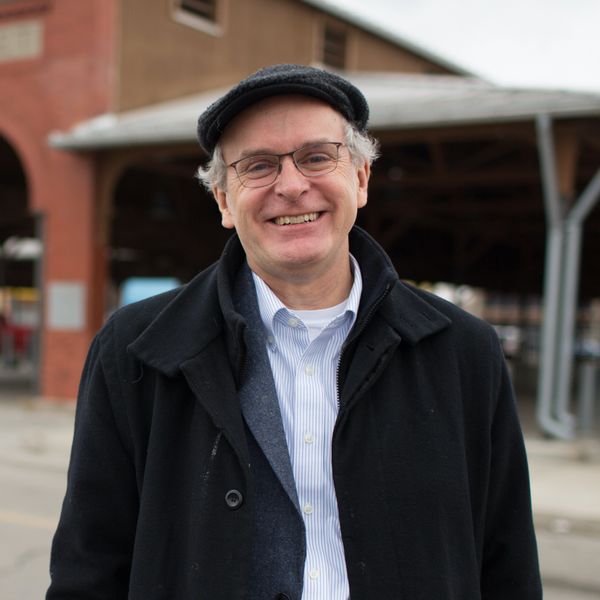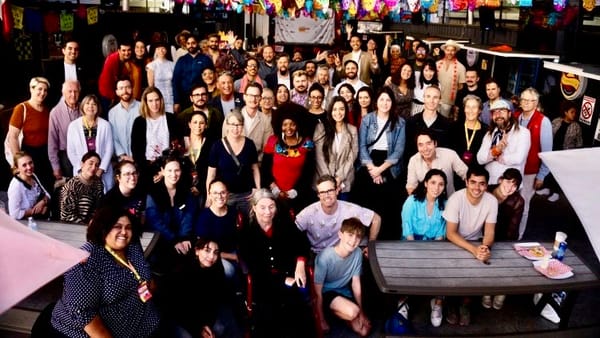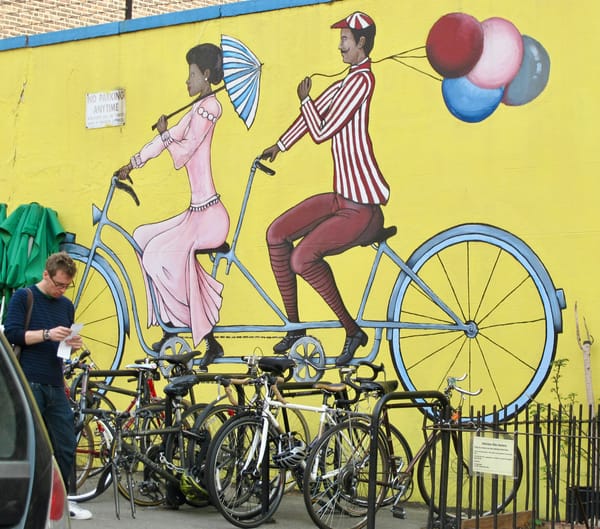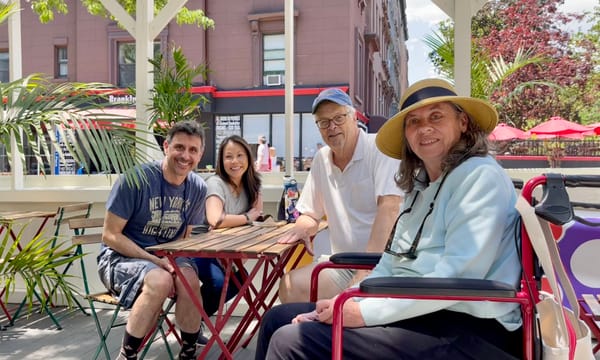Delray Beach in Florida, like many towns in modern America, sits on the fence between a cherished village-like feel and a culture dominated by cars. Whenever it takes a step in favor of further car presence, as it has been doing more and more, it is a loss for community and social life. Cars are eating away at everything we hold most dear and, because it is a gradual nibbling rather than a sudden change, many don't notice what we're losing until it's gone. In order to stop this shift toward car-centrism before it's too late and save the home we cherish, we need to open our eyes to what's happening and act now to stem that agenda, then fight for the future we truly want in Delray.
There are many cities similar to Delray in the US and around the world. We therefore believe that by exploring the intricacies of Delray and proposing solutions to its challenges, those other cities will be able to learn from its journey and apply it to their own. This is especially true of Main Street – an essential feature of every thriving town and city, so many of which are currently under-performing.
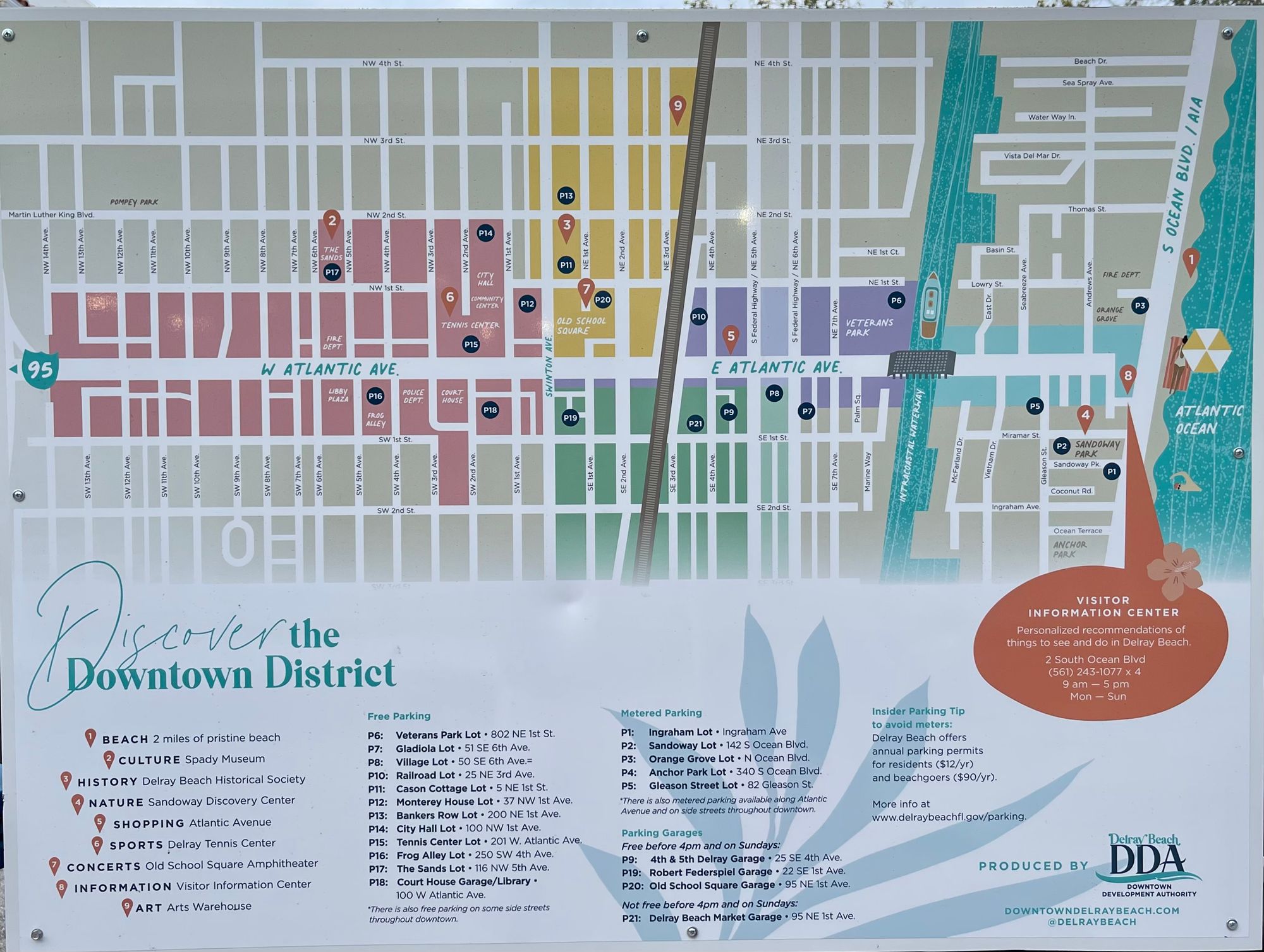
Delray's Main Street, a 40 minute walk from I-95 to the Atlantic Ocean
The Main Street of Delray Beach is Atlantic Avenue
This 40 minute walk from I-95 to the ocean should be treasured and defined as the backbone of the city, known as such to all. Today, except for a few core blocks, it is a set of disparate pieces that are mostly unrecognizable as anything more than a road. But if you look carefully, there are distinct zones that, if highlighted and made more recognizable, could come together to become a true heart of Delray that we can all cherish, and a model for communities everywhere.
In this post, we will address each of the opportunities for improvement down the entire length of Atlantic, starting at Swinton and going east to the ocean. These ideas come from many years of visiting Delray.
Our global work on Placemaking has allowed us to experience cities of all types and sizes and to understand what makes them work best. Check out our website and the documentary about our work, "The Place Man", to learn more.
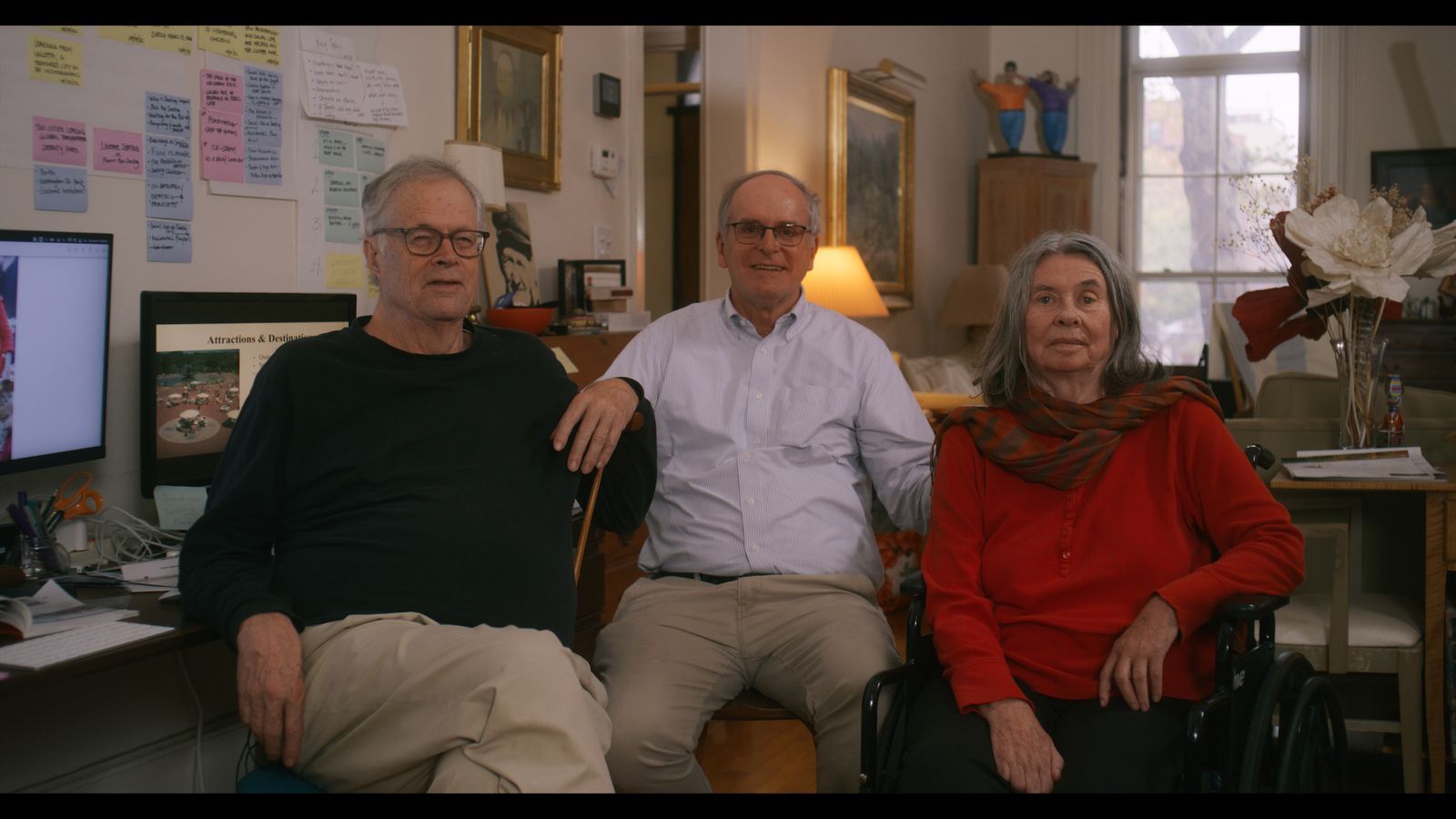
How Atlantic Avenue Can Push Back Against Car Culture
Atlantic Avenue has several of what we call "killer intersections" – intersections that destroy the connection between the street and everything around it, in other words, "killing" any sense of place. Moreover, they are dangerous, with over a quarter of traffic deaths in the US happening on intersections of this sort.
Transforming what might be described as "killer intersections" will mean removing turn lanes that draw more traffic onto Atlantic Avenue, narrowing roads, and expanding sidewalks along Atlantic Ave from Swinton to A1A.
Delray Beach is a great city that has the potential to become an even more vibrant and thriving destination if it:
- Makes less space for cars and more space for people. Remove turn lanes, expand sidewalks, shrink intersections and expand corners. At the end of the day, it's a city for people moving around, not for cars passing through.
- Brings out the potential of places with amenities, assets and programs. Once more people space is created, add seating, focal points and activities wherever possible so that people can engage with places of business and with each other.
- Highlights existing assets. Make the Atlantic Ocean/A1A, The Colony Hotel, Old School Square, and the Inter Coastal focal points for community connection and commerce. Develop their full potential and the returns will be immense.
- Creates a passeggiata or promenade along Atlantic Avenue and A1A. It would be a major asset that would place Delray Beach as one of the most desirable destination along the East Coast
Entering Downtown – Atlantic Ave and Swinton
Atlantic Avenue is the most important street in Delray Beach and spans its entire length. As it approaches the downtown core from I-95, there are six lanes with parking on both sides. This inflated width ends at Swinton where it suddenly becomes a two lane street (one lane in each direction) as it leads into the core of downtown.
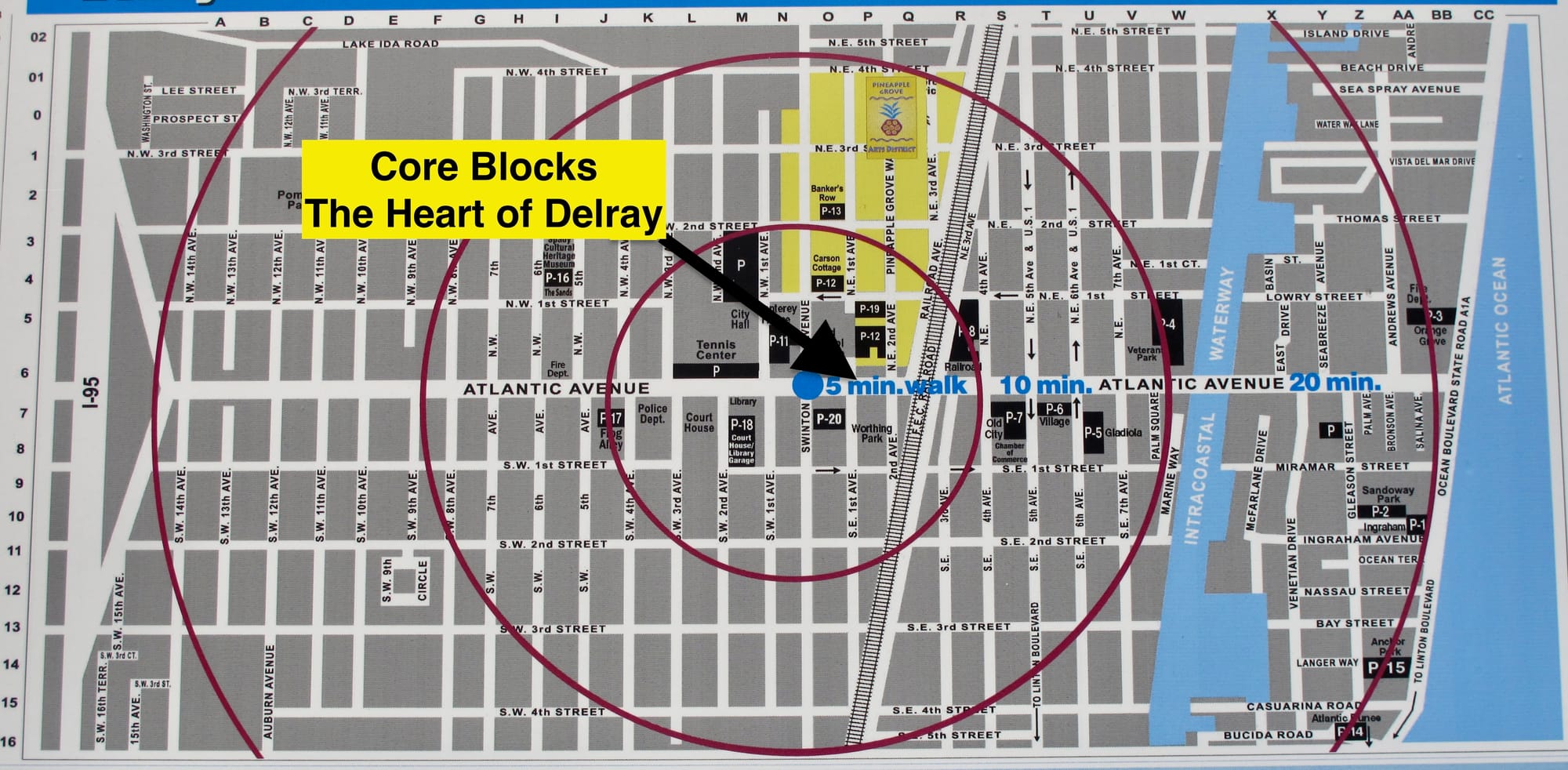
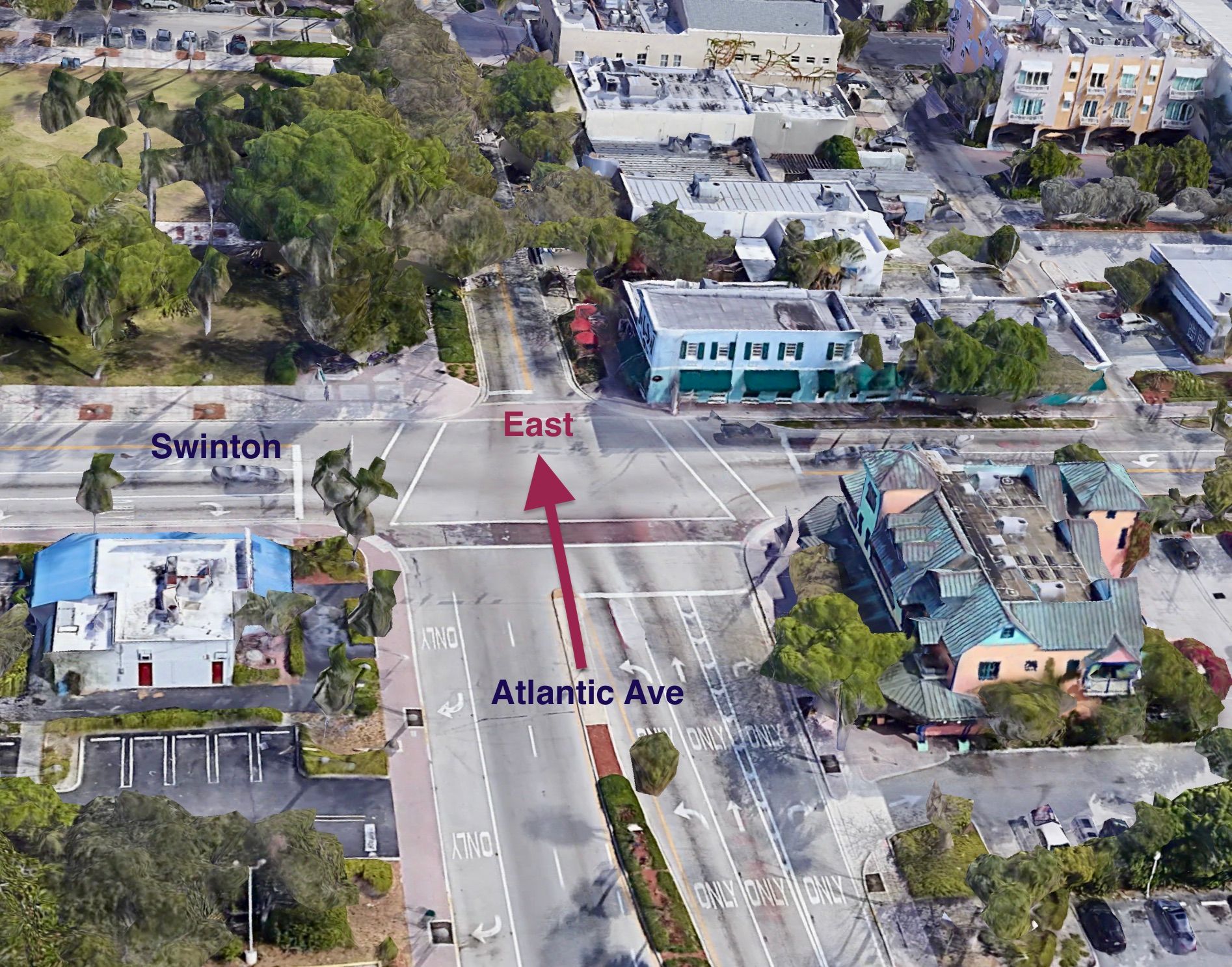
But the look and feel of this intersection does nothing to indicate that the most important part of the city is on the other side. People have so little sense of what is happening across this enormously wide, over-designed intersection, that nothing makes them want to journey across it. There is so much wasted potential here...
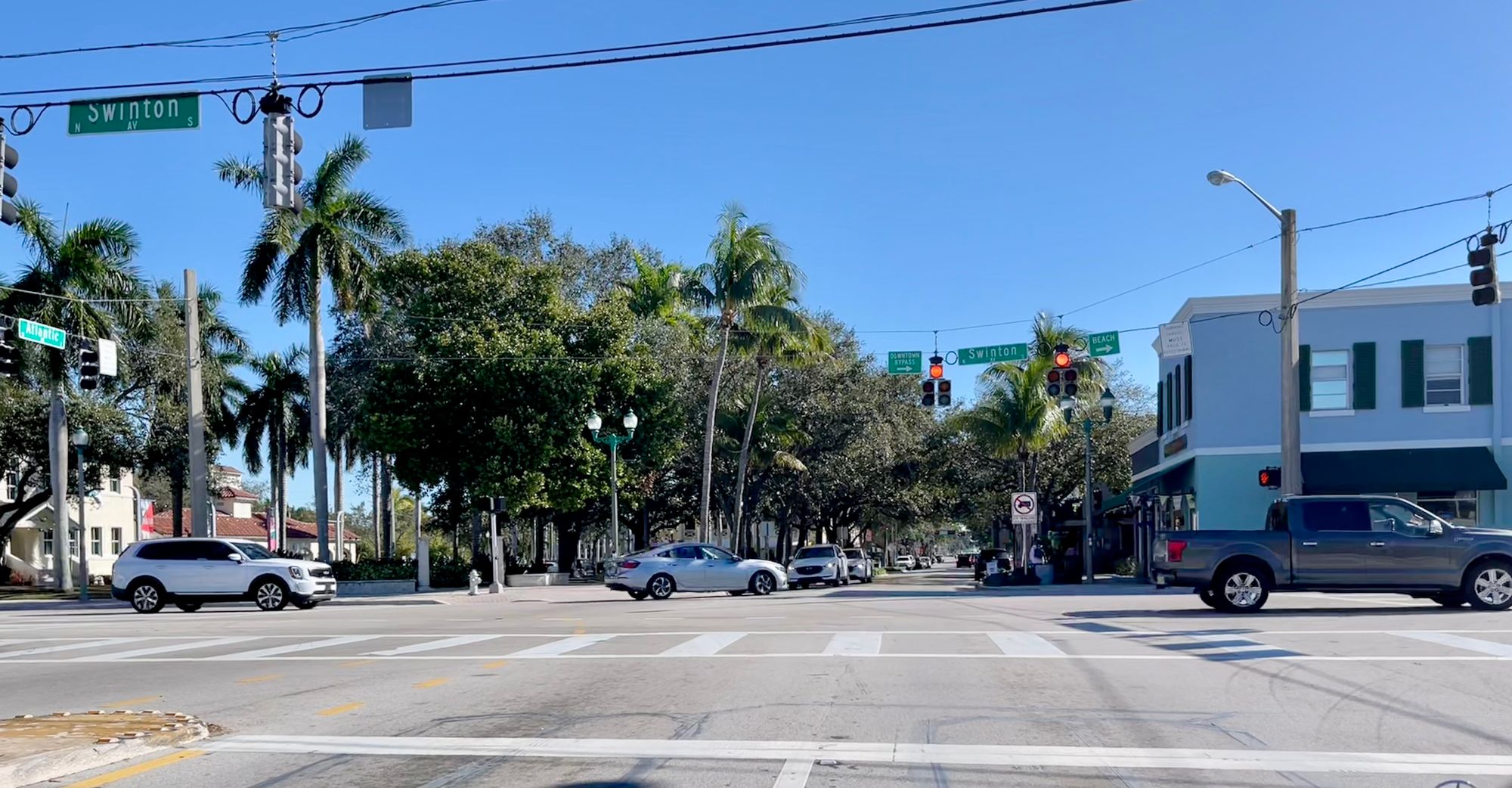
Looking east into the downtown core
Hidden Treasures - Out of Sight, Out of Mind
Additionally, on this intersection are some of the city's most important buildings. They are cut off from the town's core by a "wall" of traffic, inaccessible to pedestrians and as good as hidden. It doesn't make sense – destinations like this should be highlighted and located in the most visible and accessible areas in town.
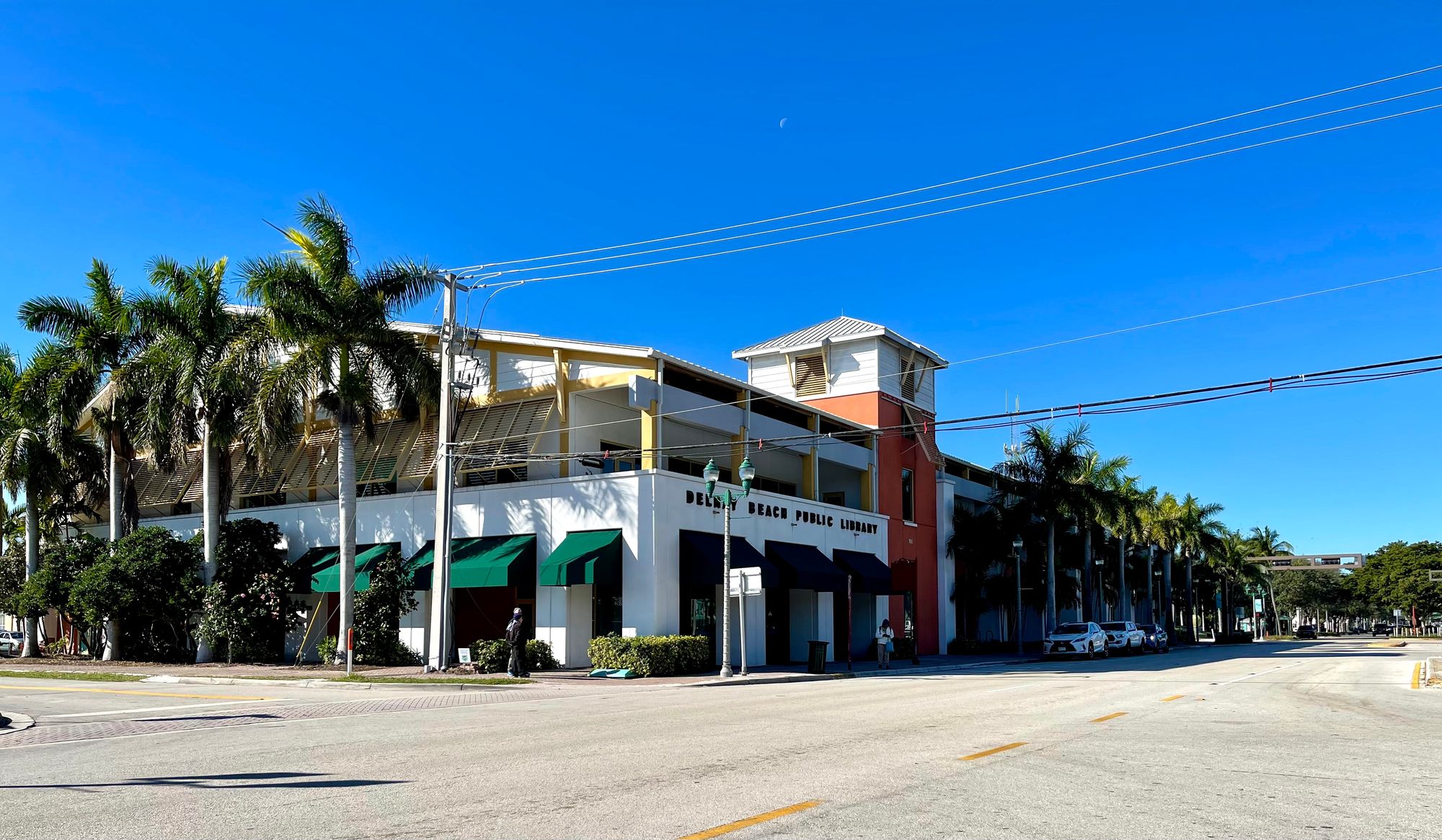
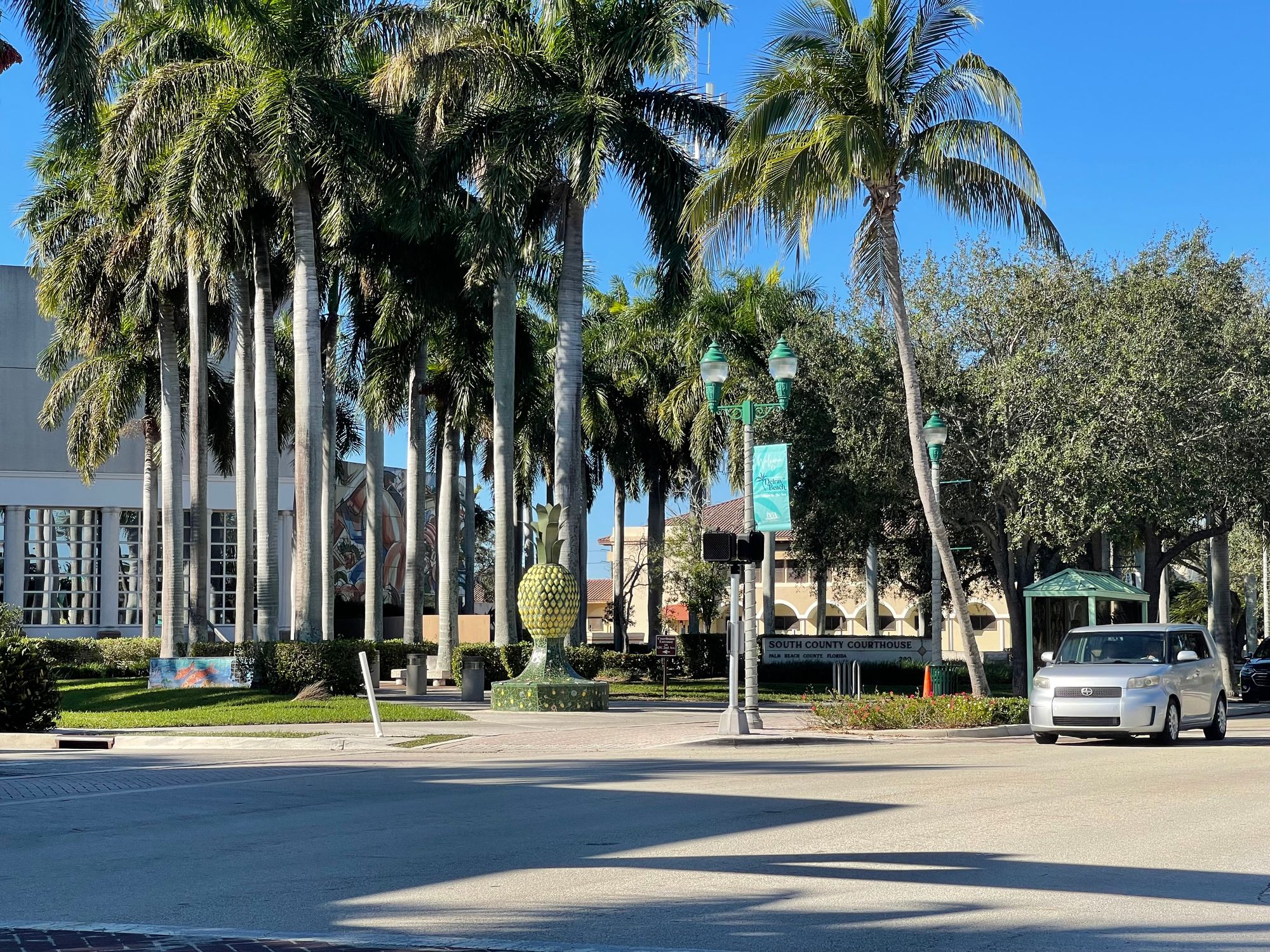
Library (left), Courthouse (right)
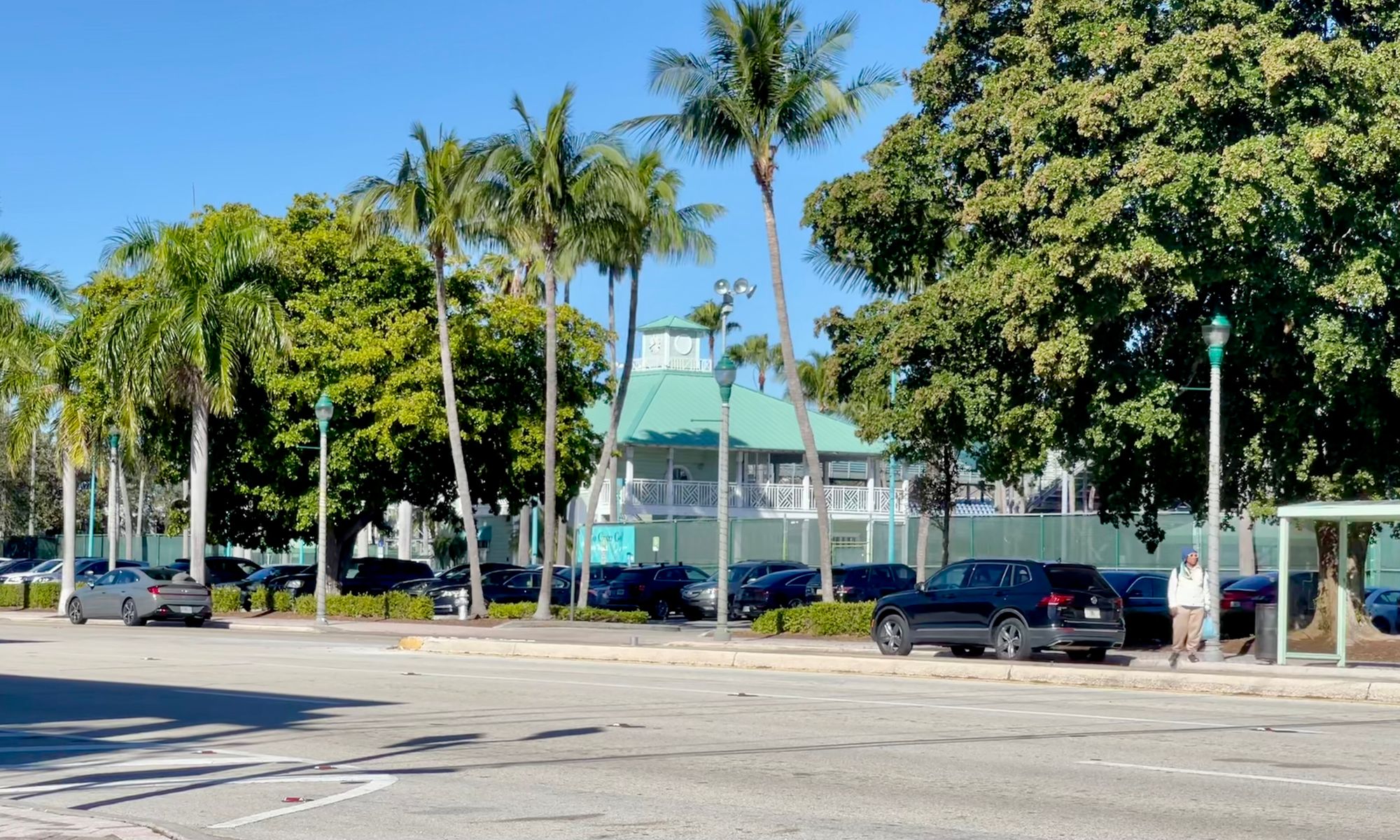
Tennis Center
Downtown Core
There is no bigger opportunity for a city than to create intersections that connect people to each other and to commercial offerings, public places, civic buildings, amenities and natural assets. That is what creates a socially and culturally vibrant and economically prosperous place, rather than just a jumble of disjointed street segments which people get frustrated trying to navigate. Connection is the key to creating a destination, and that is what is missing on most of the intersections all the way to the Atlantic Ocean.
Entering the Downtown Core
Delray's downtown core, just a couple blocks east, is worlds apart in terms of atmosphere and activity from the killer intersection at Swinton. Let's see why.
Although there is no gateway to announce this entrance into the downtown (there should be), everything notably changes for a few wonderful, vibrant blocks that make up the unfortunately too small of a fraction of main street's core. After those precious blocks, Atlantic becomes an over-sized road again, continuing for another 10 blocks until it arrives at the Atlantic Ocean with no sense of arrival worthy of that important destination.
The current "heart of Delray" is at Atlantic Avenue and the intersection of NE and SE 2nd. This core is one block in each direction.
Everyone gravitates here because there is so much energy emanating out of this intersection and the adjacent blocks going north, as a gateway to Pineapple Grove, and south into additional restaurants and popular takeout places. It also stretches west to Swinton and east to the railroad tracks.
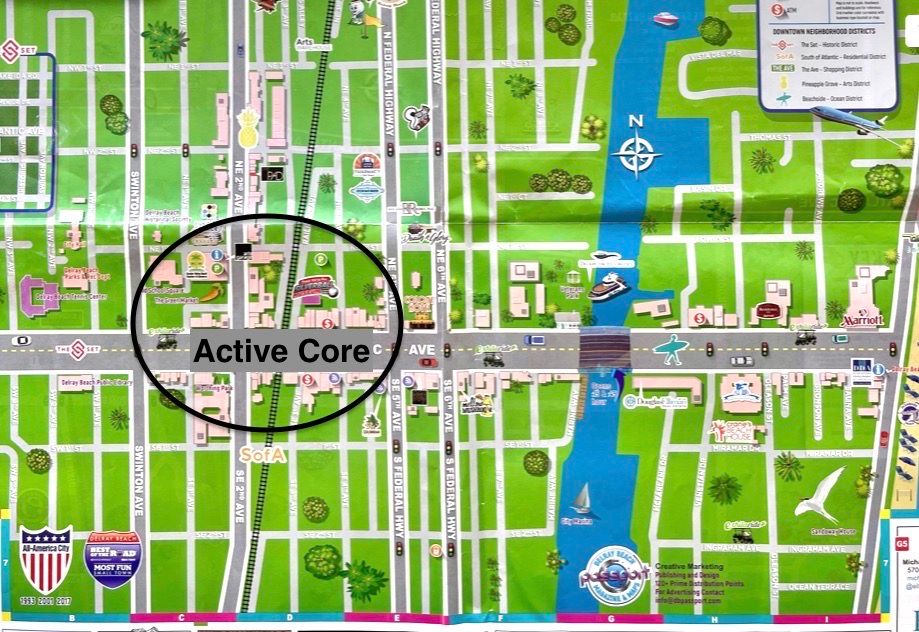
Downtown Core - Swinton to A1A map
For most people visiting Delray, life does not begin until you cross over the invisible boundary of the Swinton and Atlantic intersection. Just a short walk east from that point you come upon two intersections that are the best we have seen in Florida. It rivals some of the best historic streets in major European cities. It is definitely a "shared" intersection because it gives equal authority to both vehicles and pedestrians, making it a place that feels welcoming to all.
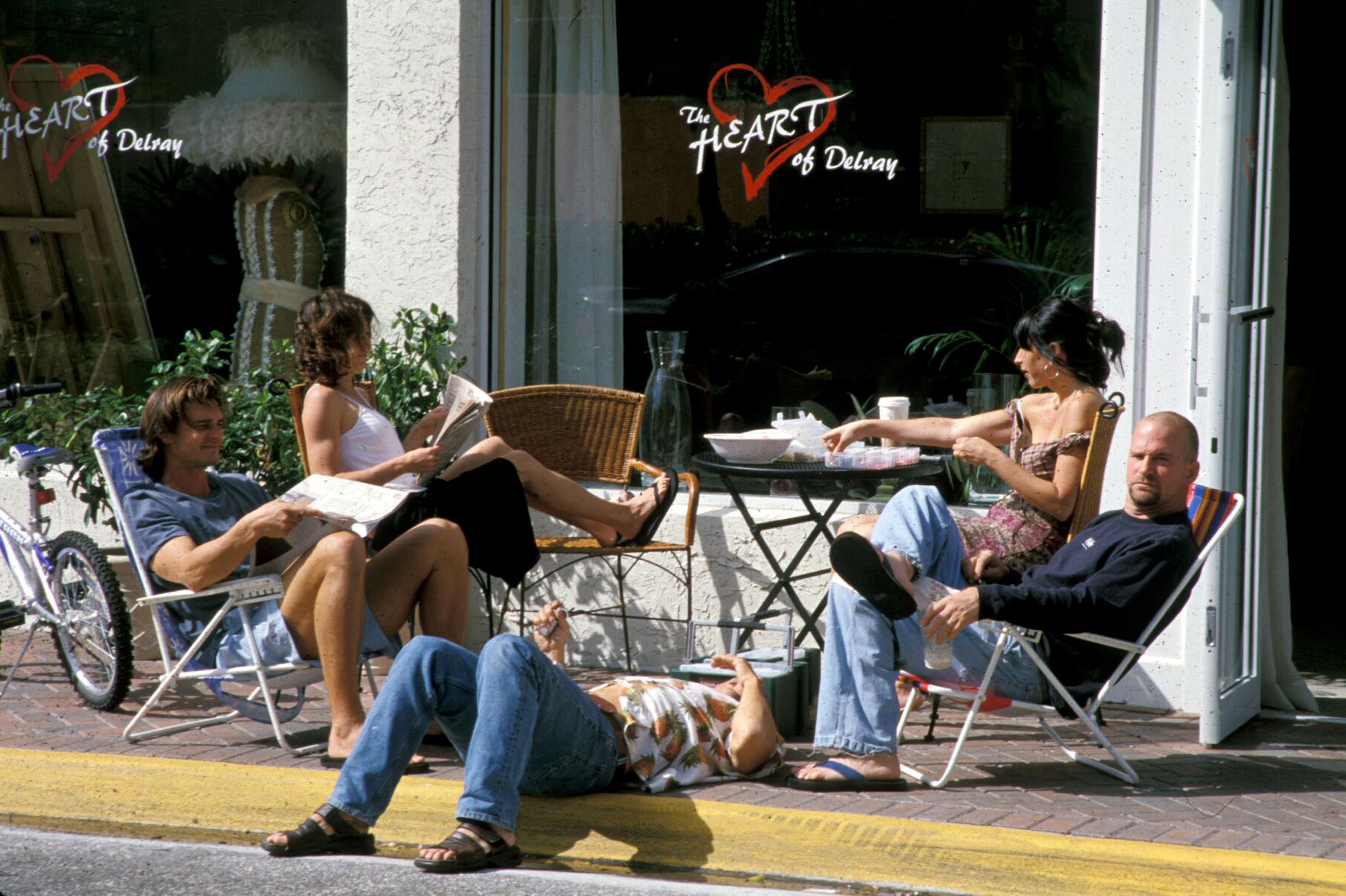
The Best Intersection – 2nd Avenue East and Atlantic Avenue
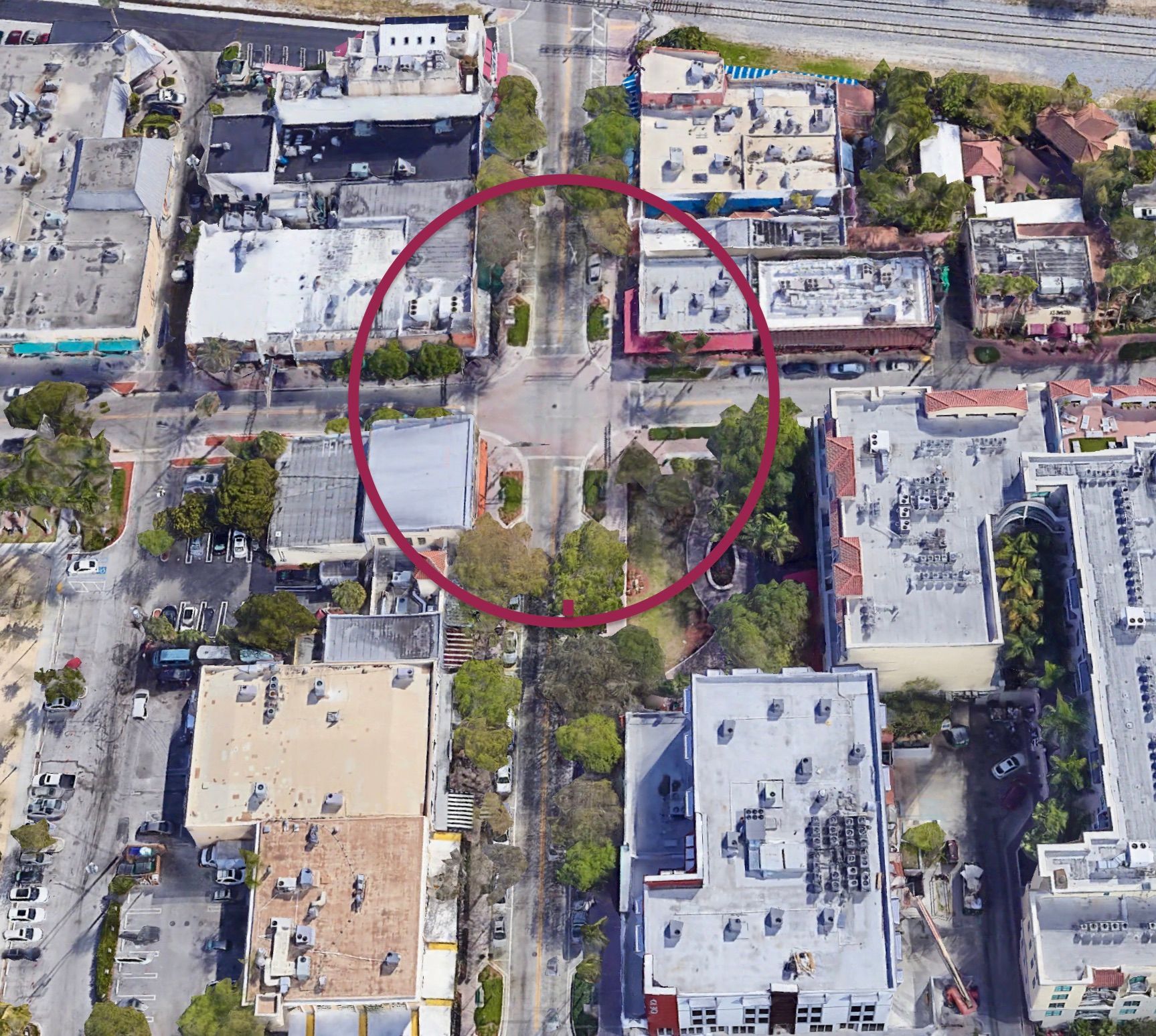
Social Life at the Corners
This main intersection is lined with vibrant destinations full of people. What's more, because the streets are narrow here, vehicles naturally slow to an almost walking speed. Drivers are able to see and take in the sights, drawn in by the volume of interesting scenes and people.
Pedestrians are here because this is the hot spot, the Heart of Delray, where everyone wants to be and more importantly, where everyone feels comfortable being. Each corner of this intersection is a gathering place where people can stop and talk, hang out, and even stand in the street without anxiety.
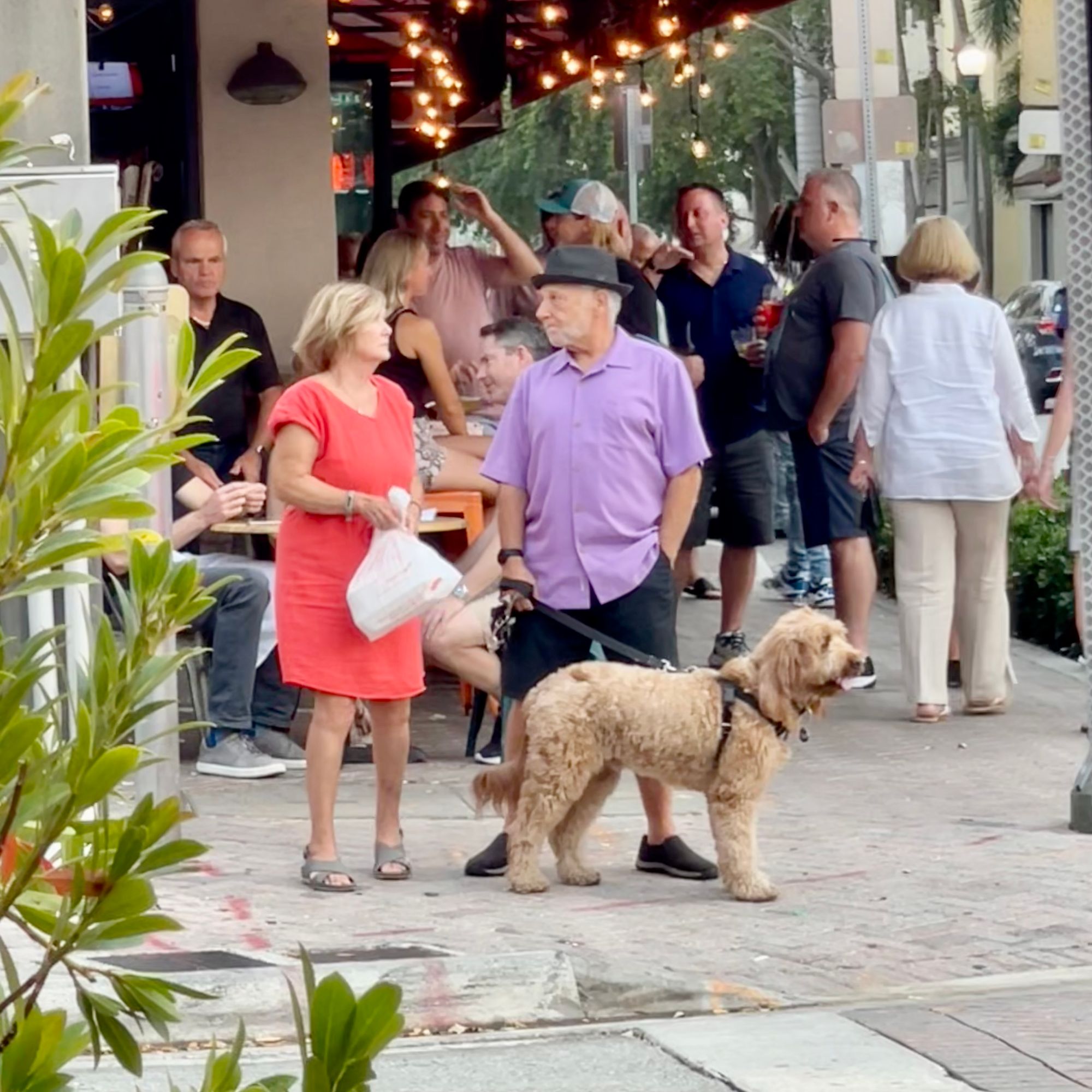

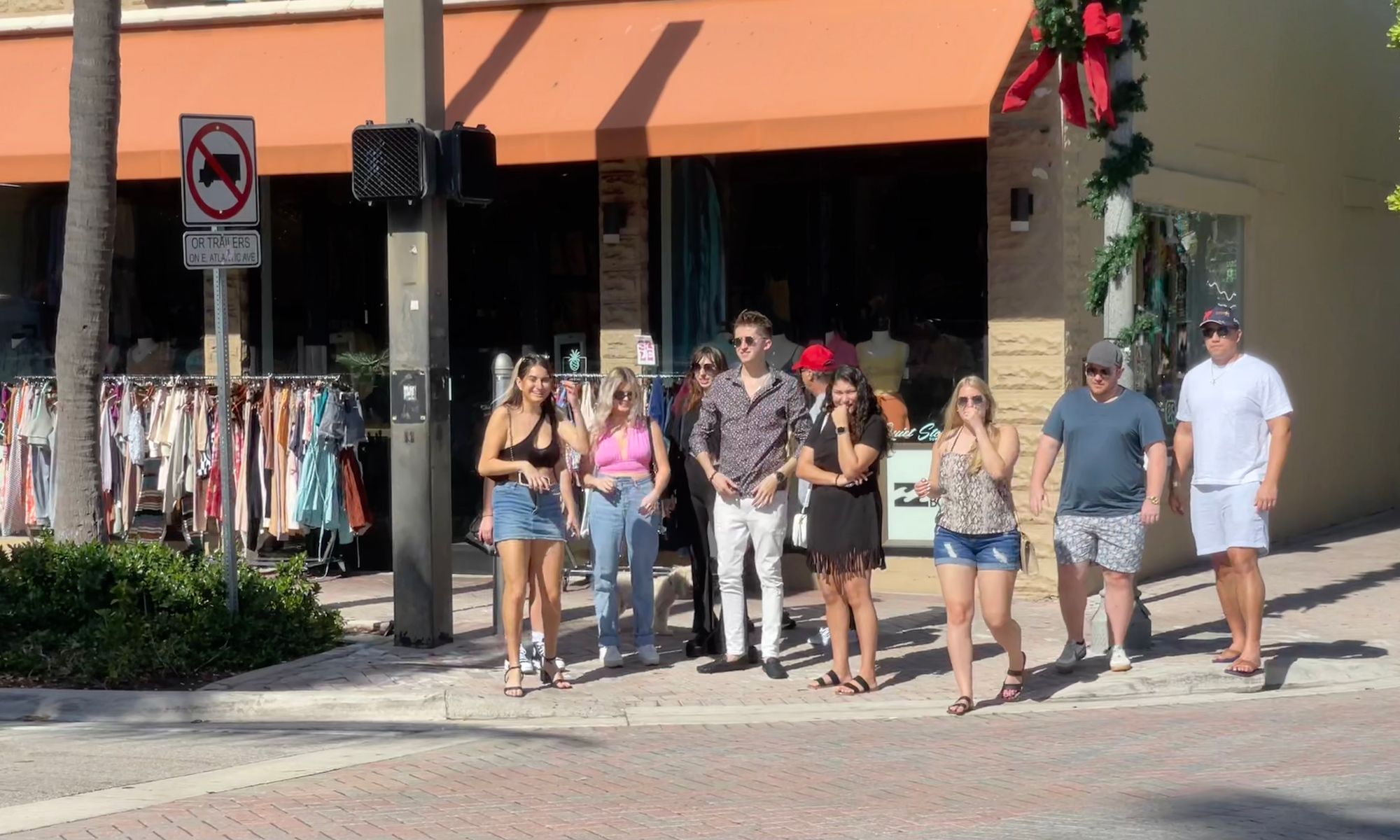

Each photo above shows one of the four corners
Waiting at the corner is a social experience. Whereas at the intersection at Swinton, as we saw before, waiting at the corner is a stressful experience that people want to be over as soon as possible. Here people actually enjoy spending time at the corner. People are in groups of all sizes, ages and cultures, just enjoying themselves without a care, because cars drive slow and there's much to see and do.
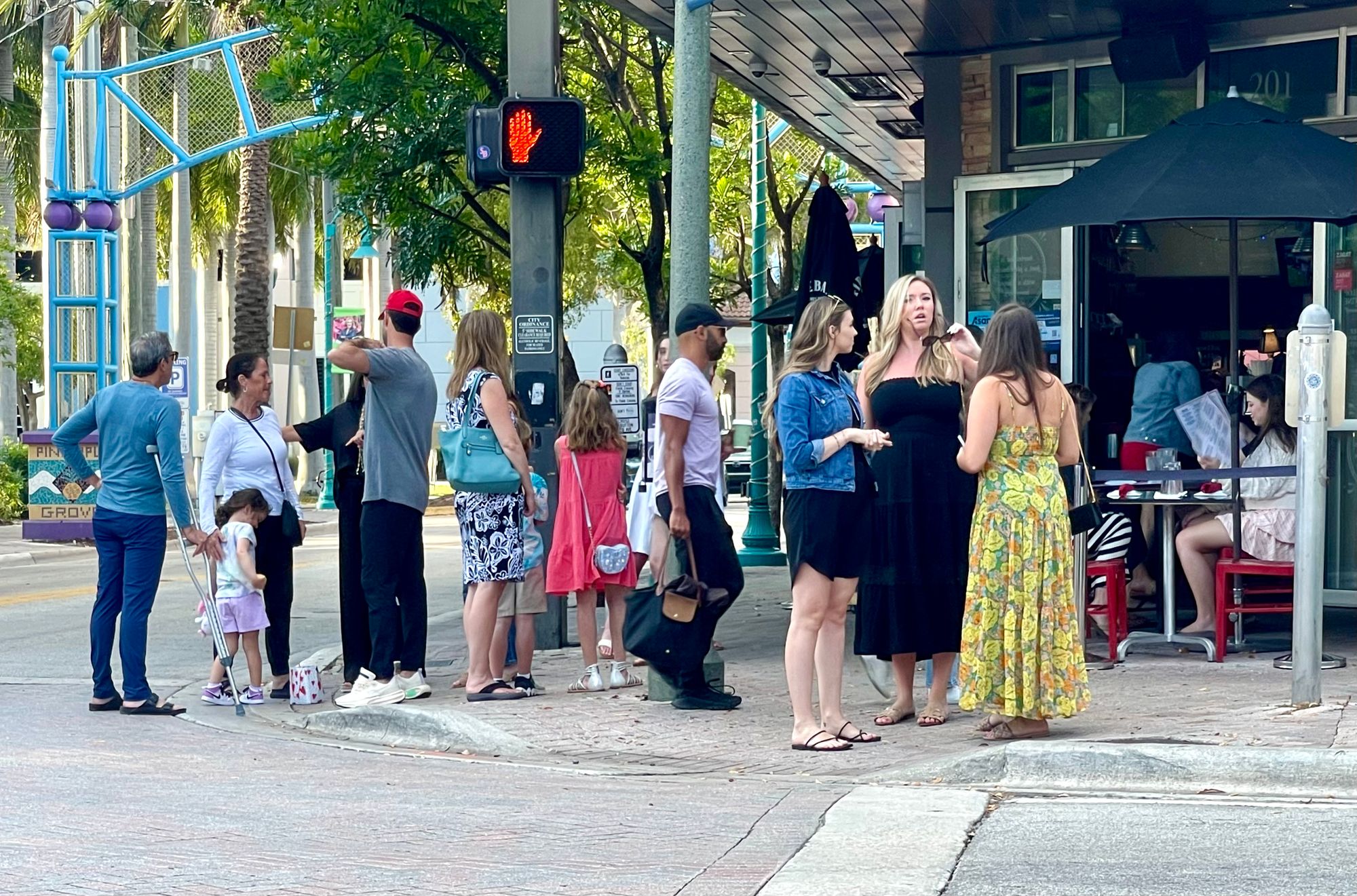
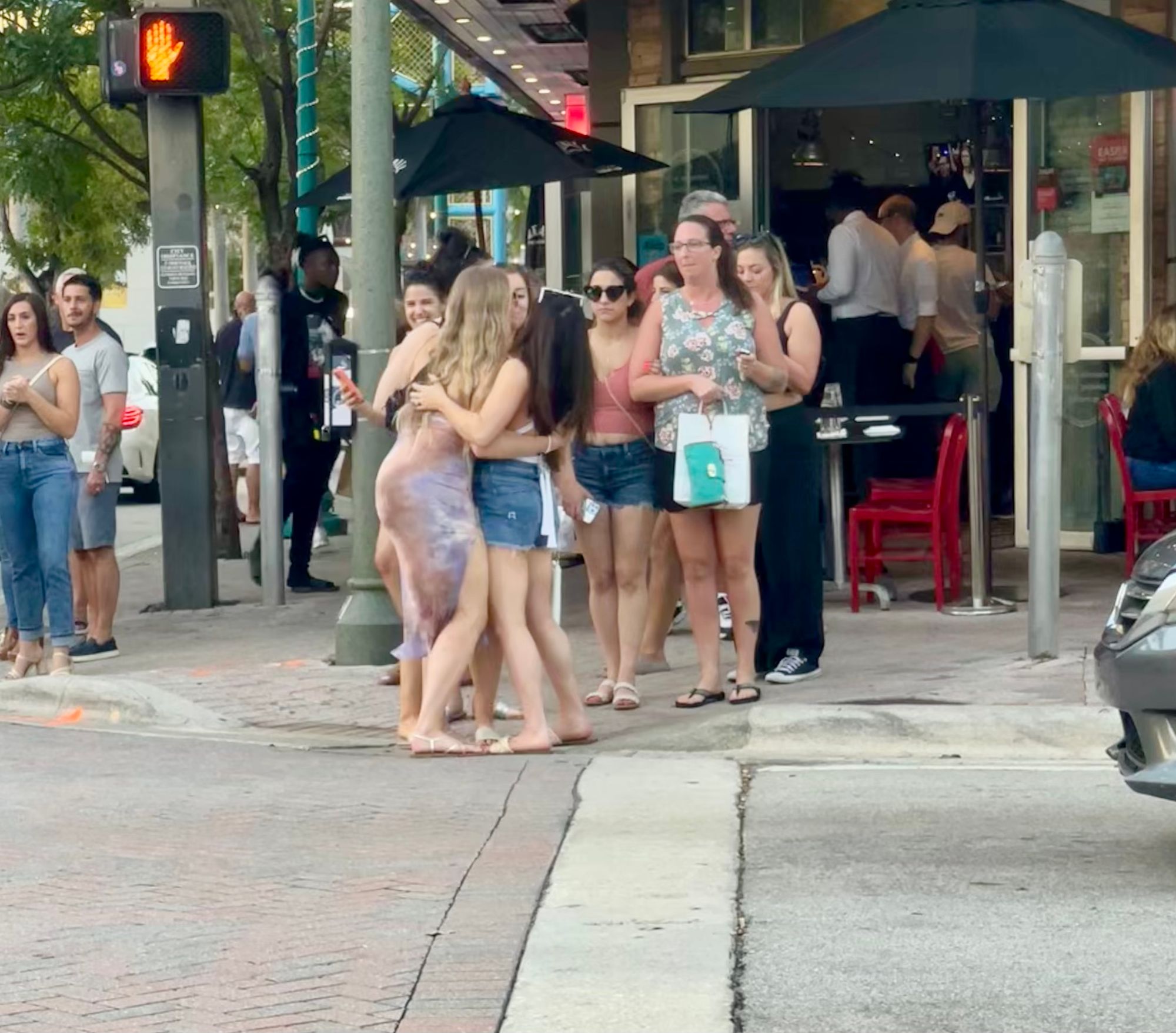
Expressions of joy and interest at the intersection
Another crucial difference is that at this location, crossing the street is casual and safe. It doesn't require intense focus and carefulness. People are at ease.
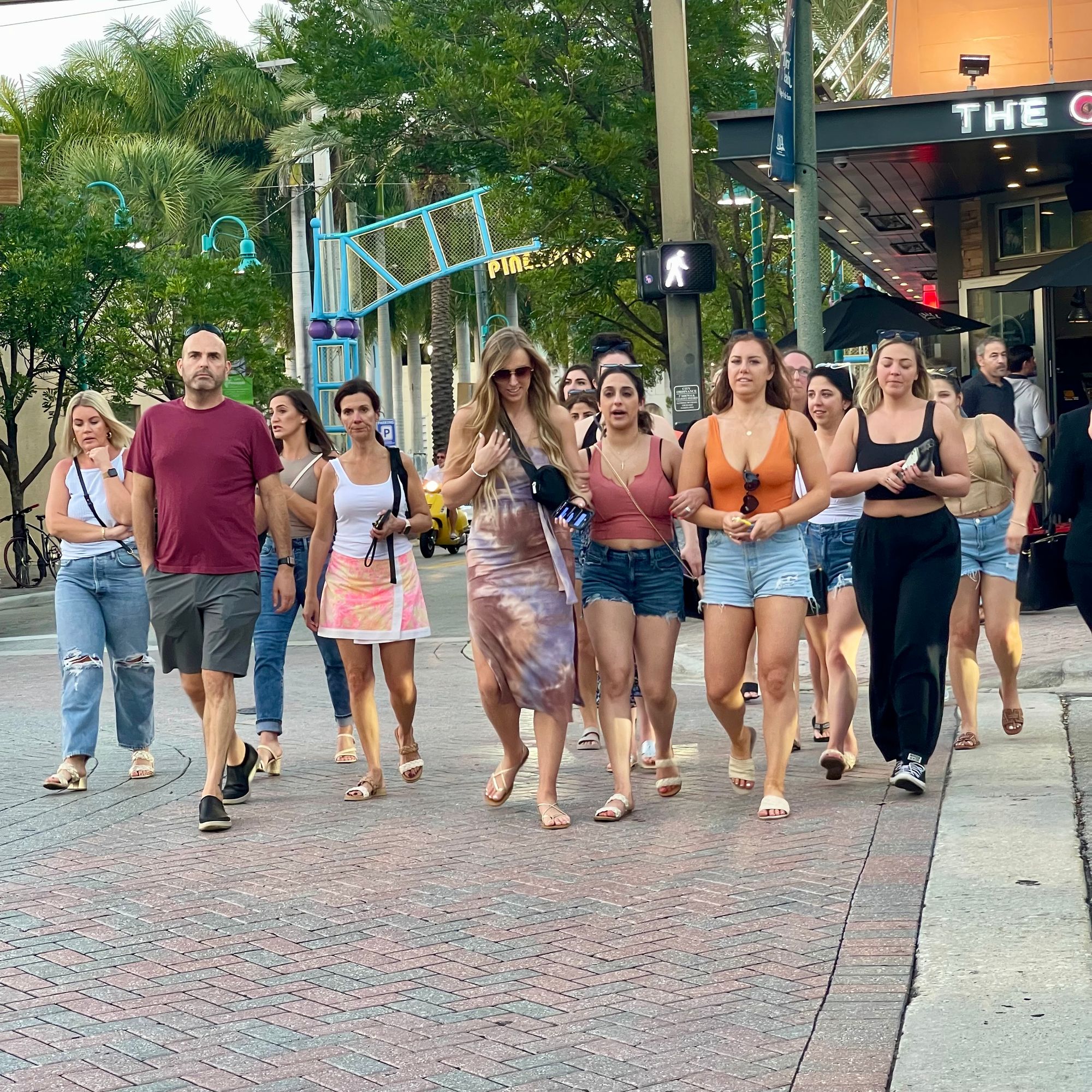
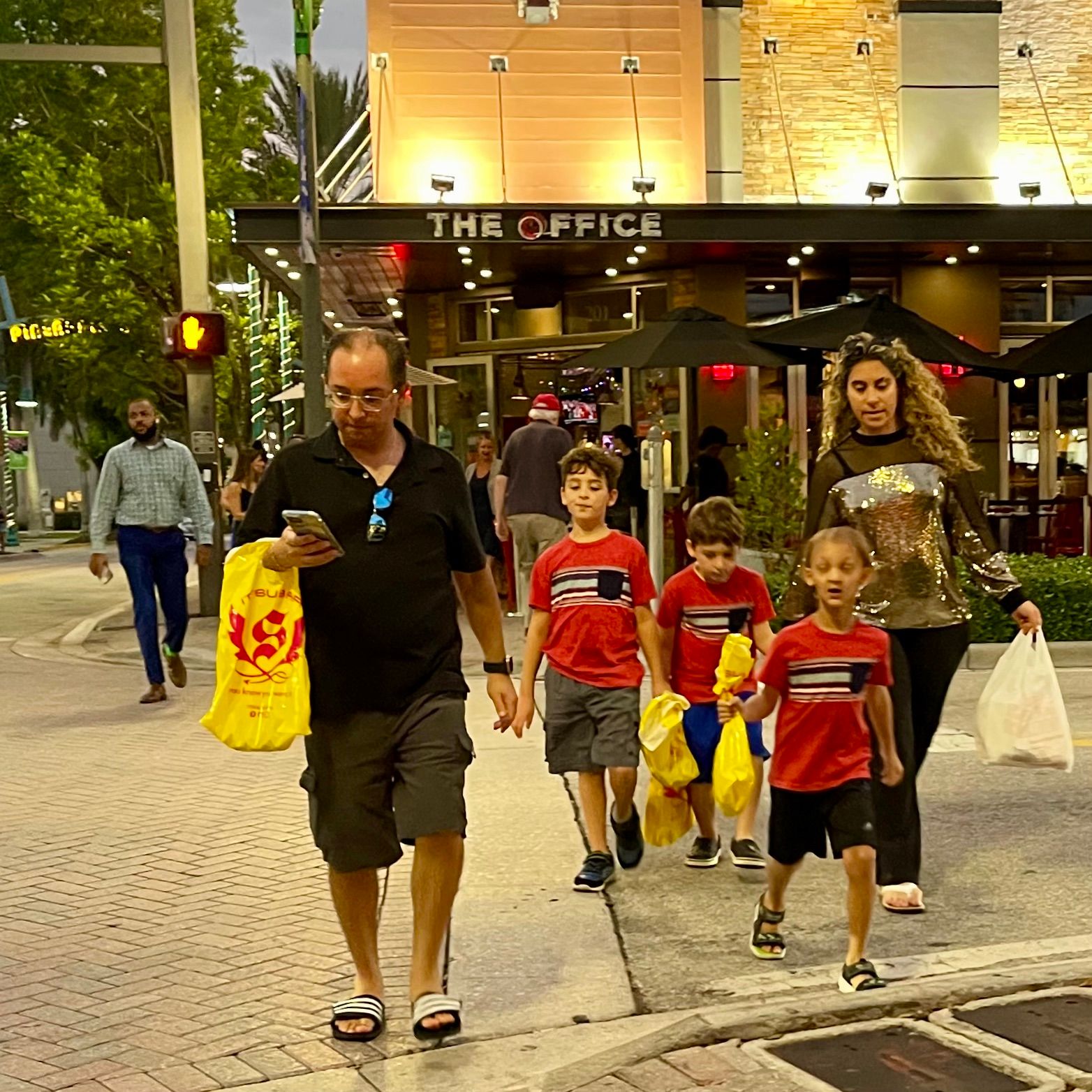
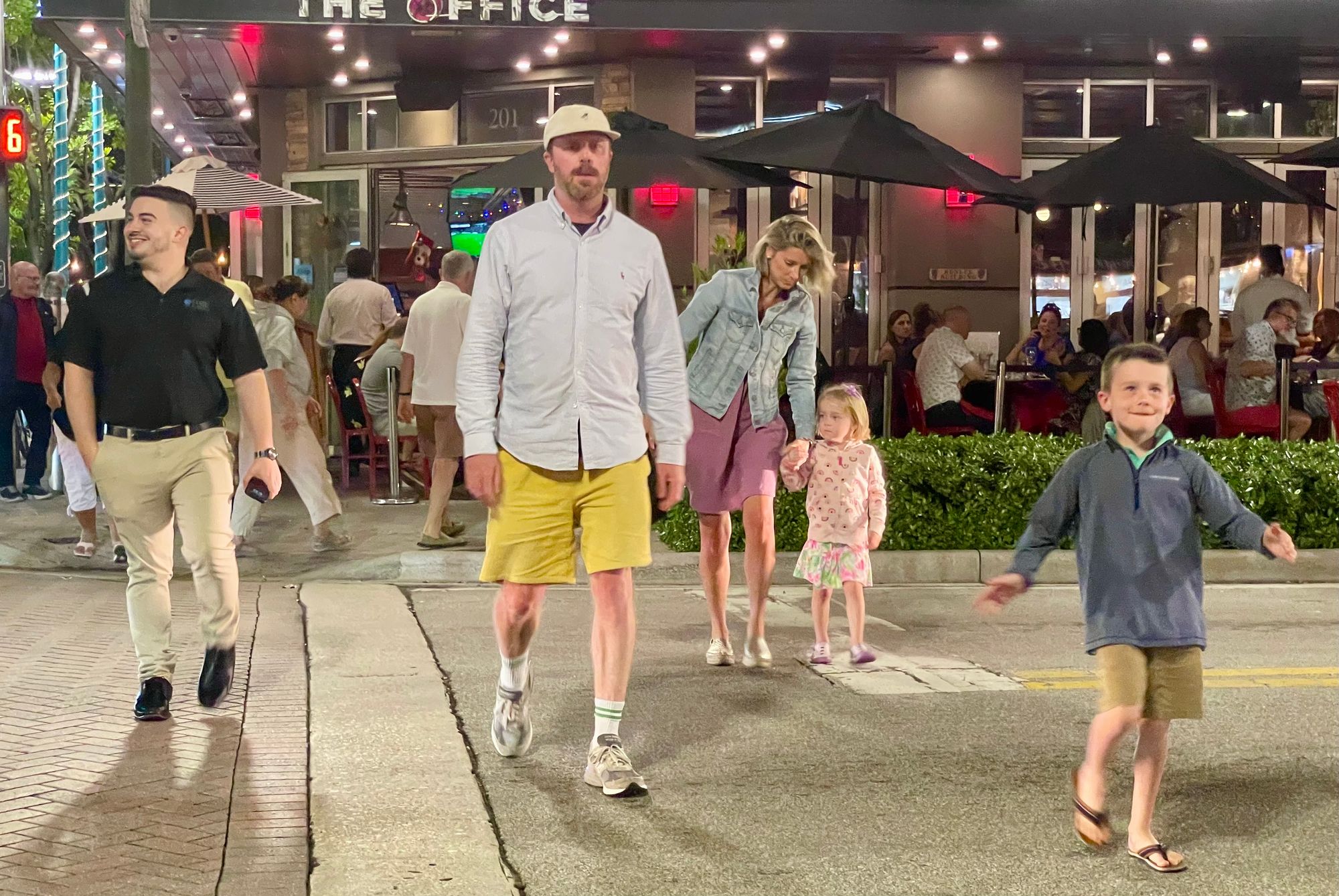
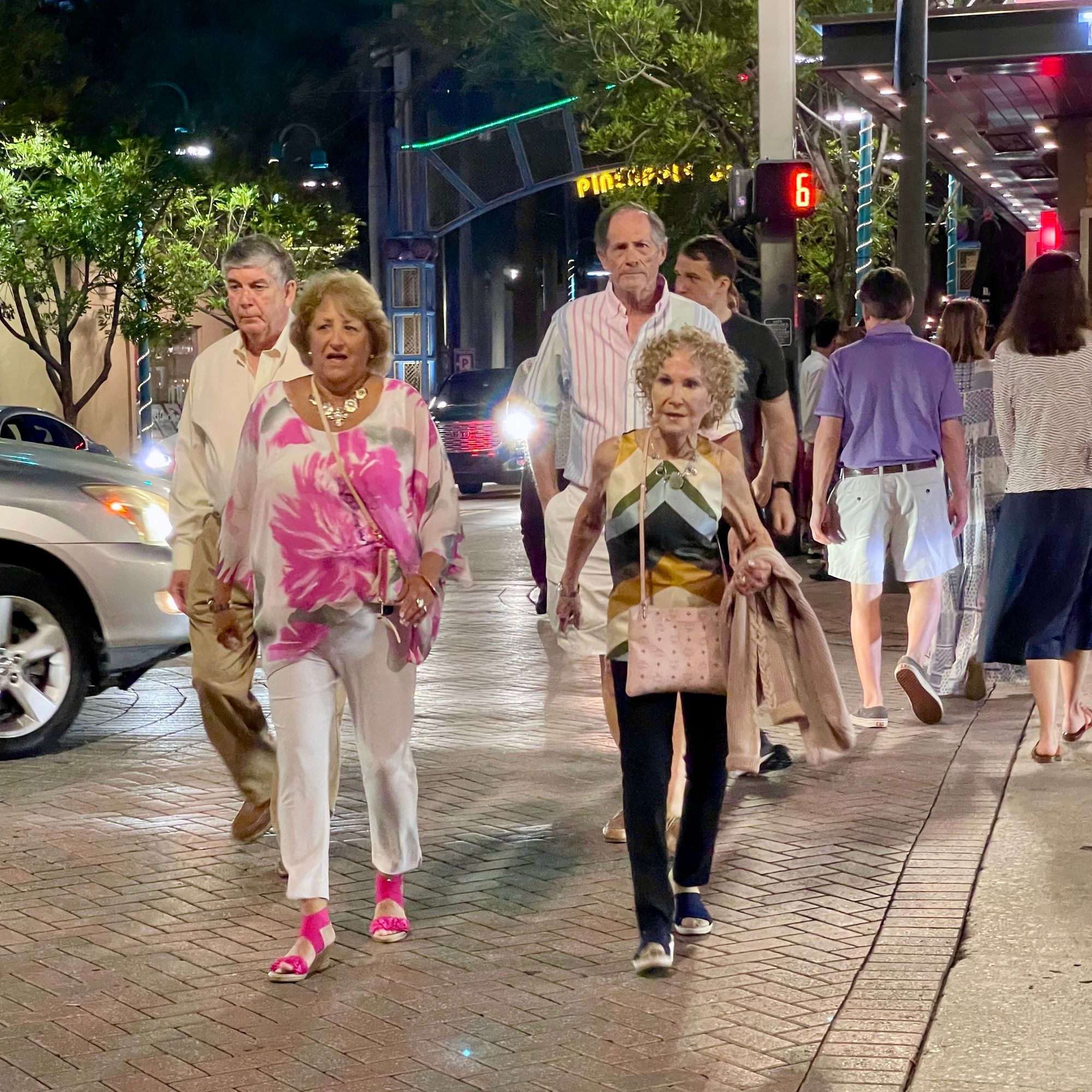
People feel comfortable and safe enough to not even pay attention to the cars and multi-task instead.
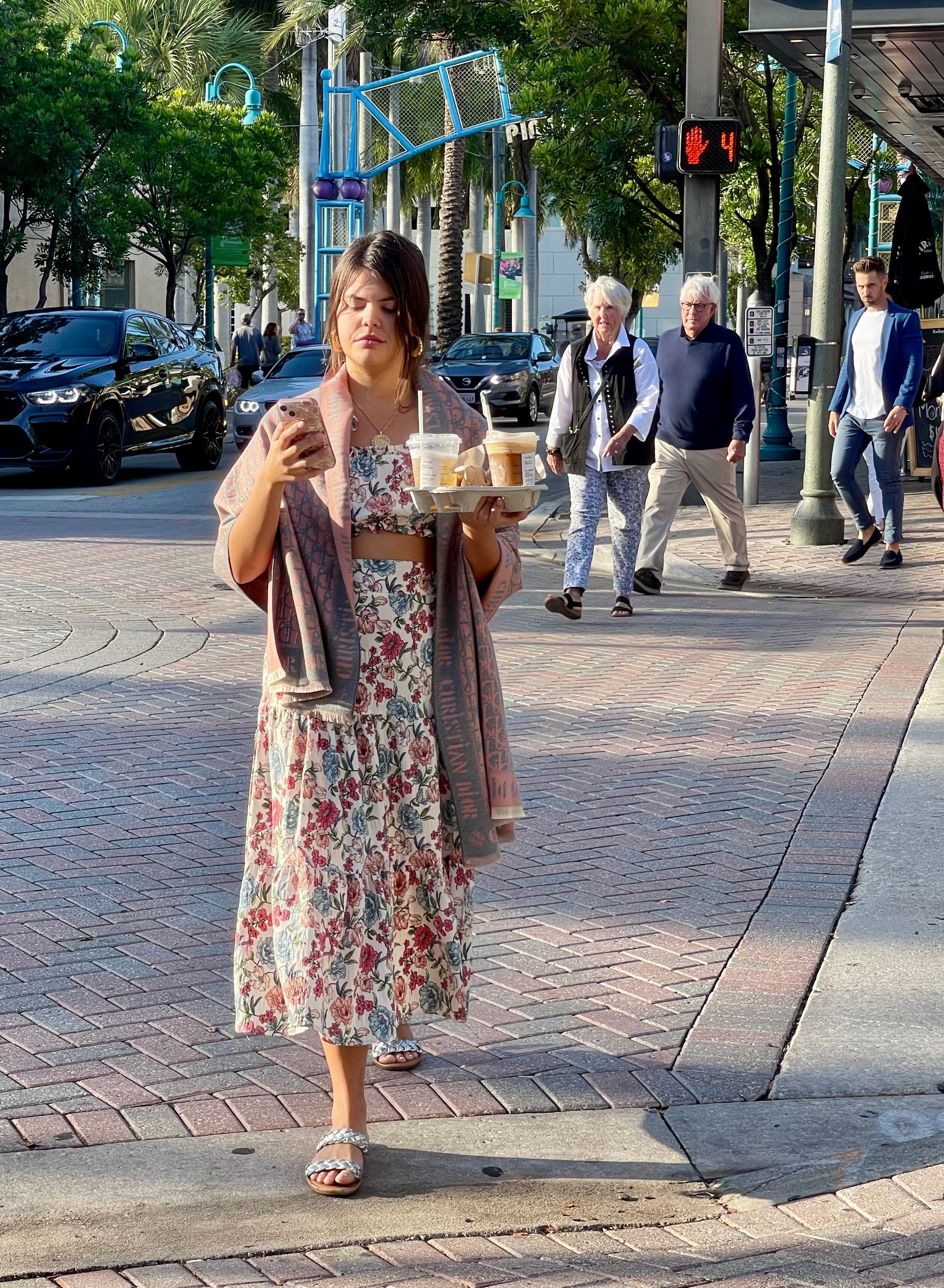
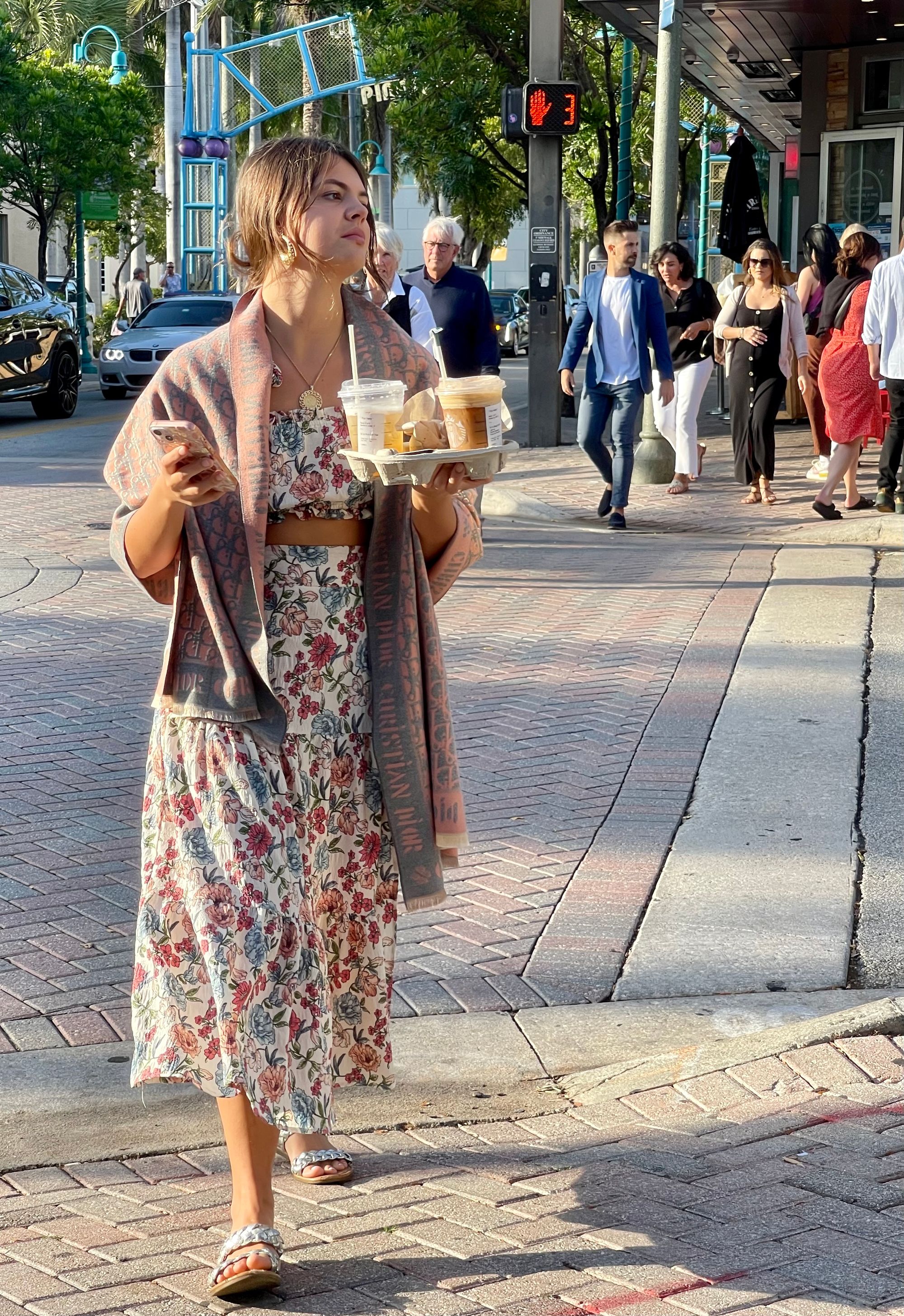
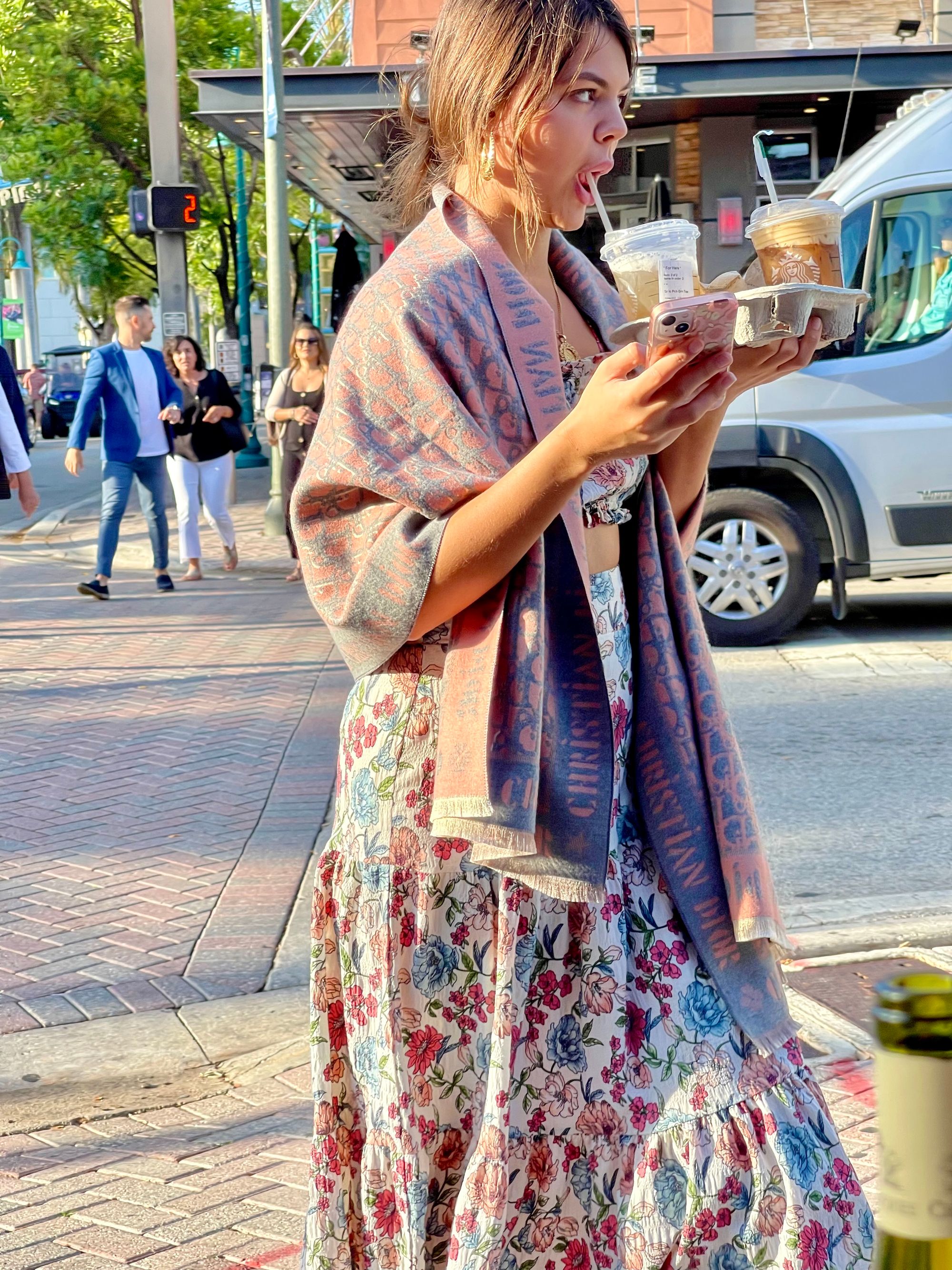
Baby carriages are everywhere, even with pets.
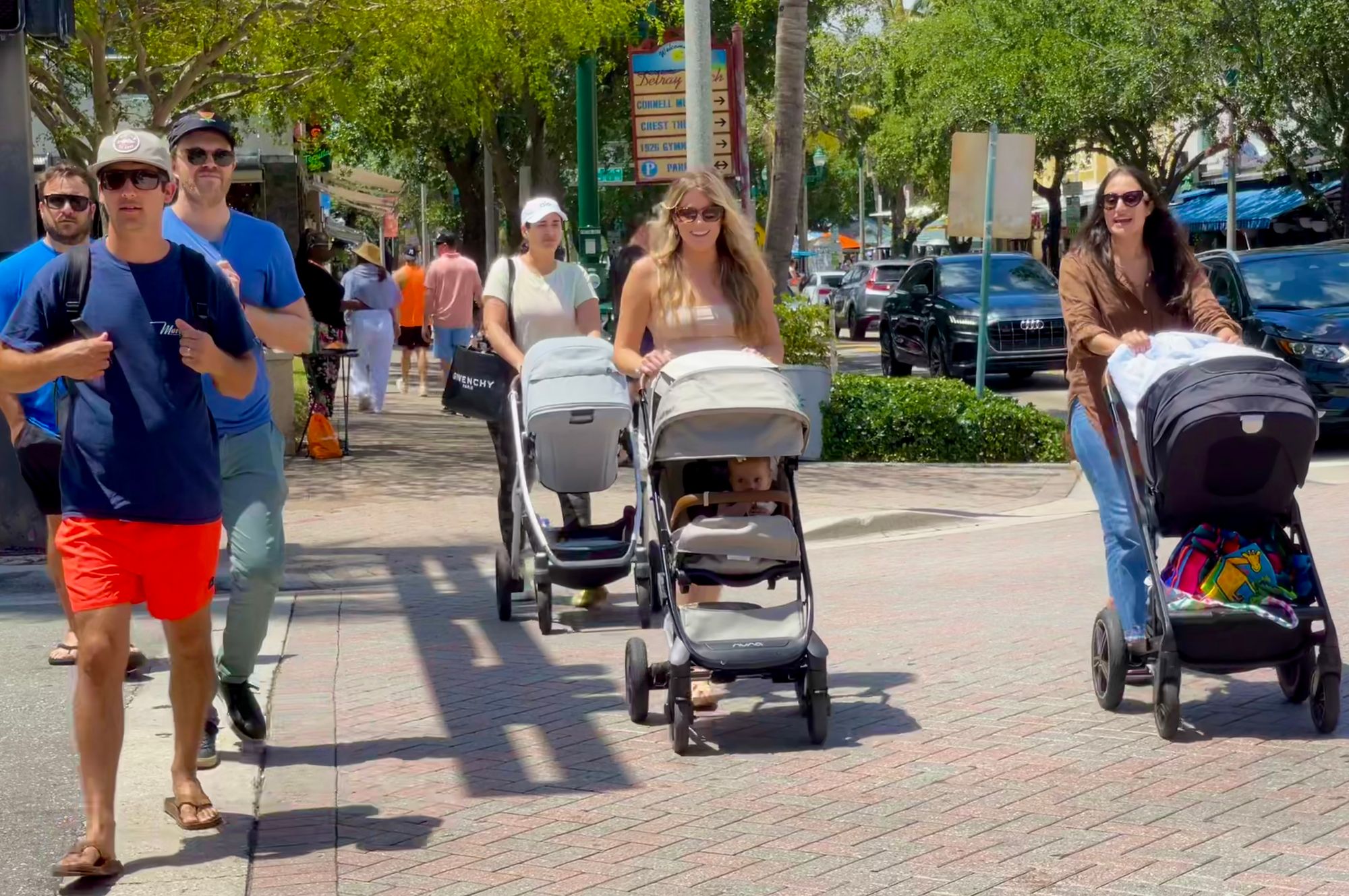
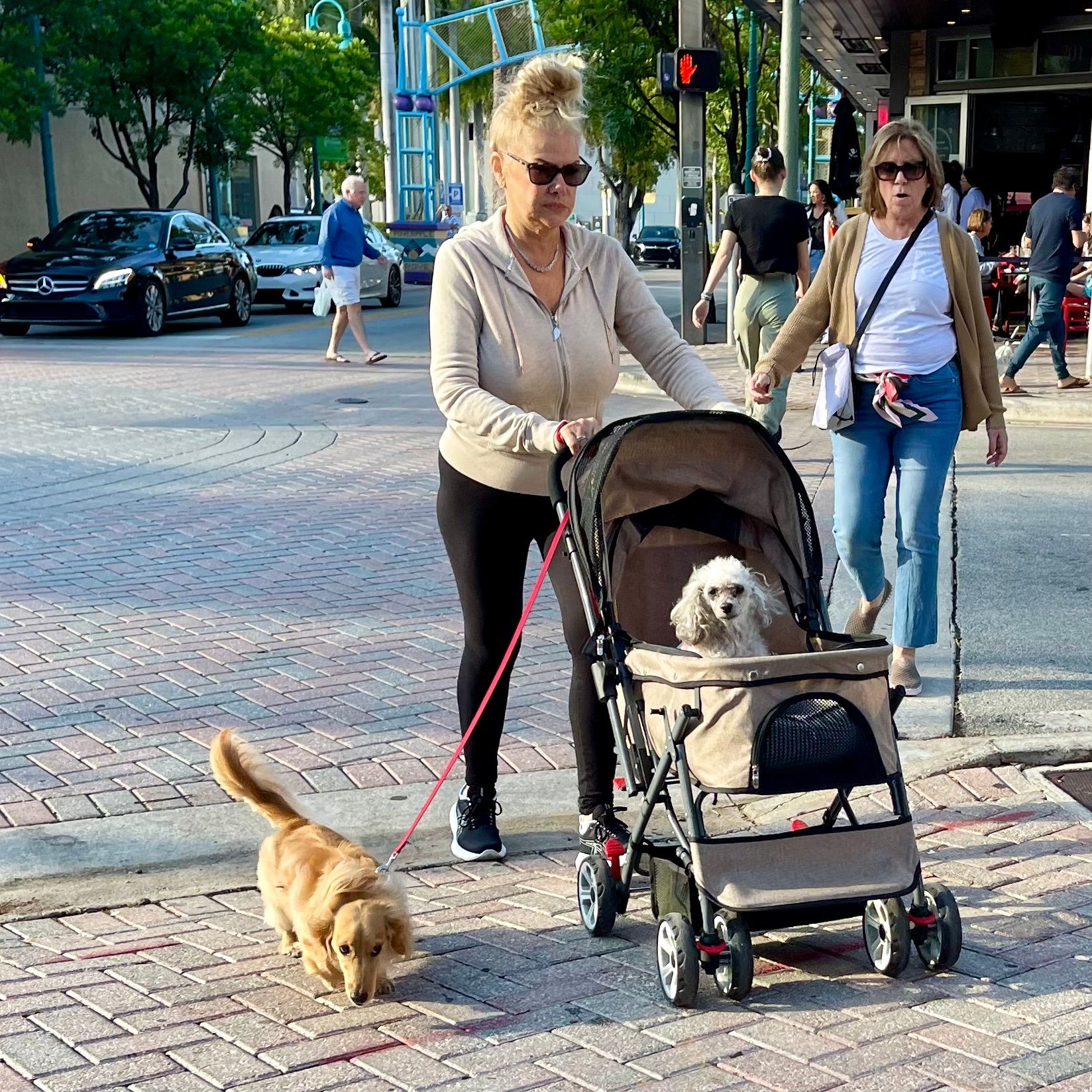
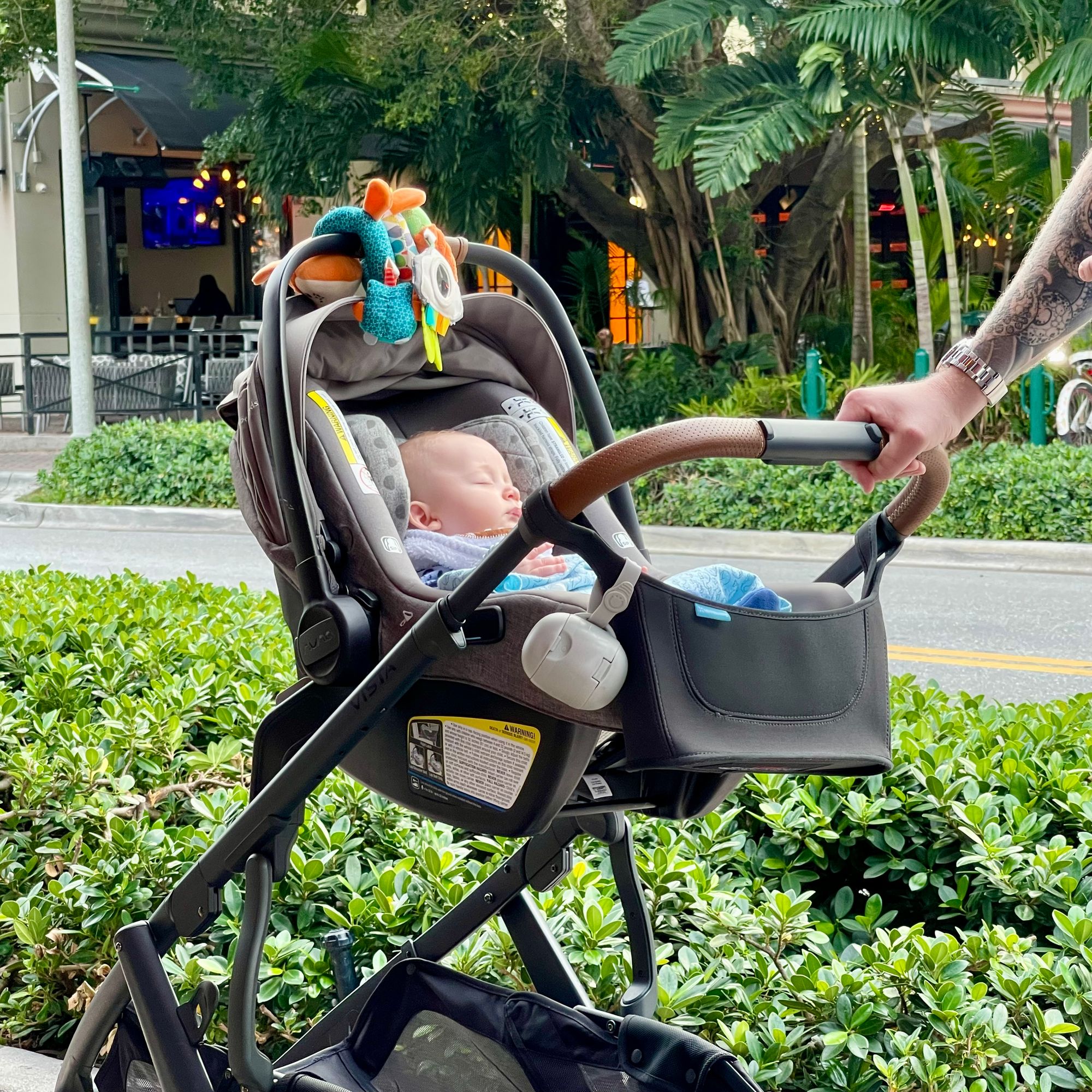
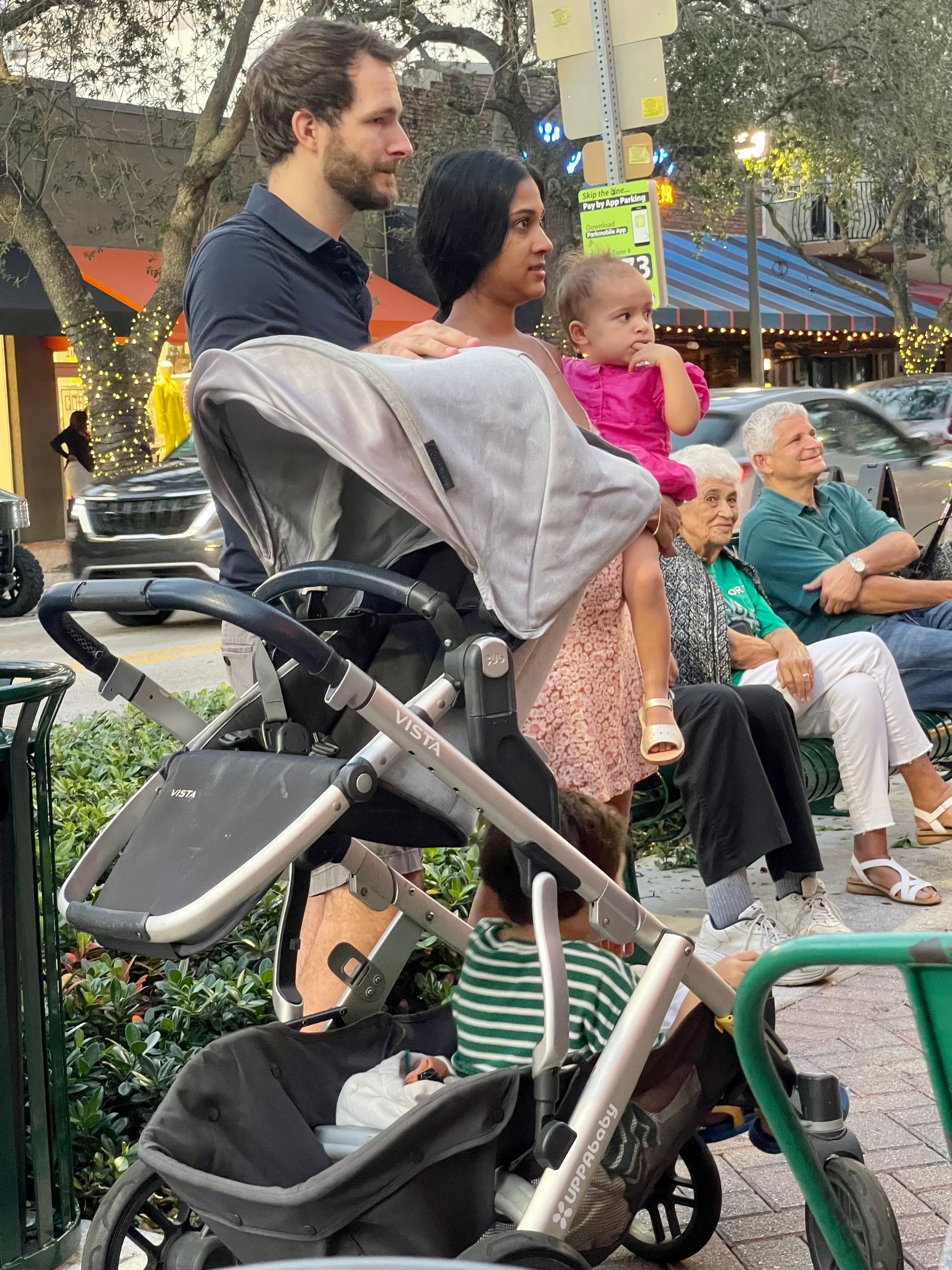
"Local characters" choose the busiest intersection in a city to share their message and their personality, creating interesting experiences for all.
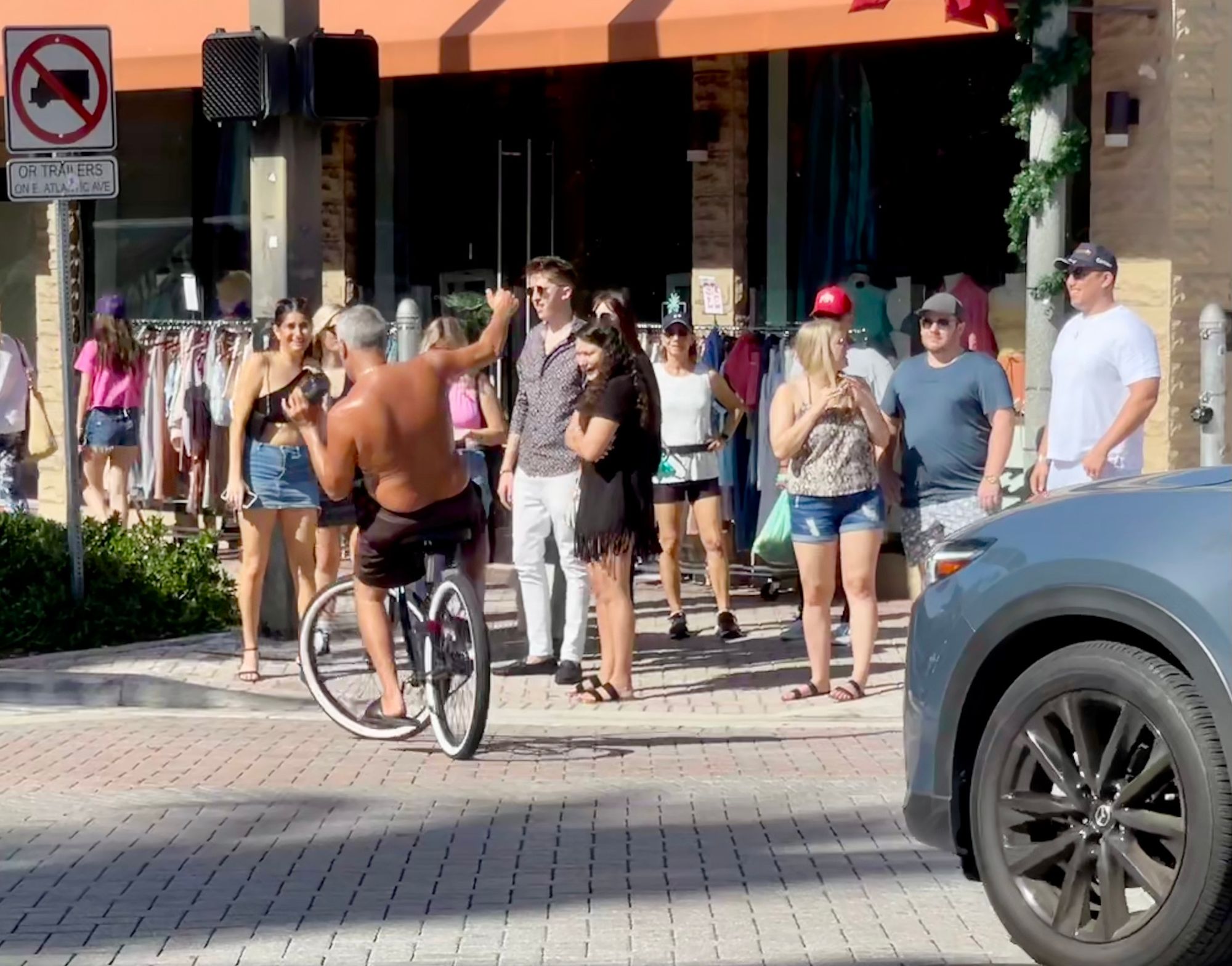
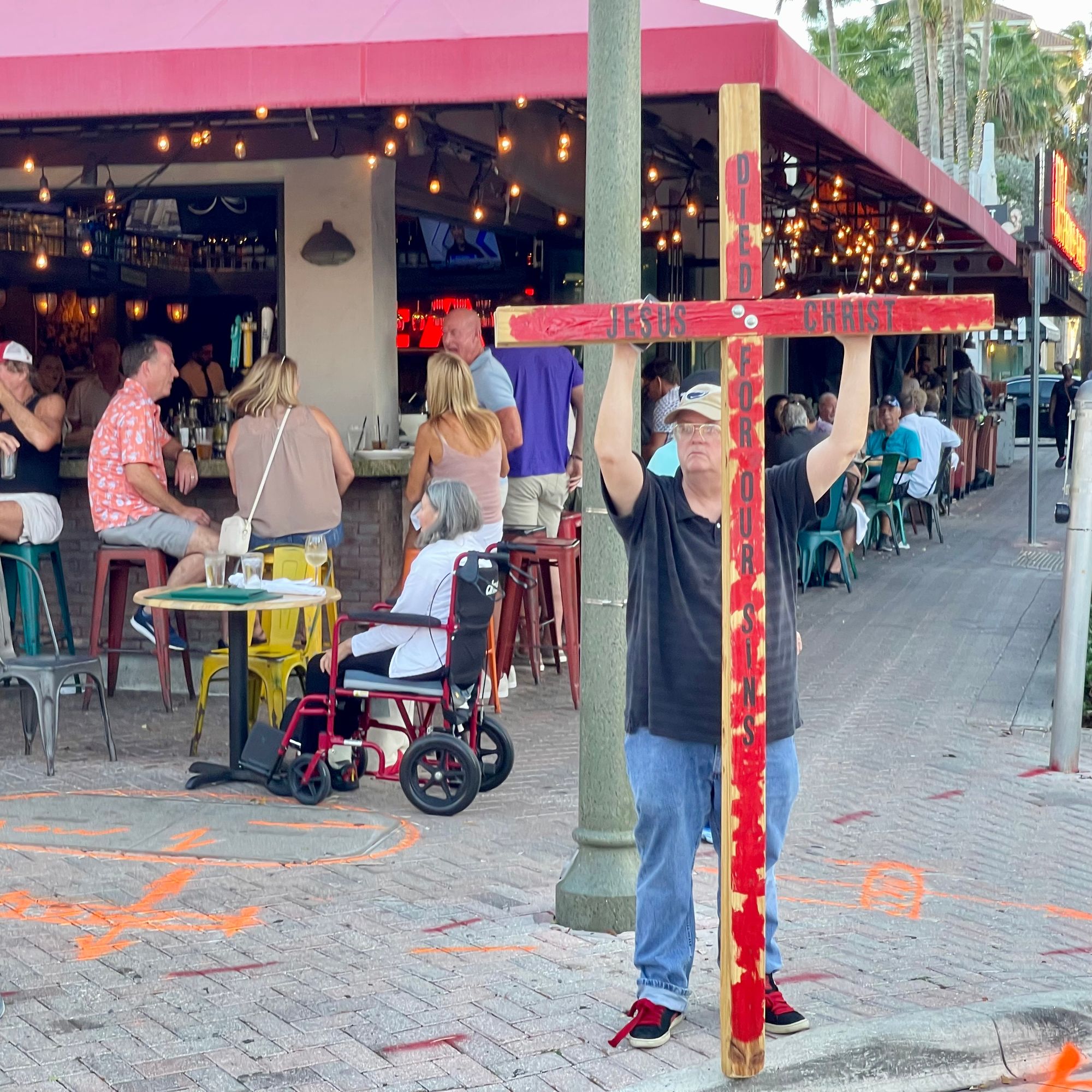
Families linger and bond, without concern.
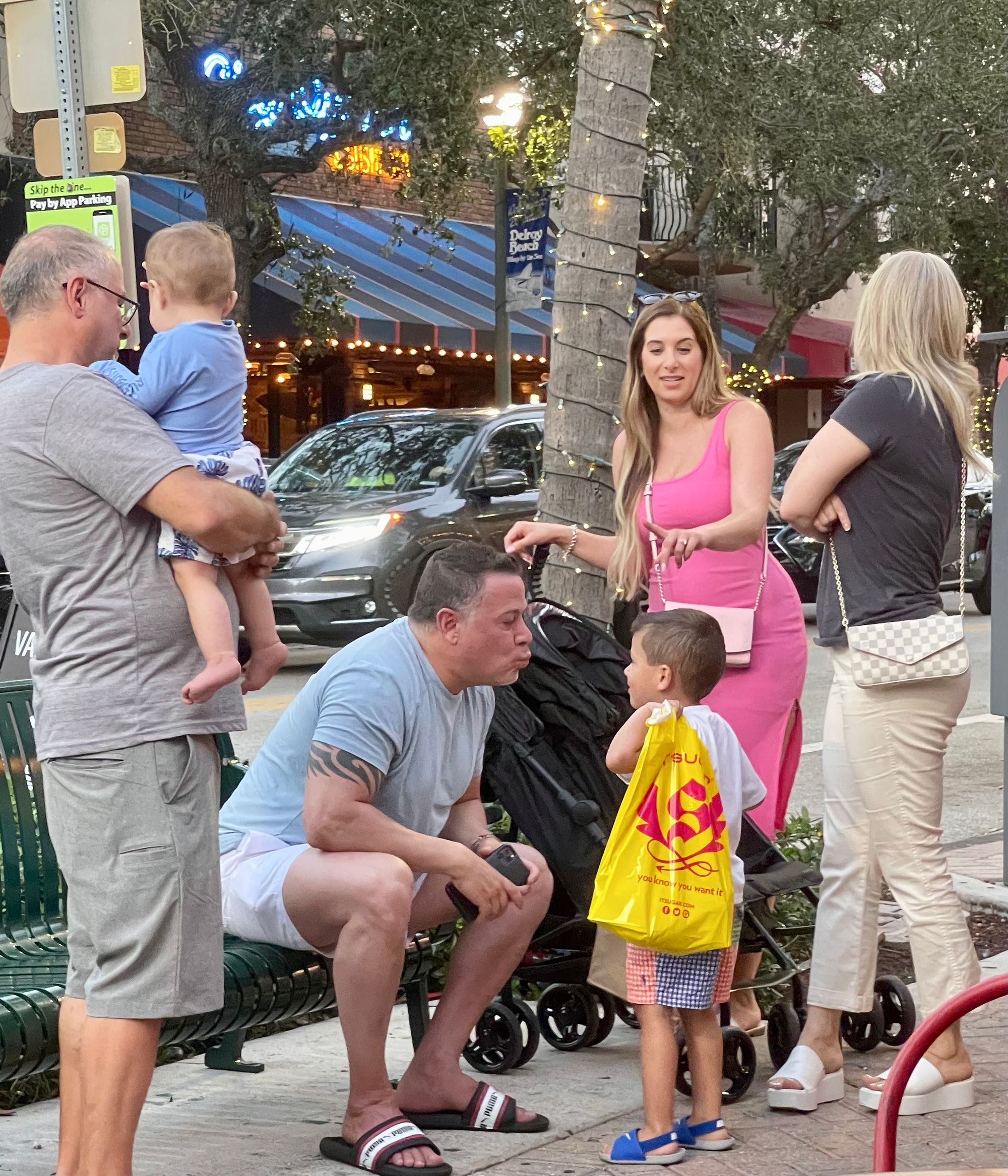
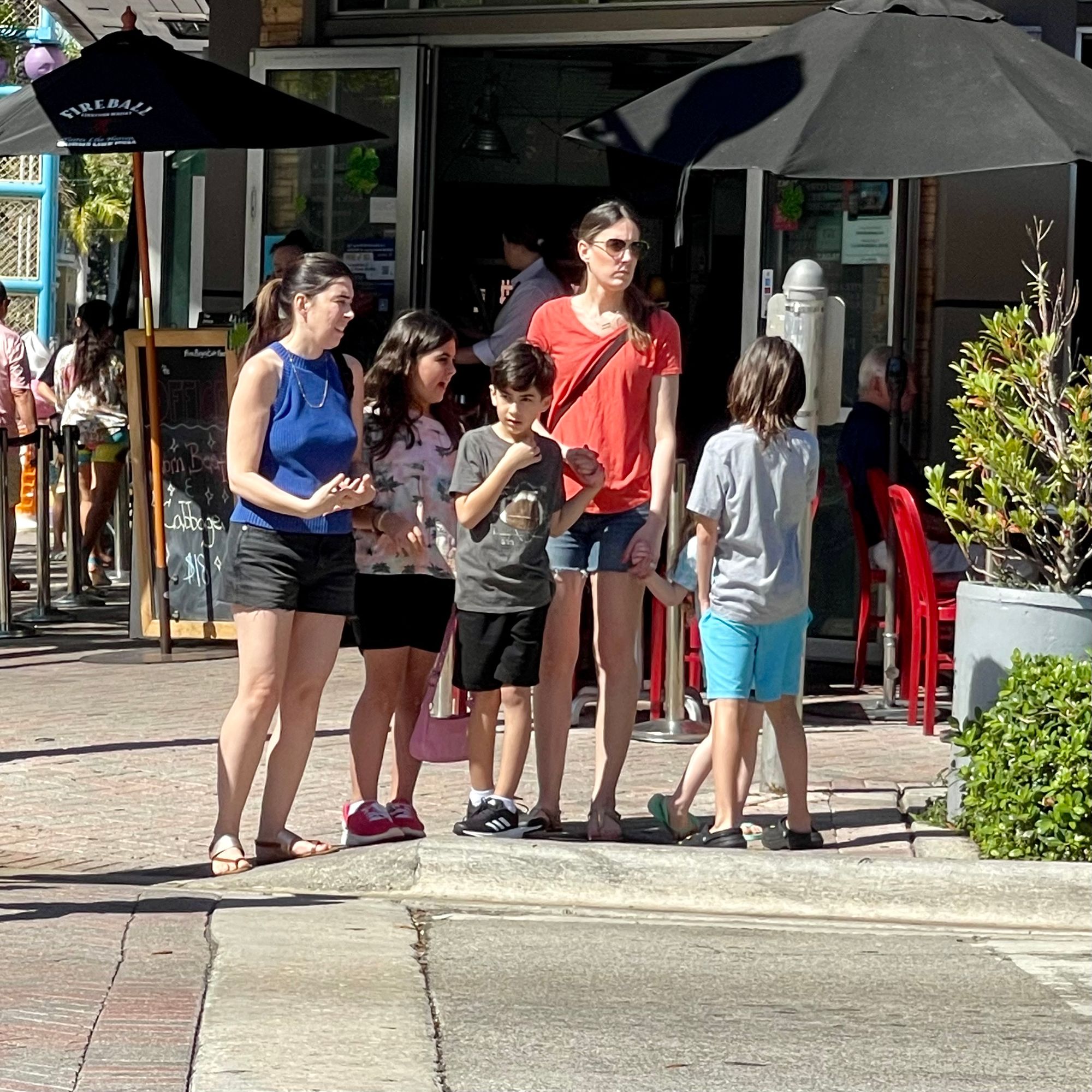
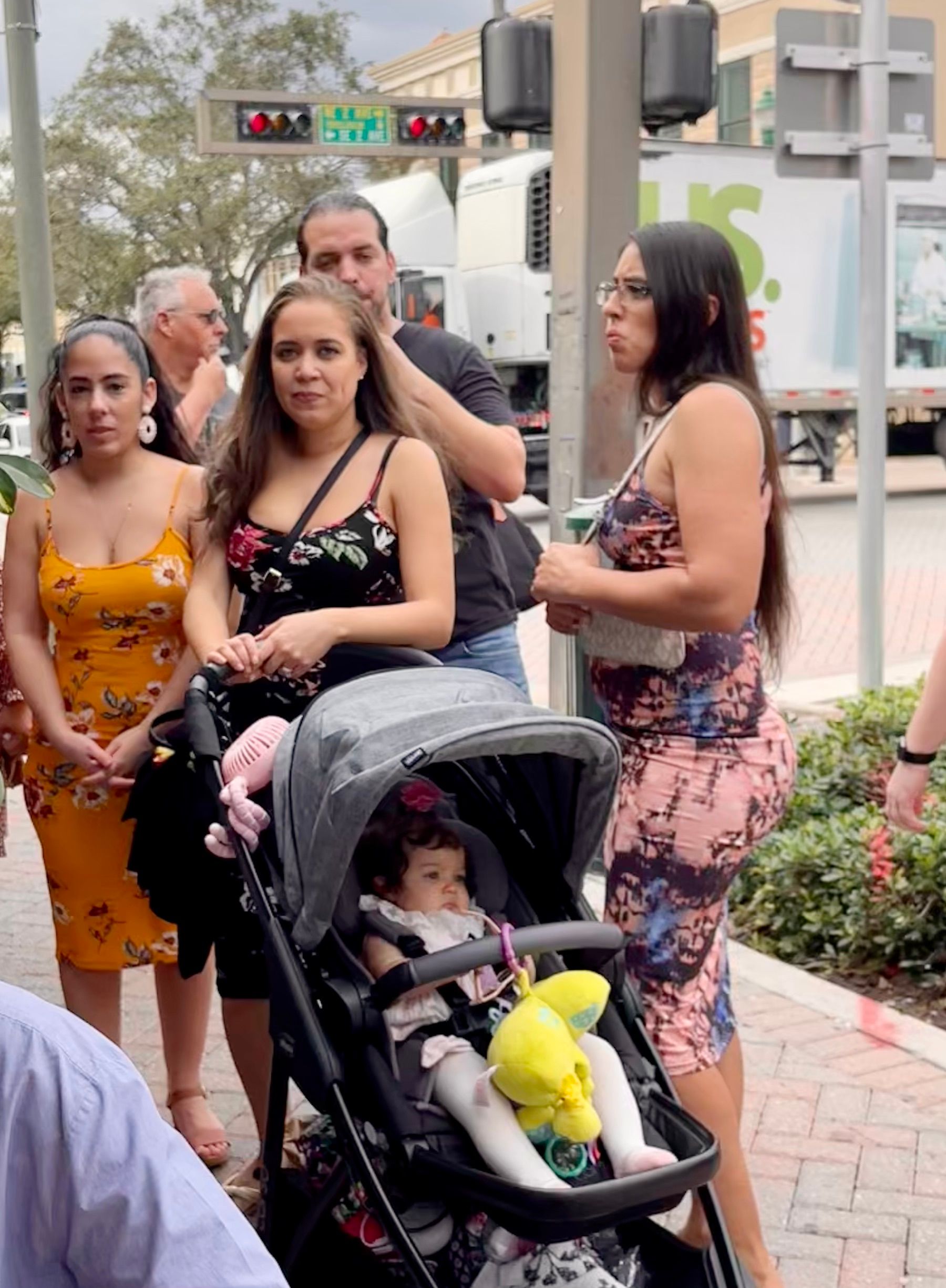
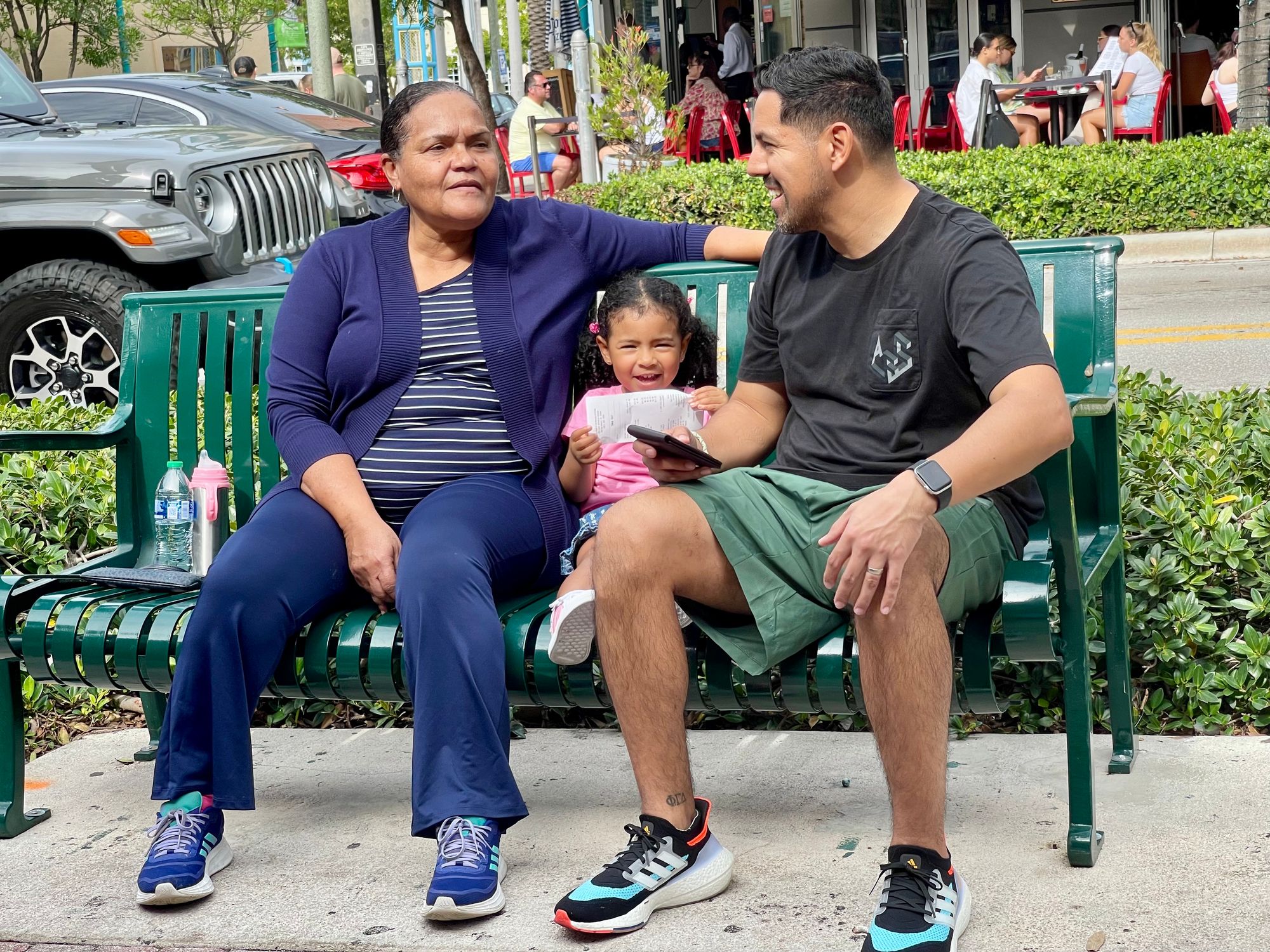
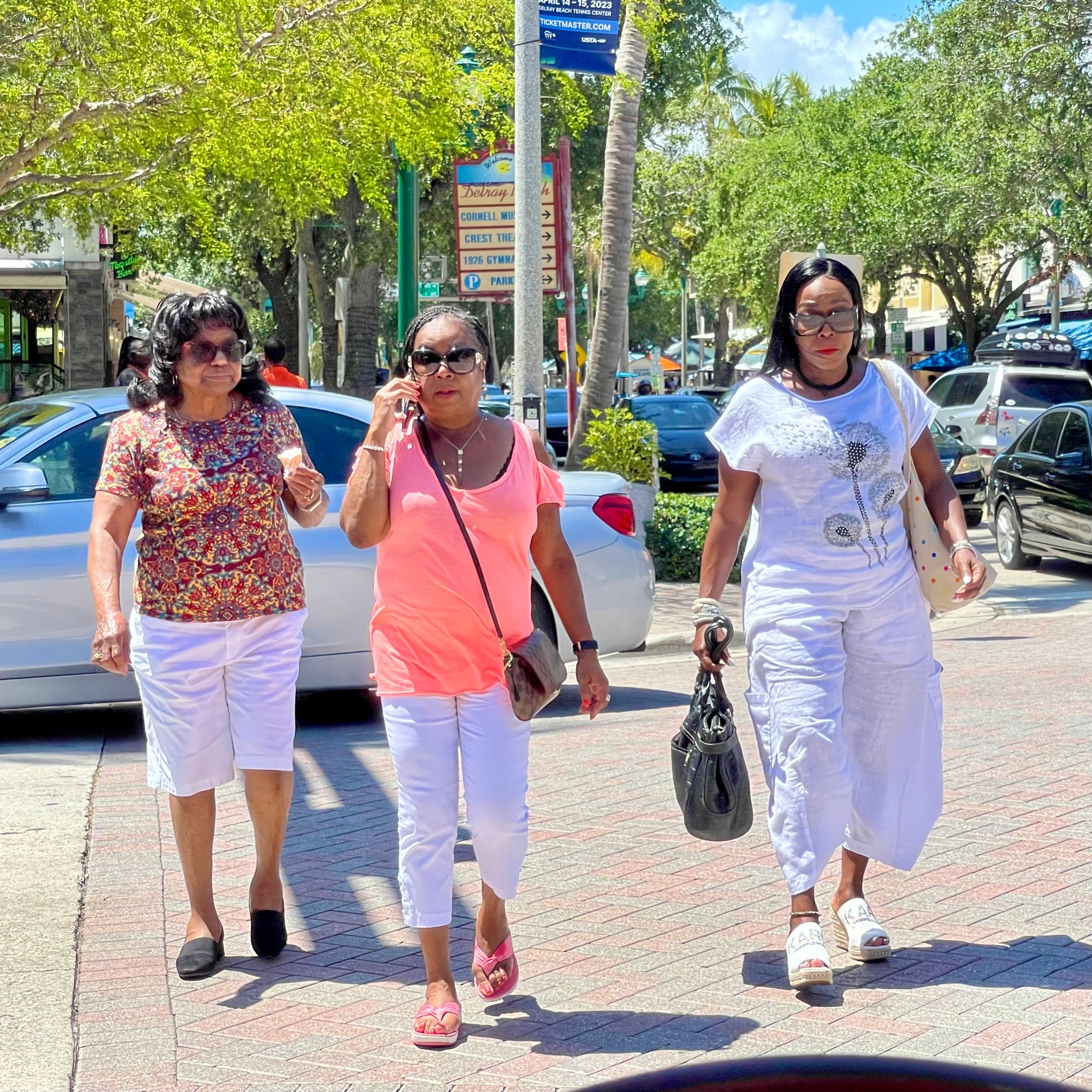
Affection is natural and easy. People are relaxed to the point where traffic seems like just a part of the experience. Having an intersection like this is something that we rarely see but that everyone greatly enjoys when it exists.
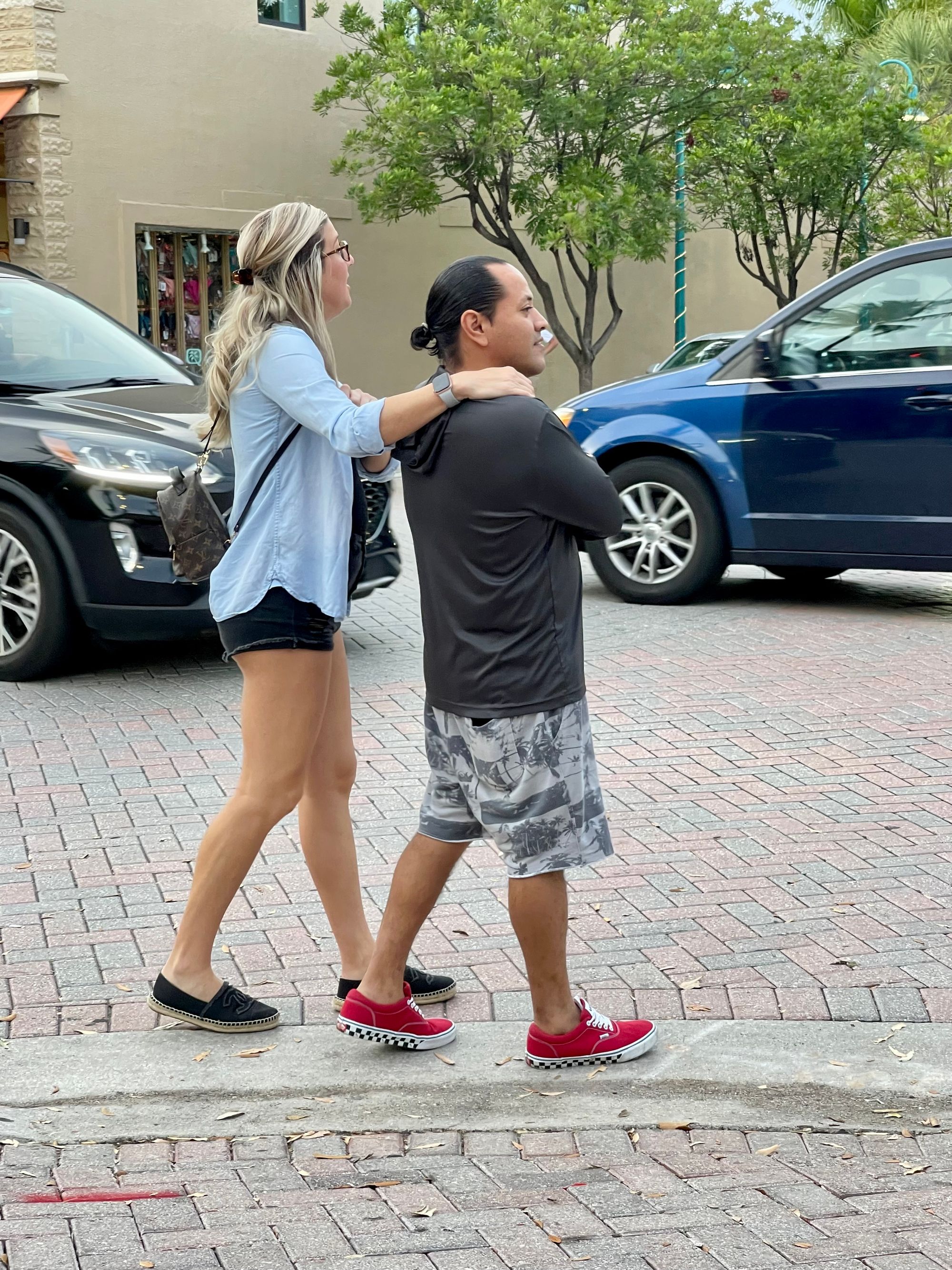
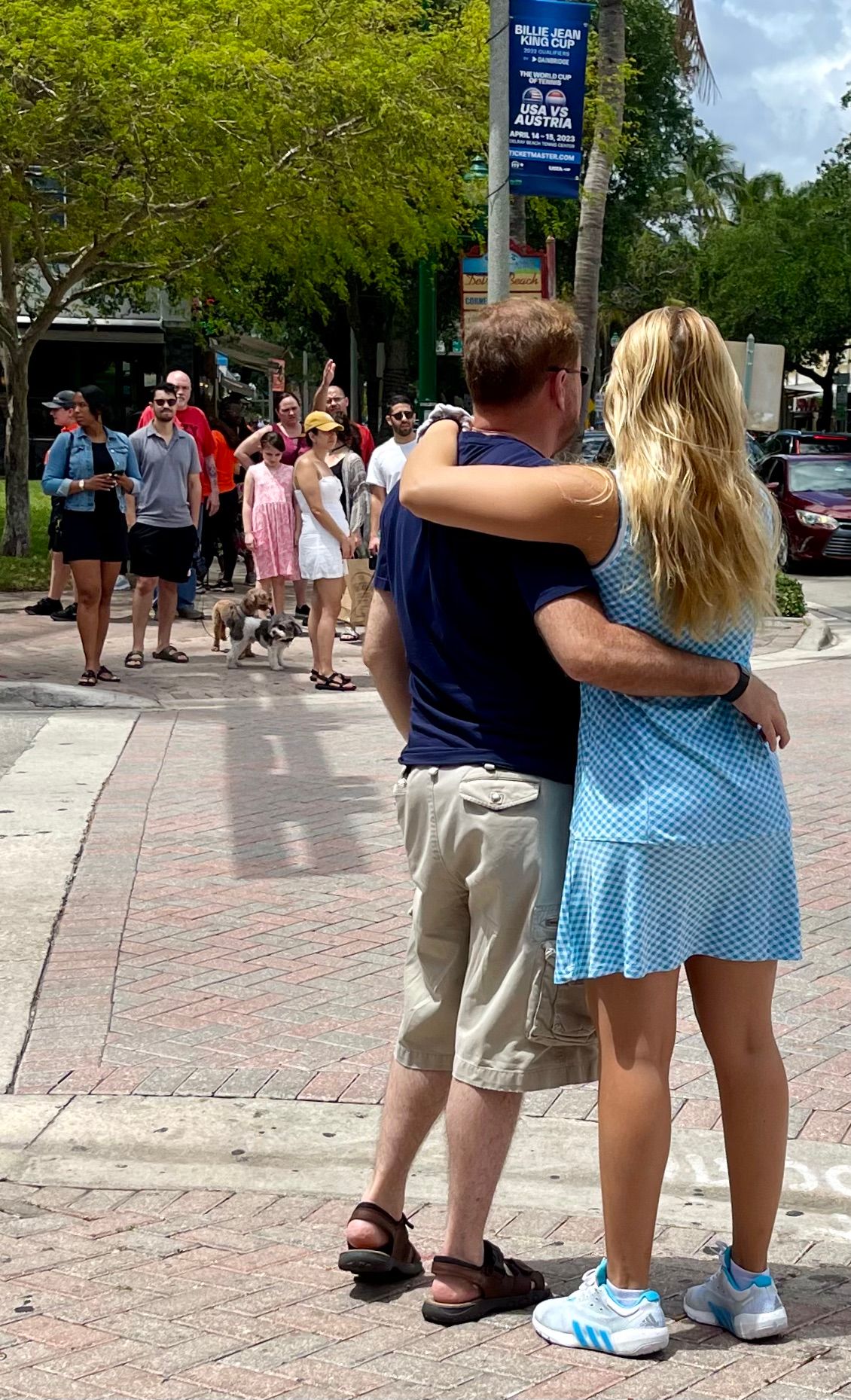
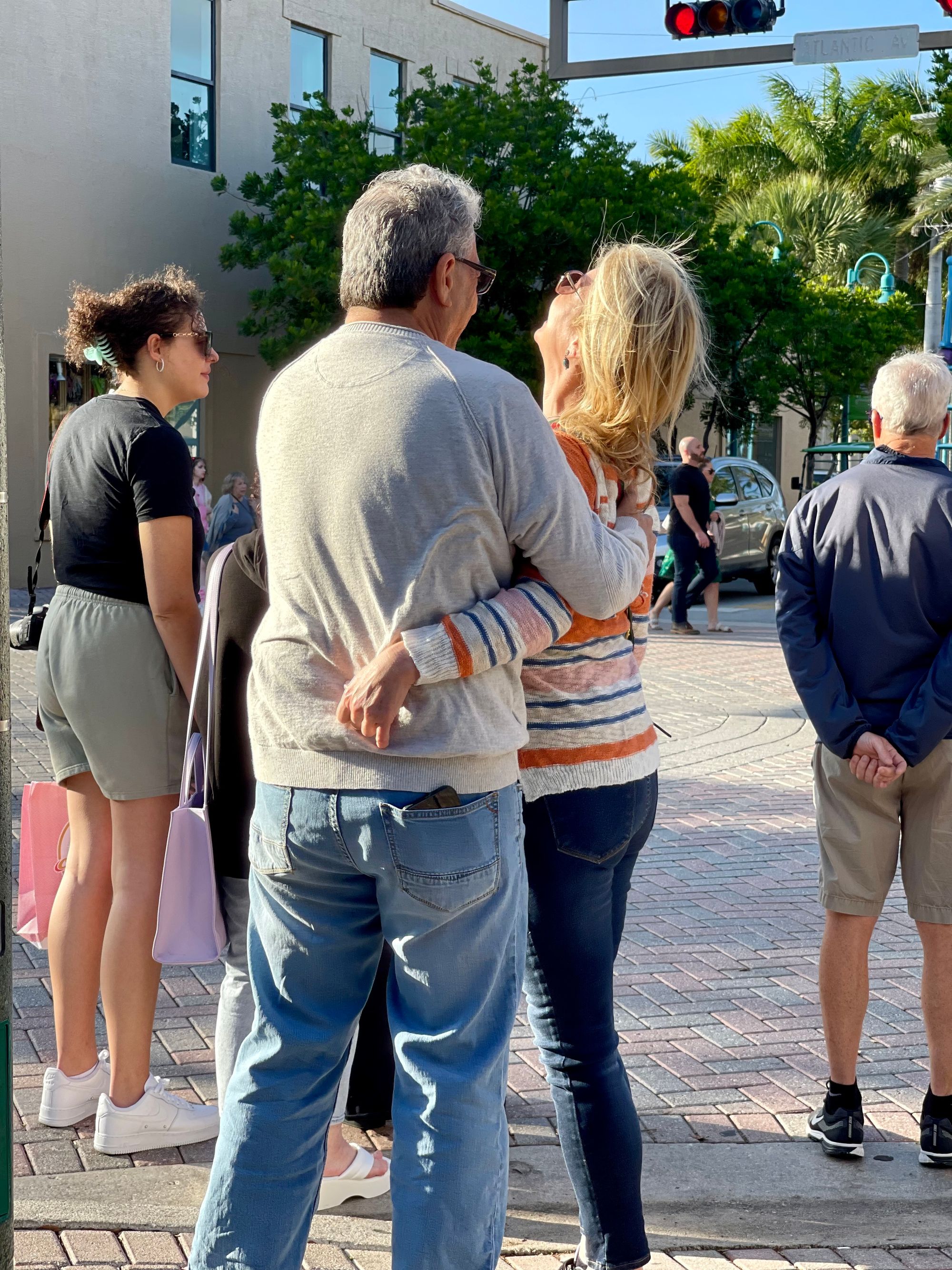
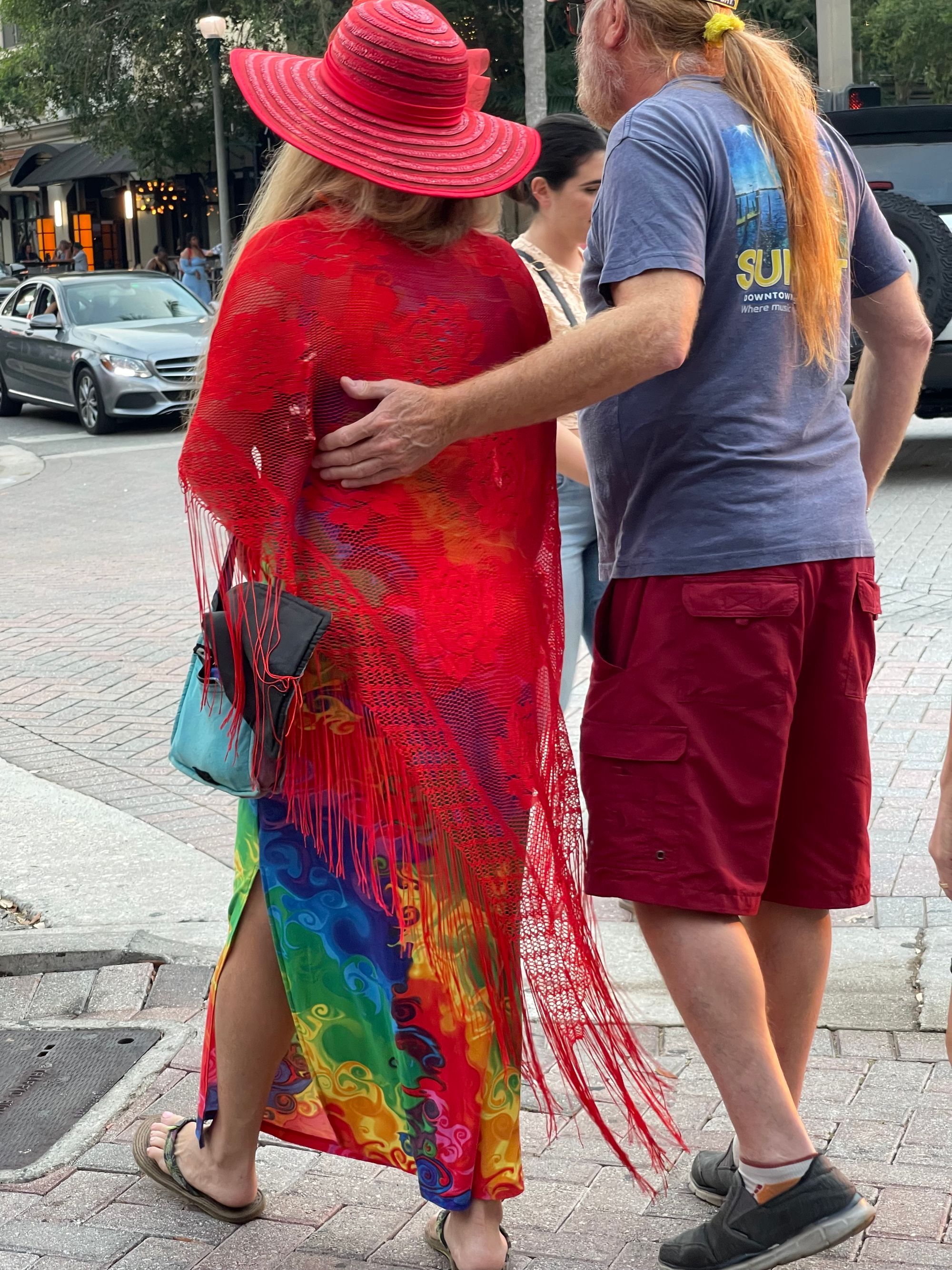
This lively intersection also has the best corner in town, where one of the top restaurants has tables set out for people watching. We frequently sit here to observe the bustle of interesting activity because there is so much going on at all times.

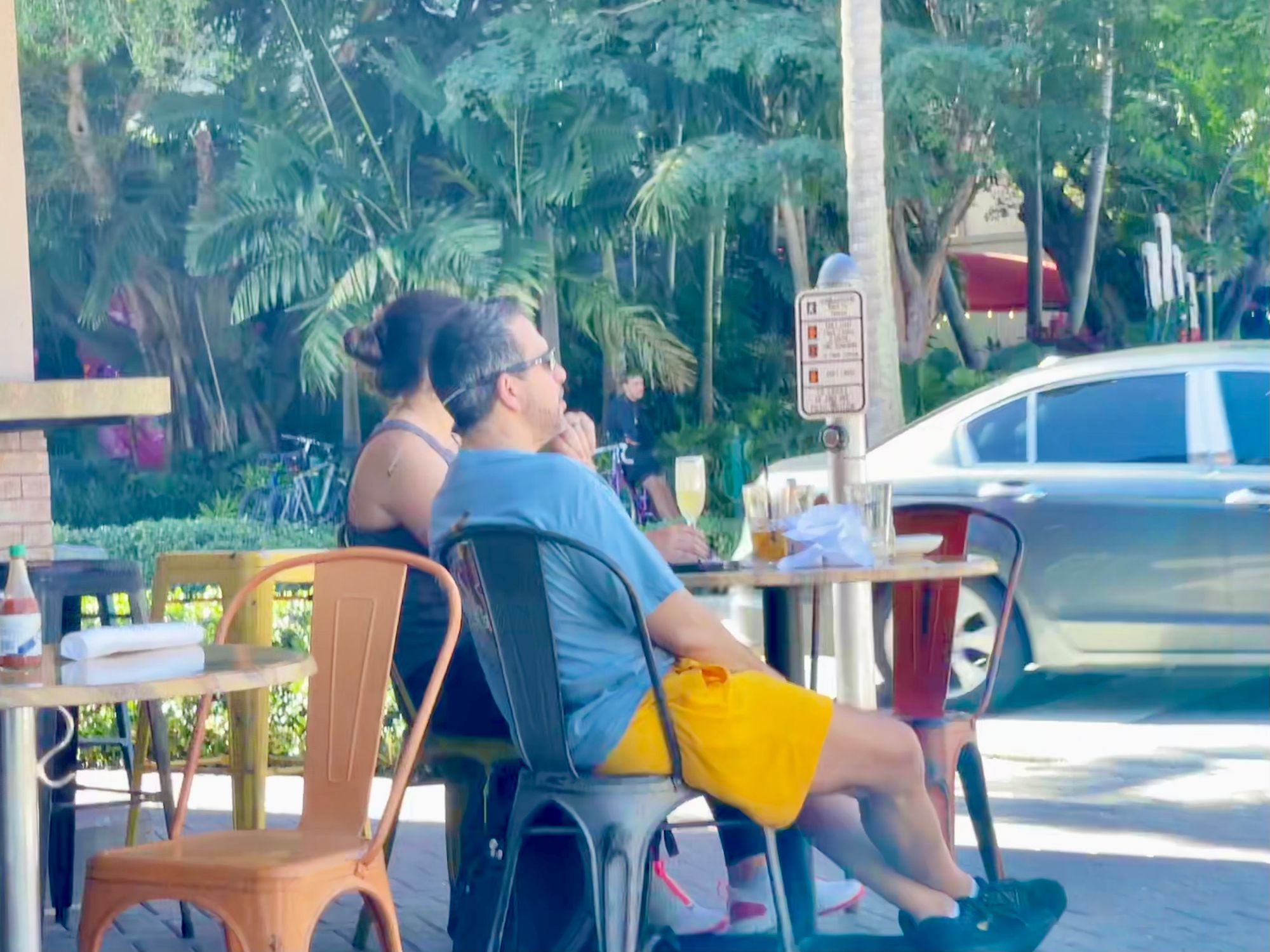
With speeds so low, even people (and pups) in vehicles can interact with street life at this key intersection. Everyone is connected.
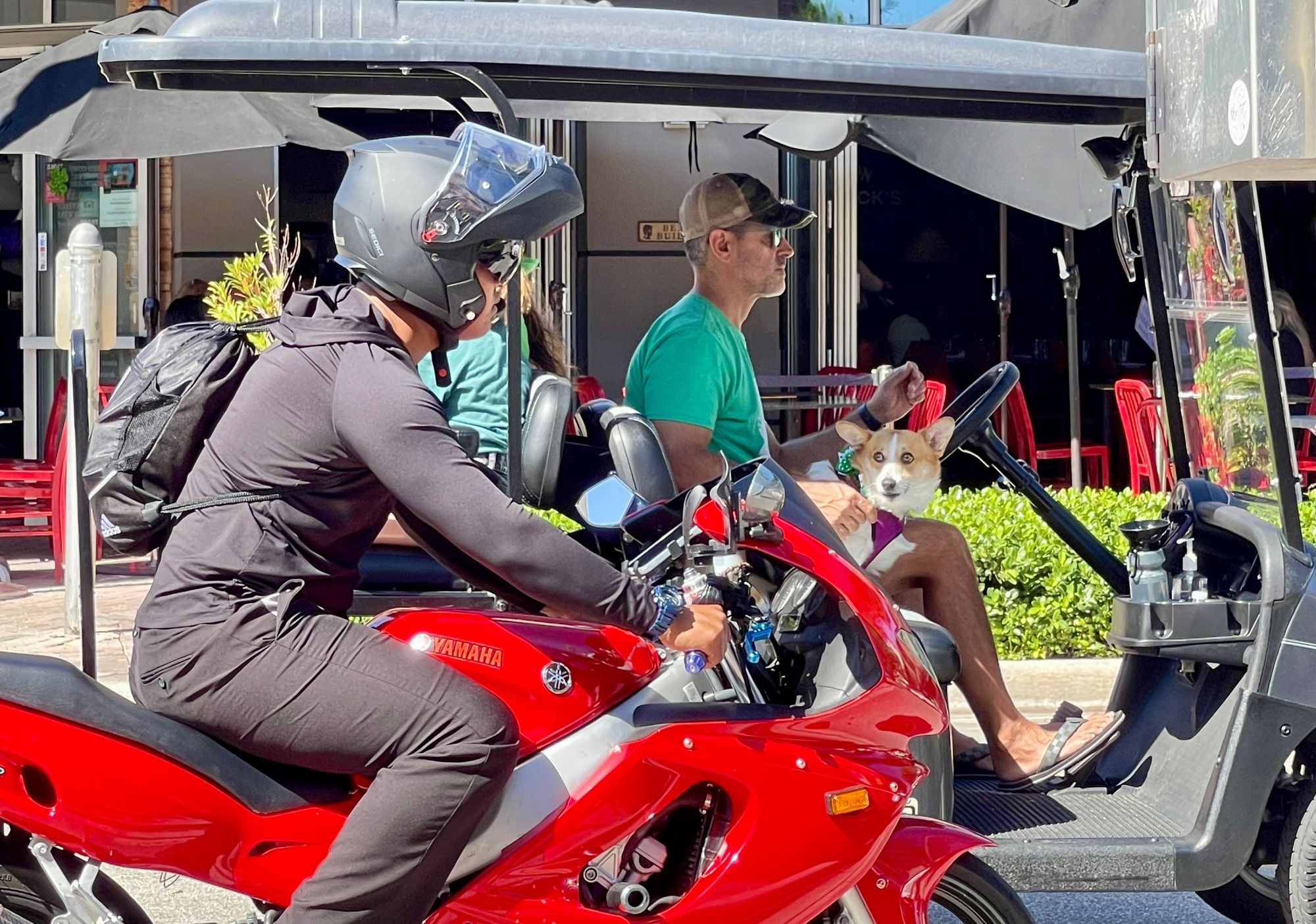
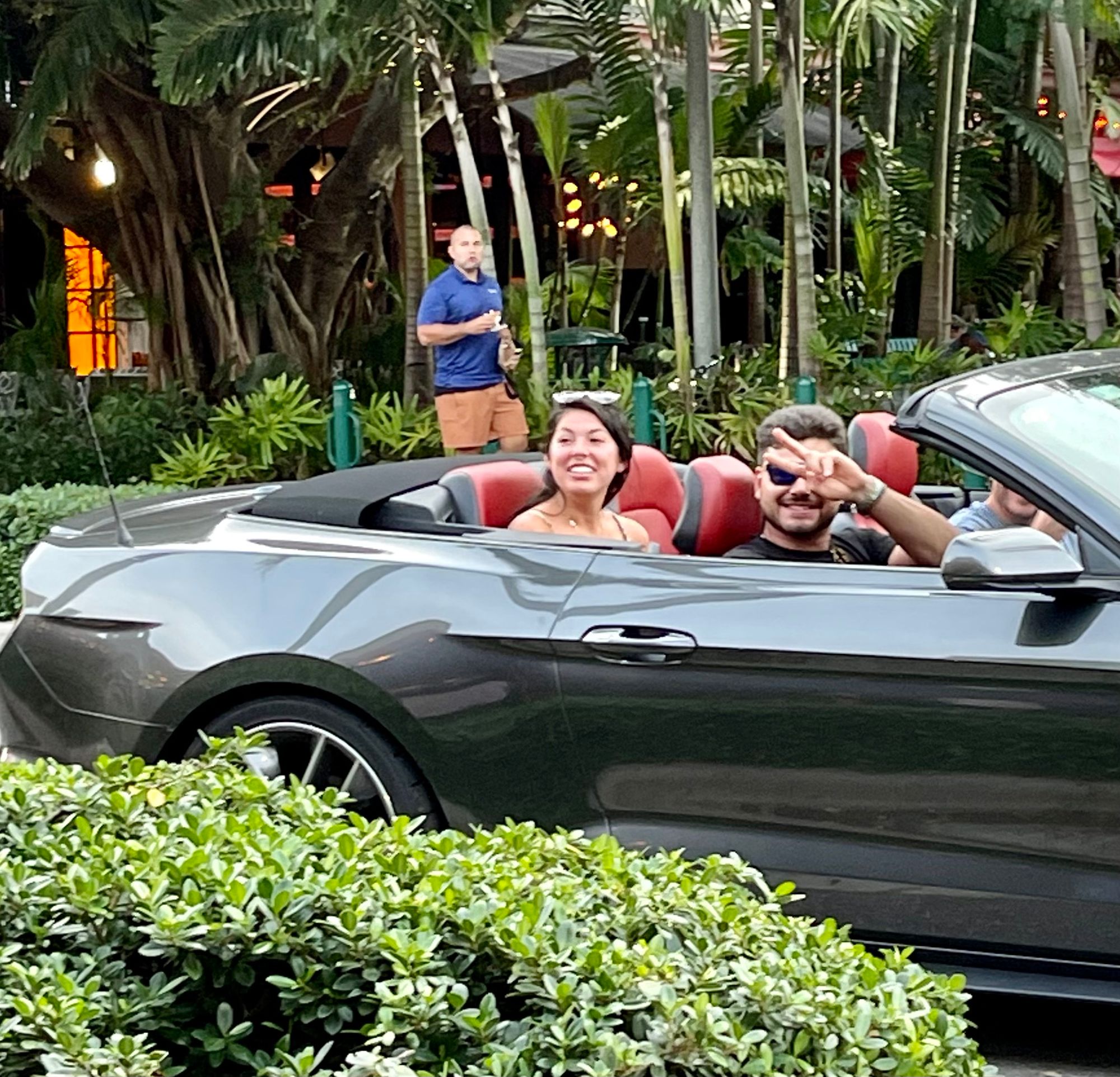

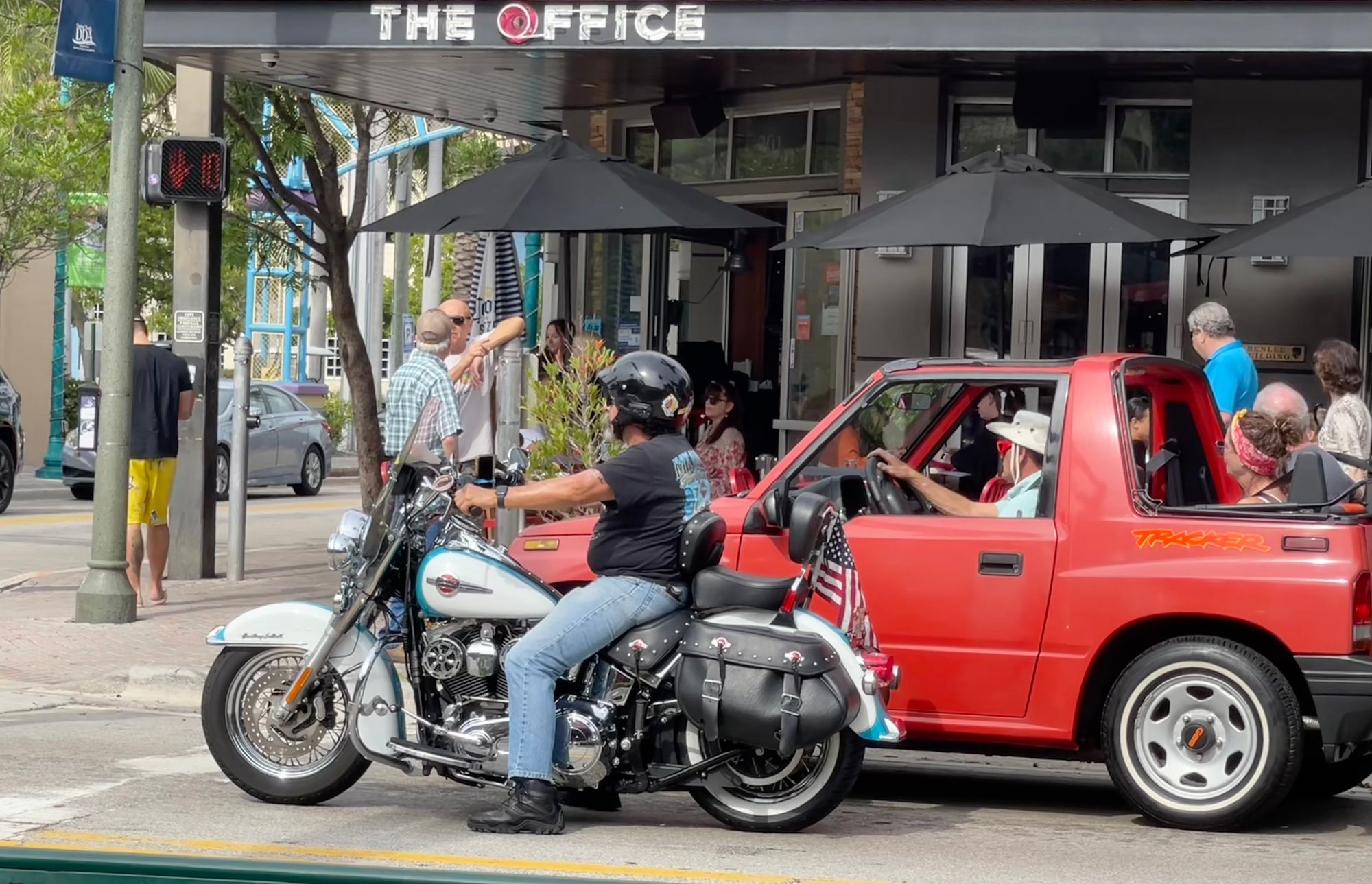
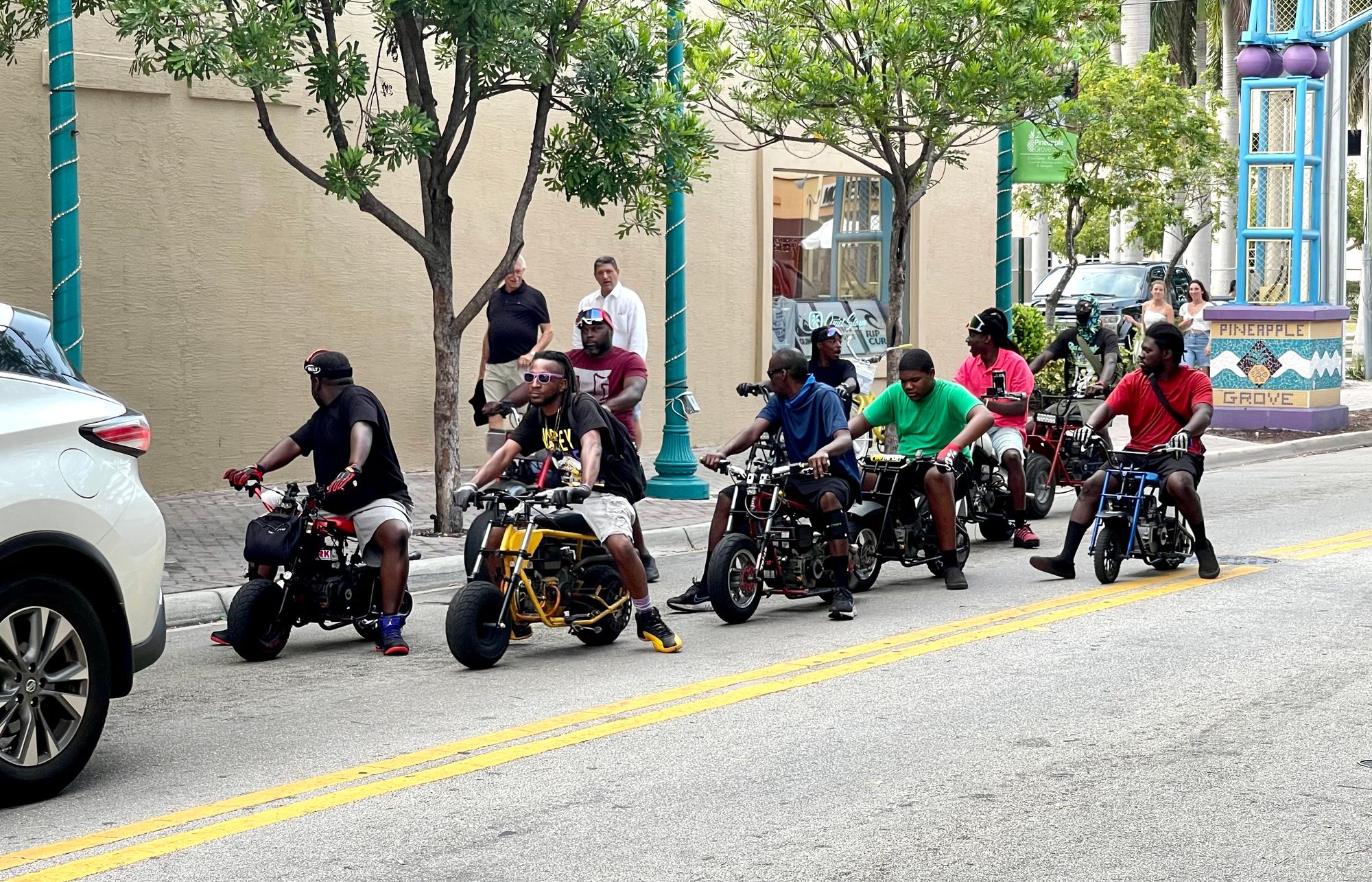
People come in various types of vehicles to show off
A Very Special Moment
It was such a wonderful surprise watching this young woman dancing and singing to her "music box" at our favorite corner. With complete lack of inhibition and total joy she would dance on the sidewalk. People responded happily, in some cases with reciprocal gestures by dancing along with her or giving her a high five. She made everyone around her joyful as she reached out to all the people going by. A great corner like this one invites such happy and relaxed encounters and strengthens community ties.
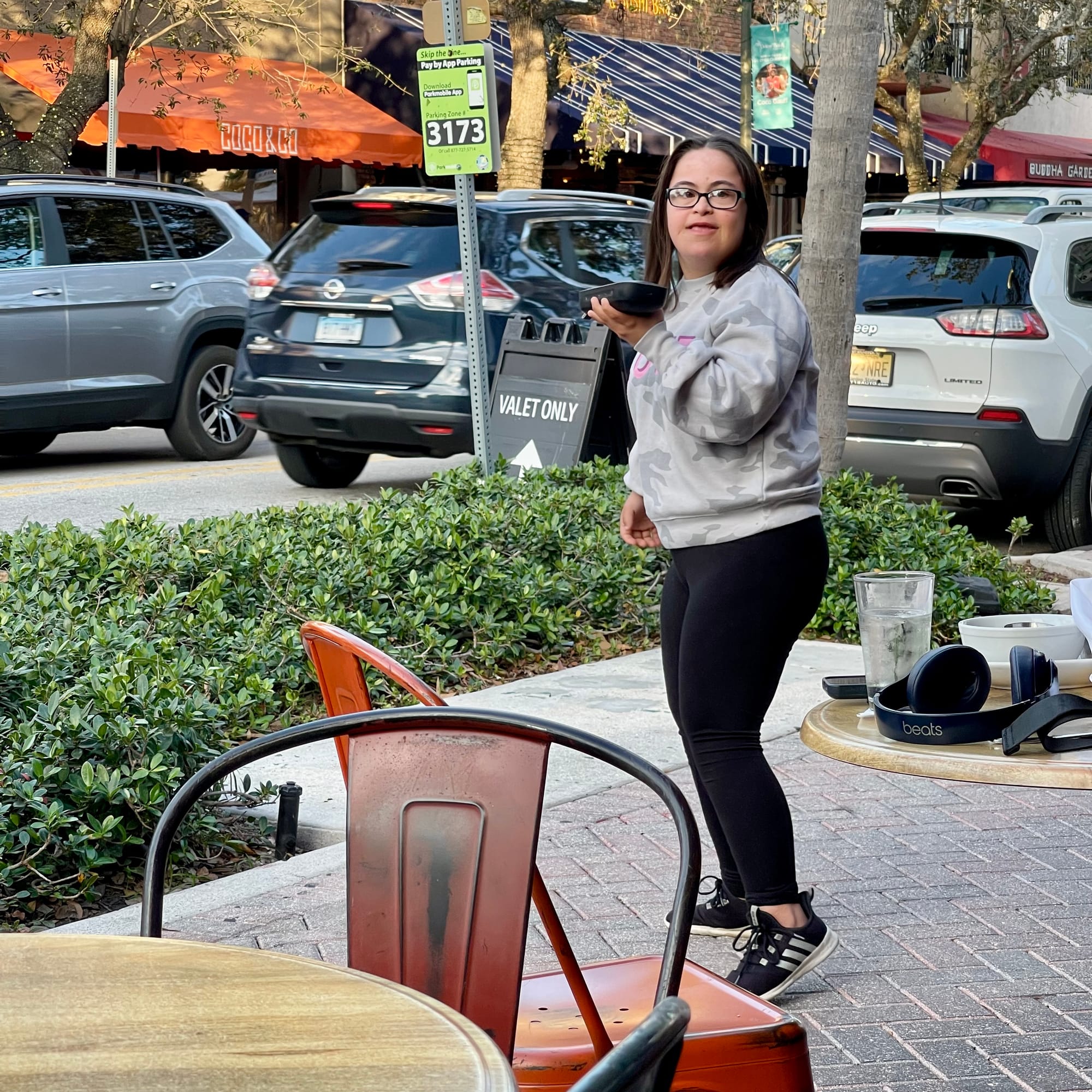
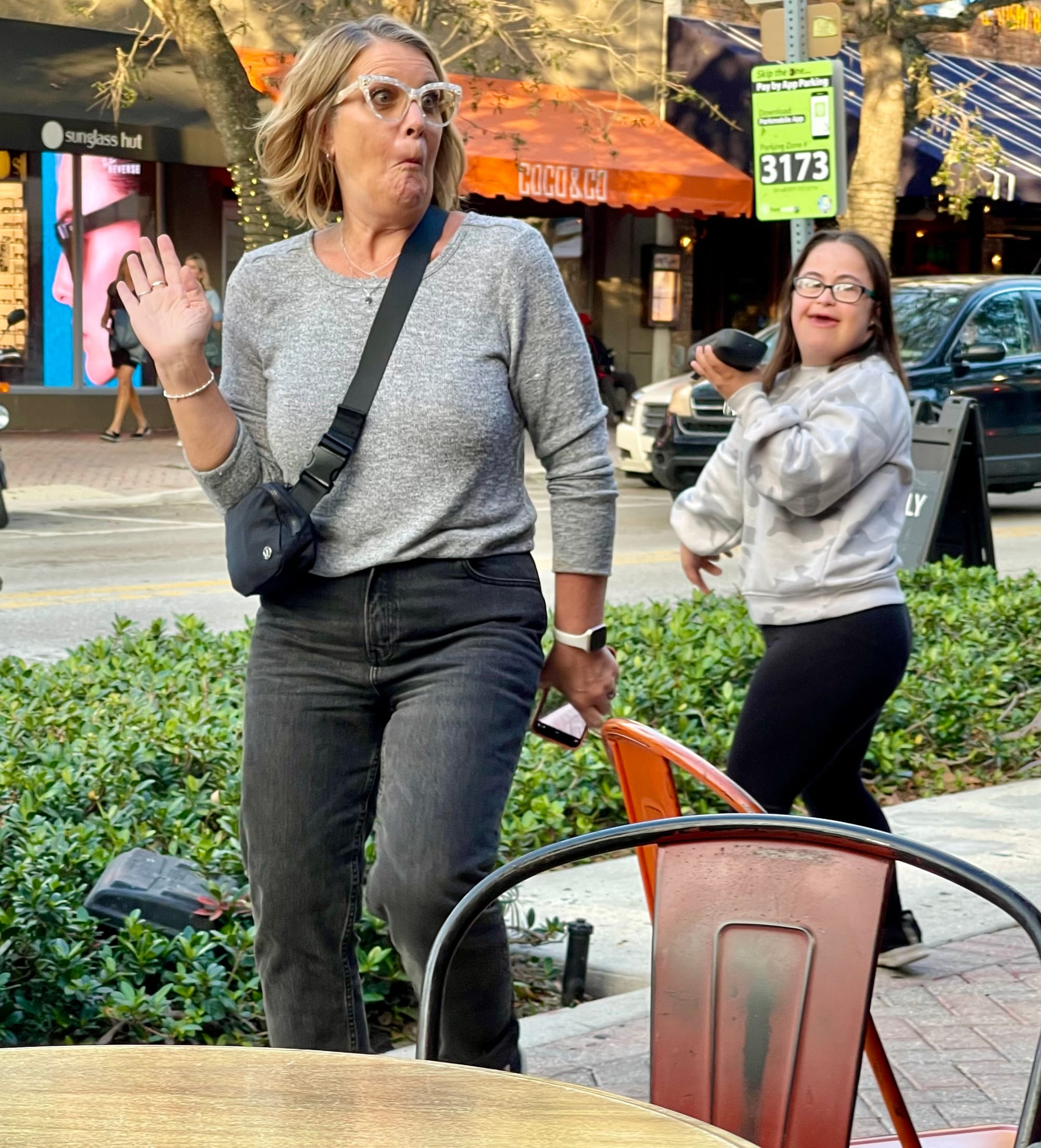
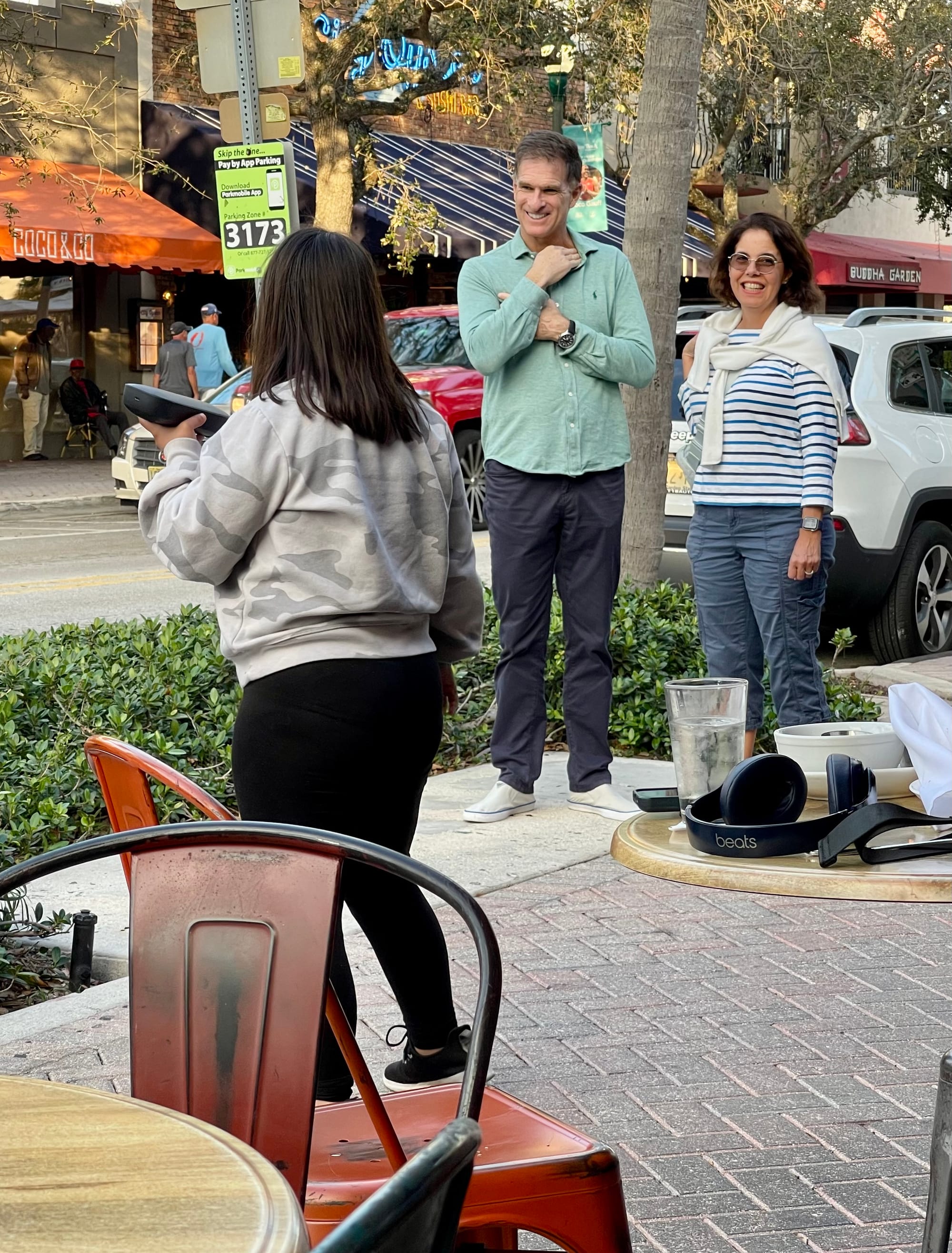
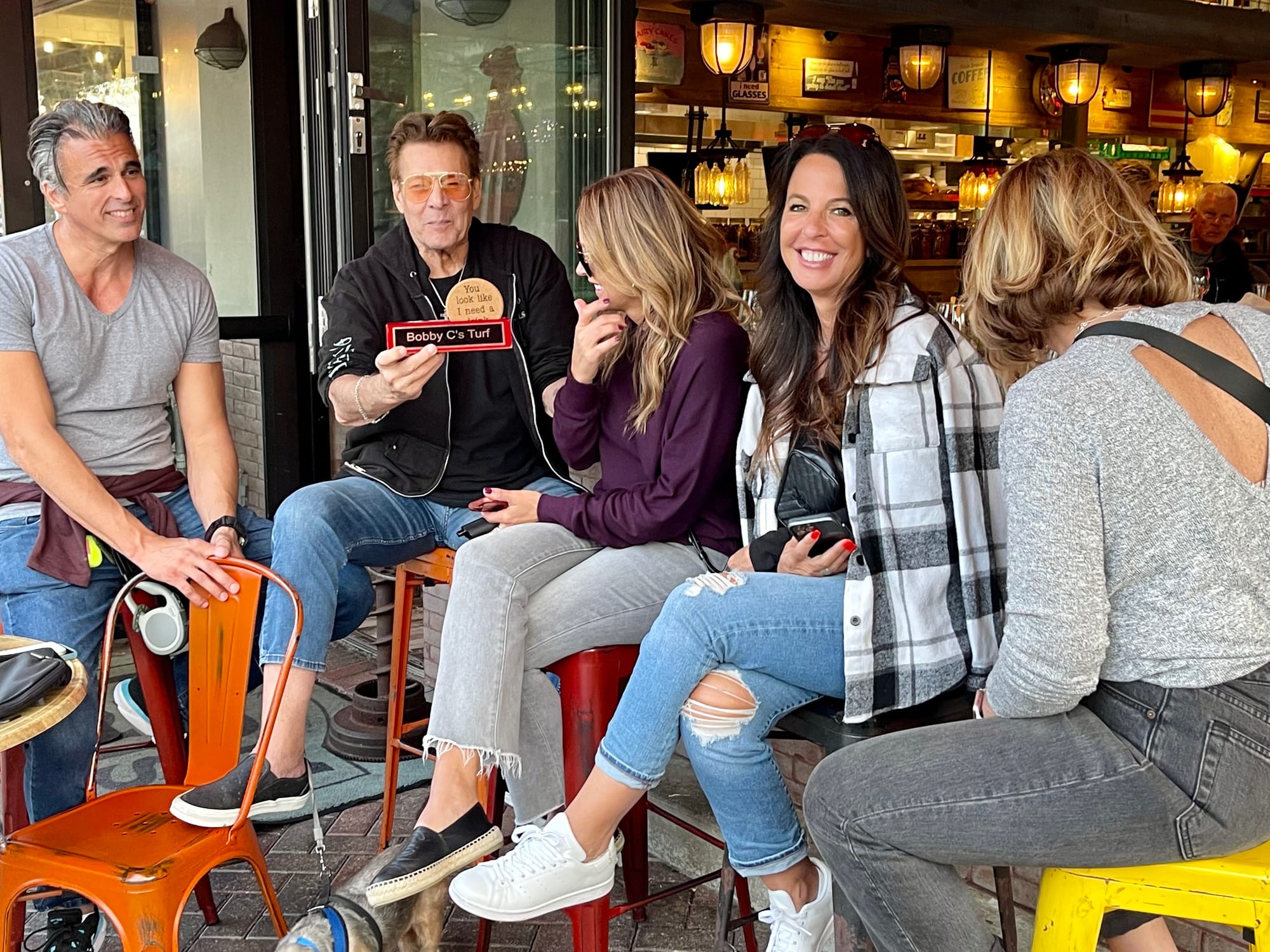
Dancing and connecting with everyone while her family looked on.
Key Benefits
This is the only major intersection in Delray that delivers an atmosphere of vibrancy and excitement, comfort and safety, where both vehicles and pedestrians enjoy the space and share it harmoniously. Other intersections of this type along Atlantic, and on North and South streets, can be easily created. And they should be, because the kind of dynamic activity seen here is essential for community development, local pride, and business success.
For more on this key intersection:
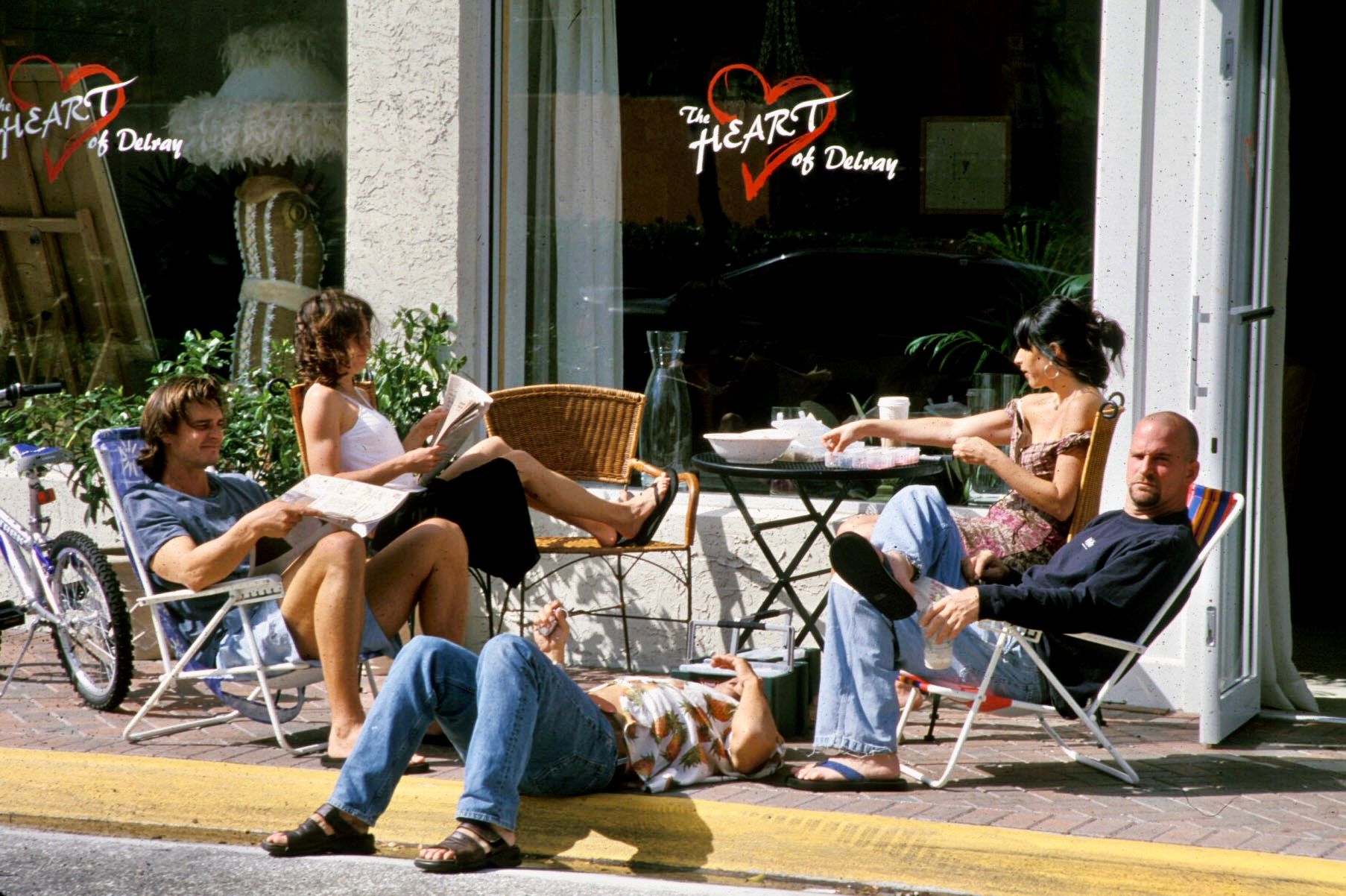
Improvement Opportunities - LQC (lighter, quicker, cheaper) Activations
This section is the main core of downtown, and while it is great, it can be improved in both small and large ways. Here are some interventions that could take this key intersection to an even higher level of social and commercial intensity:
- Widening the sidewalks by three feet on the east side of the blocks of NE and SE 2nd would have a big impact. At the corner going north, the long narrow sidewalk is the place to hang out, so the space should be extended to support all the great activity happening there.
- Removing plantings on NE 2nd and SE 2nd would create larger gathering places on each corner, stretching outward to Pineapple Grove. Bollards should be added for security. This would reinforce the corners as hubs of social life with energy that ripples along the block and its cross streets.
- Remove some parking spaces to create zones/hubs where double loading (having amenities/assets on both sides of the pedestrian path) at intersections and streets would add significantly to this core area.
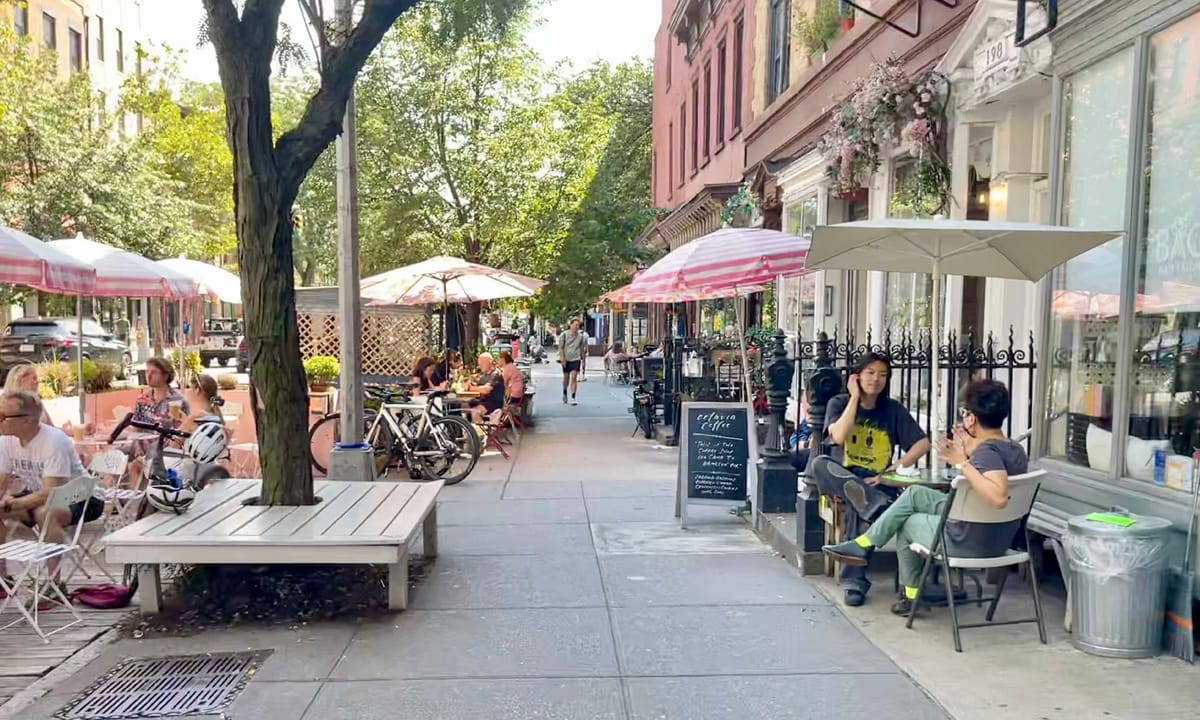
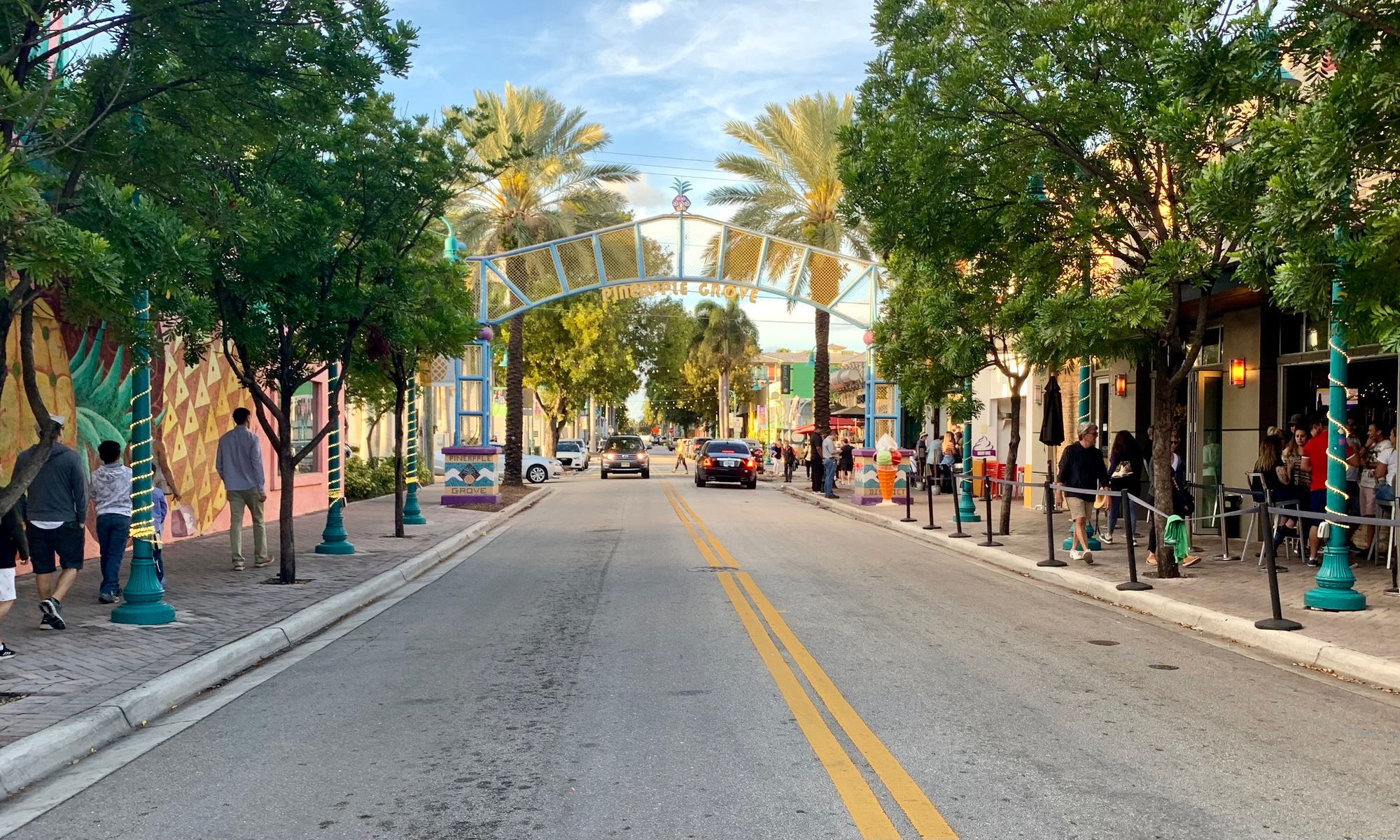
This gateway to Pineapple Grove has significant gaps that need to be filled to bring it into the downtown core
Worthing Park and Old School Square
Back in 2003, Worthing Park was much more open and welcoming than it is now. Today, the park is dark, overgrown and an uneasy place to be because of hidden corners and a lack of visibility. The uses along the edges are not easily evident and there are no focal points. This space could easily transformed by adding programming of all kinds, including small market kiosks along the blank wall together with focal points.
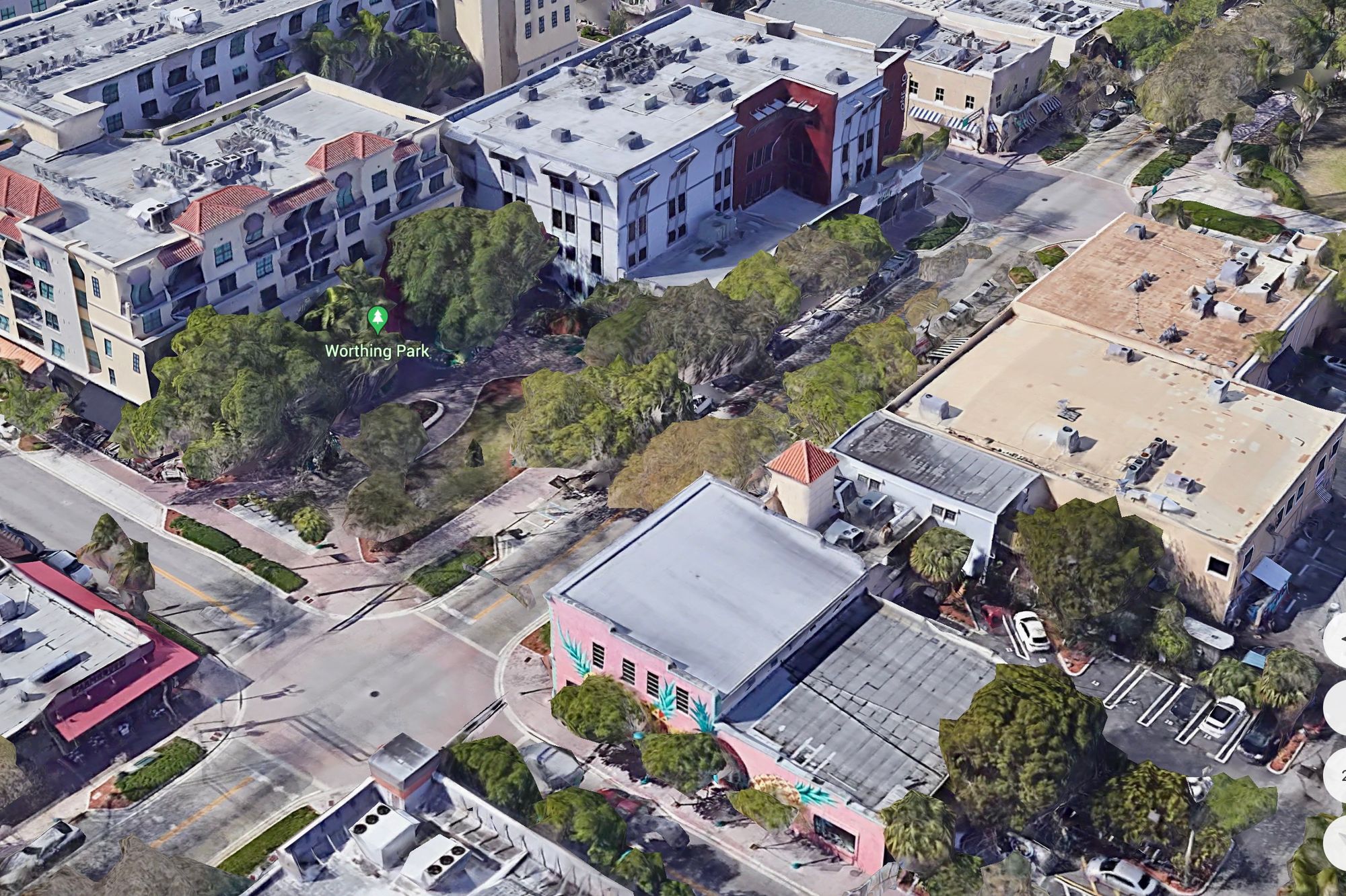
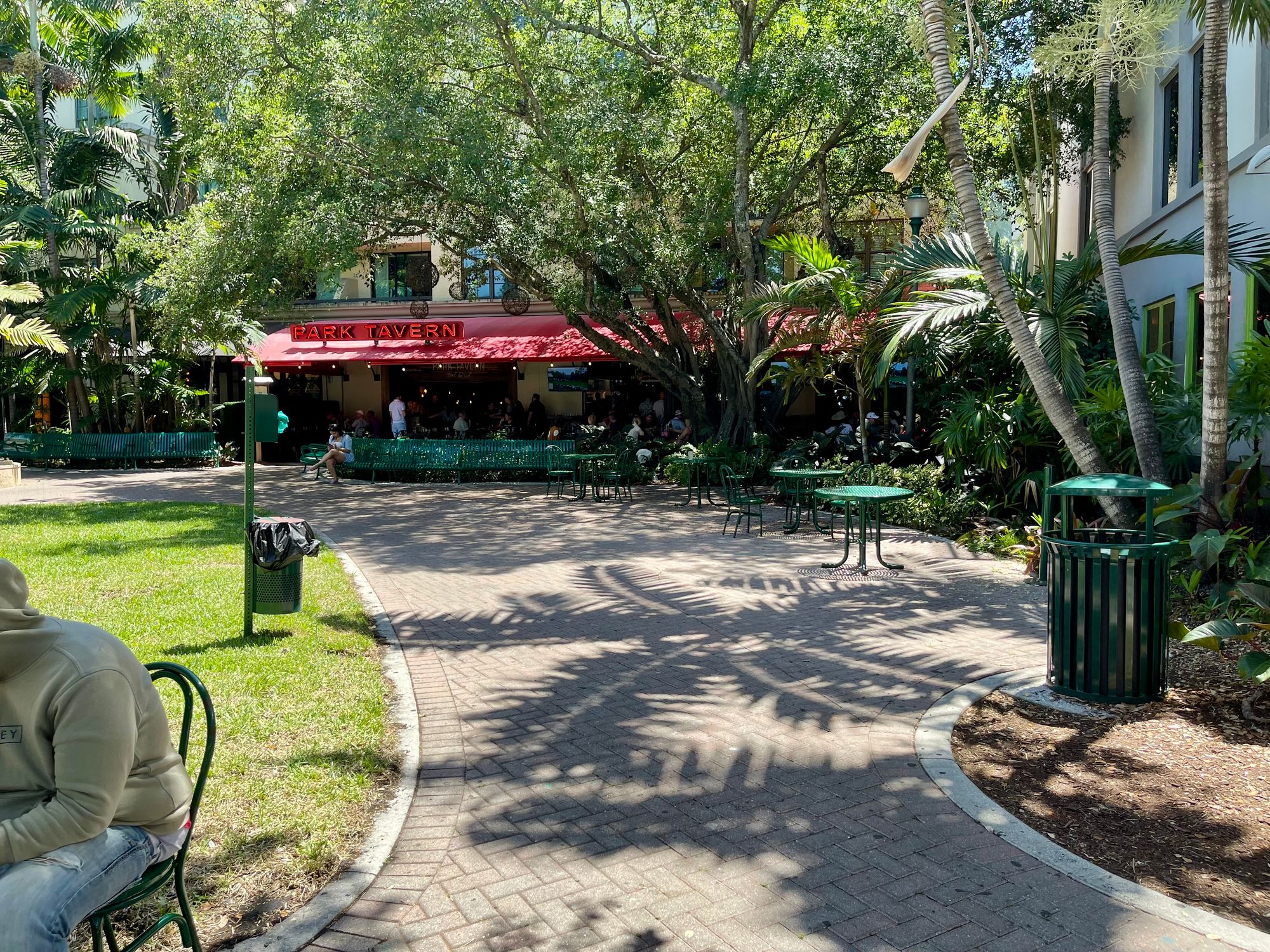
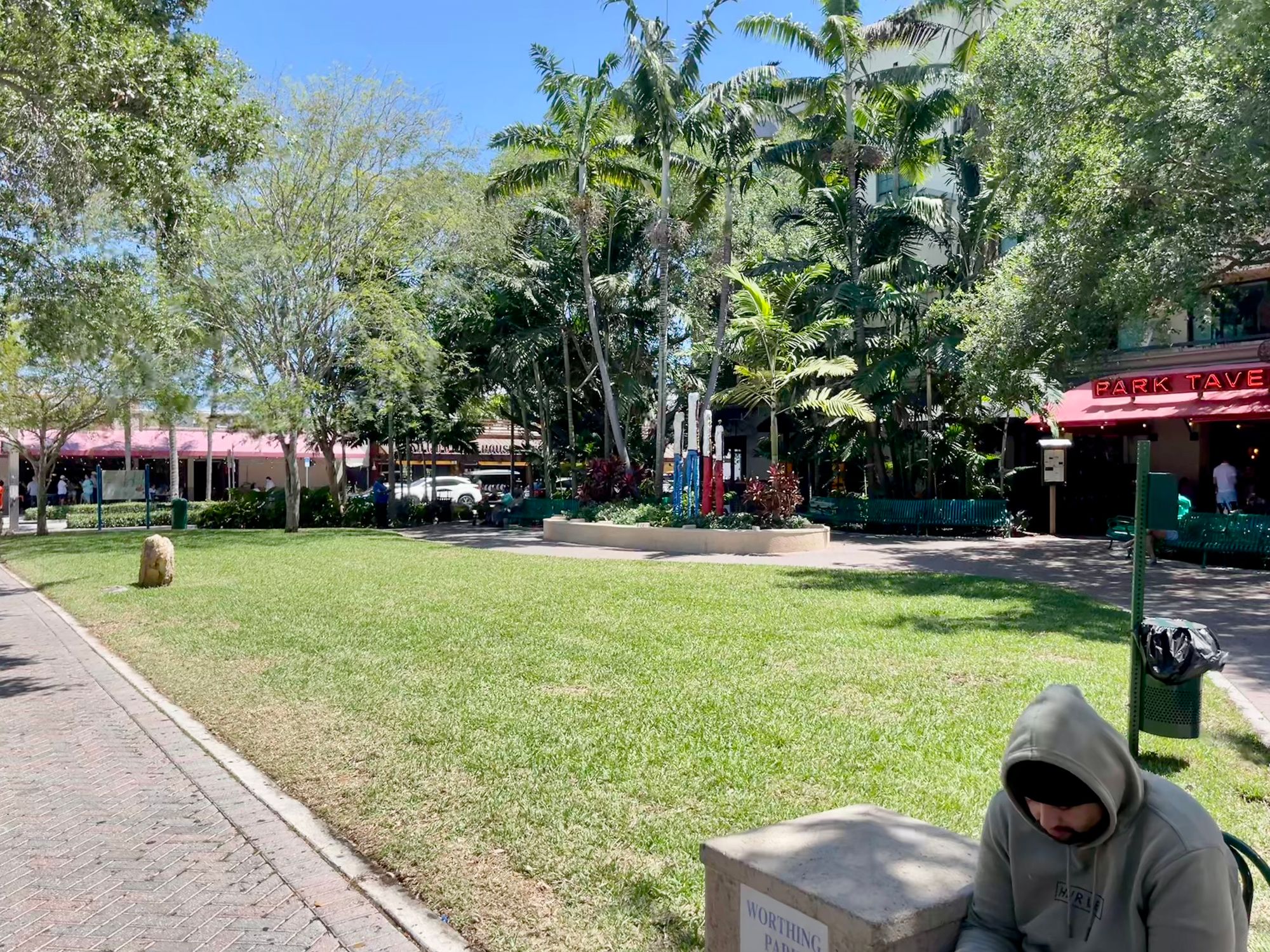
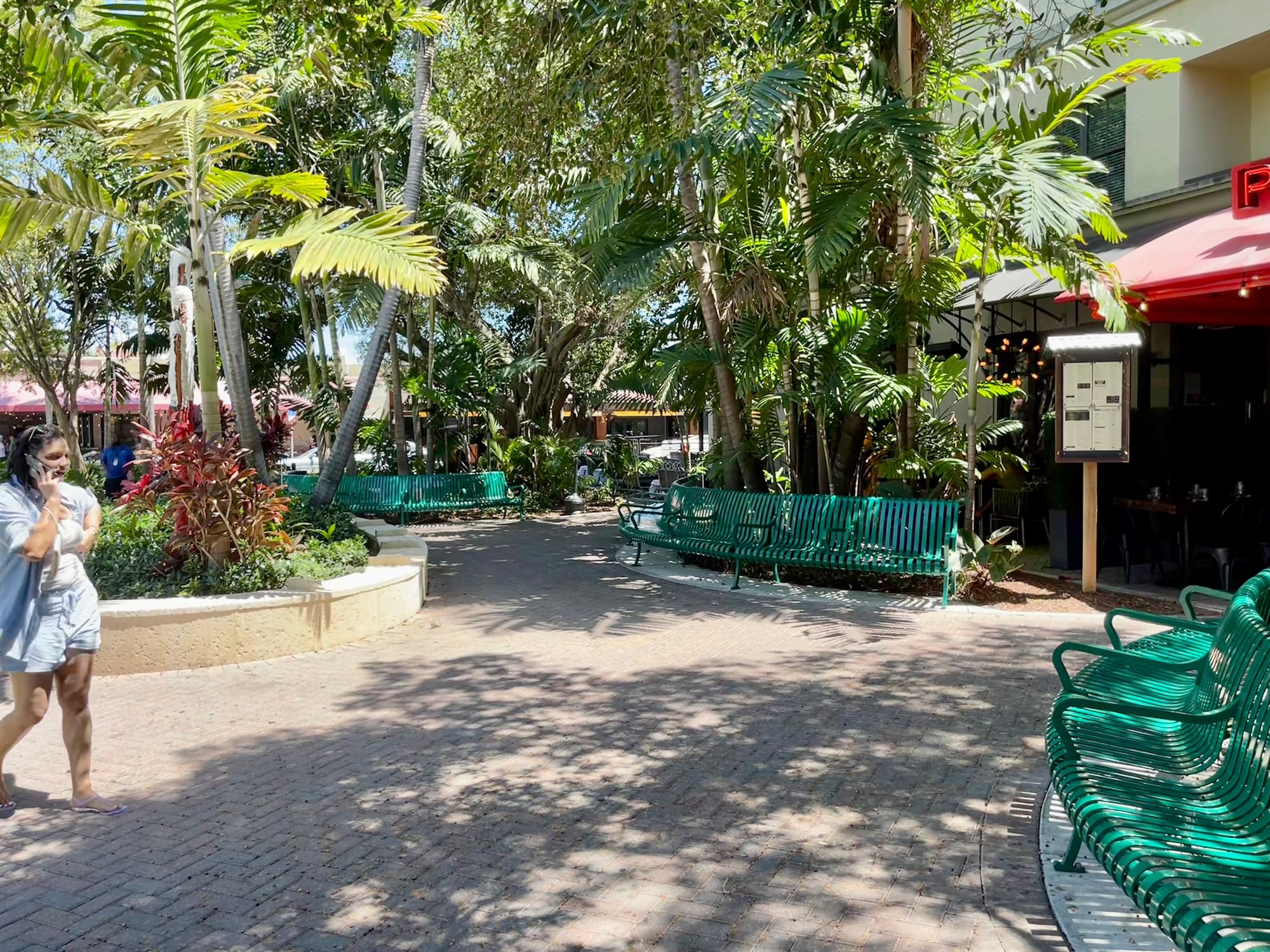
A "park" in the center of town is not a solution. A "square" is a better term for what needs to be developed here – an open public place, highly programmed, that welcomes people to gather through amenities and activities.
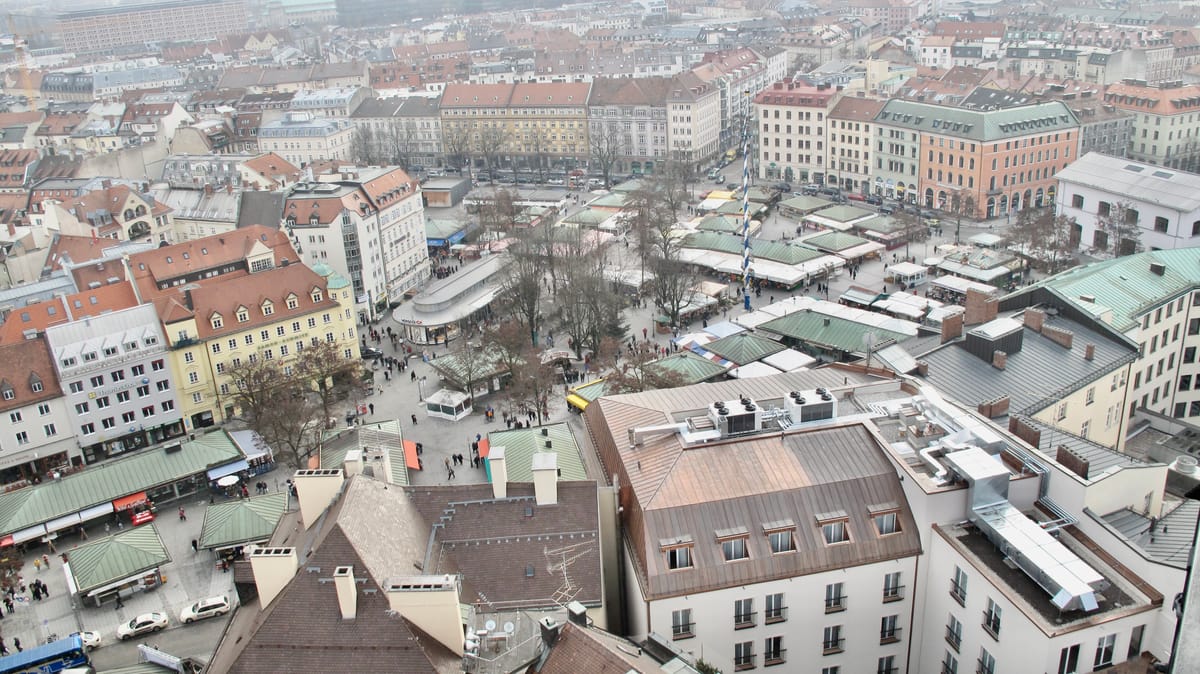
This would create a greater sense of openness, and along with strong programming, a focal point like a fountain, temporary kiosks for ice cream and light food, colorful umbrellas and seating, this "square" could easily become an important part of top destination in the city's core.
Benchmark
Paris neighborhood, Bassin de la Villette's pop-up structures are a great inspiration for the kind of interventions that can take Worthing Park to the next level:
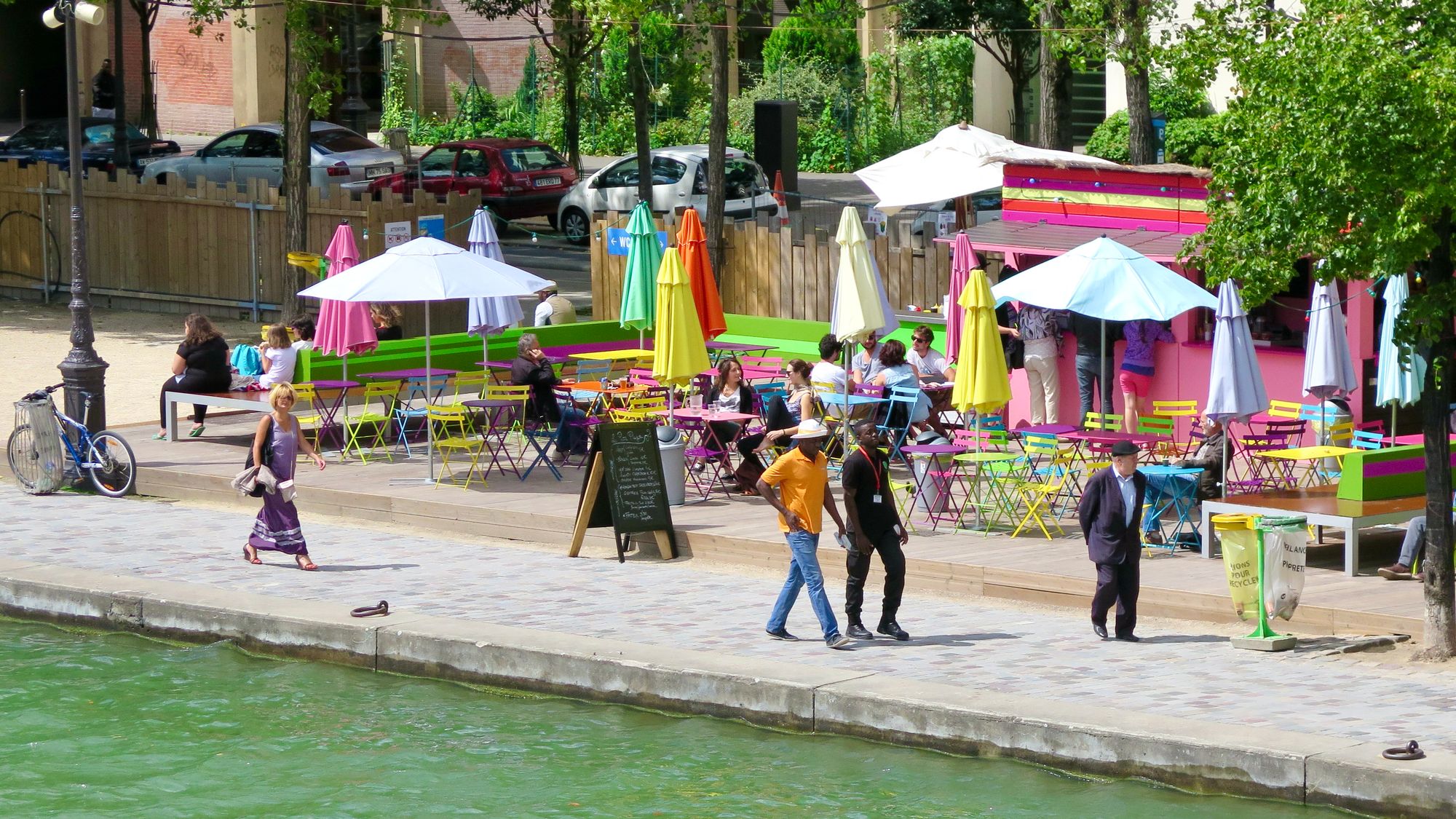
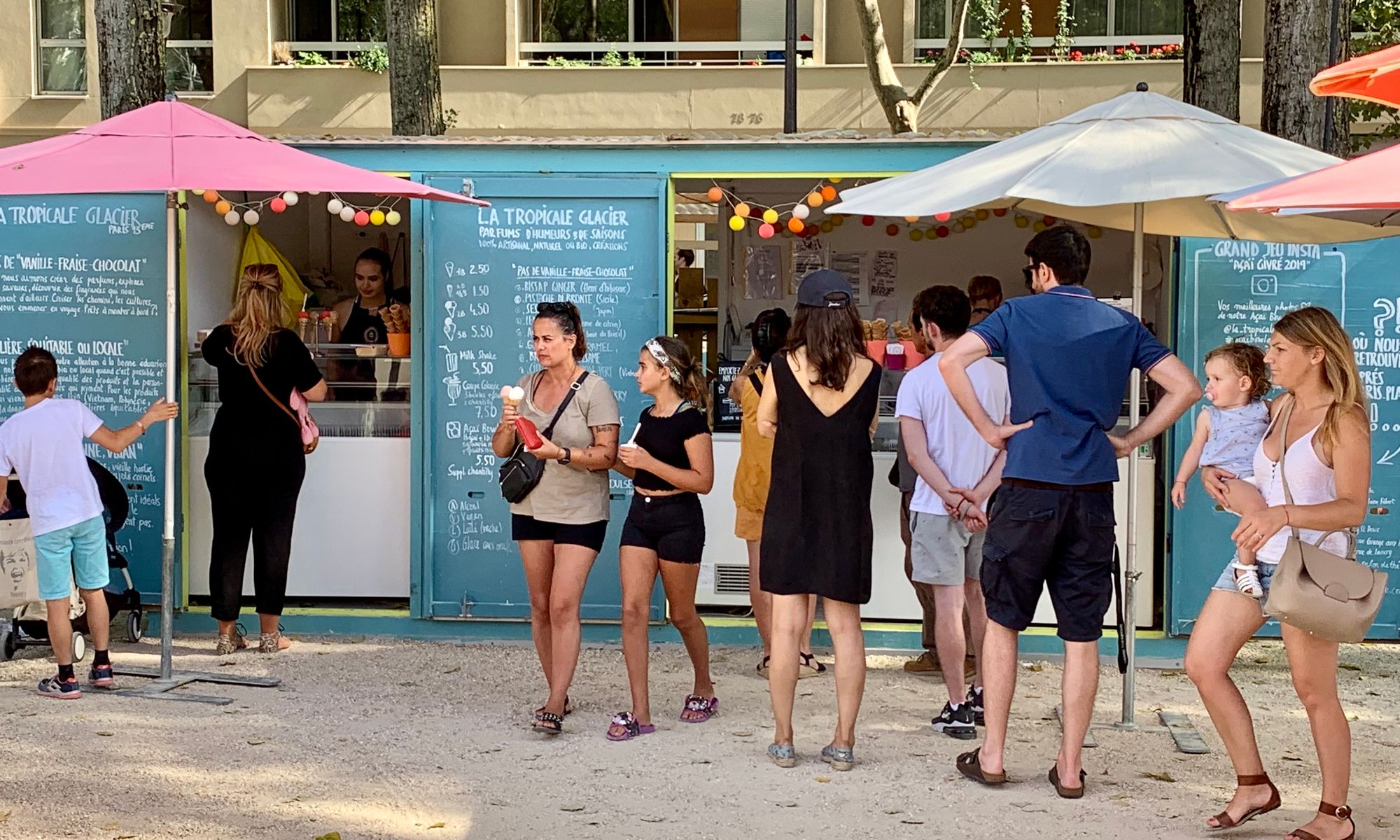
Read more about Bassin de la Villette here:
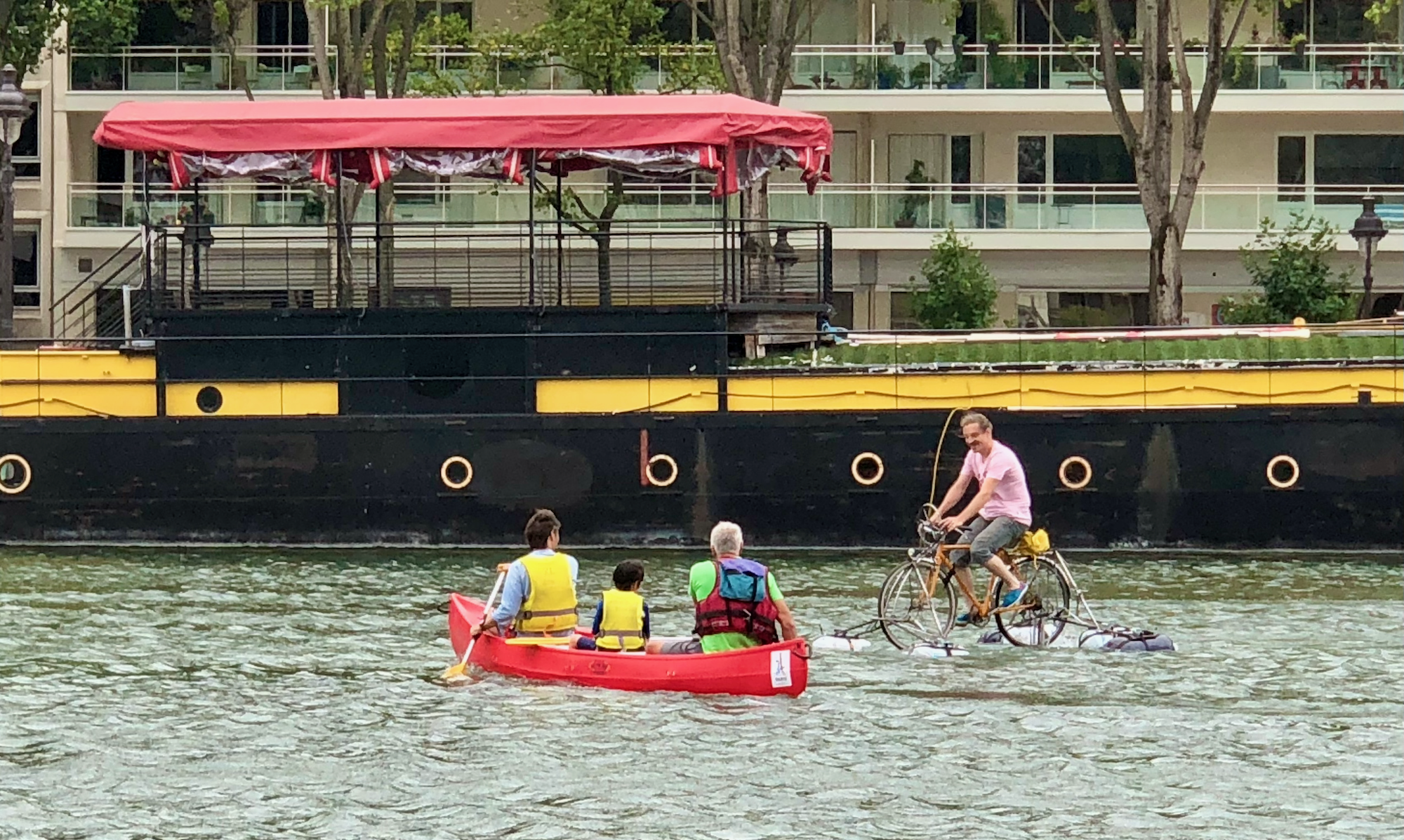
Old School Square and the plazas in front of the museum, the Crest Theater, and the vintage gymnasium need similar interventions as well.
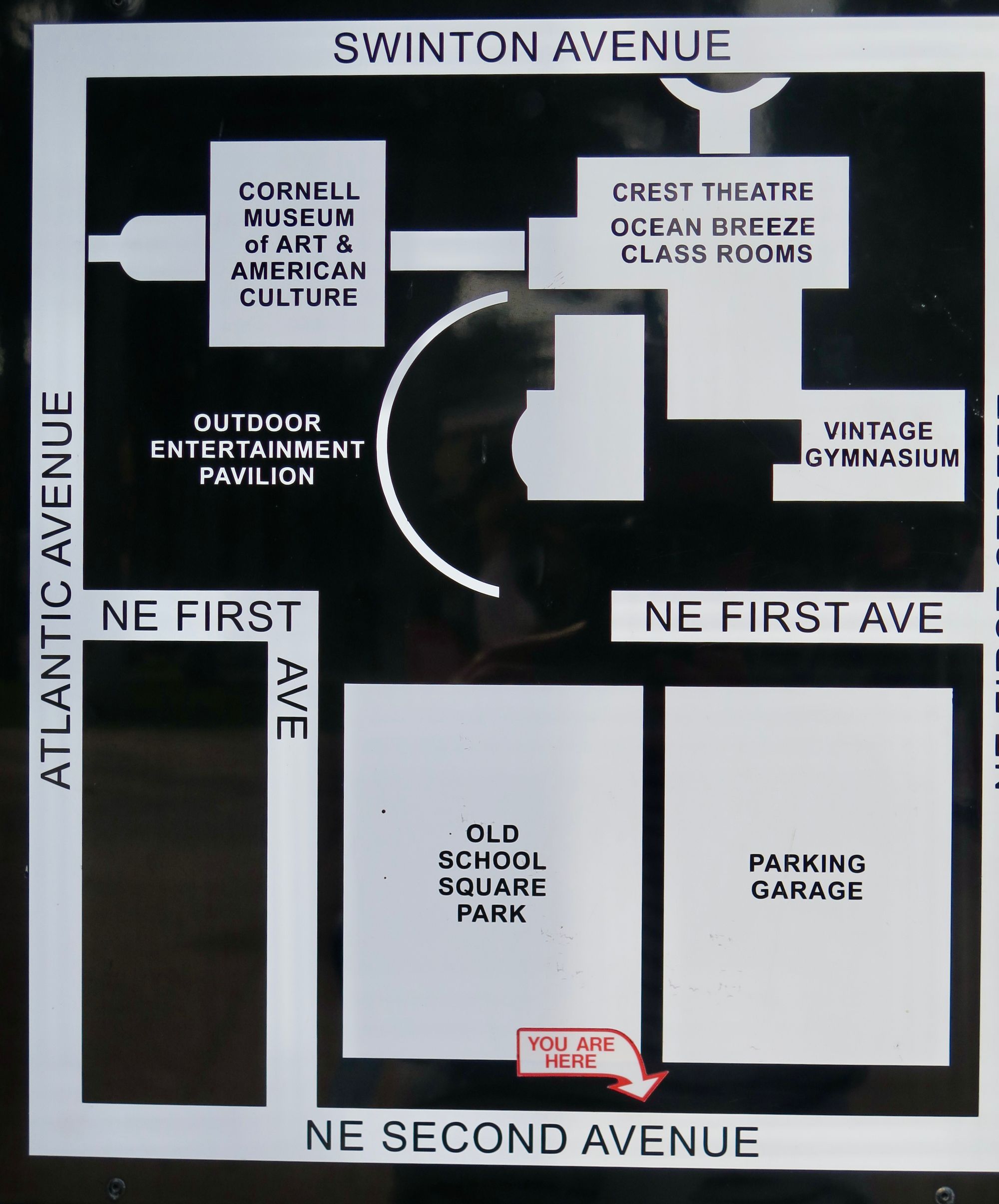
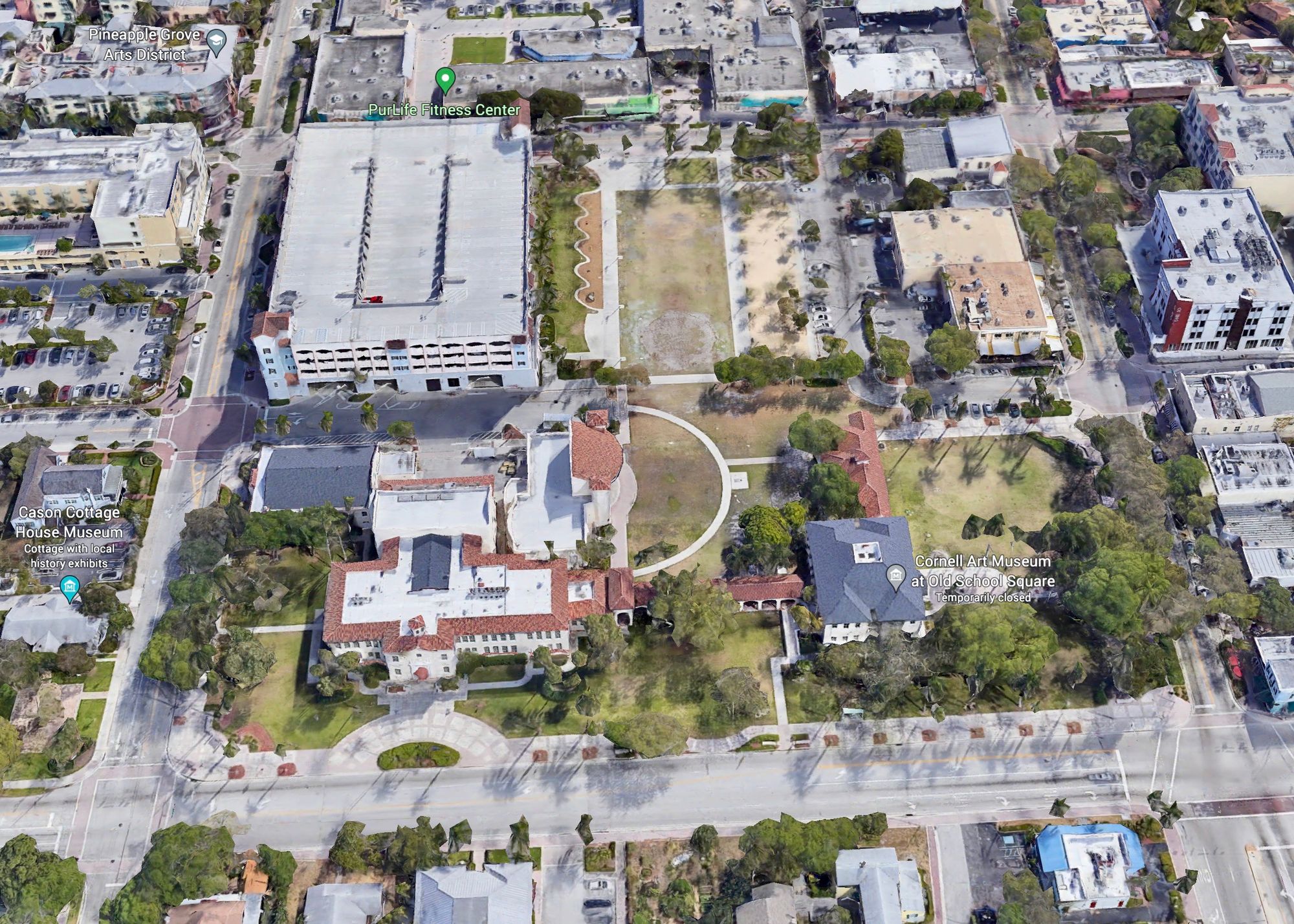
You can check out our draft post on Old School Square here:
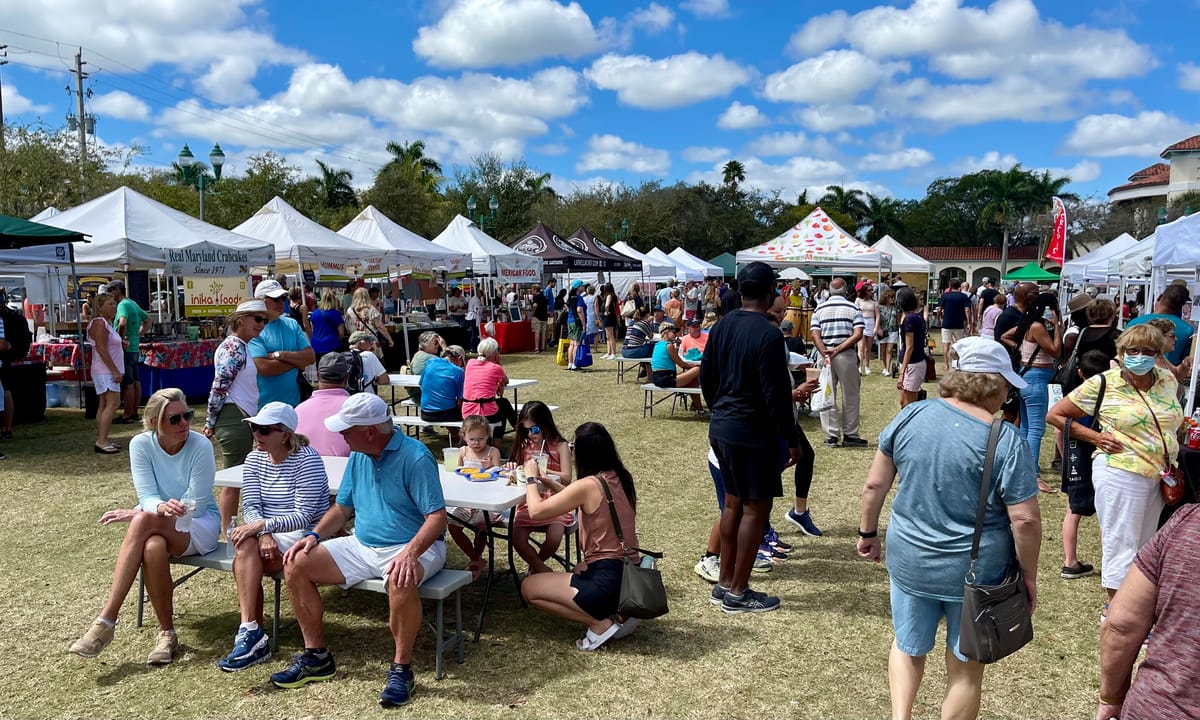
Section Two: From the Railroad Tracks to the Intracoastal
This section of Atlantic Ave is the central section and the parts of it that could be improved immediately. This area has a variety of strong and historic assets starting with attractions such as Johnnie Brown's.
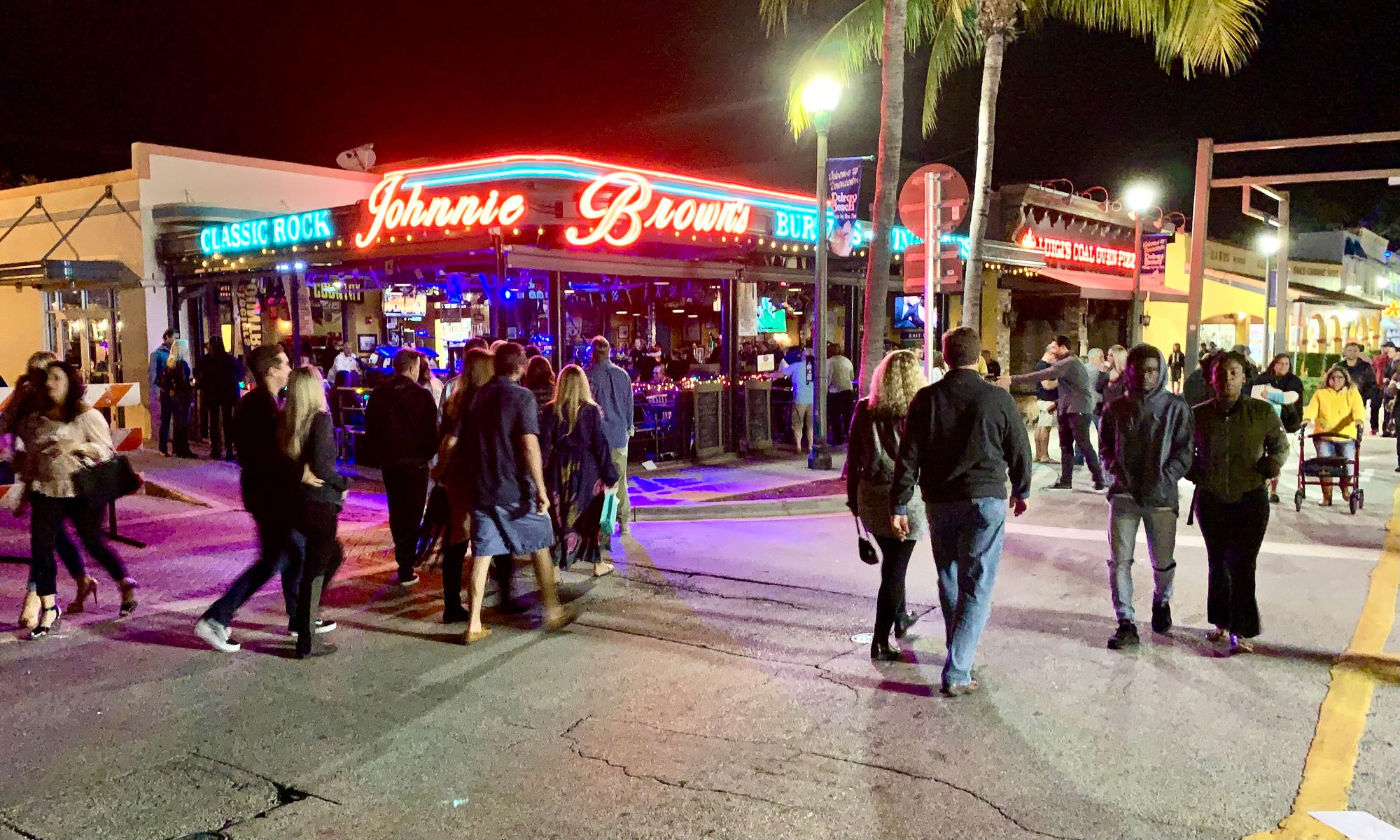
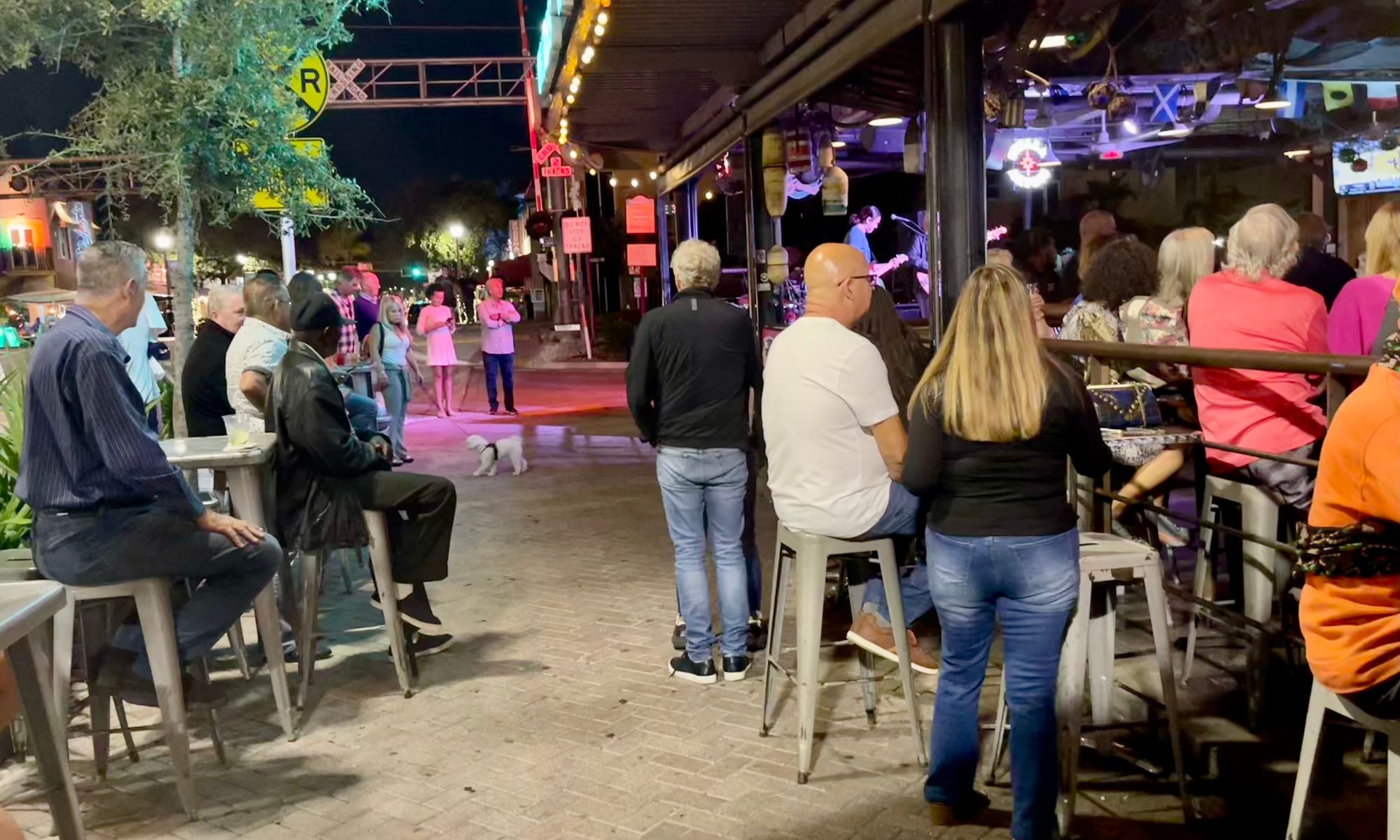
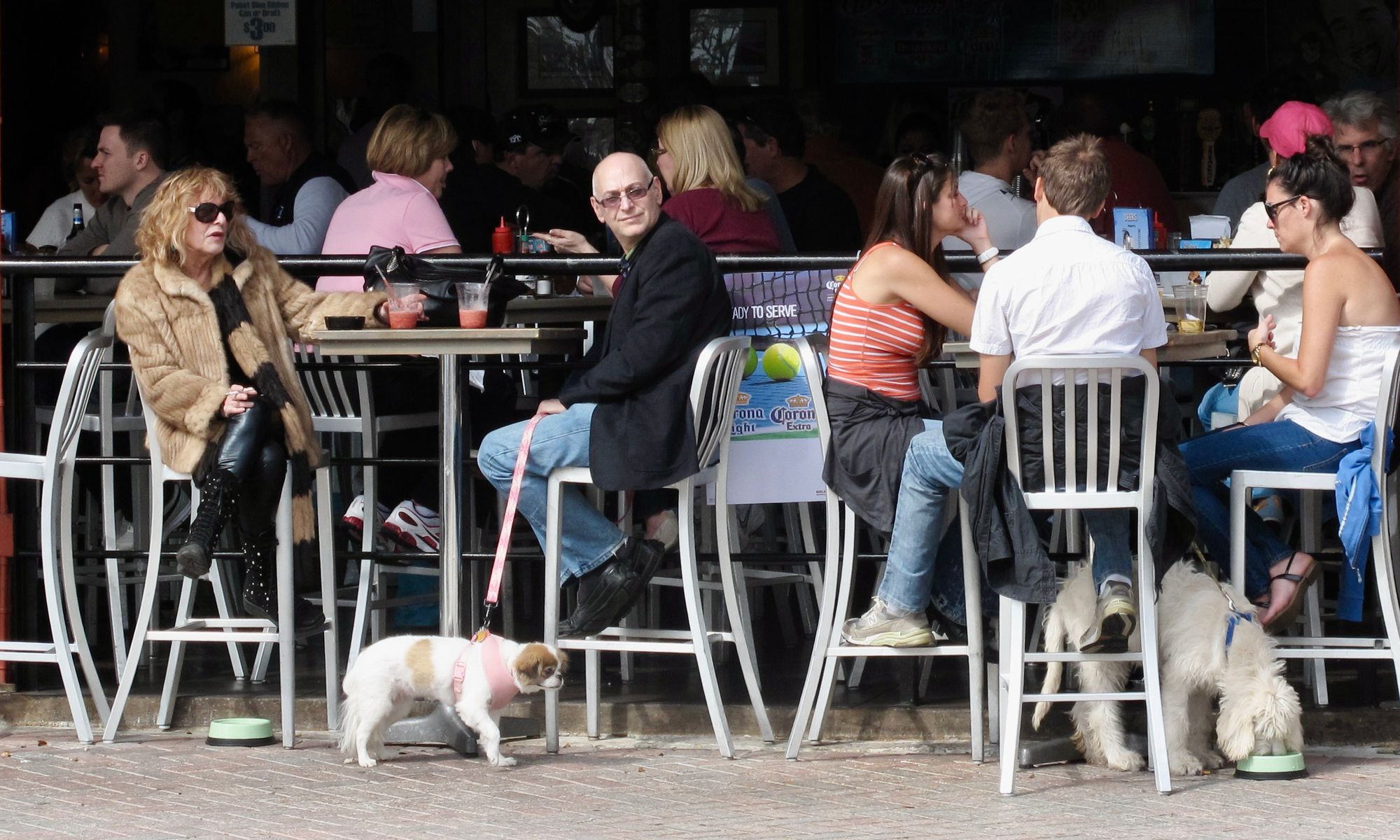
Johnnie Brown's
This central area has smaller commercial and social hubs that could provide a strong foundation similar to what is happening on East Second Avenue.
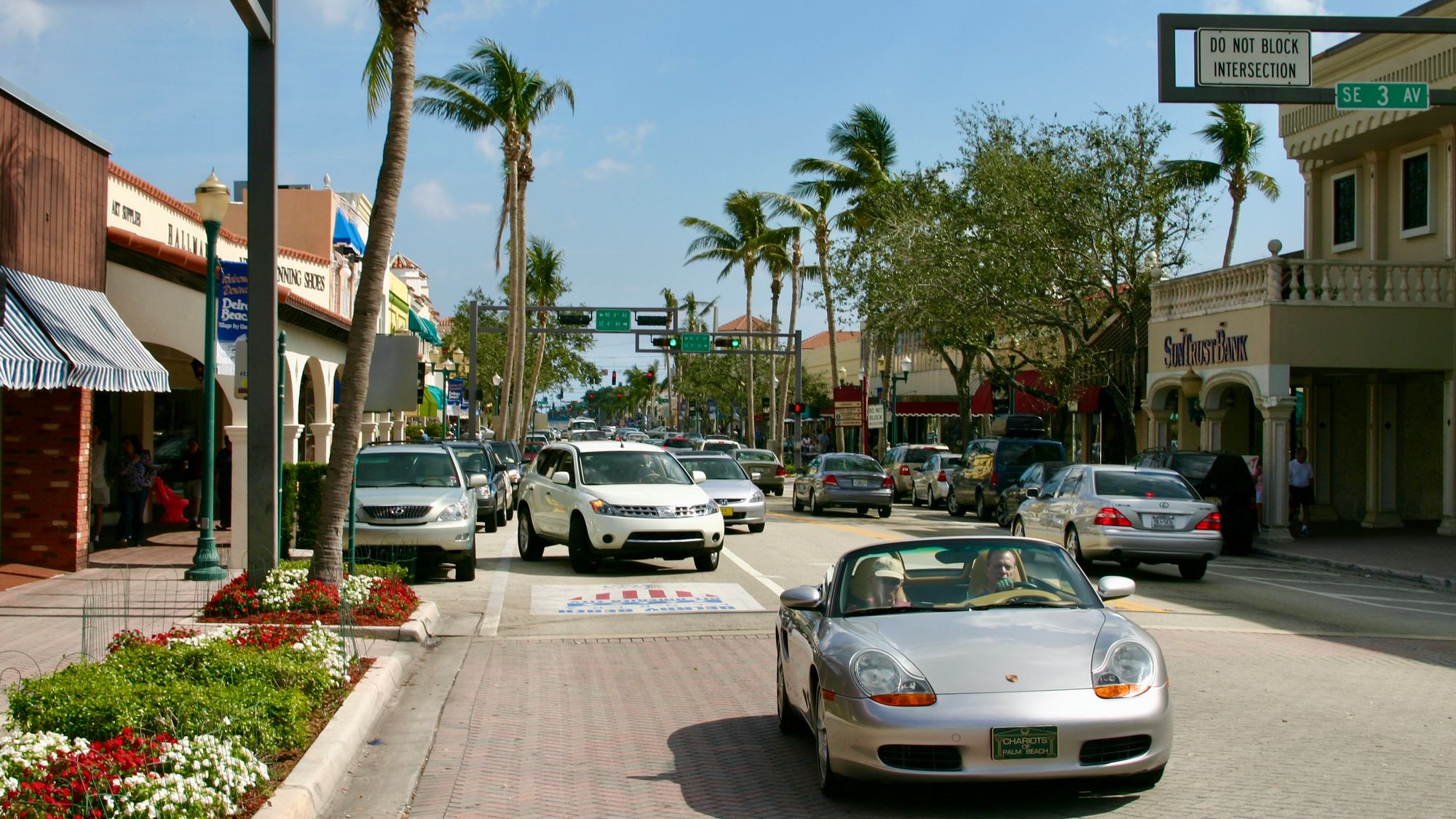
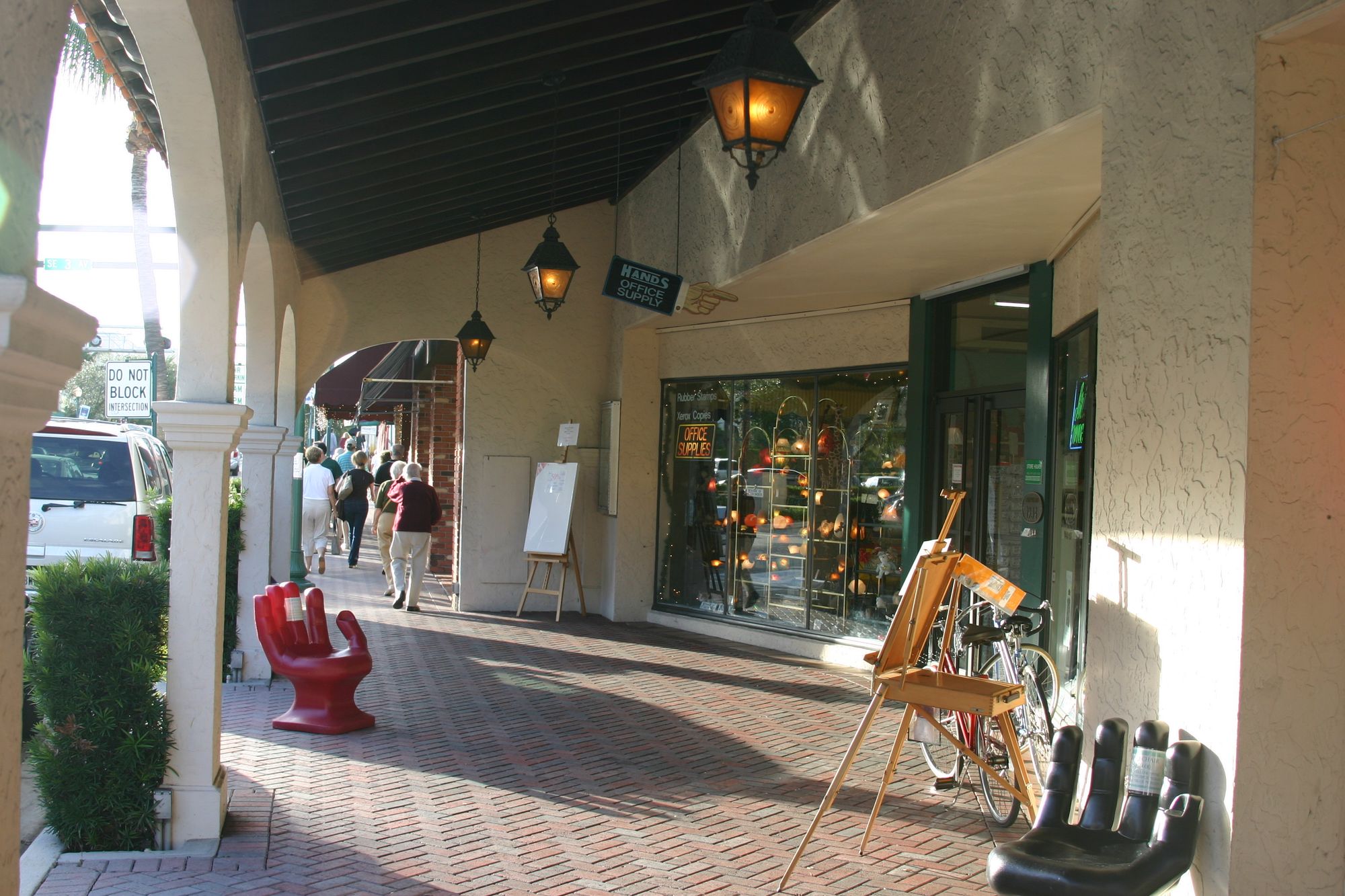
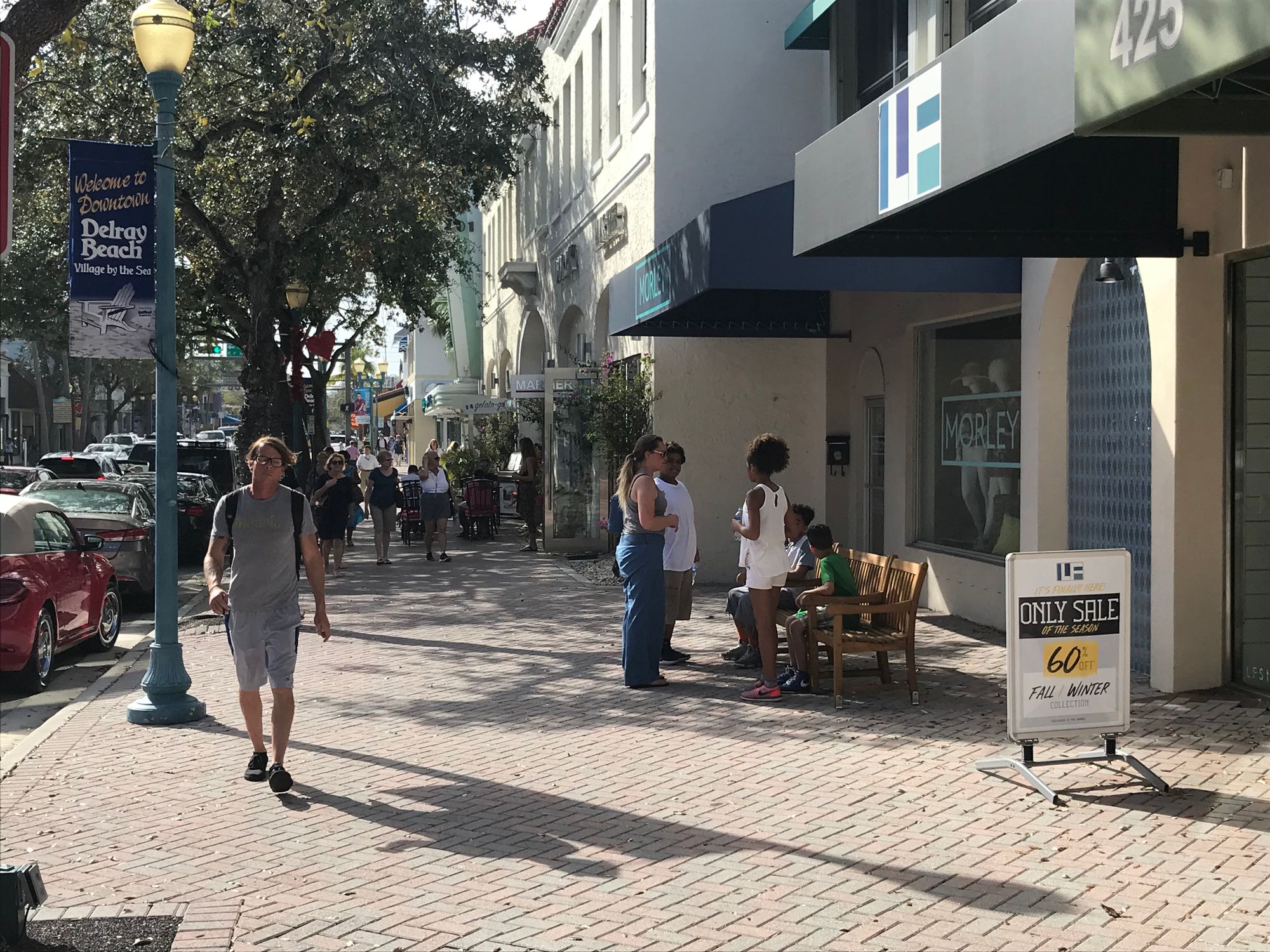
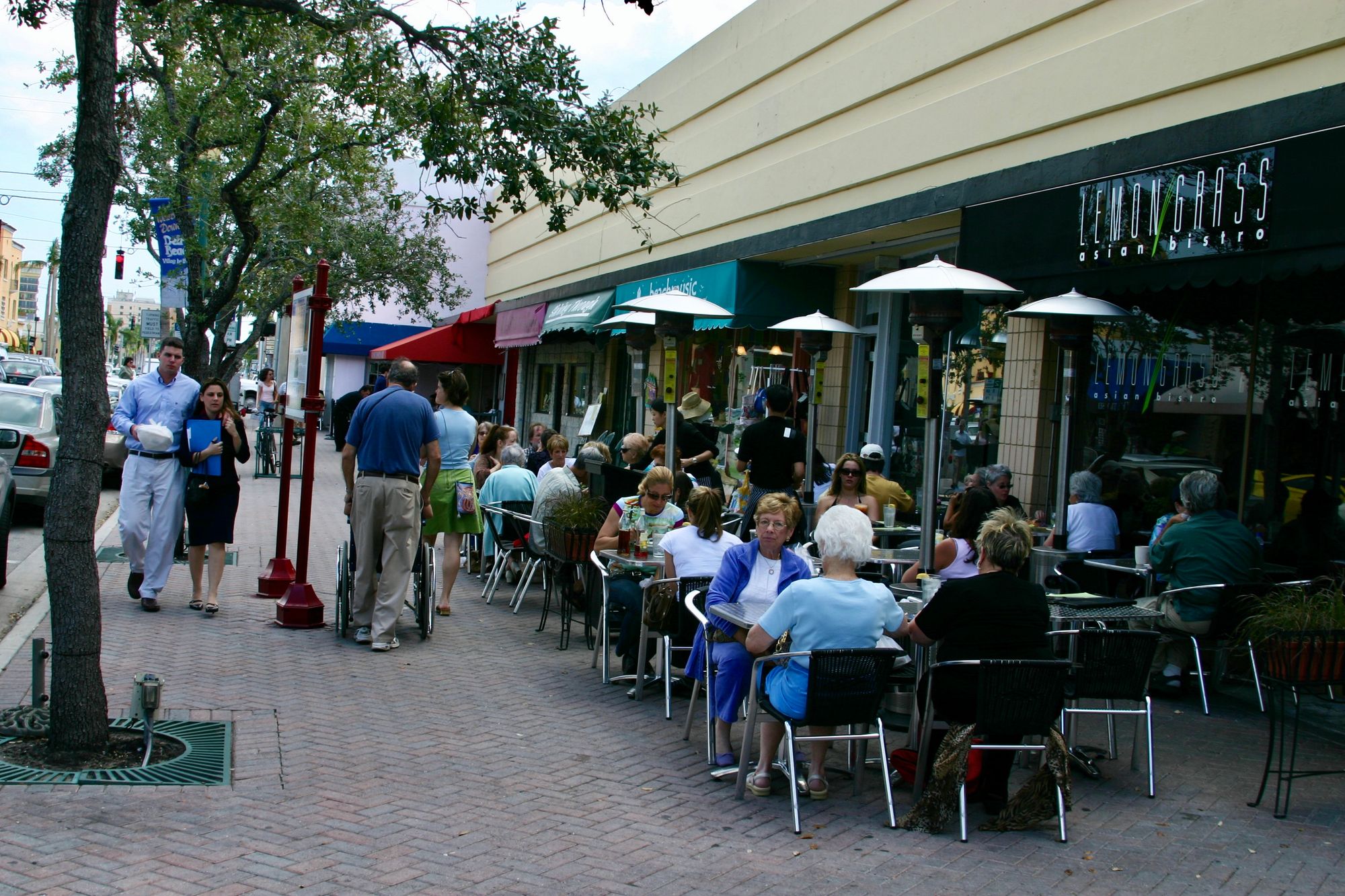
What We Have Lost
We have lost various spots we love over the last few years. "Hands," the wonderful former all-purpose store we all loved is gone. There are other missing pieces such as the paint store and the much loved newsstand. Will the replacements for these spots add or takeaway from the character we once valued?
It is important to think about how new additions fit into the desired and cherished atmosphere of town, because often they are replaced with generic buildings that don't contribute anything of value, leading to a gradual breakdown of each block.
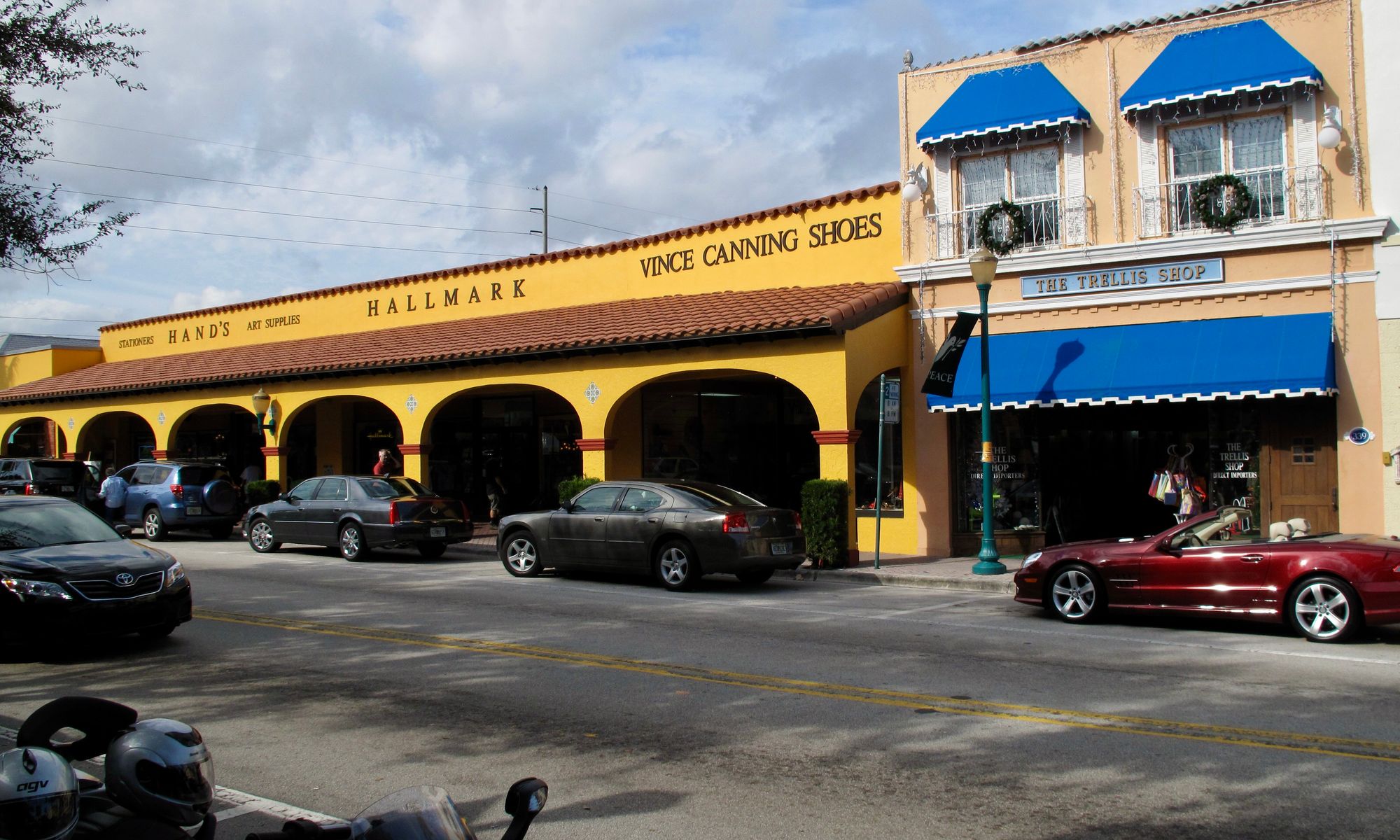
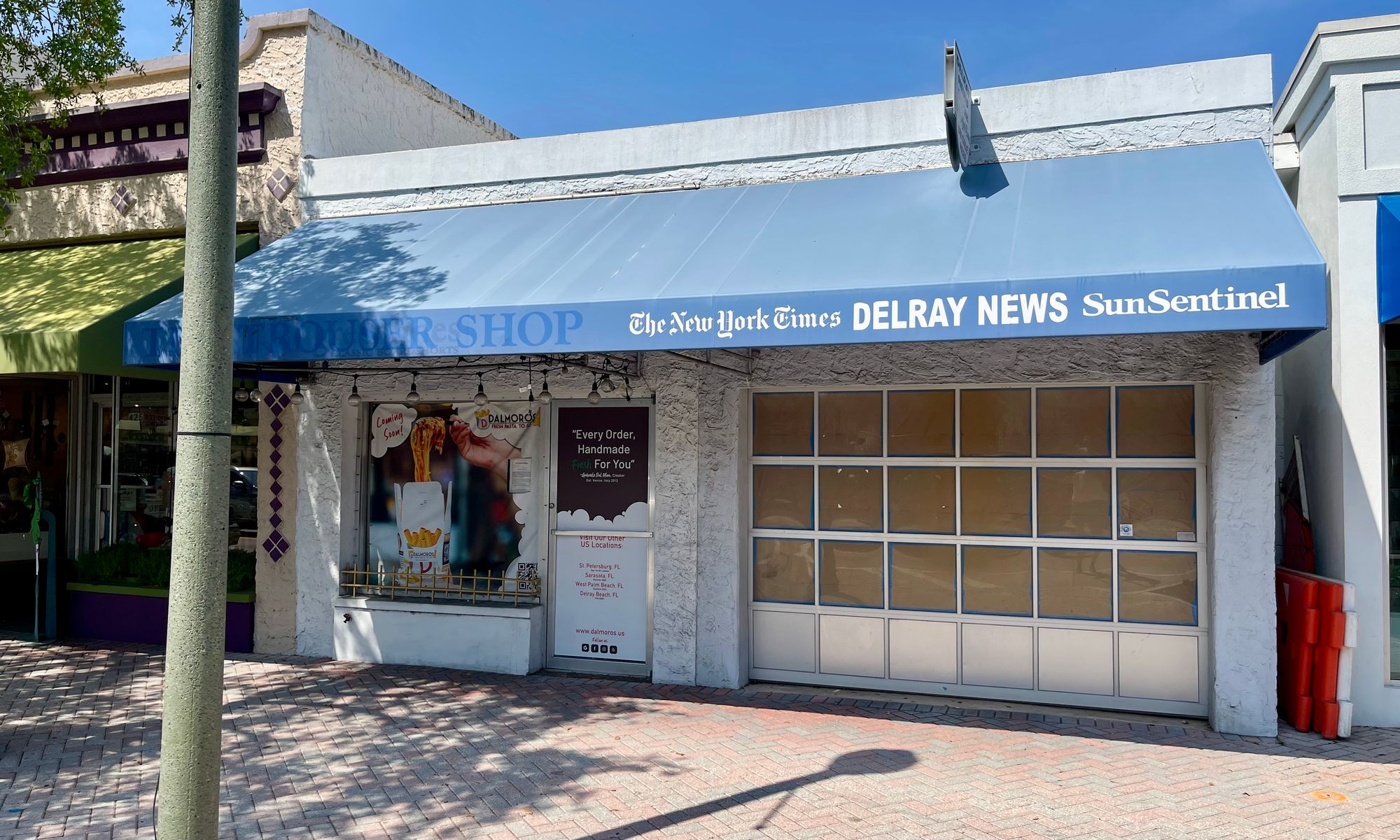
The Colony Hotel needs to become the "iconic destination" and perceived center of the downtown core
The Colony Hotel is a key anchor in the downtown. It is on the central block which needs to be highlighted as the most important block on main street. The hotel is bright and vibrant with a character that reflects historic Florida and Delray, and it gives the city center a recognizable look and feel.
However, it is isolated amid 12 lanes of traffic and parking which shows just how removed from reality the transportation community is regarding what makes cities places that people want to visit and be part of.
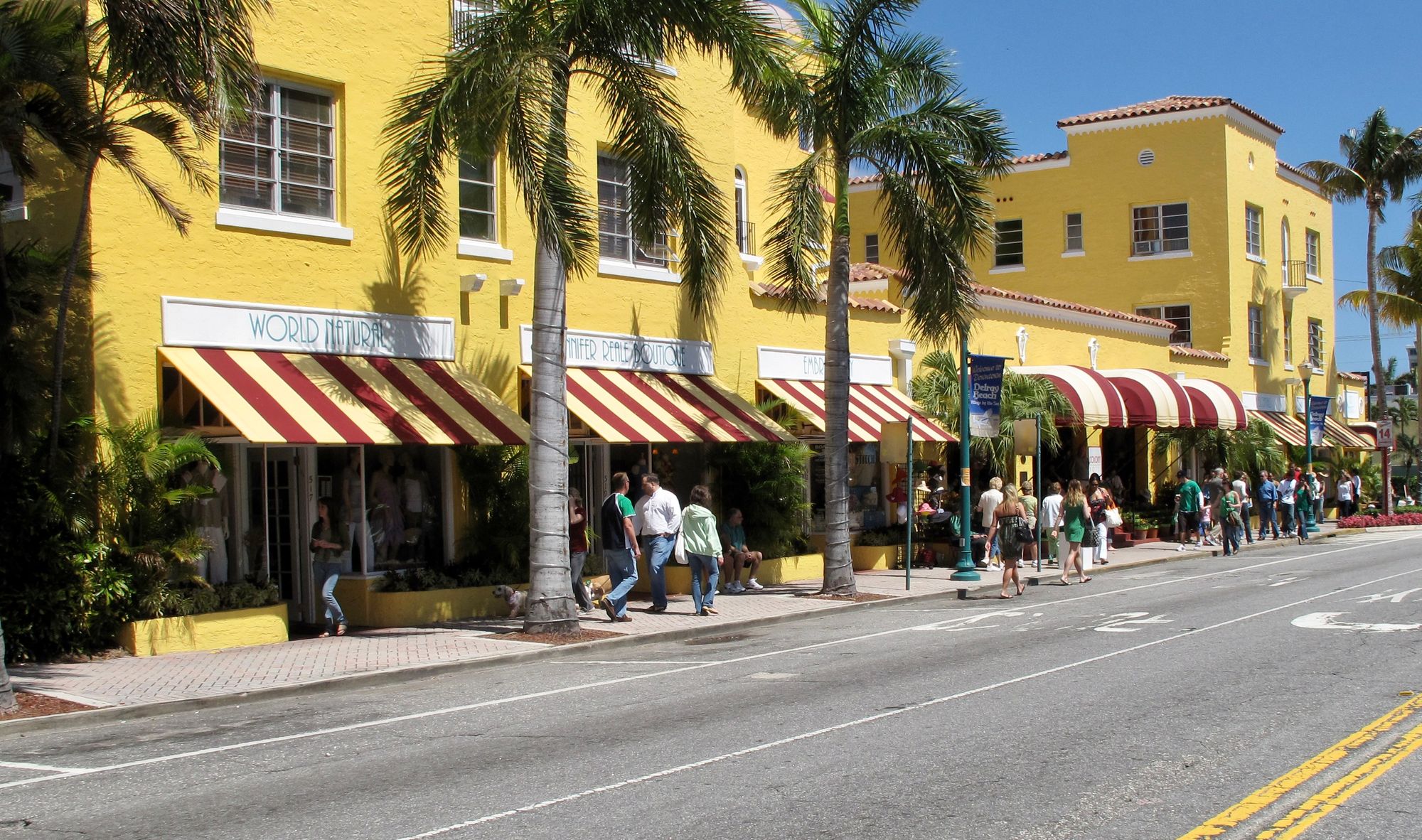
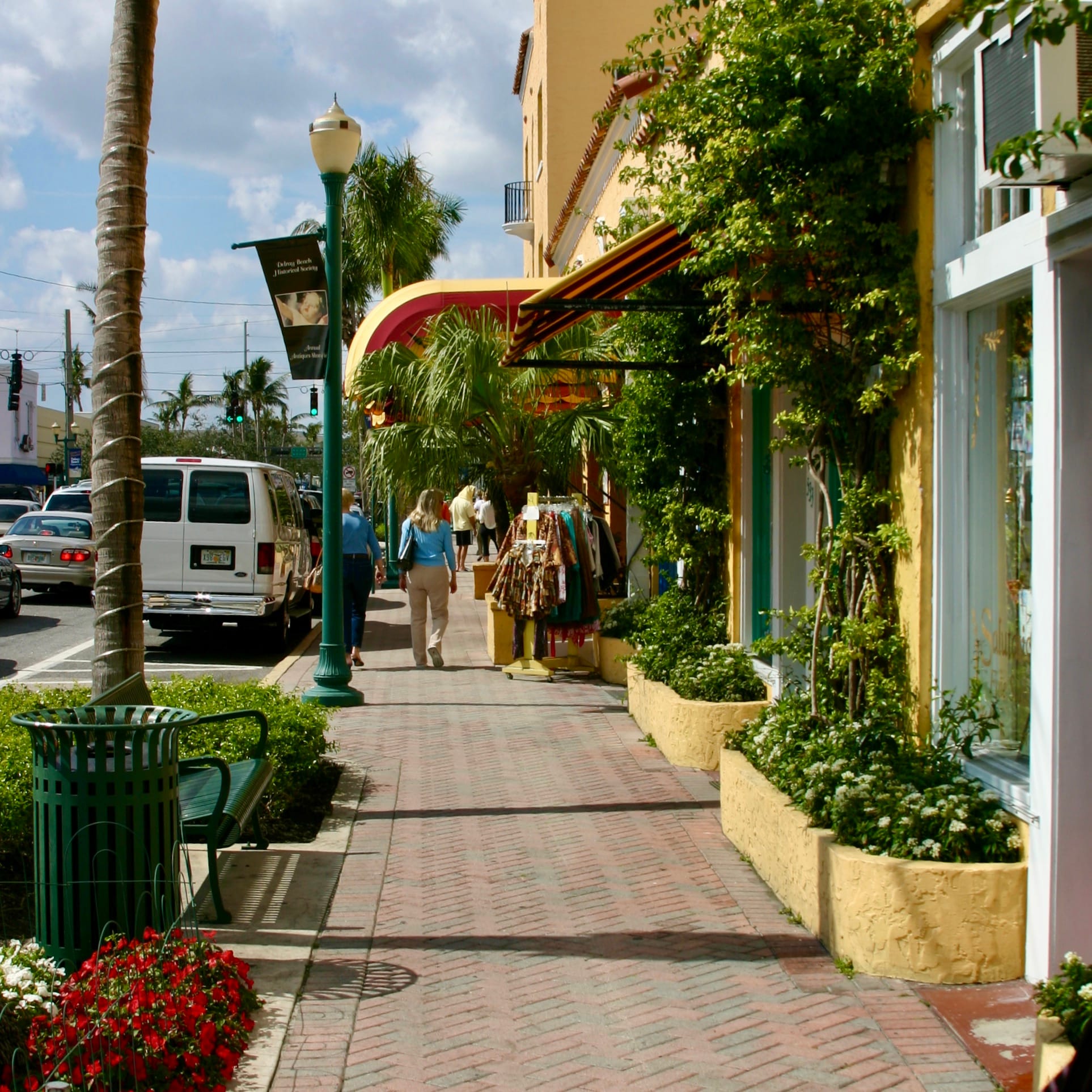
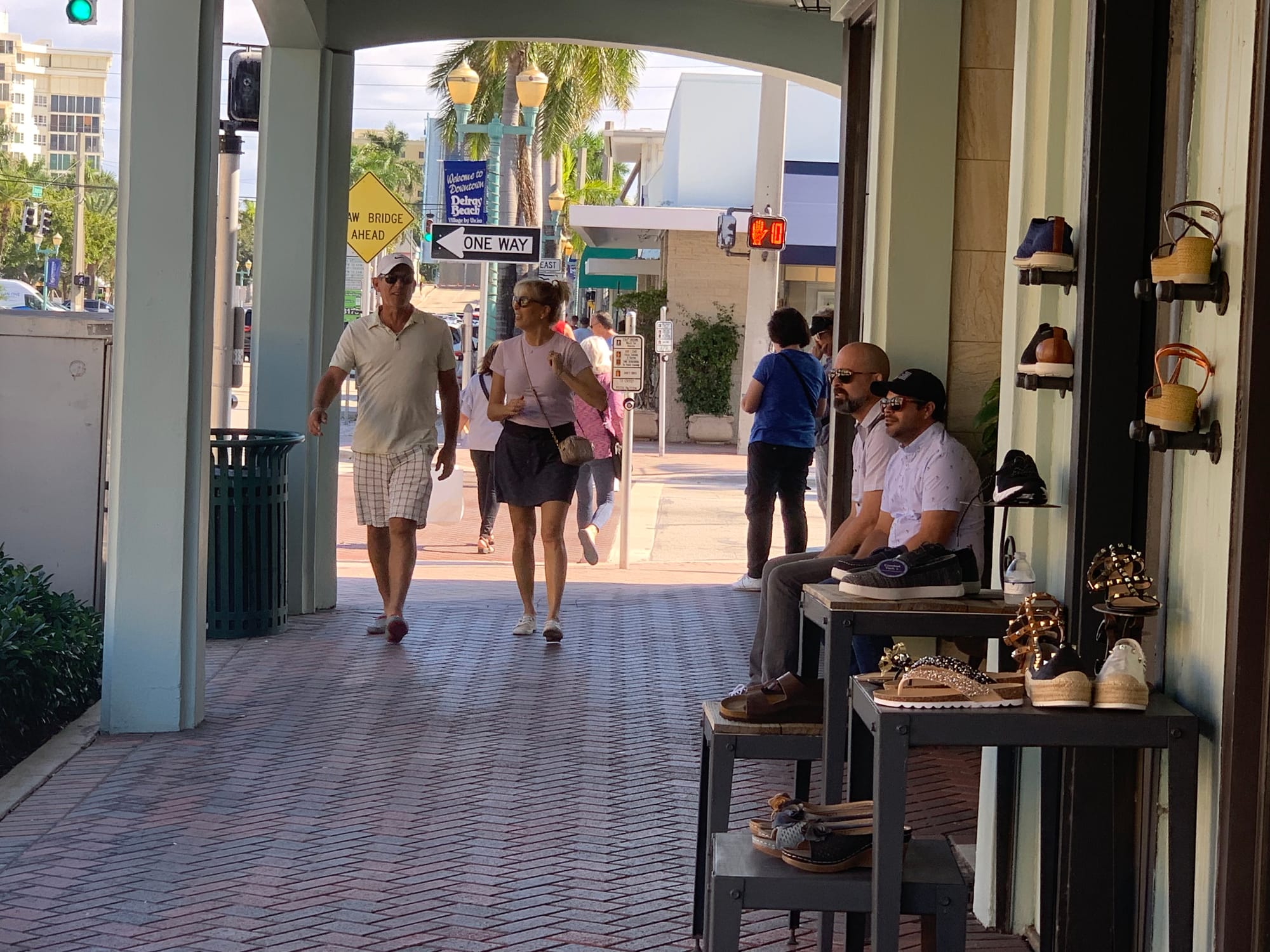
The Colony Hotel is a landmark both inside and outside.
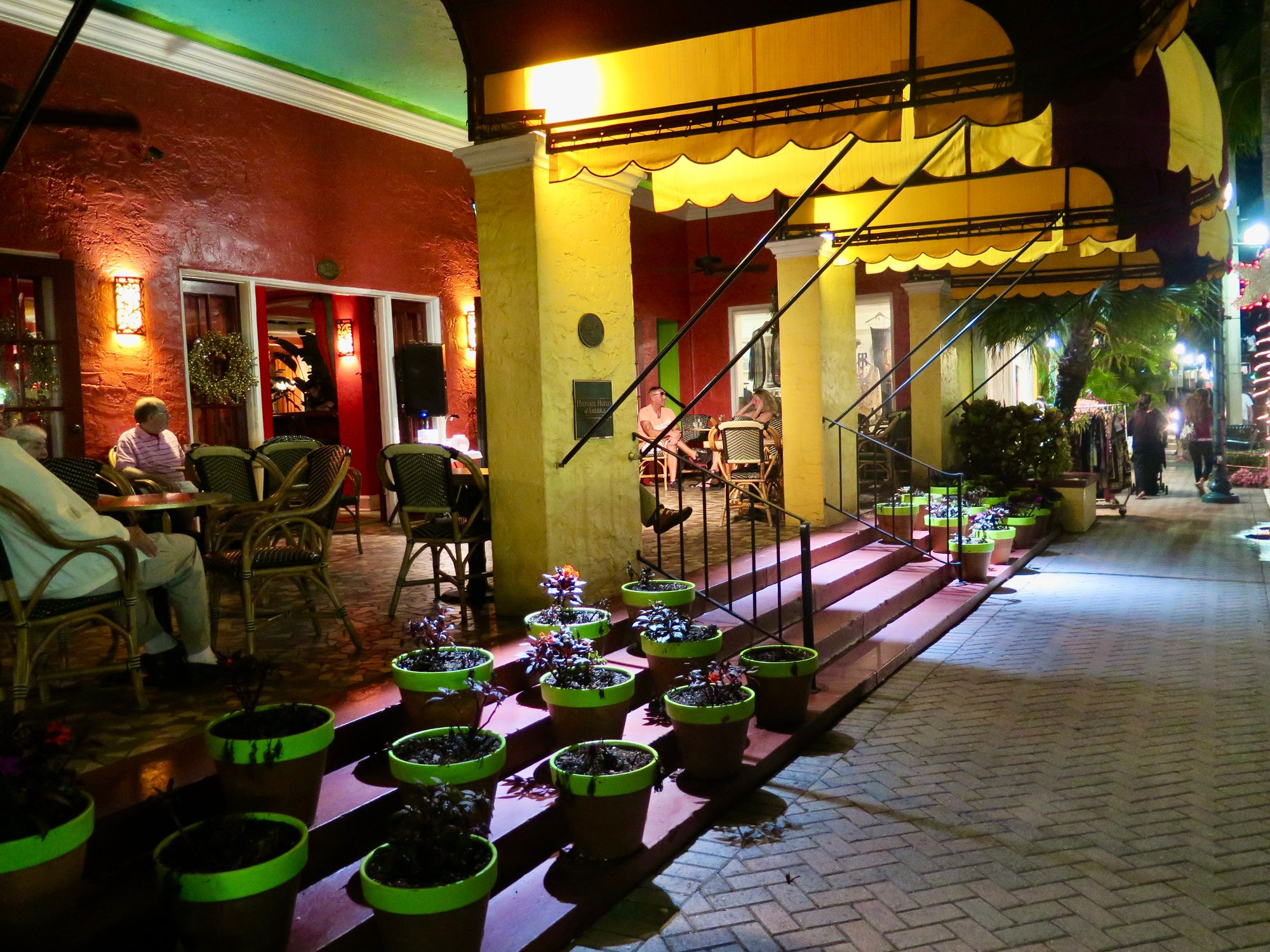
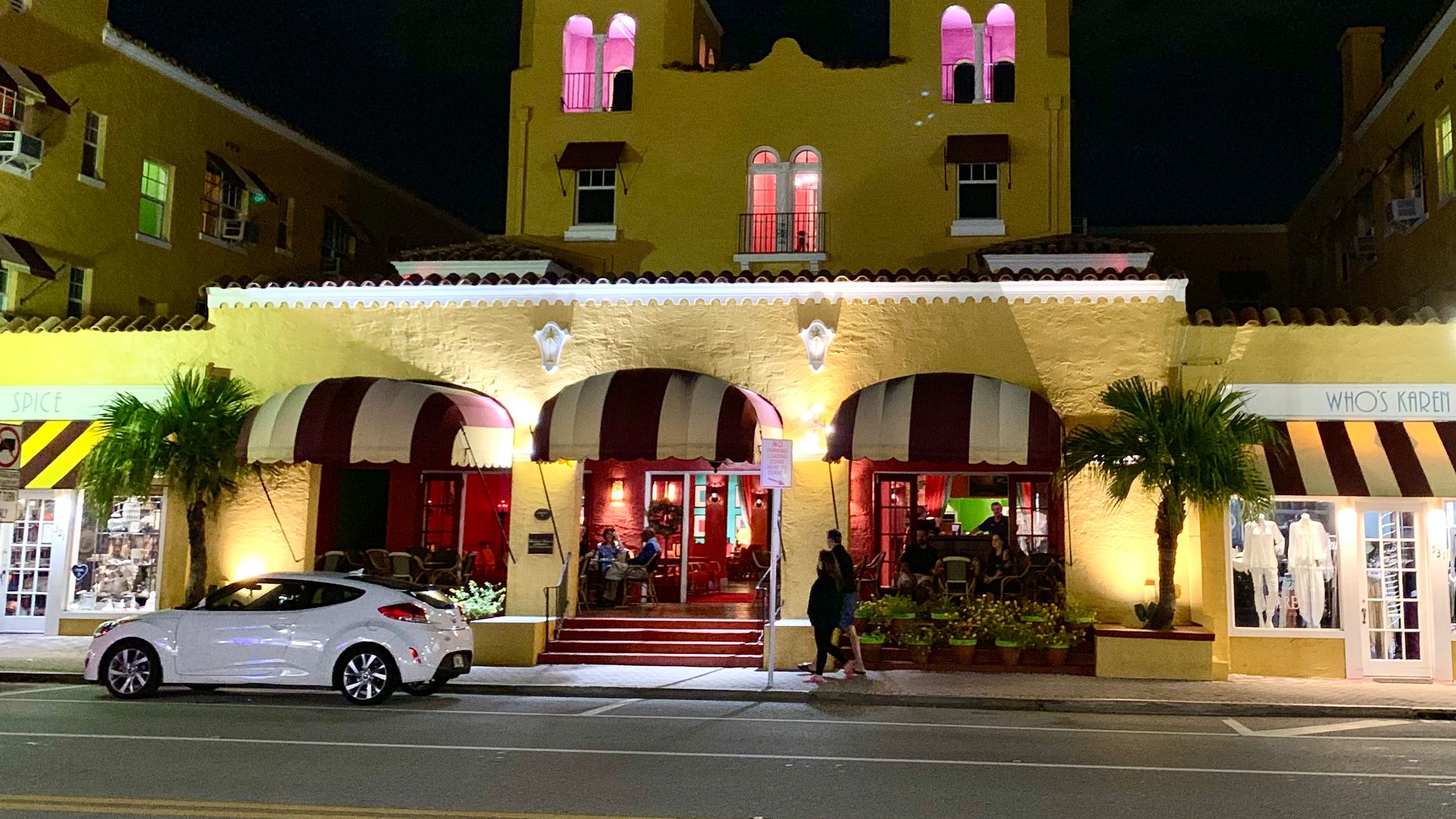
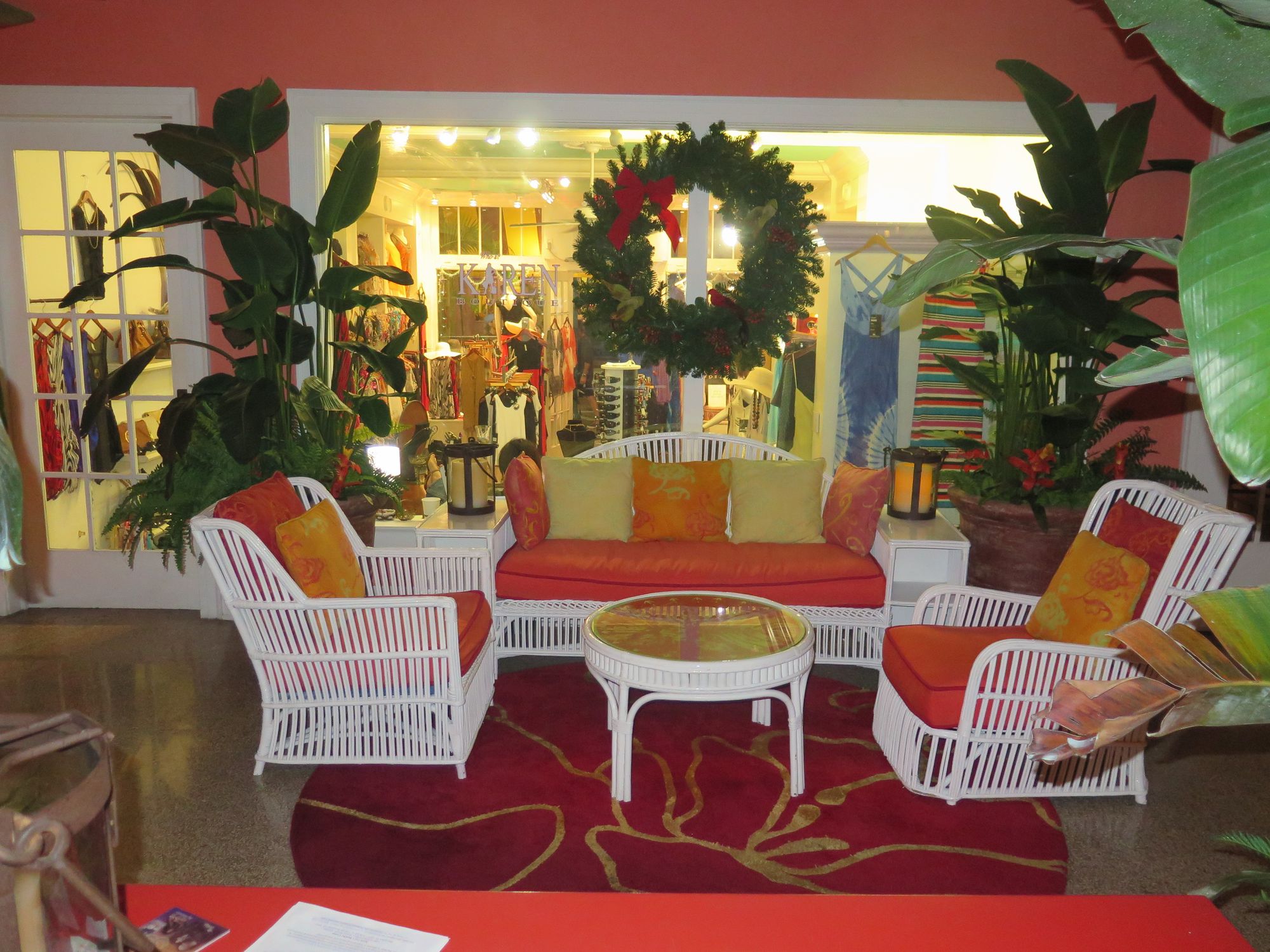
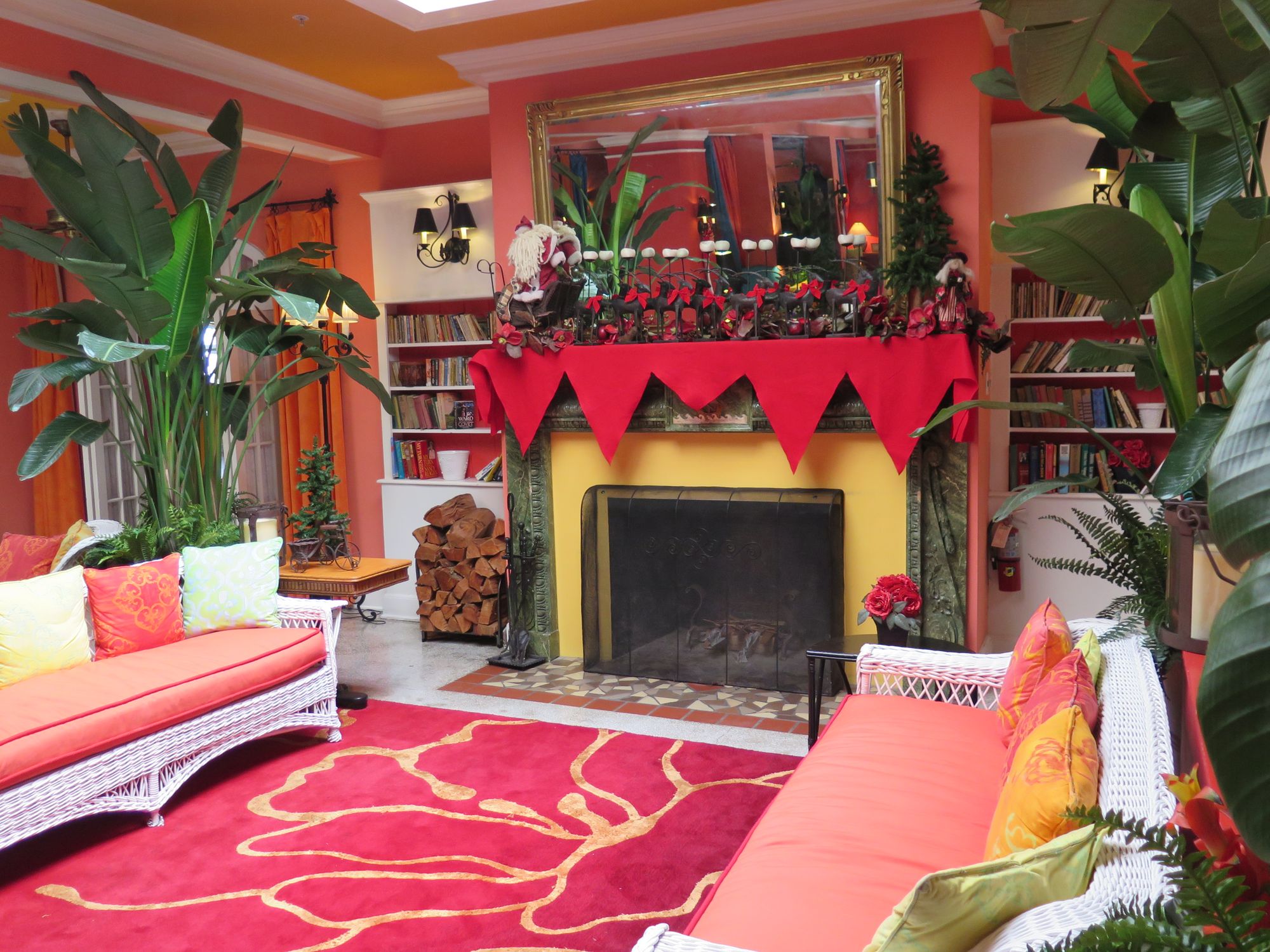
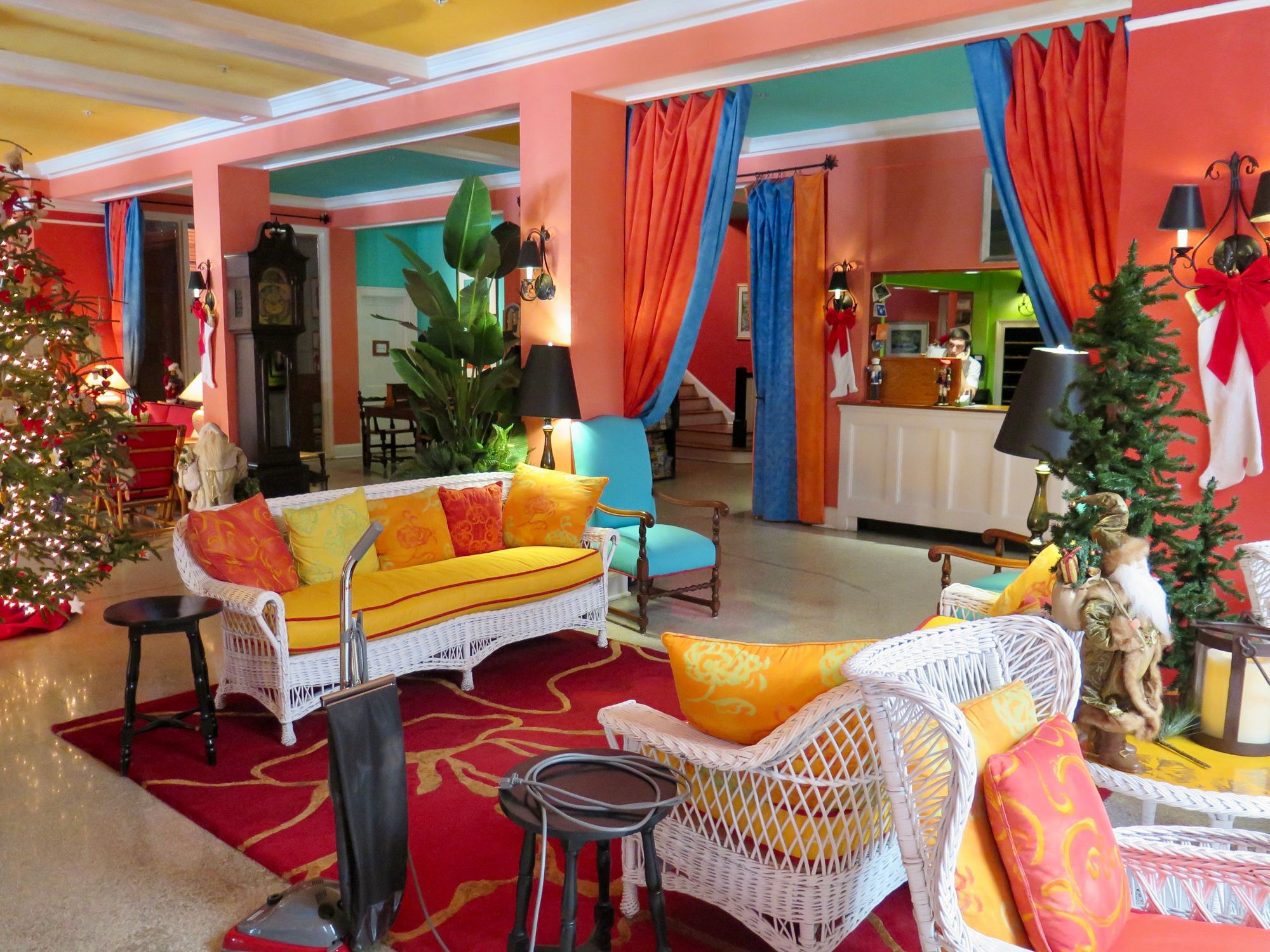
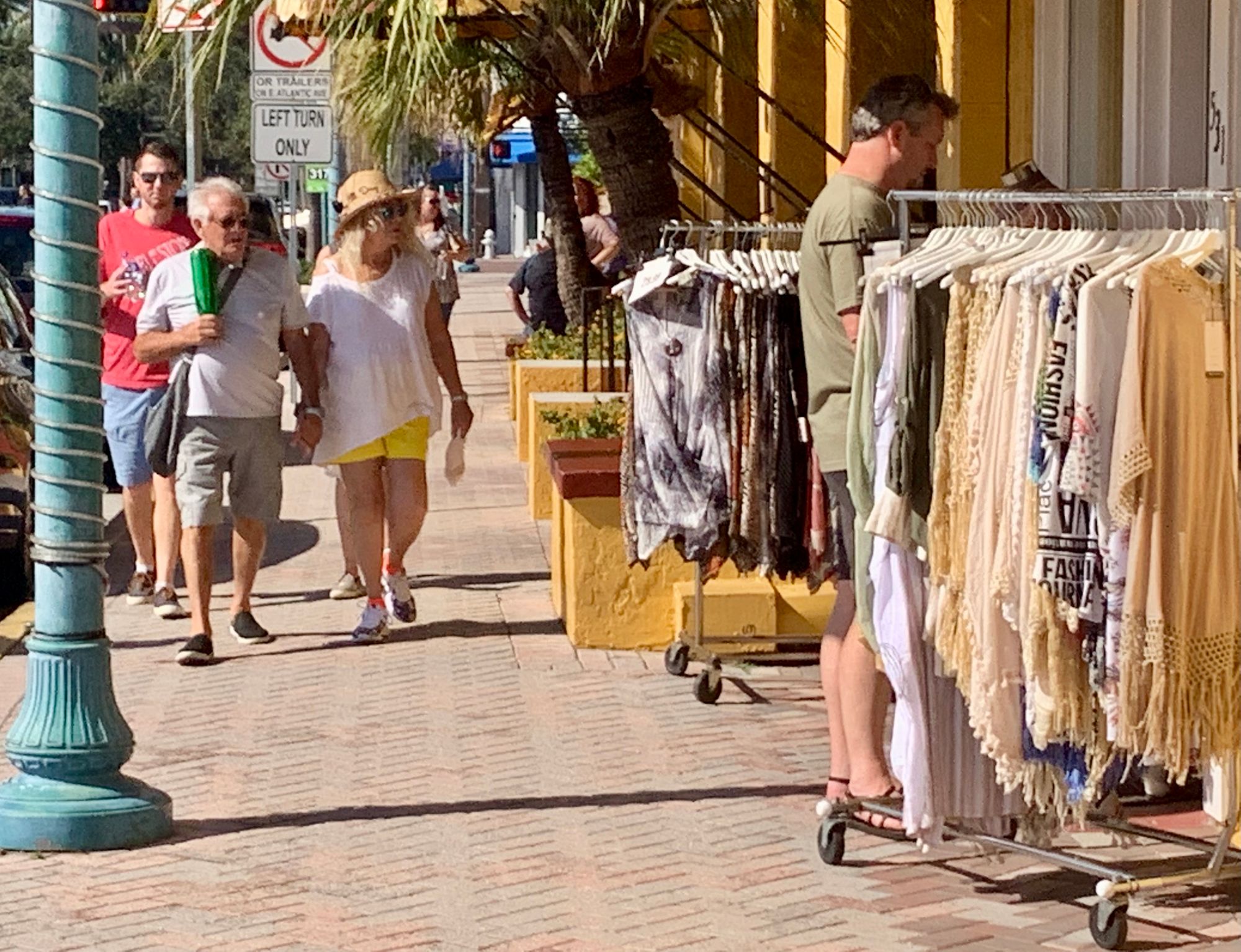
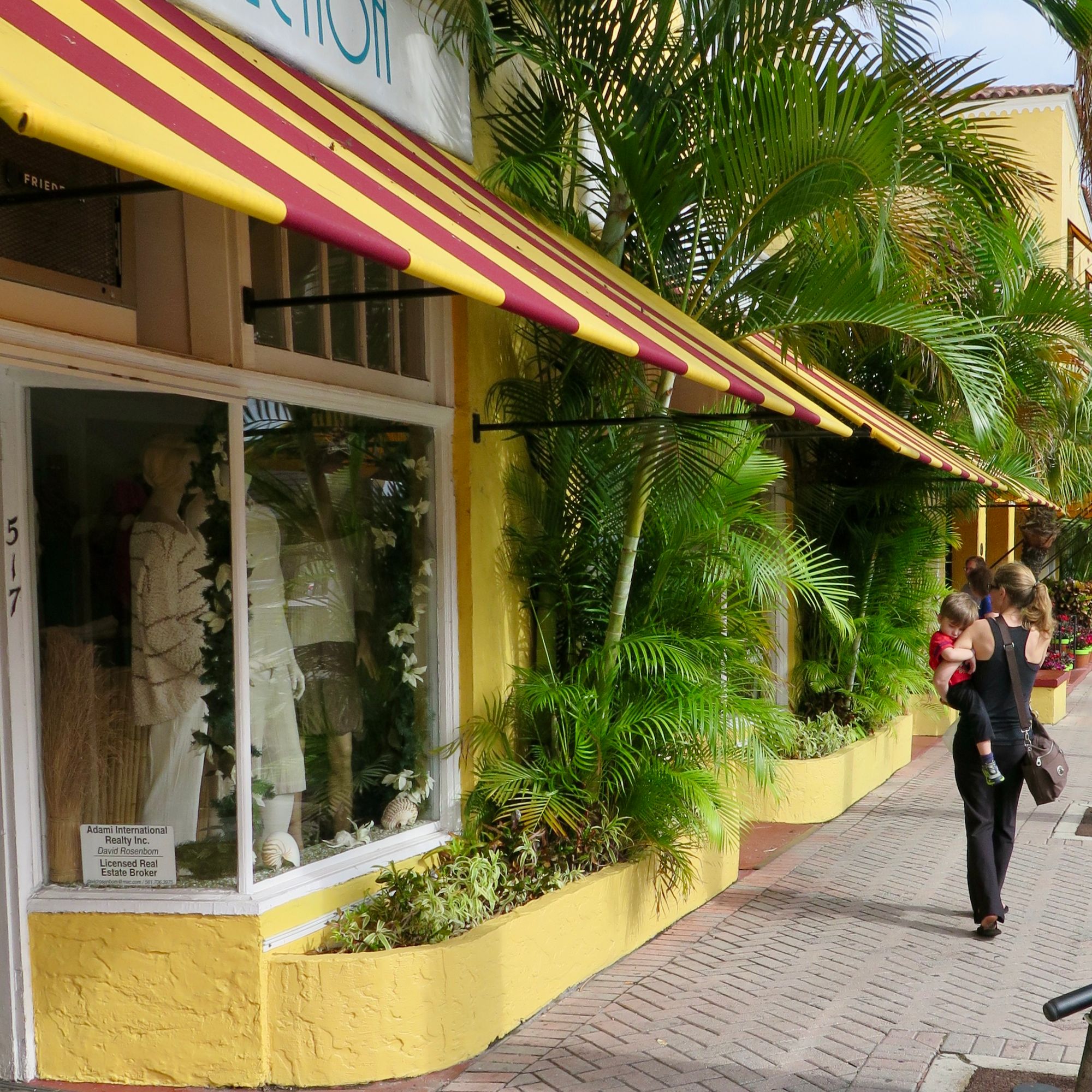
Fashion Shows on Atlantic Avenue
A strength of this hotel is also how it interacts with public life. For example, it hosts entertaining events and programs such as fashion shows. The center of a community is where things are happening and where people want to gather. The visual character combined with the personality and energy of this hotel is what makes it a great candidate for the heart of town. This role can be supported by enhancing the hotel's surroundings with wider sidewalks, squares, and "inside out" elements that would give it the kind of activity that a heart of town deserves.
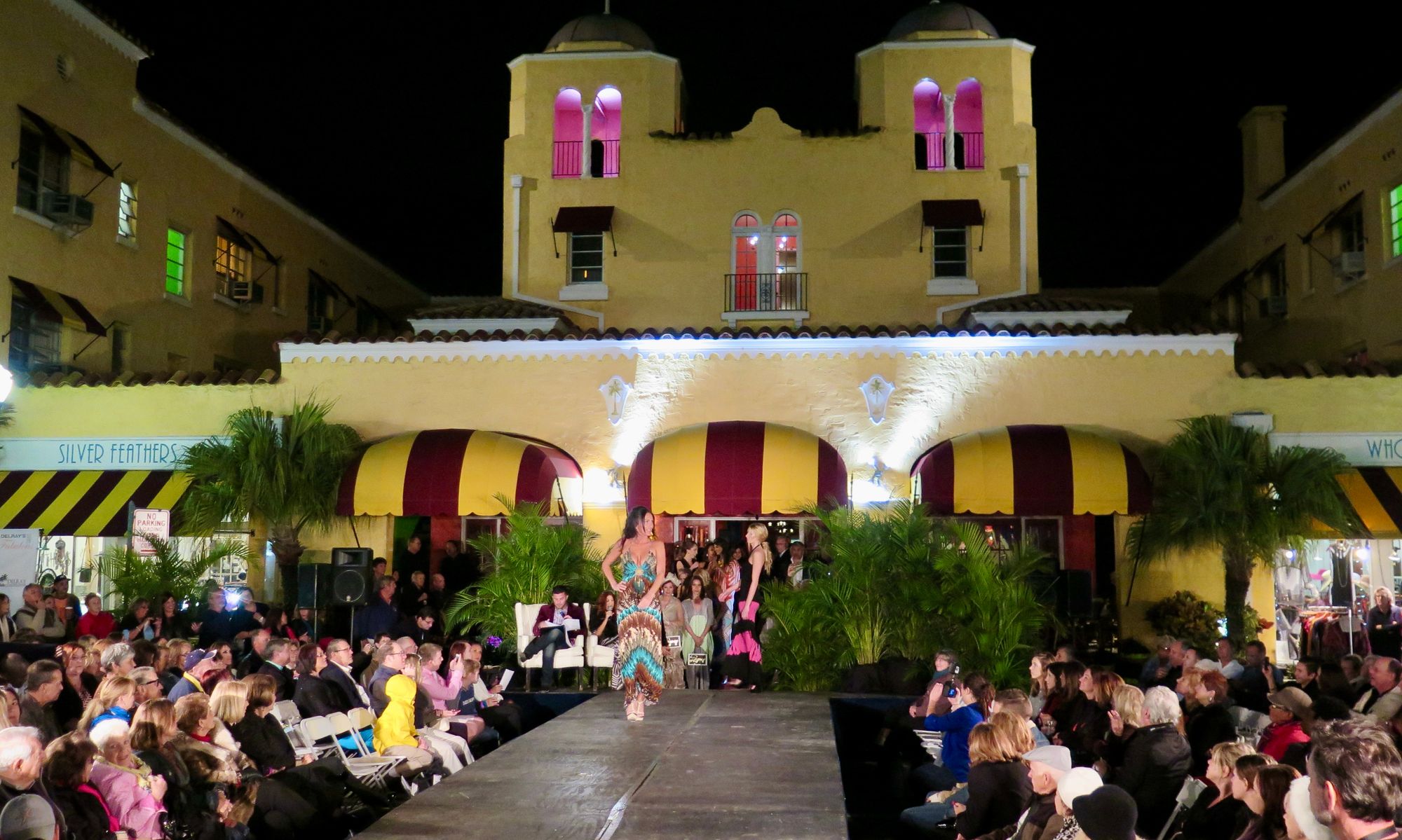
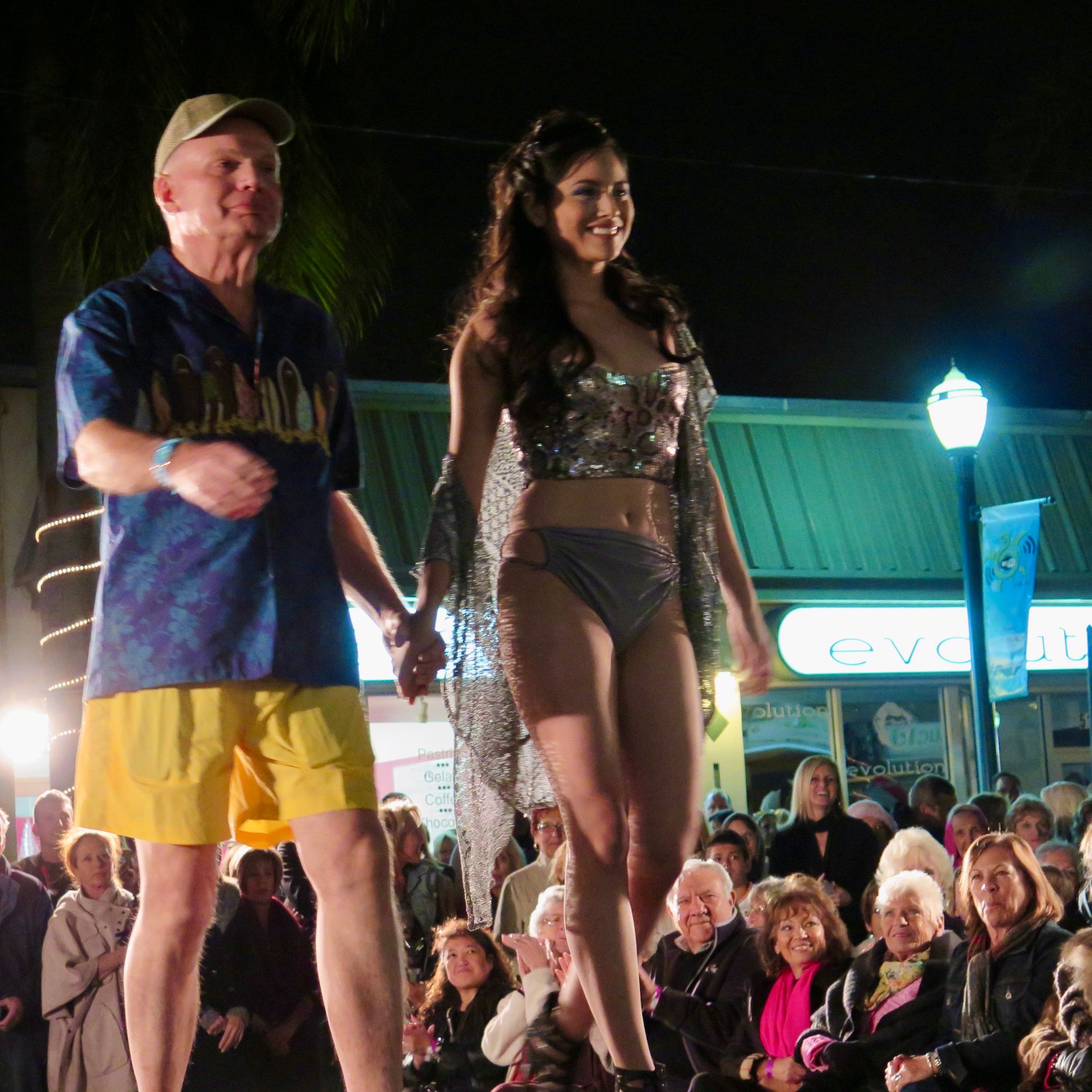

"Killer" Intersections and Turn Lanes - Atlantic Ave and Federal
The entire block on Atlantic between Federal North and South where the Colony Hotel sits is all about cars and turn lanes which dominate the most critical, central block on the Avenue. This block needs to become the signature block of Atlantic Avenue, acting as a key mid-point destination on the way to the ocean.
It is at Federal southbound that Atlantic Avenue turns from a pleasantly narrow main street at the core blocks to a four/five lane road with additional parking and turn lanes in both directions. Because of the way this added car capacity negatively influences the atmosphere and sense of comfort and security for pedestrians, it cuts short the "life" of the main street that thrives just before this intersection.
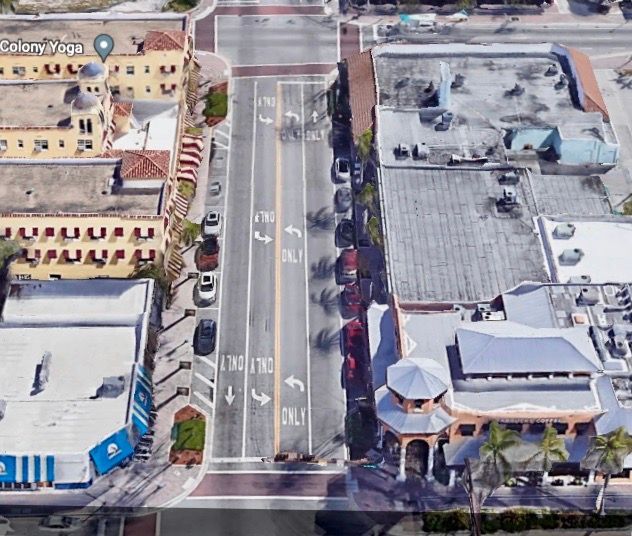
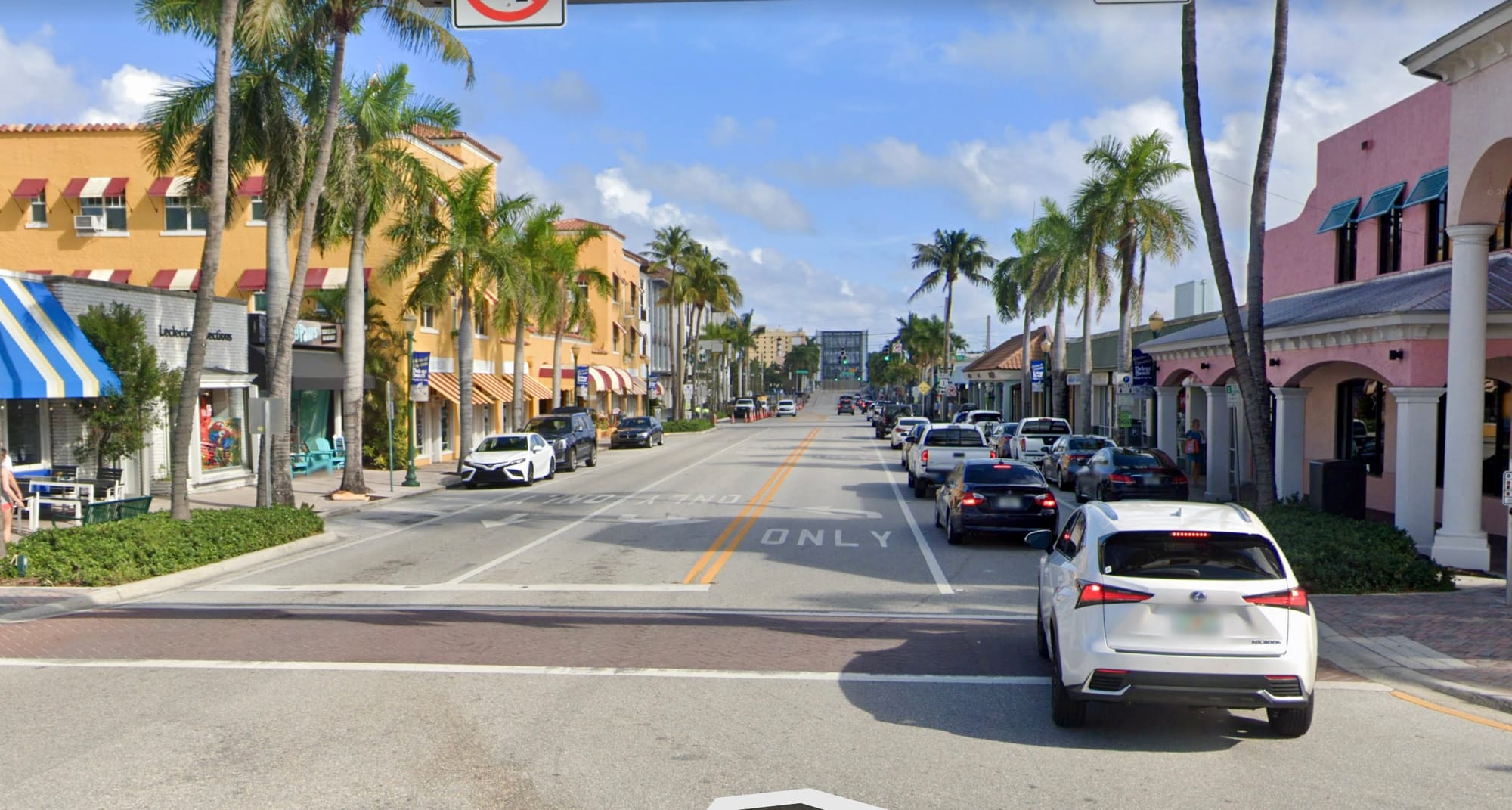
How Turn Lanes Limit Activity at the Intersections
Atlantic Avenue's Main Street potential has been greatly limited by the turn lanes at many of its key intersections squeezing out pedestrian activity. The intersections where there are turn lanes are those where possible opportunities to develop Atlantic's value are greatly diminished. Widening streets via turn lanes means taking away space from people and businesses at the corners, which erodes social and commercial life on the most important block and the most important intersections of the city. This block needs to become the centerpiece of Atlantic Avenue.
Killer Intersection - Federal Southbound and Atlantic Ave
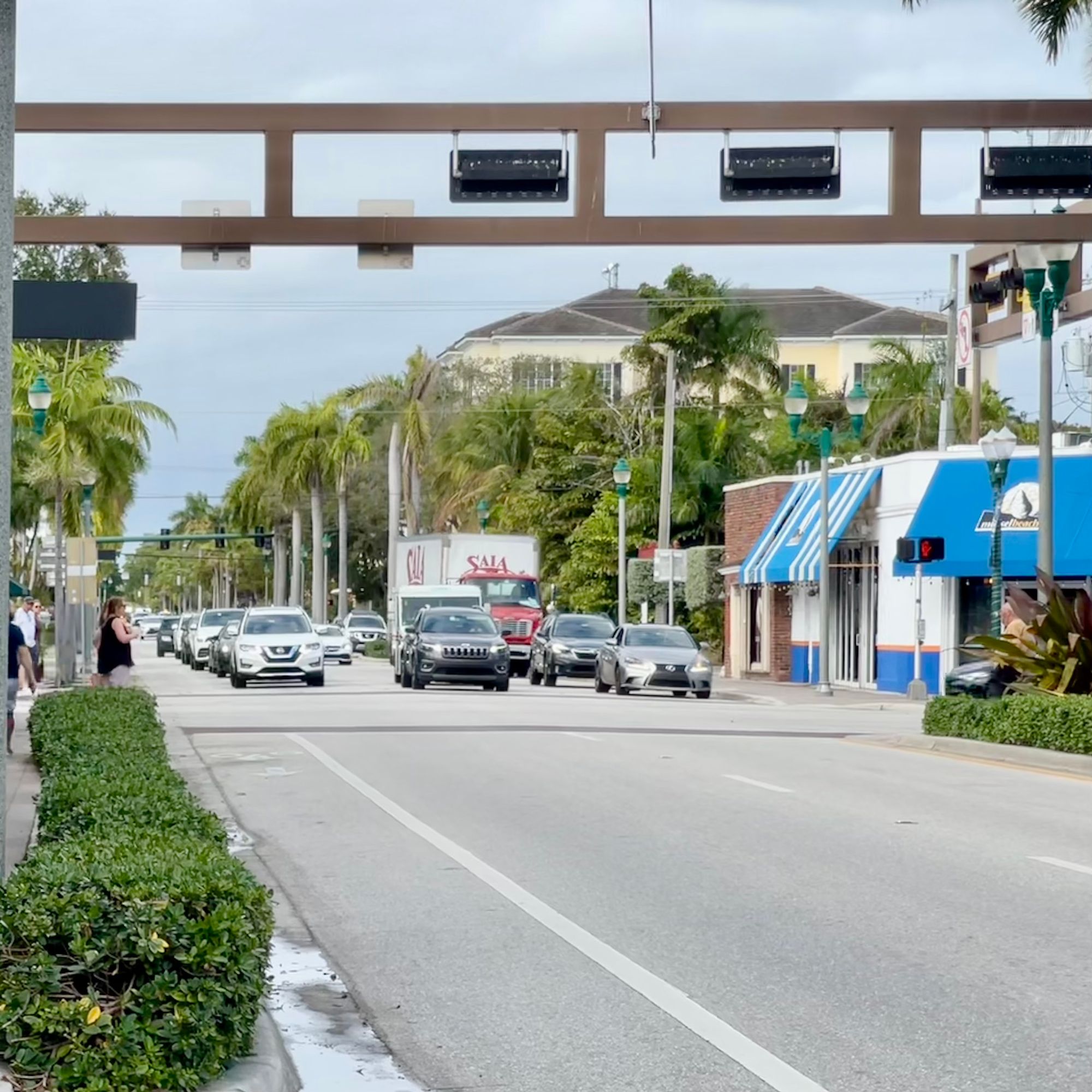
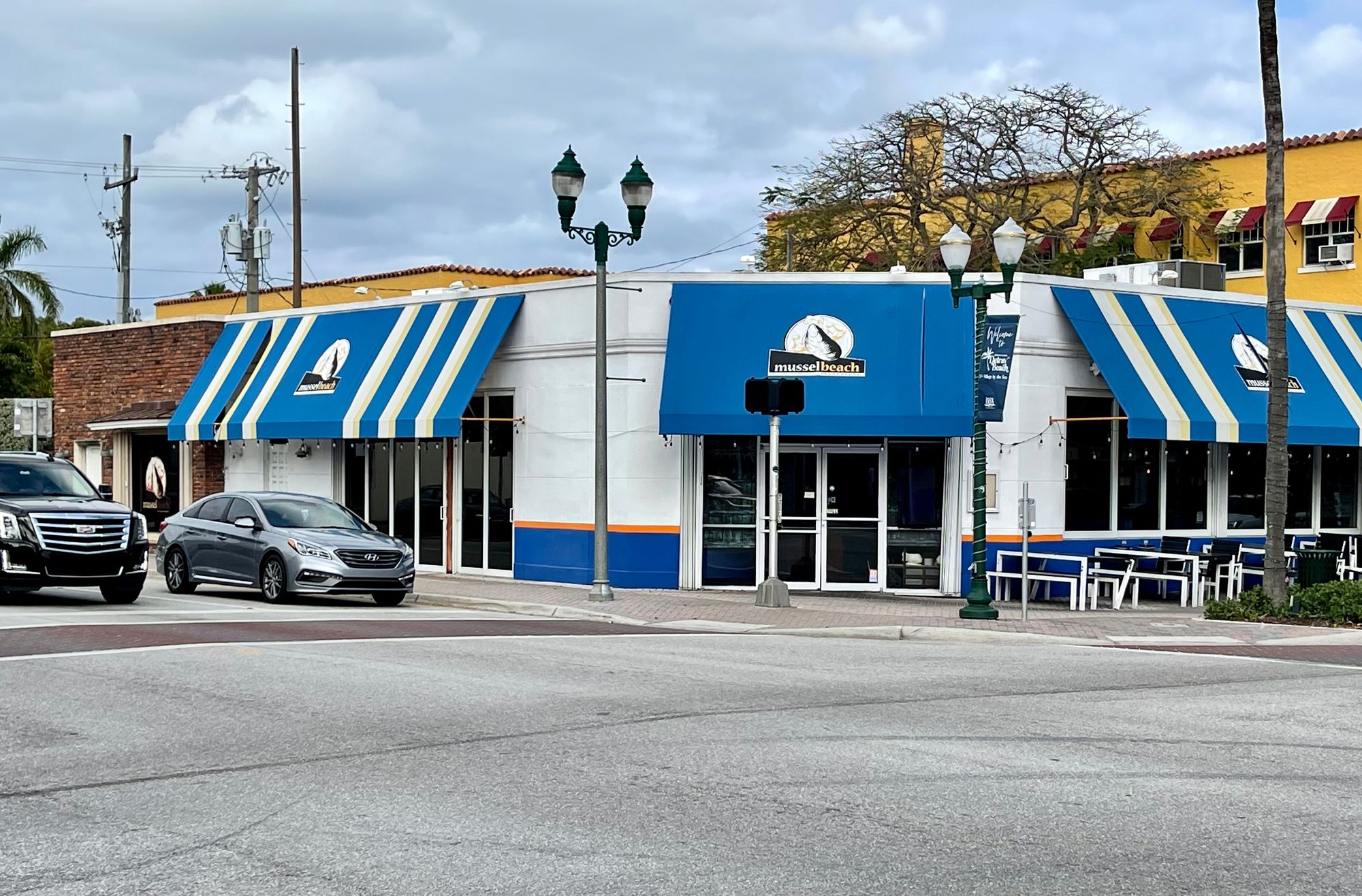
Killer Intersection - Federal Northbound and Atlantic Ave
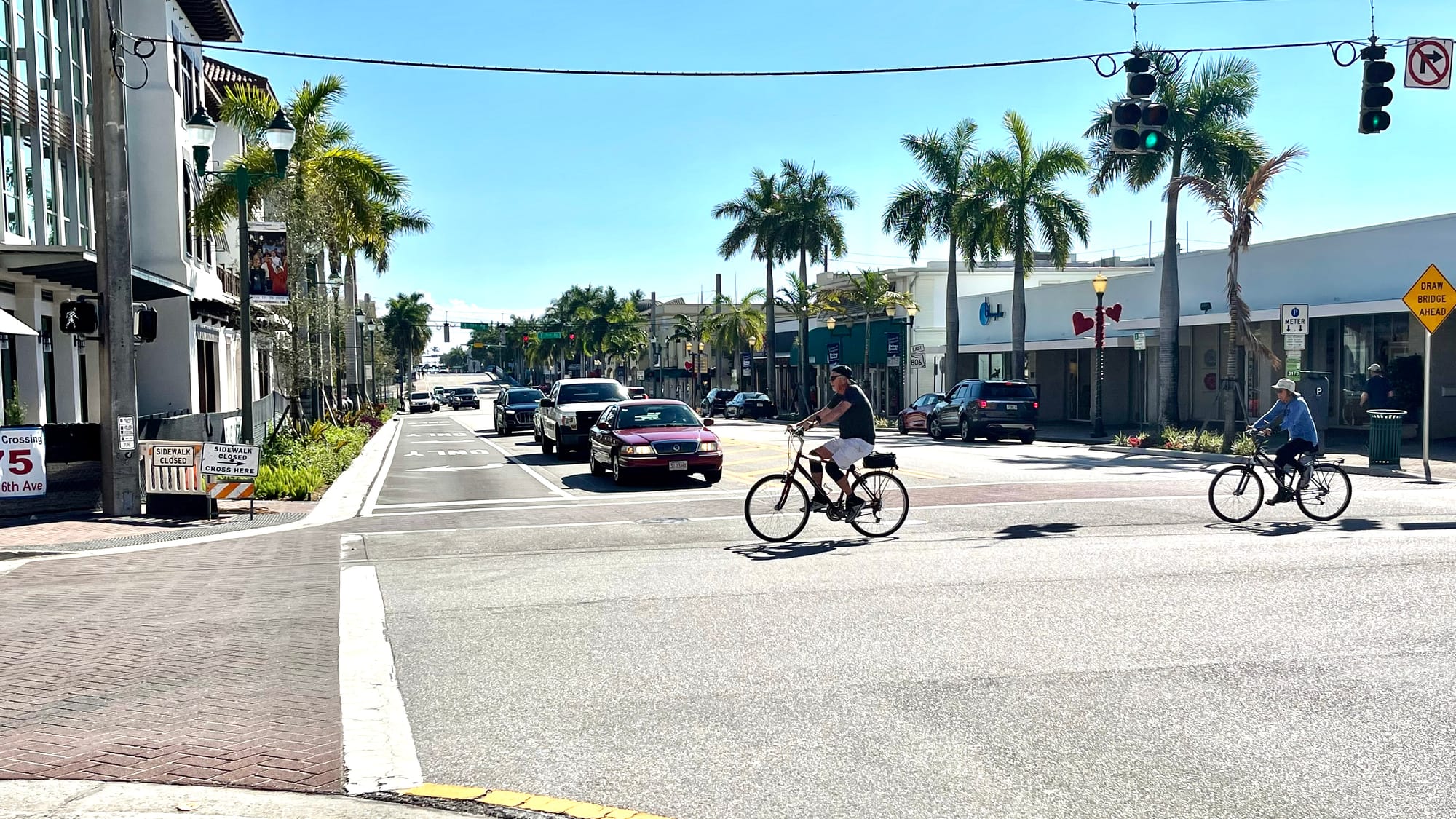
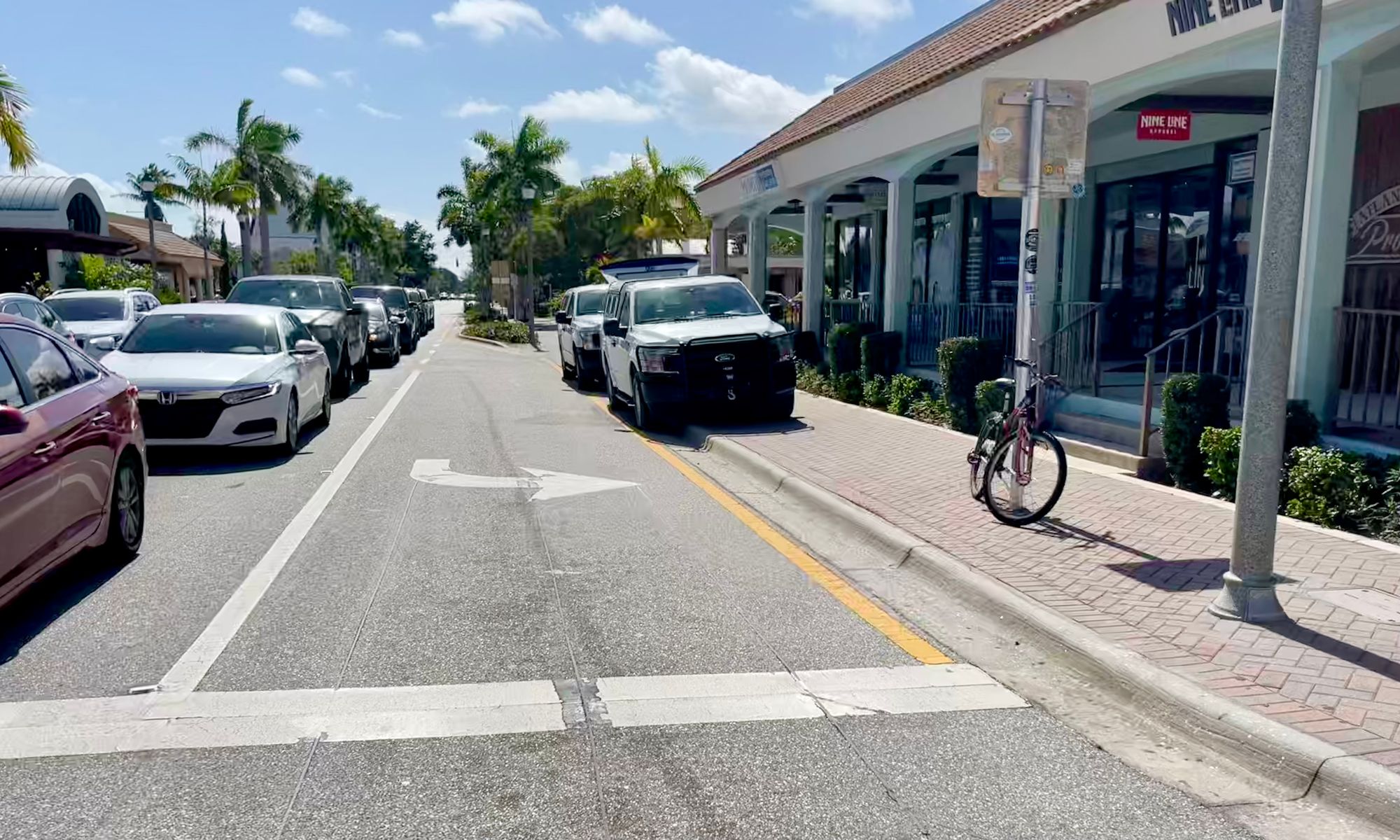
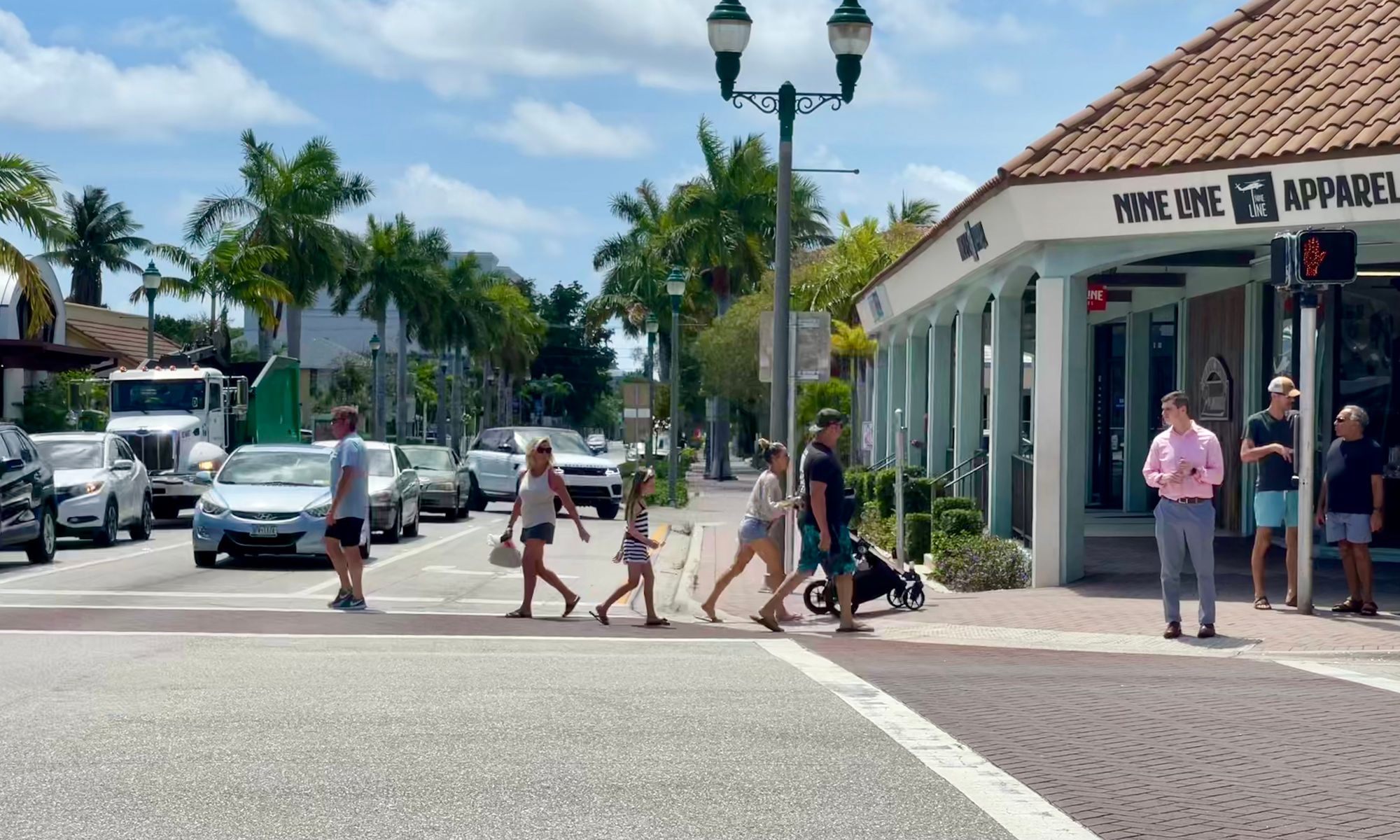
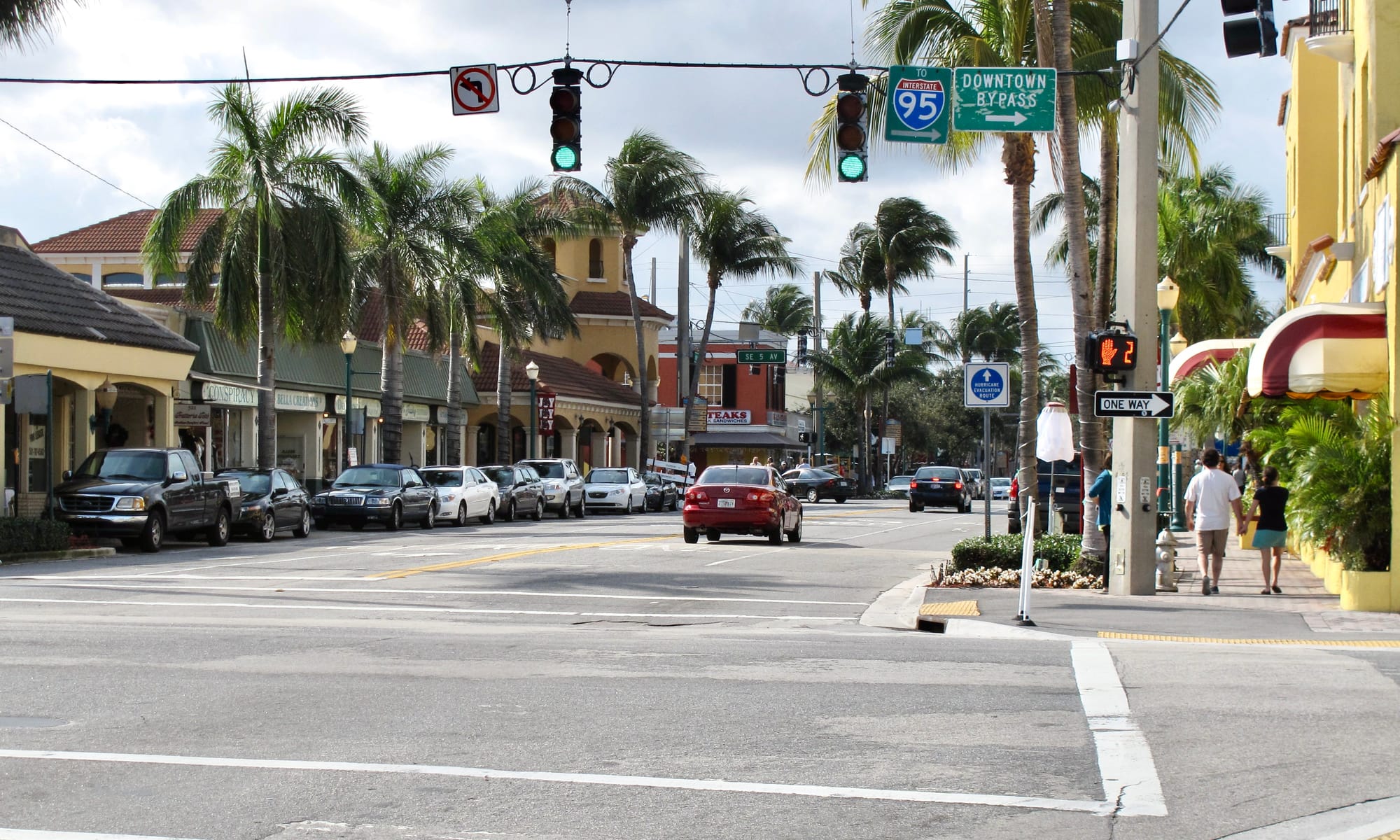
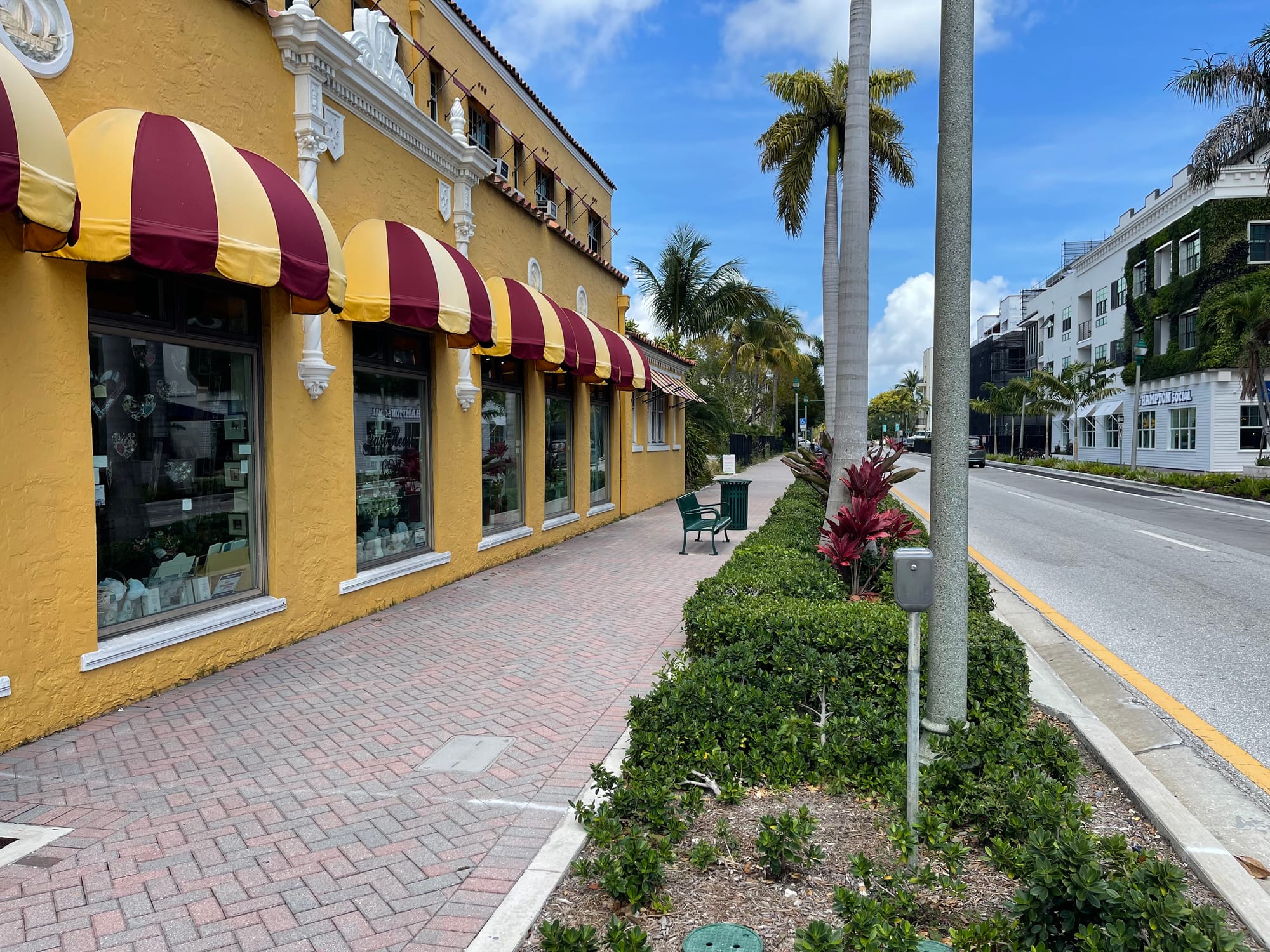
Atlantic Crossing - Architecture That Doesn't Want to Be There
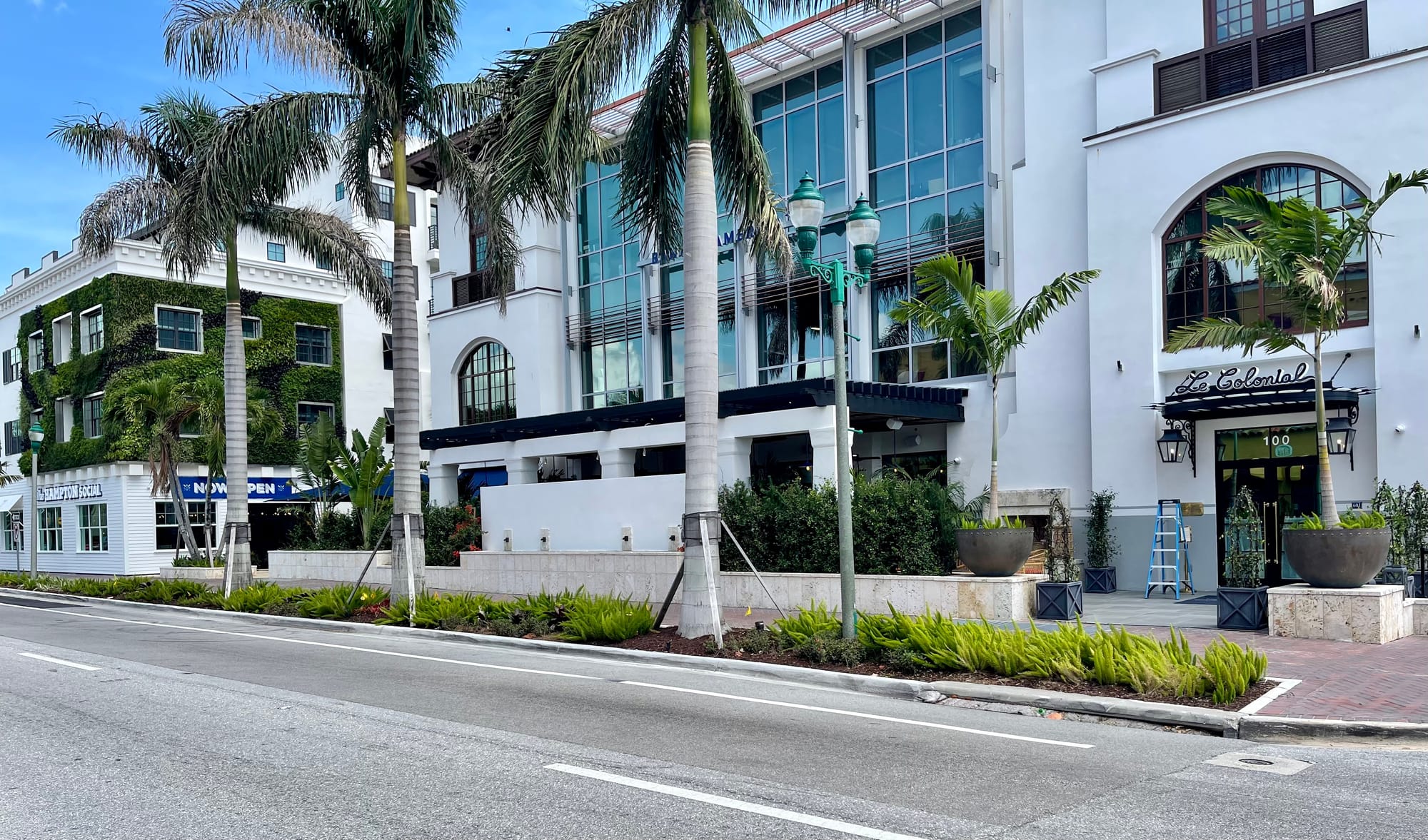
Atlantic Crossing is essentially an isolated island that interrupts the flow of social and commercial life on this block, both North on Federal and as a gateway to the Inter Coastal and the Ocean.
This is one of the most important intersections on Atlantic Avenue. The main building here is closed off from the Atlantic Avenue sidewalk leading to the ocean by a wall of plants and a narrow sidewalk. There is a blank wall on Federal that hides an outdoor cafe and the "street" or walkway between the two building is defined by over-sized planters. It feels like a salmon course as one wanders down a desolate path to nowhere.
The planting along both Federal and Atlantic serves as a kind of wall, suggesting that the building does not wish to have any people around it. This creates an aloofness that doesn't help this key section of Atlantic Avenue thrive, but rather makes the corner feel disconnected and like a hostile and uncomfortable space.
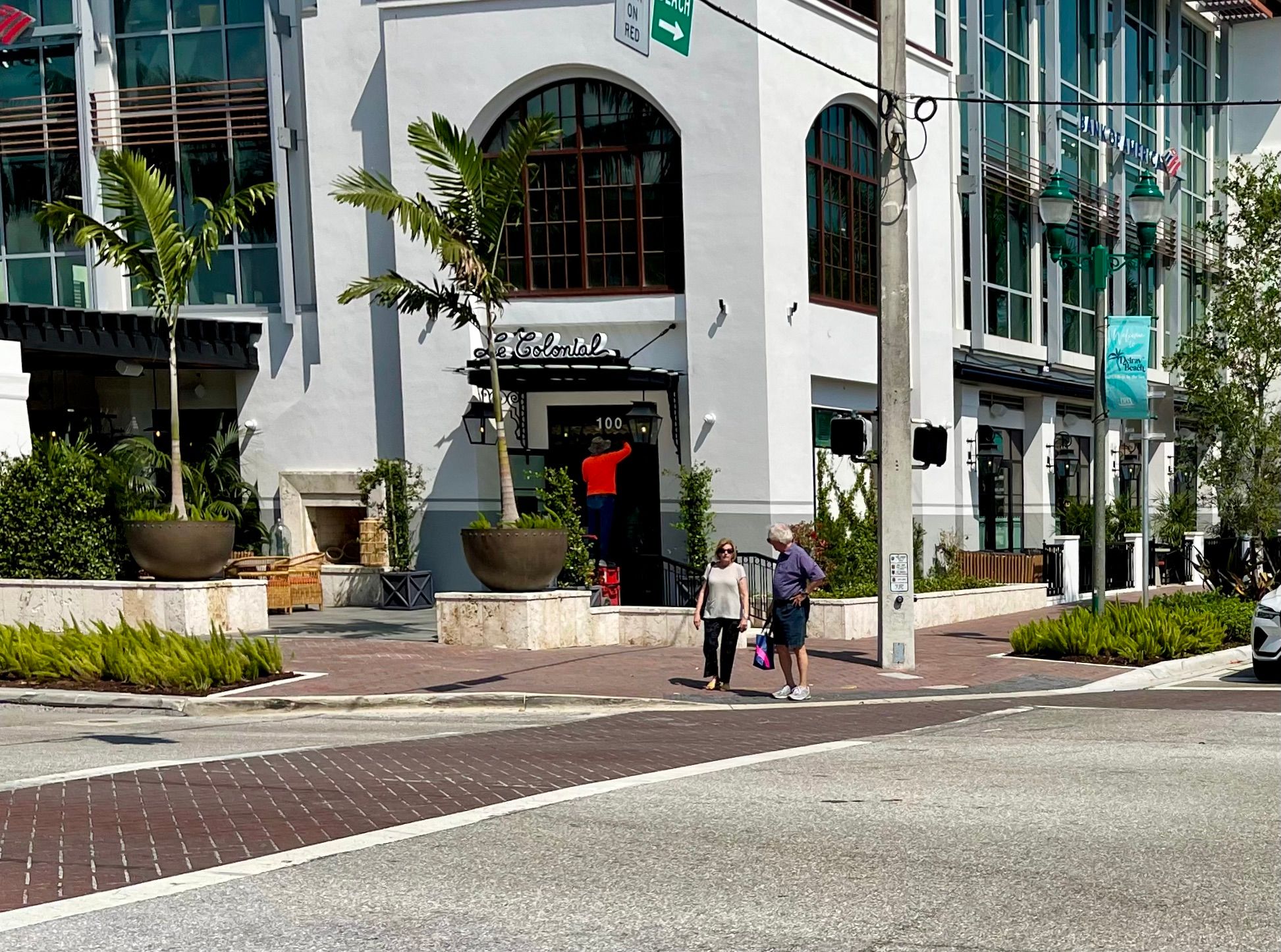
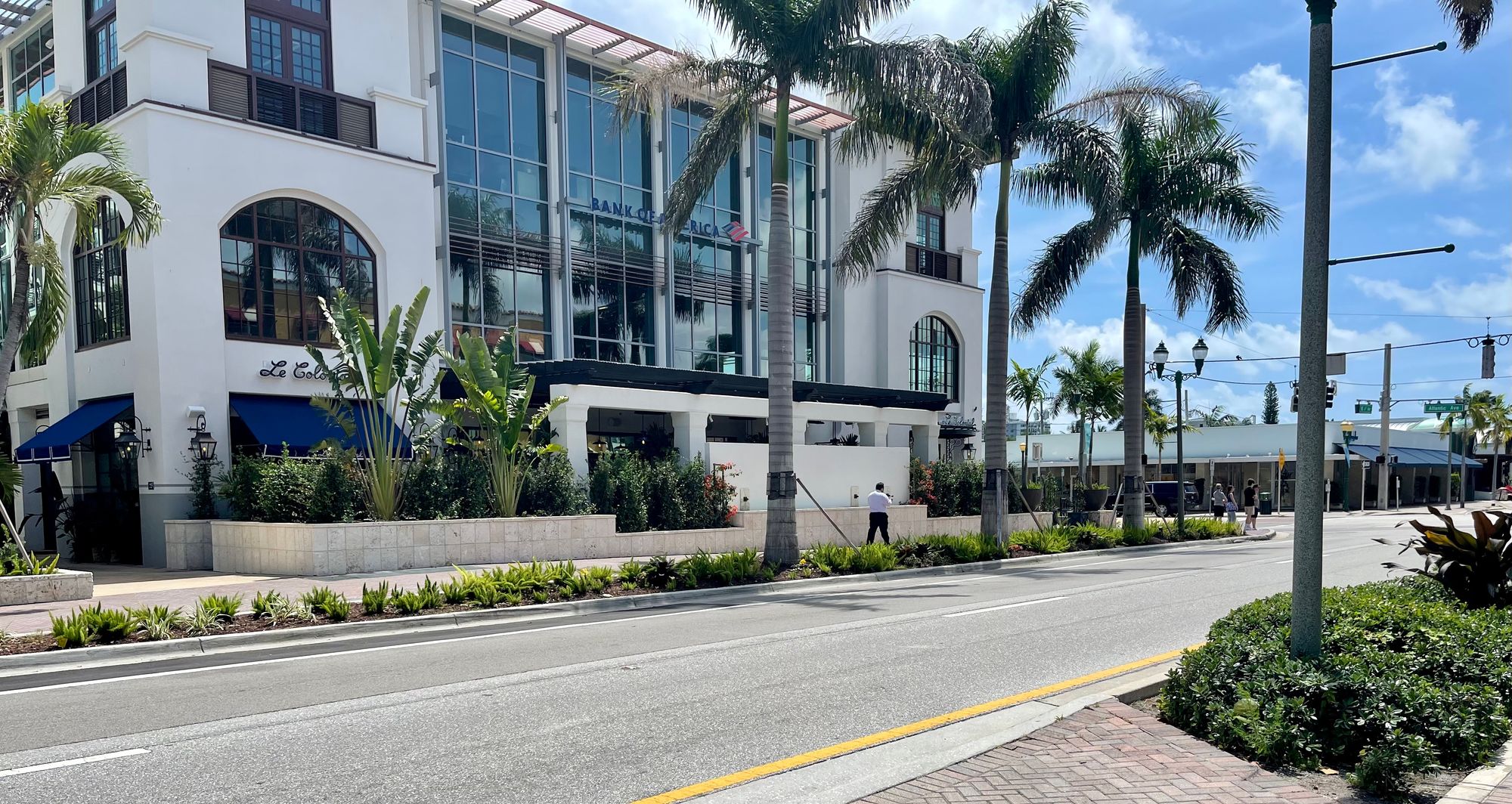
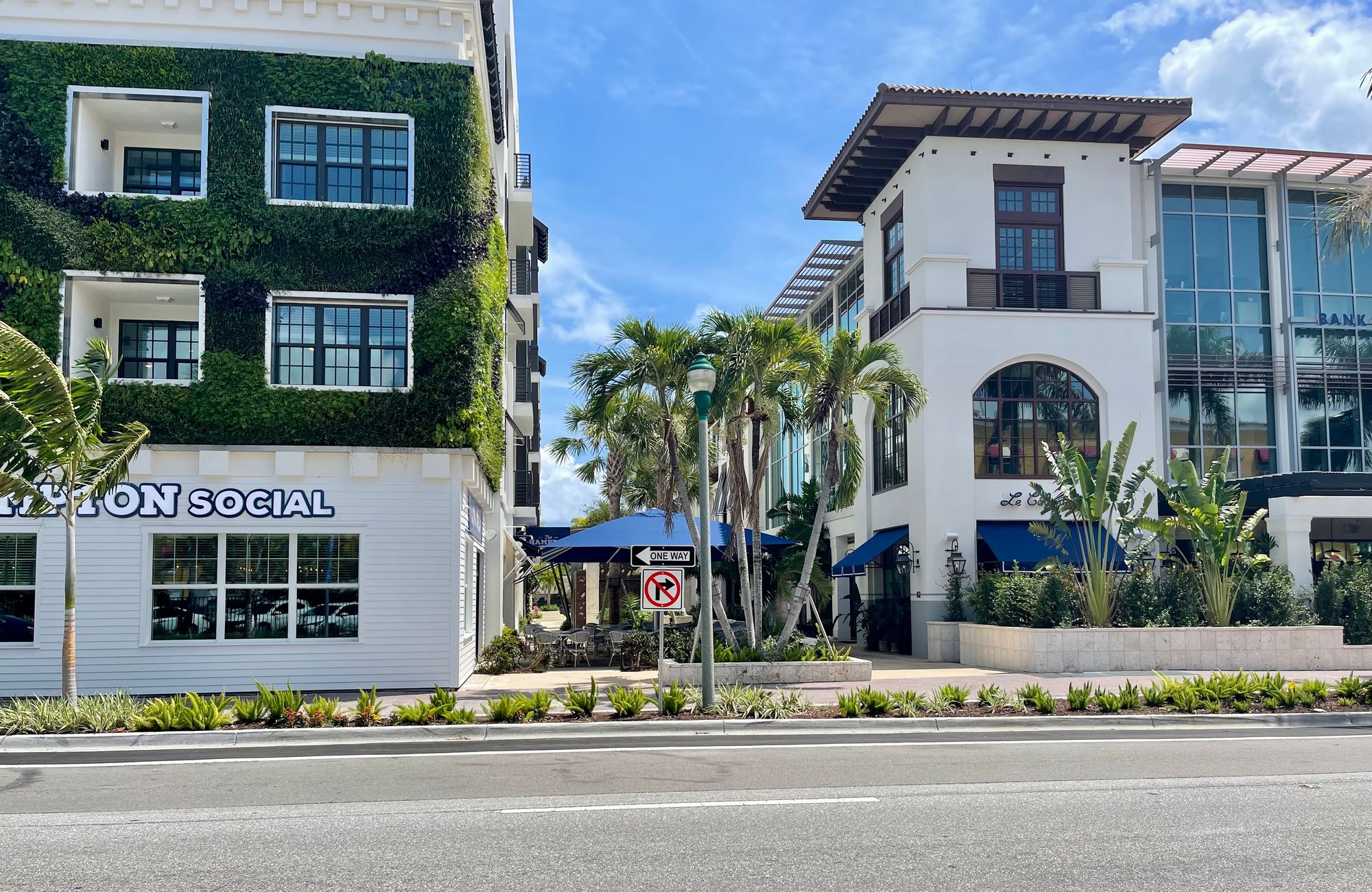
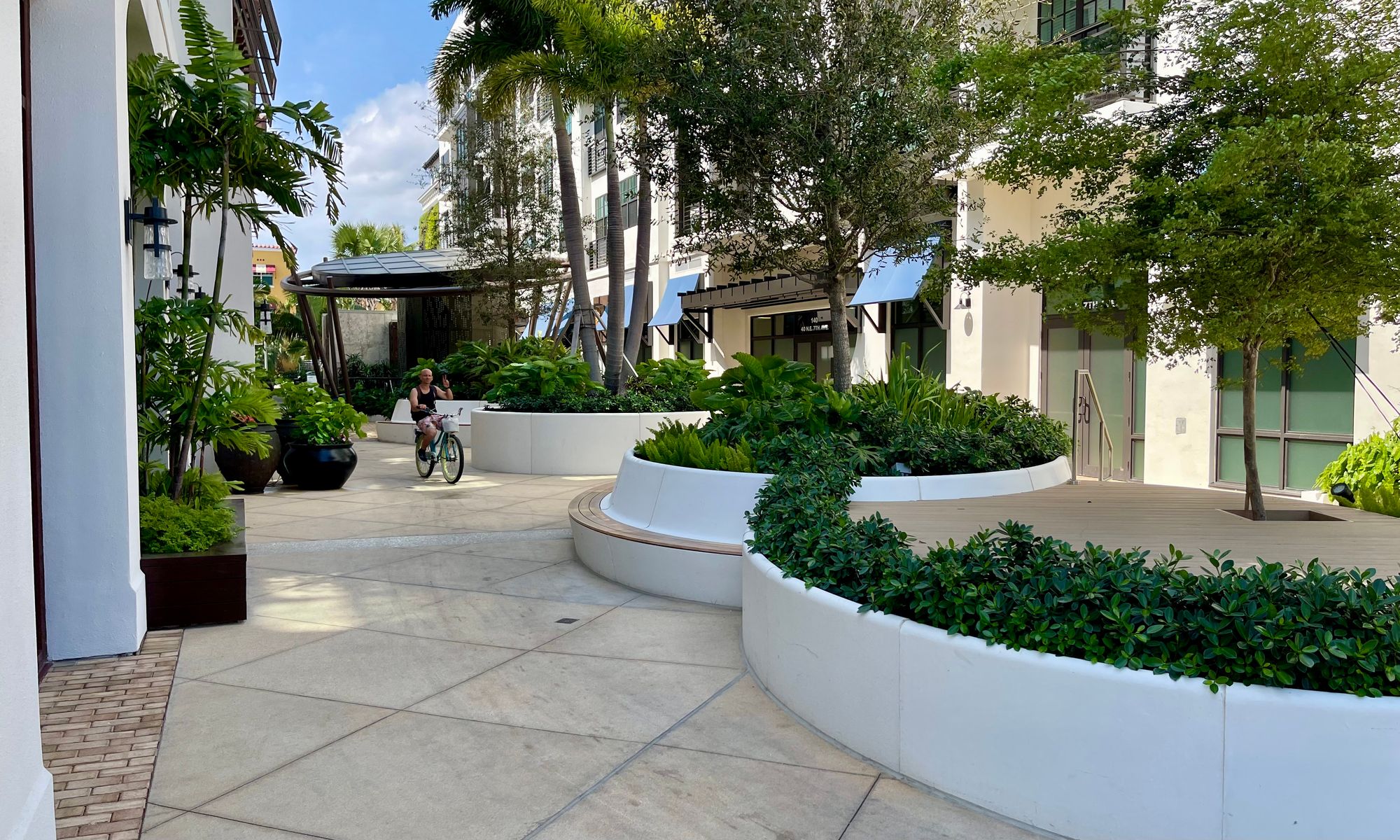
The lack of interaction with the street means no visual friction either, meaning that vehicles move fast through this intersection because there is nothing to grab drivers' attention. What's more, with the parking for this building being underground, visitors can come and go without participating in Atlantic Avenue street life at all.
The Worst Sidewalks on Atlantic Avenue
Despite the blocks between Federal and SE 7th Street on Atlantic Avenue being full of people heading to and from the ocean, there is a significant opportunity for improvement here since the sidewalks are way too narrow and in terrible condition. This walk has the potential to have a series of interesting destinations, including the Intracoastal, building anticipation as it leads up to the ultimate destination of the ocean.
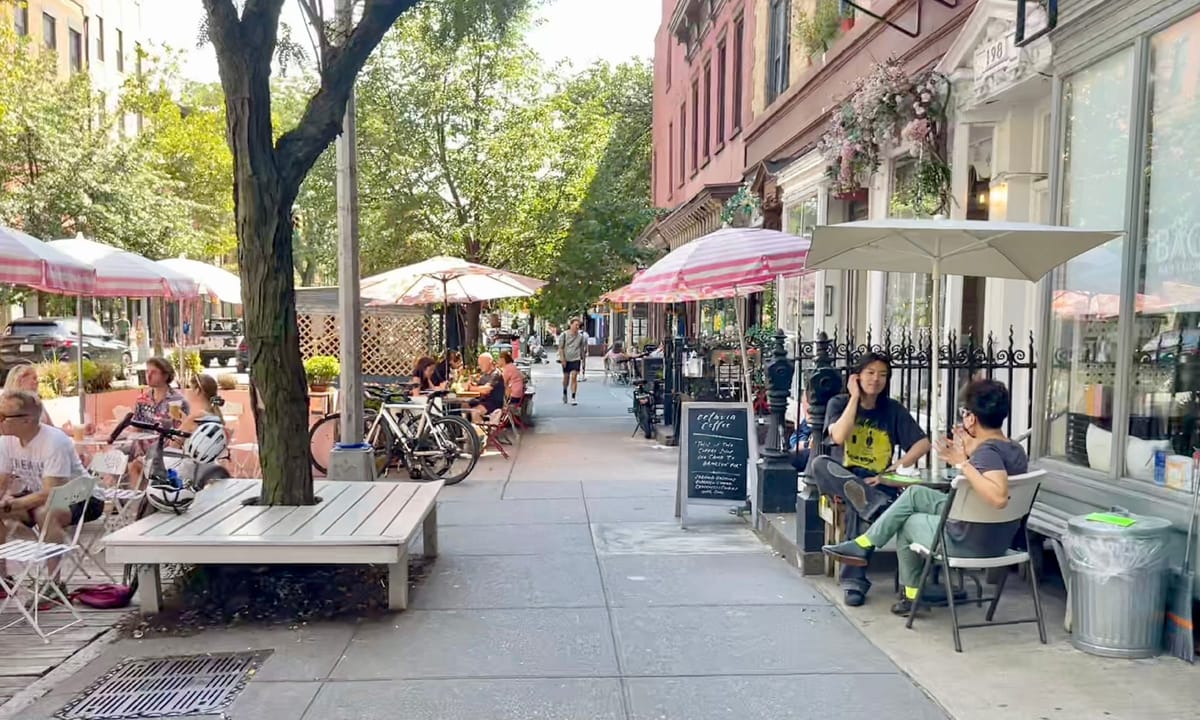
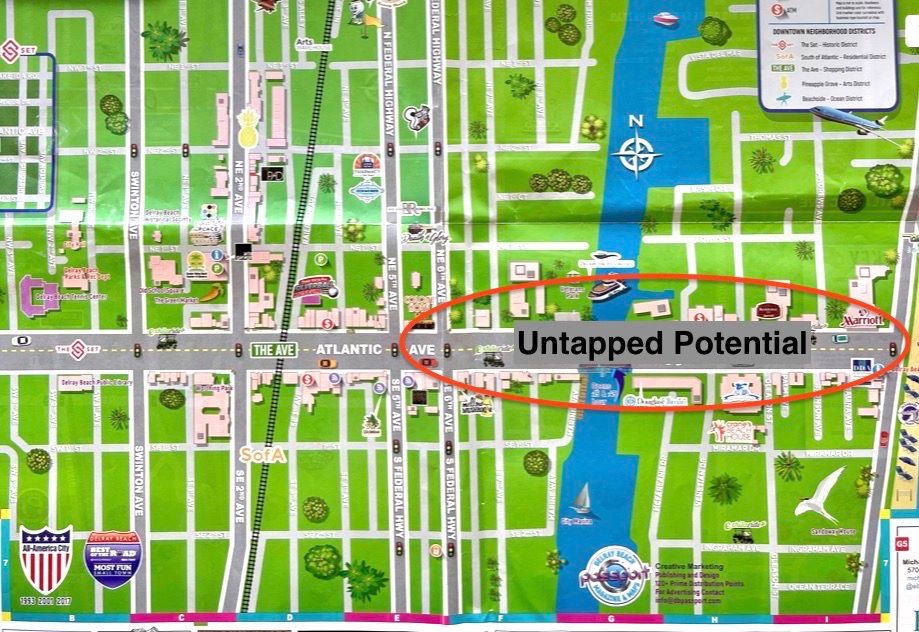
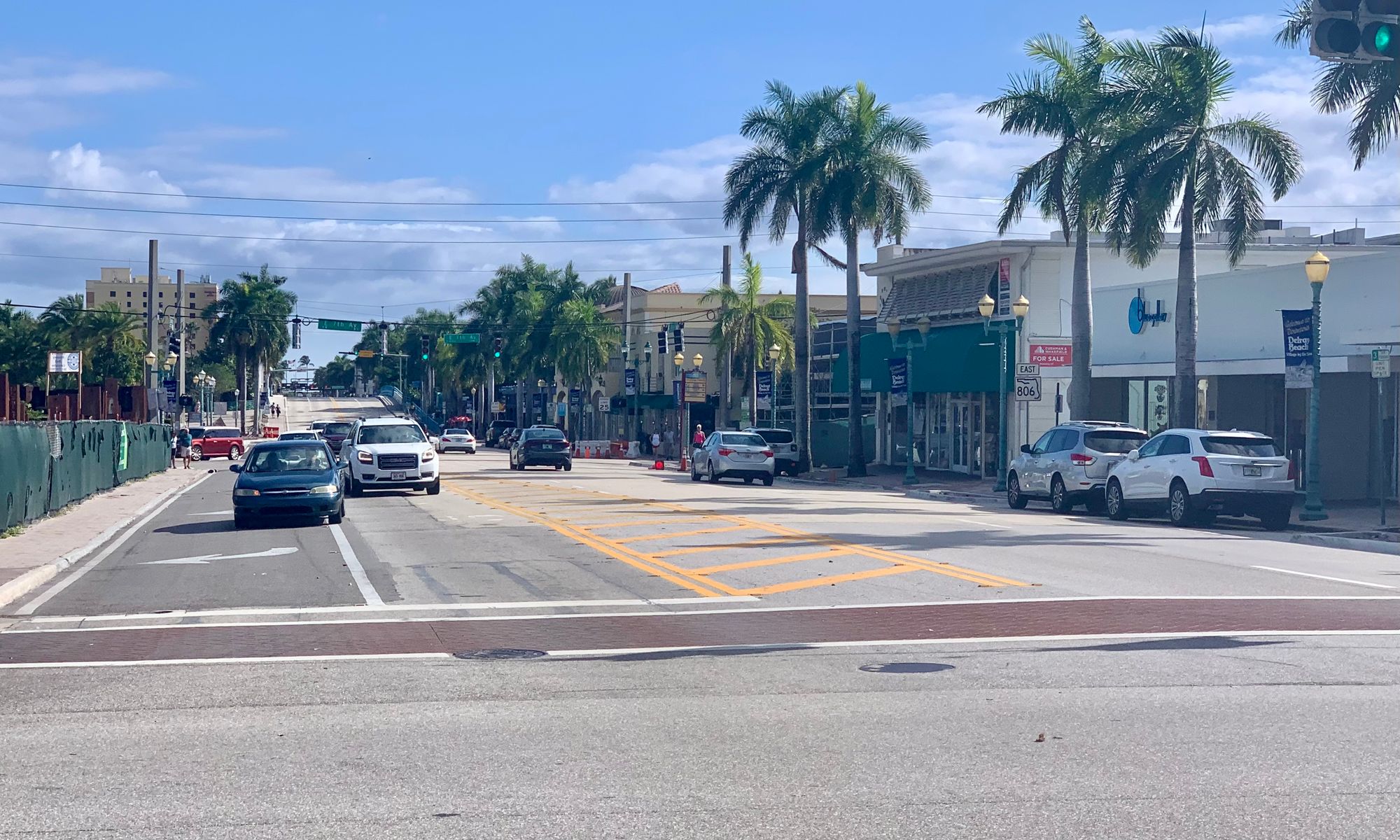
Currently, car space dominates here and the pedestrian sidewalk is nearly invisible and hard to find. Having a striped, no vehicle zone, makes no sense in what should be a very active area... Adding just the space dedicated to that area to the south sidewalk would have an enormous impact on the restaurants along that stretch, giving them more space for seating and attracting more visitors.
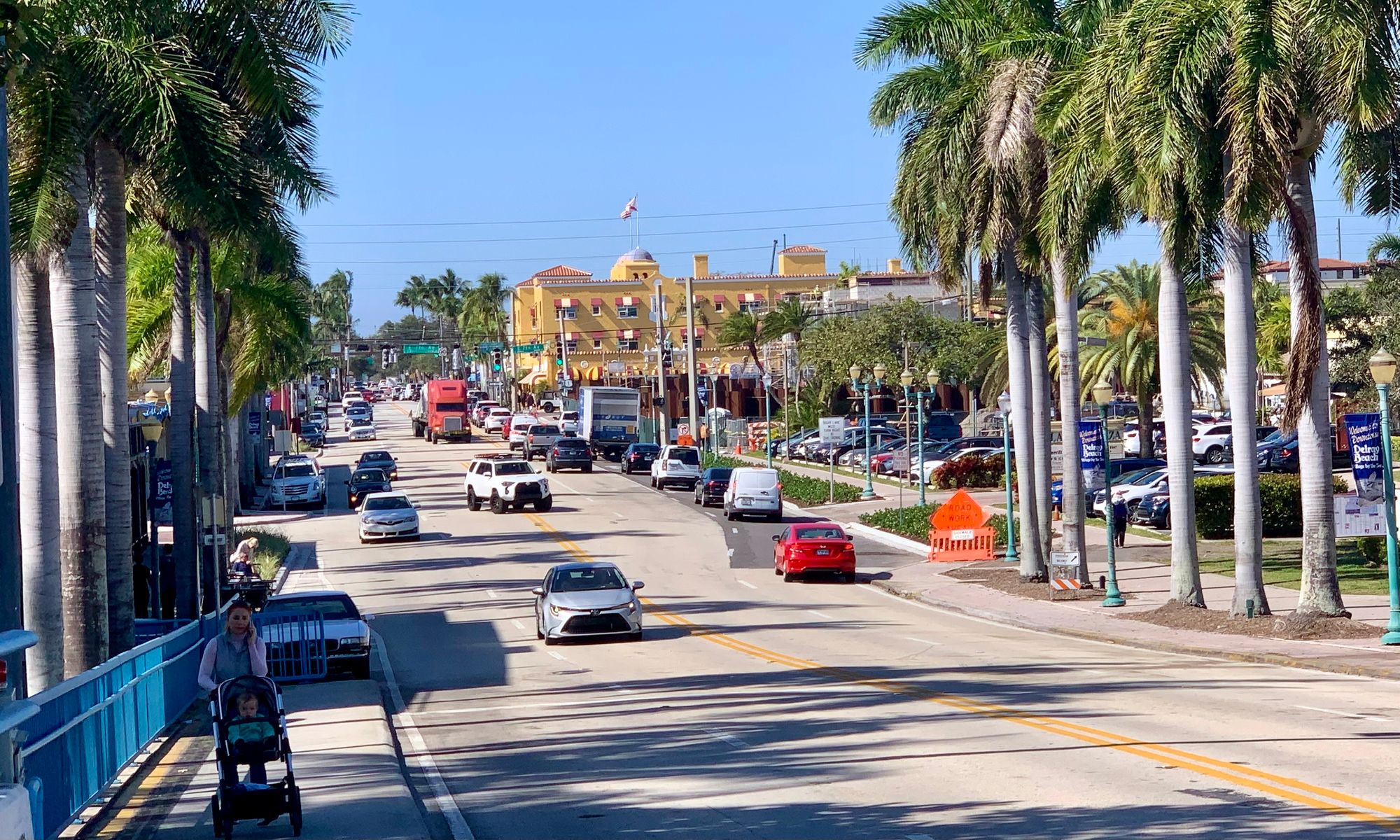
The sidewalks are narrow, uneven, and even dangerous to walk on.
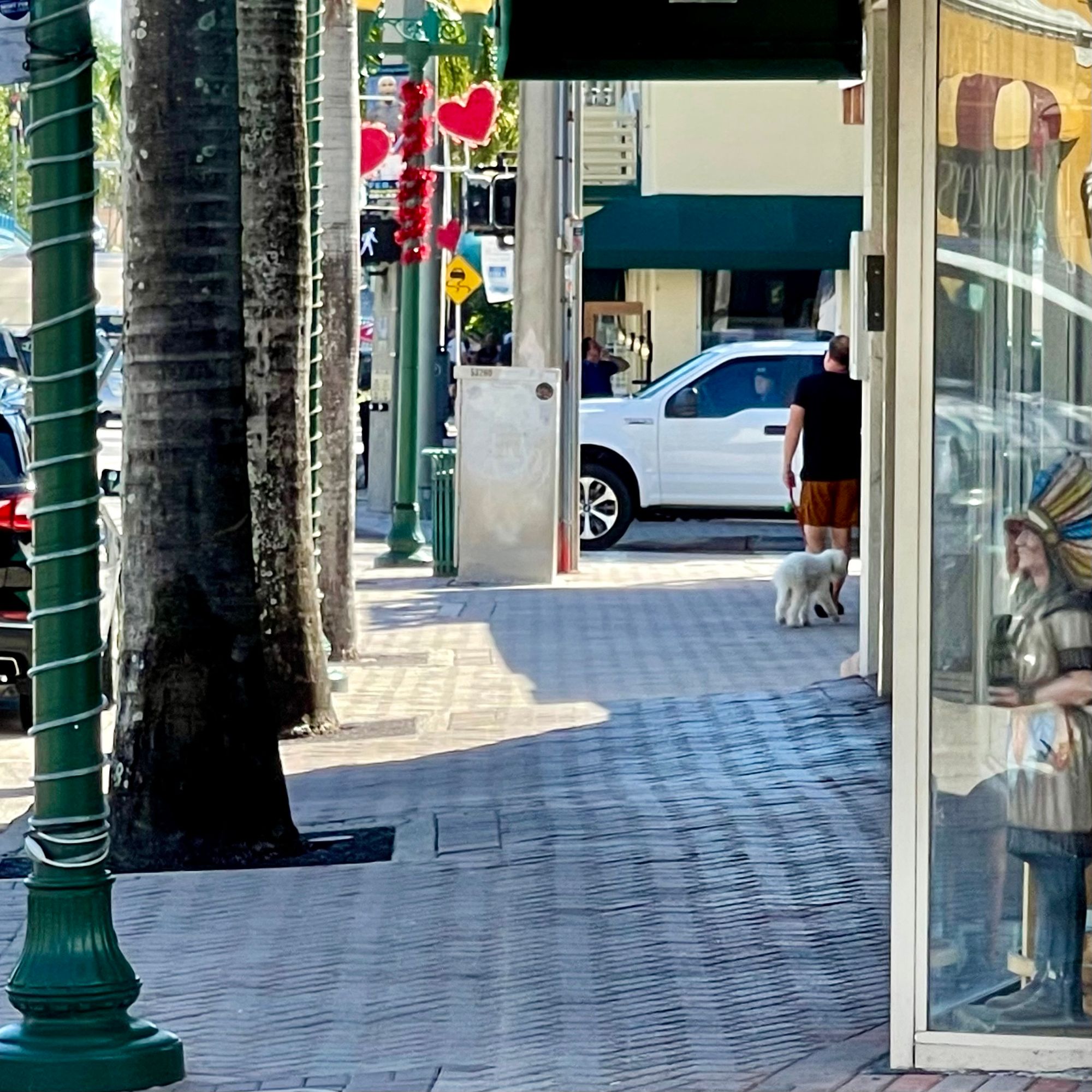
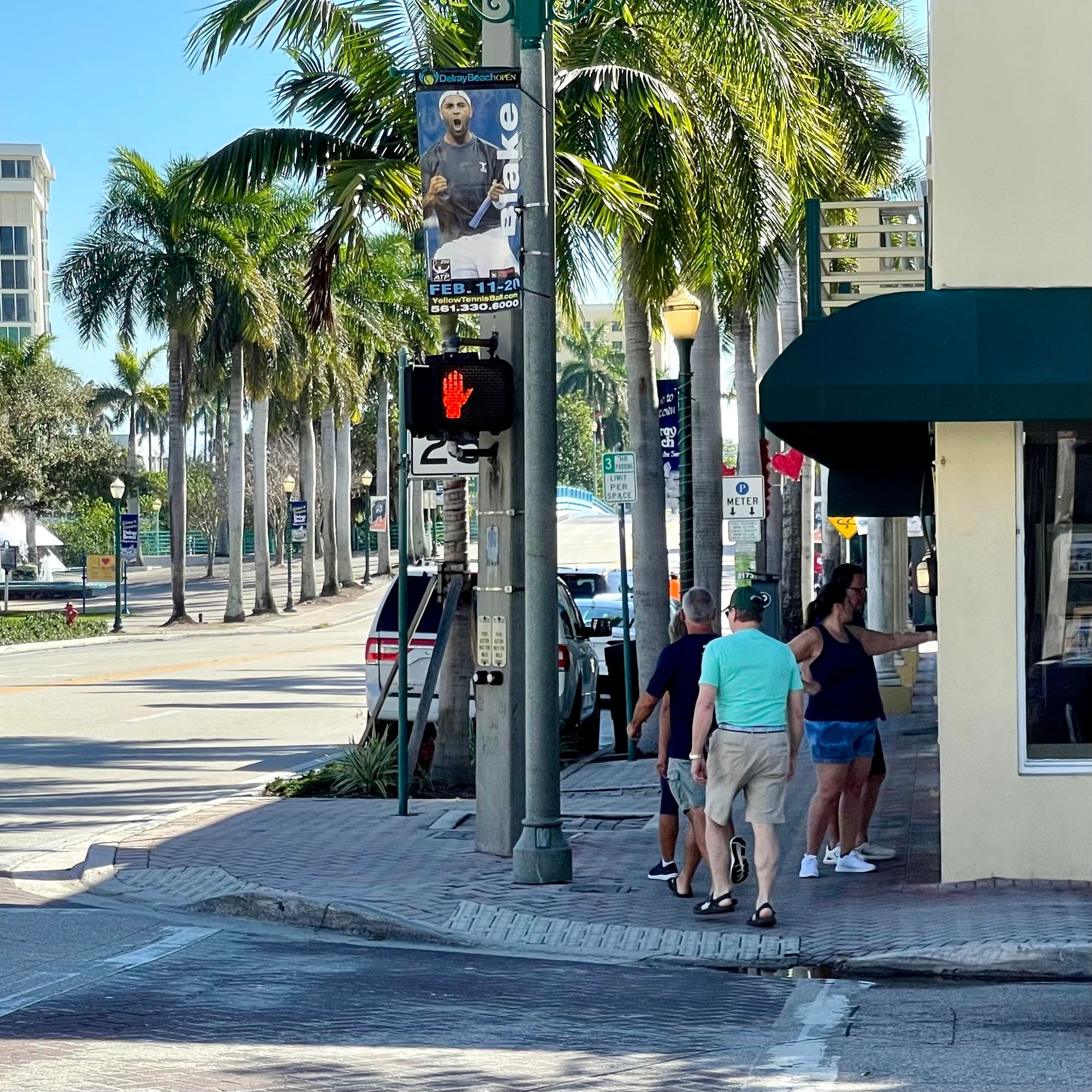
At some points, such as outside J & J Seafood, the sidewalk slopes down into the street, and because of constant vehicle traffic, it feels very uncomfortable. People are trying to get through, squeezing past those sitting outside the restaurant. There is no joy, no socializing, no having fun on this section of sidewalk like there is at East 2nd and Atlantic. Plus, Atlantic Avenue here is six lanes wide including parking. It is wide, noisy, and hostile for pedestrians.
Expanding the sidewalk area would allow cafes and other activities to spill out onto it, exposing the retail here, attracting more foot traffic, and making this stretch an instant success.
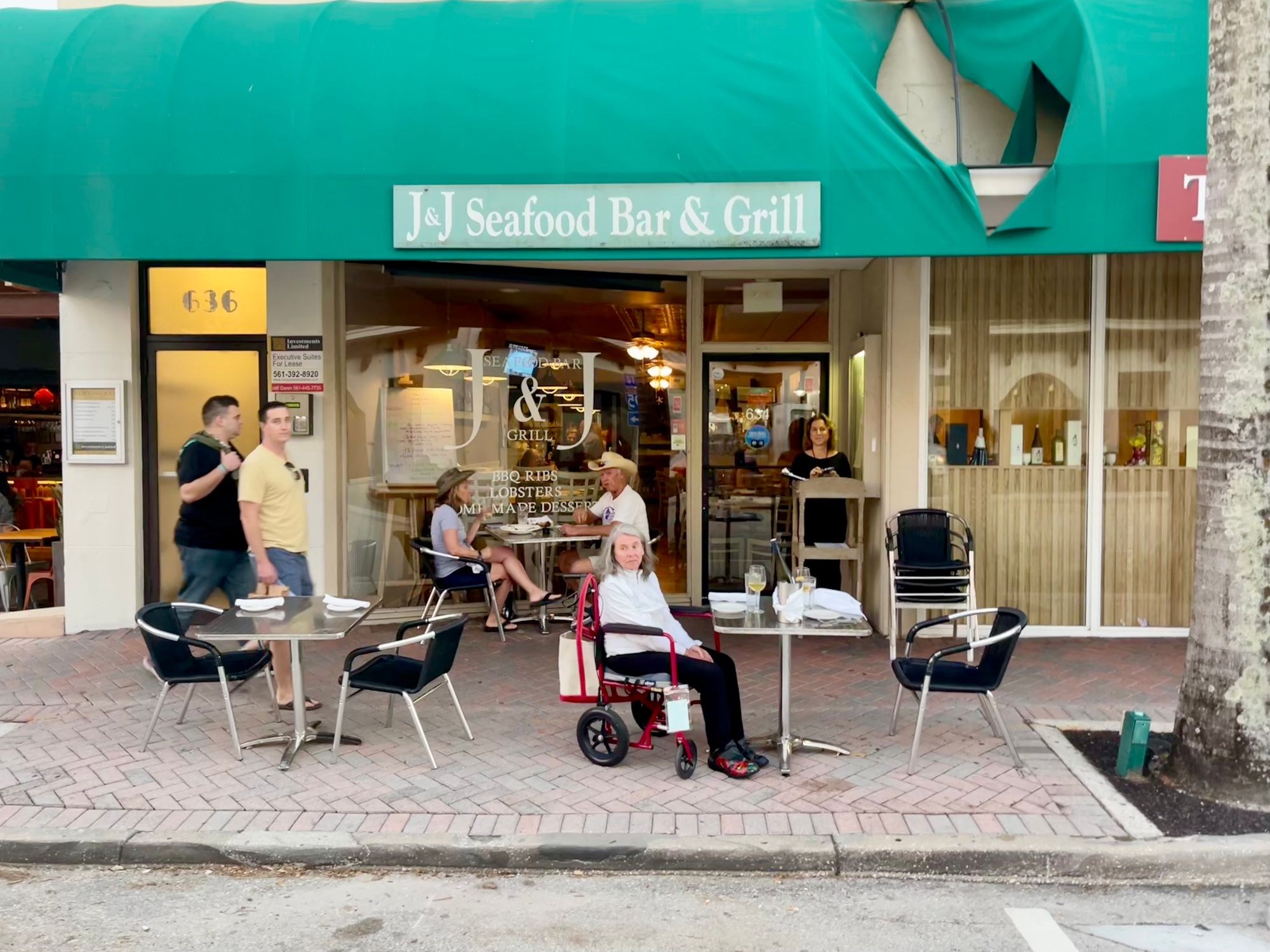
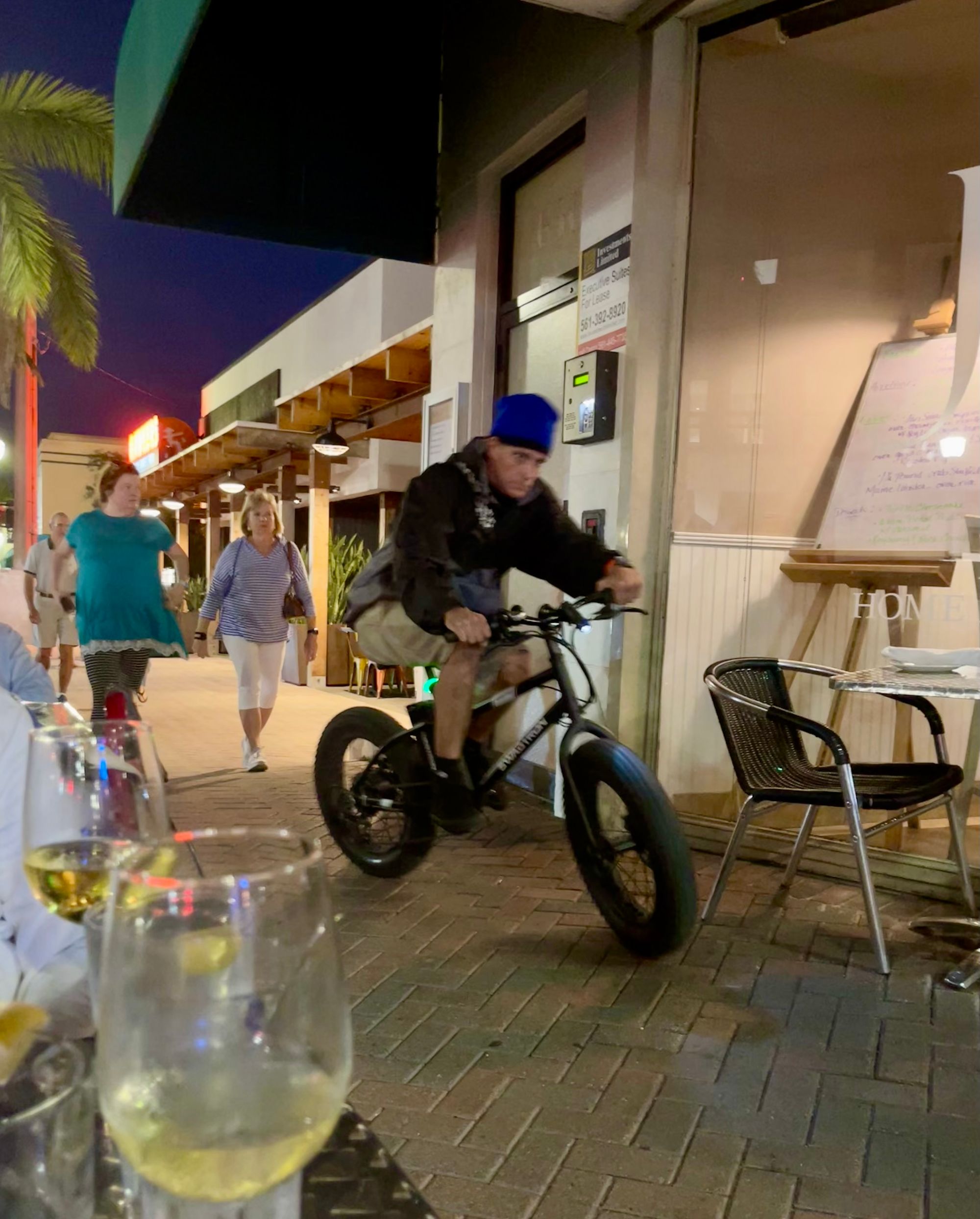
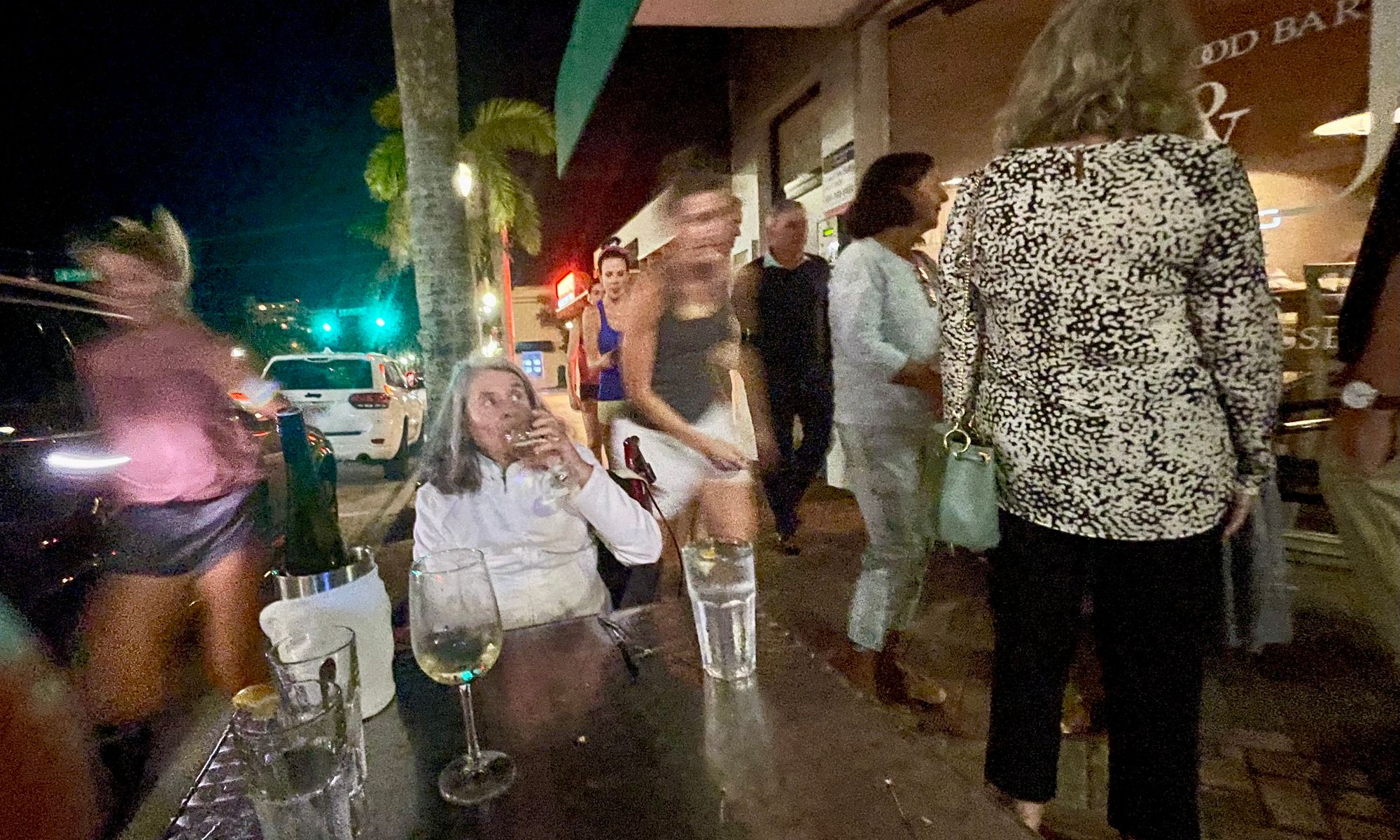
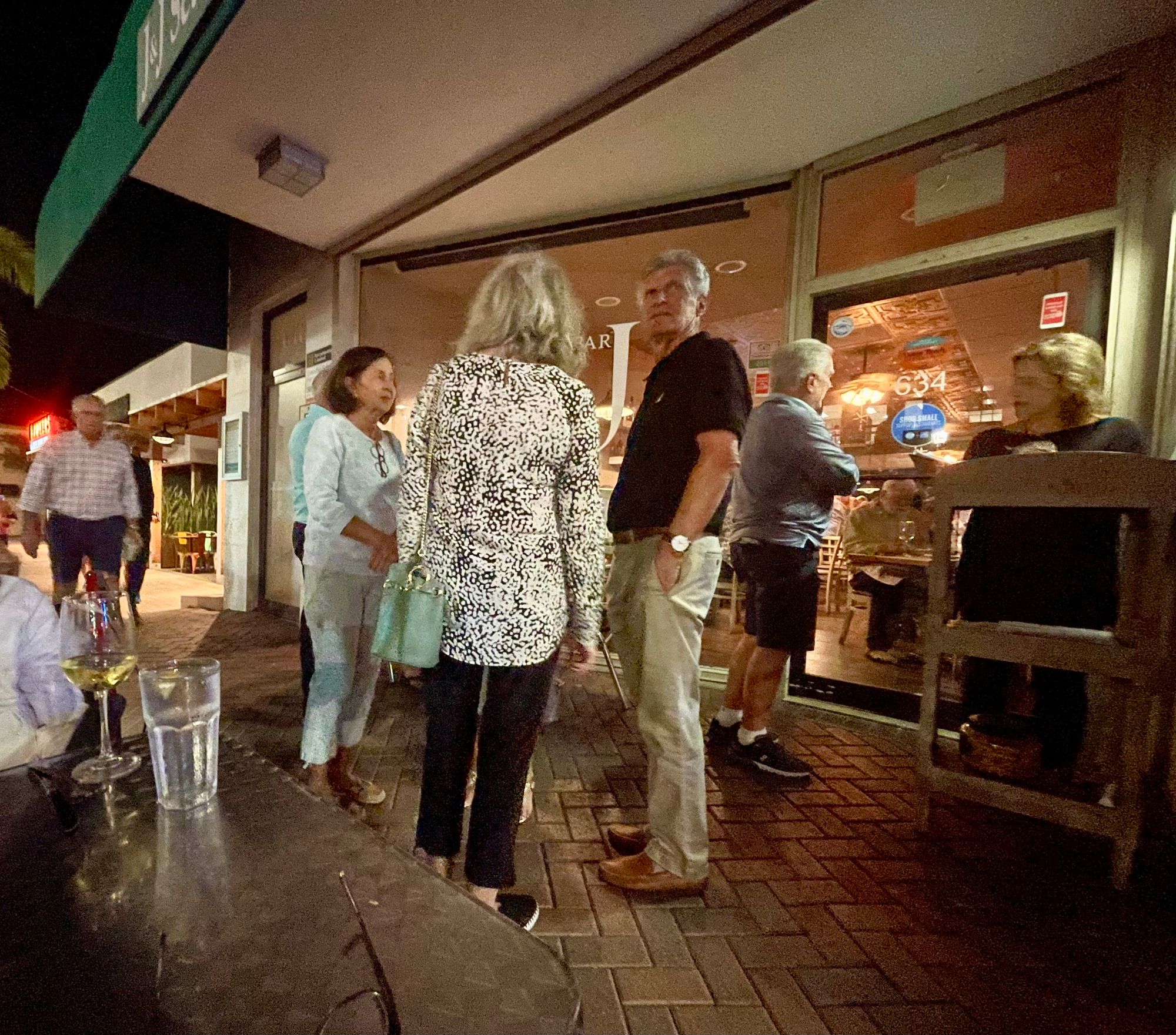
This section of the street only works as a major event space when it's closed to traffic. The popularity of these events demonstrates how people would gladly fill this space when it is car-free. If this street segment is to have vibrancy year round, the space for pedestrian activity needs to be expanded.
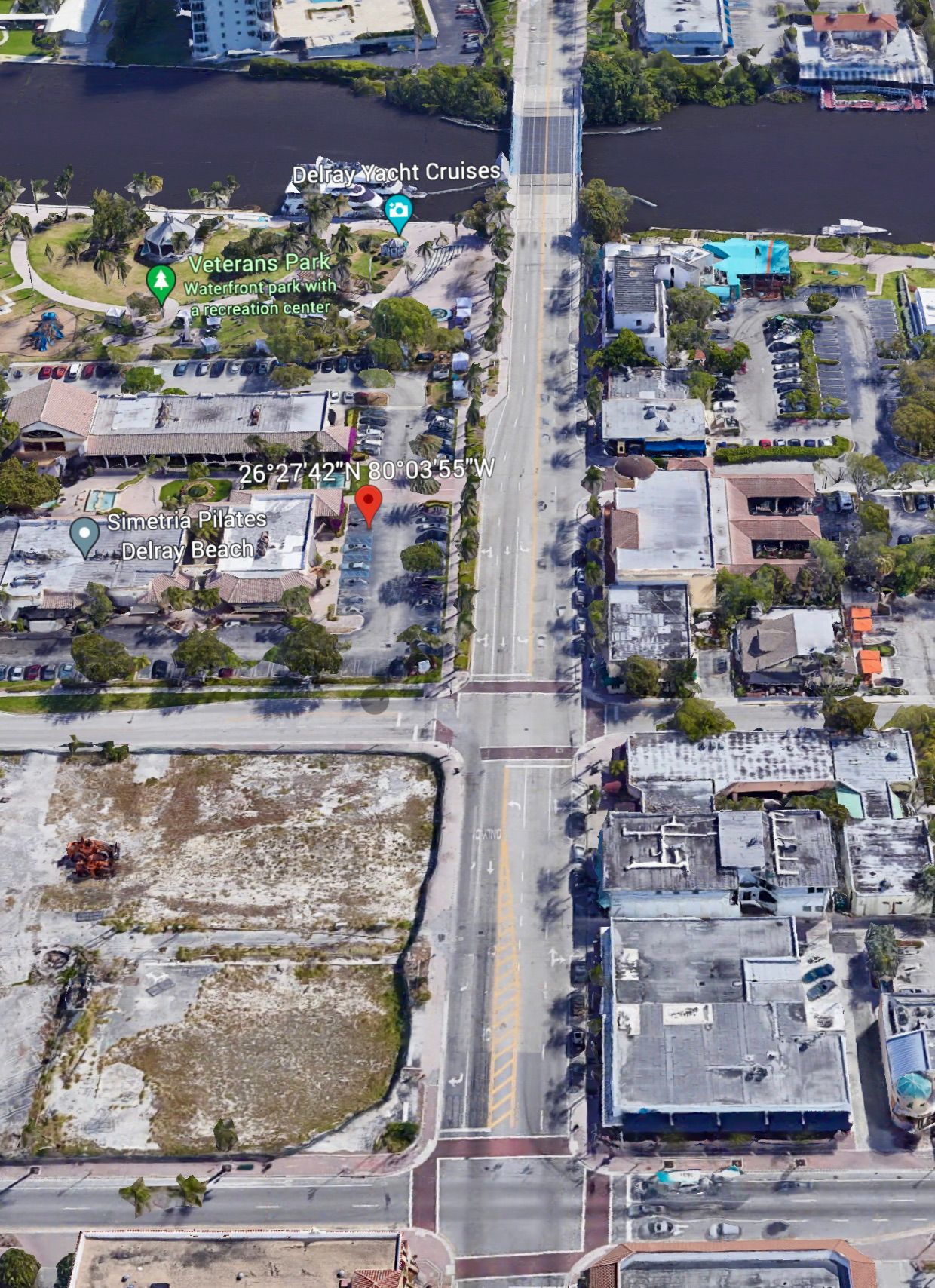
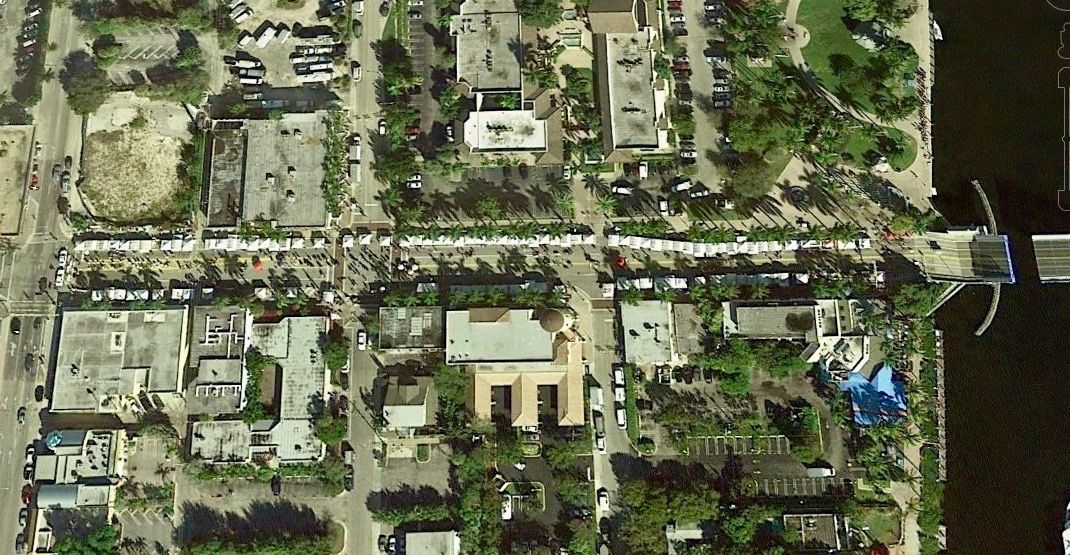
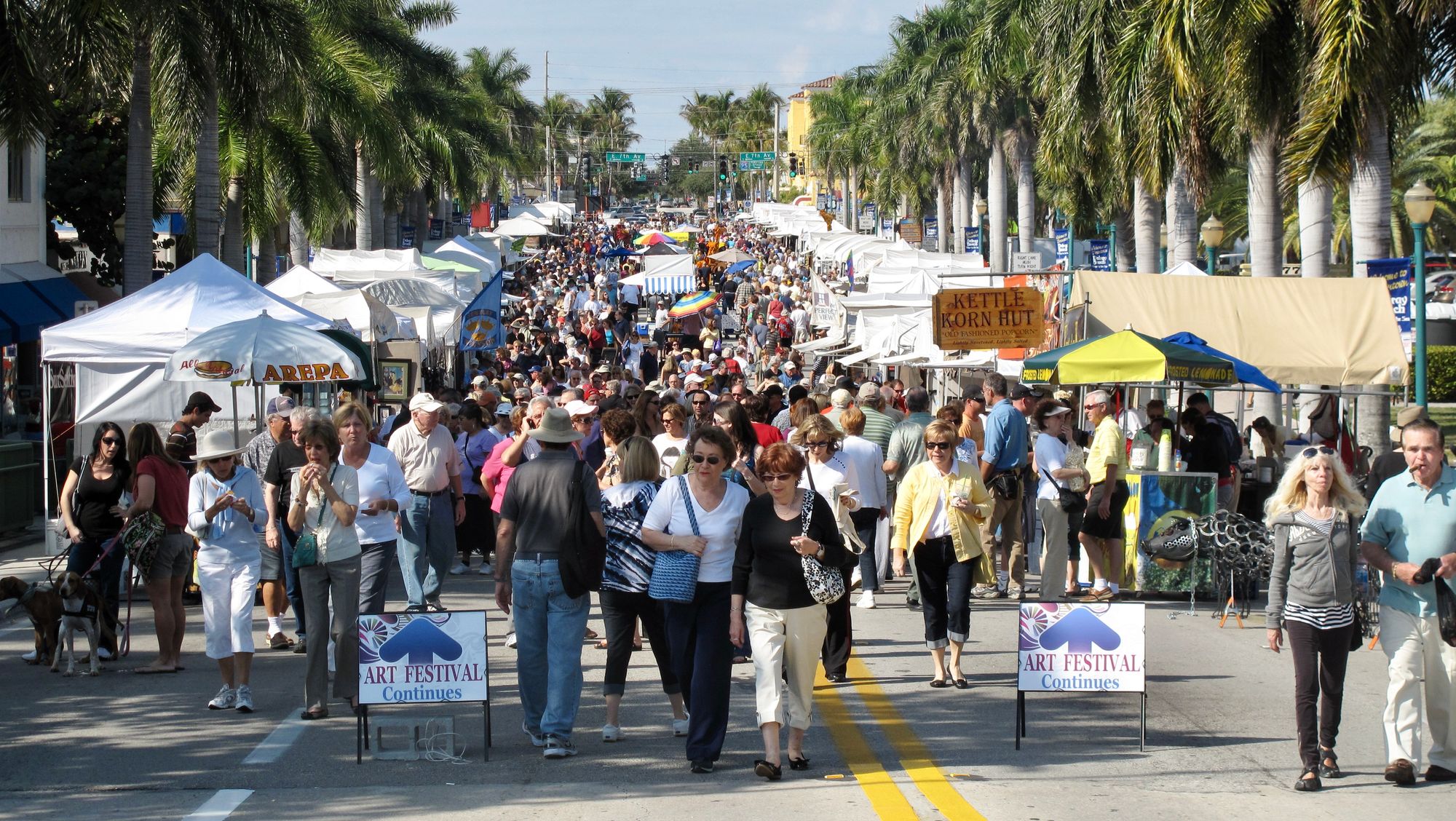
Benchmark - New Haven
Temporary, LQC (Lighter, Quicker, Cheaper), experiments could have a big return.
New Haven had a similar problem with sidewalks being too narrow in a key part of town where many people wanted to walk. So, they simply extended the sidewalks. An entire lane of traffic was removed on the major egress route out of New Haven, just using paint and bollards.
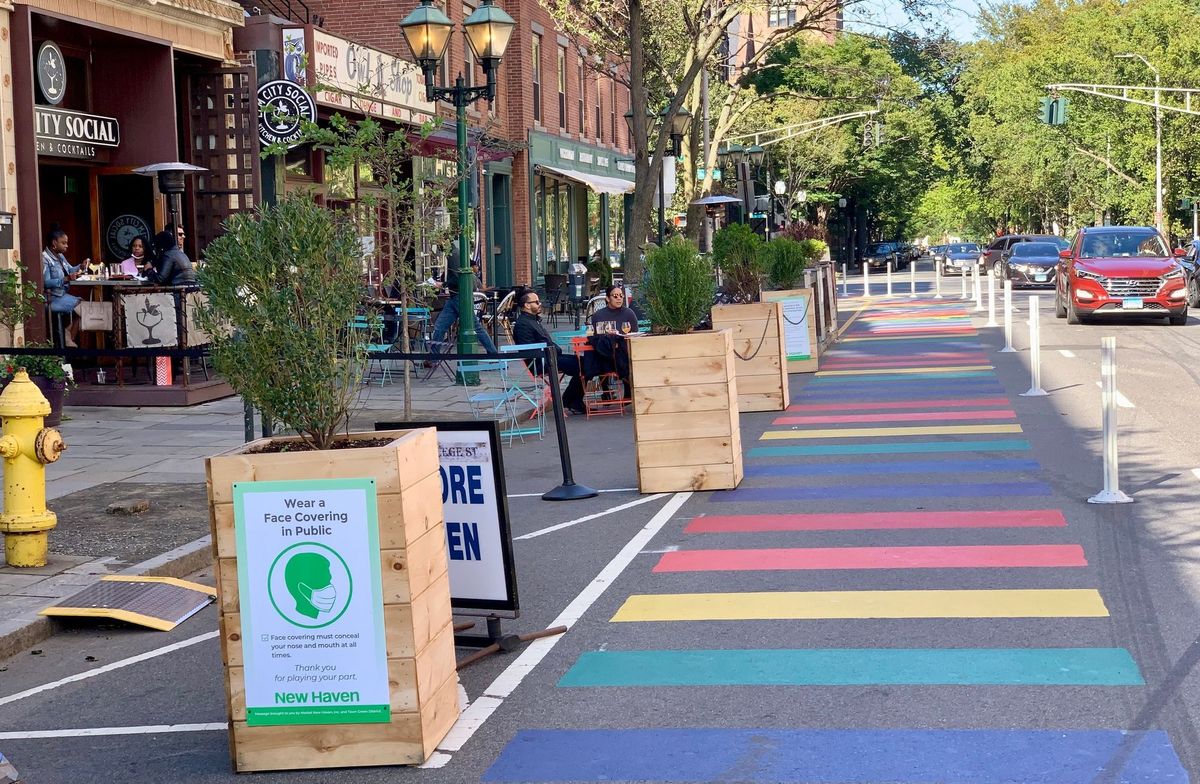
This could be done similarly in many other places, and fast. All it takes is the decision to prioritize sidewalk life, something which would benefit both community and enterprise. The impact would be tremendous! If there is uncertainty, it can be done as an experiment along the south side of Atlantic from Federal to the bridge to see how people feel about it. If the response is positive, it should stay.
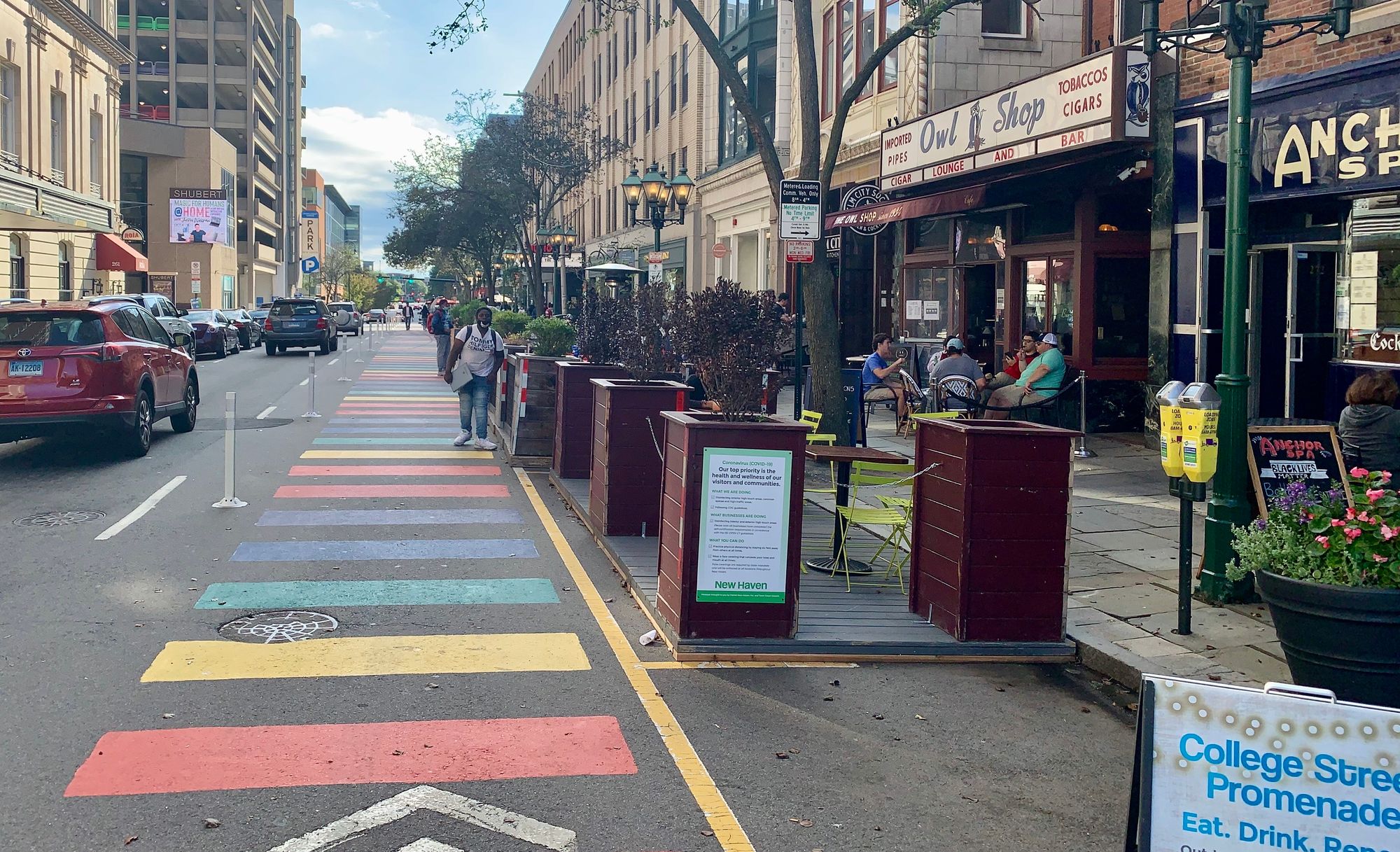
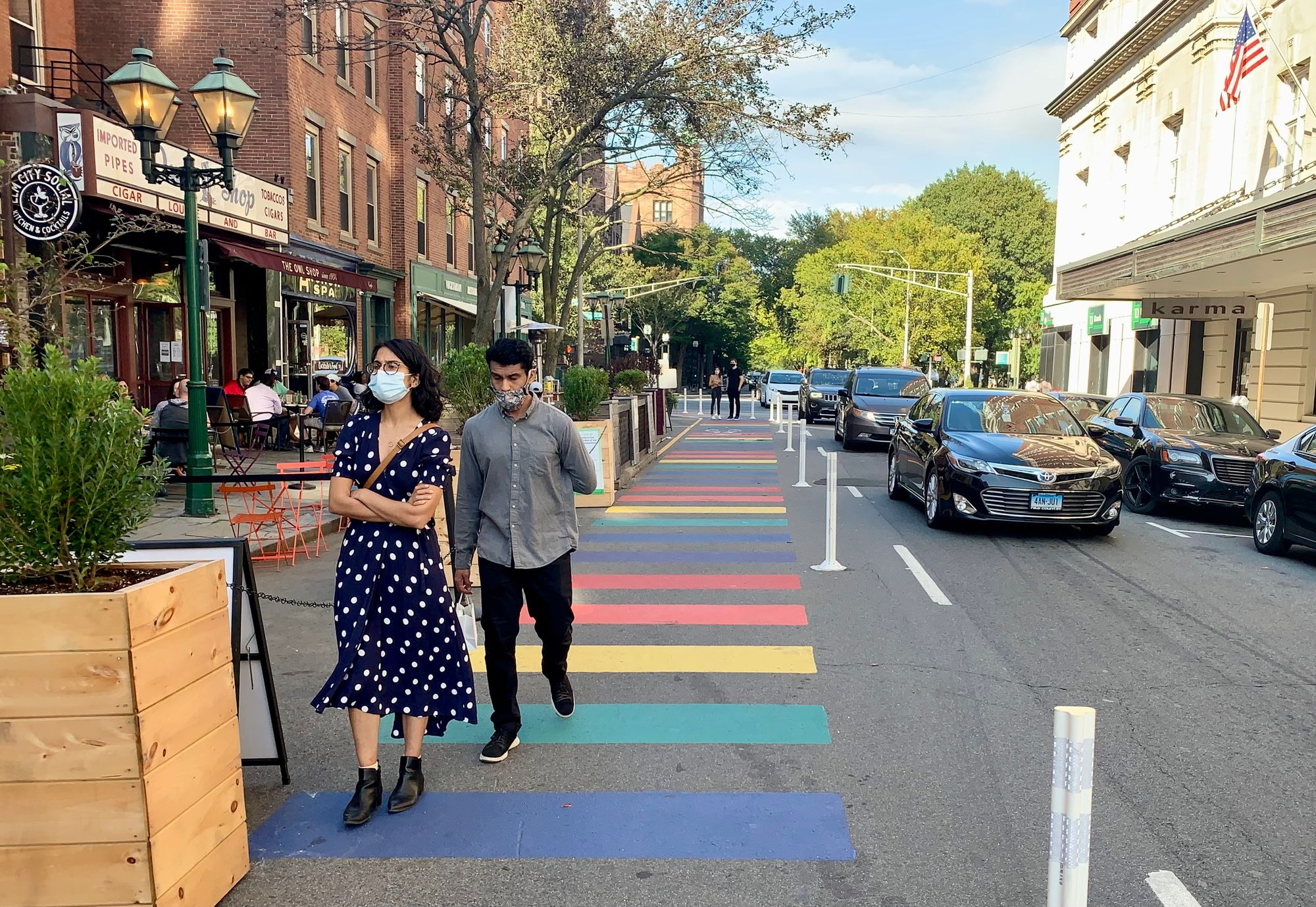
The Intracoastal
The Intracoastal is a stretch of water just before the ocean which has the potential to become an exceptional waterfront destination. The section shown here is the only accessible water body on Atlantic Avenue that can have activity such as cafes and various amenities. People are naturally drawn to waterfronts, therefore the potential here should be maximized. Capitalizing on the city's presence on the water is a logical move for Delray.
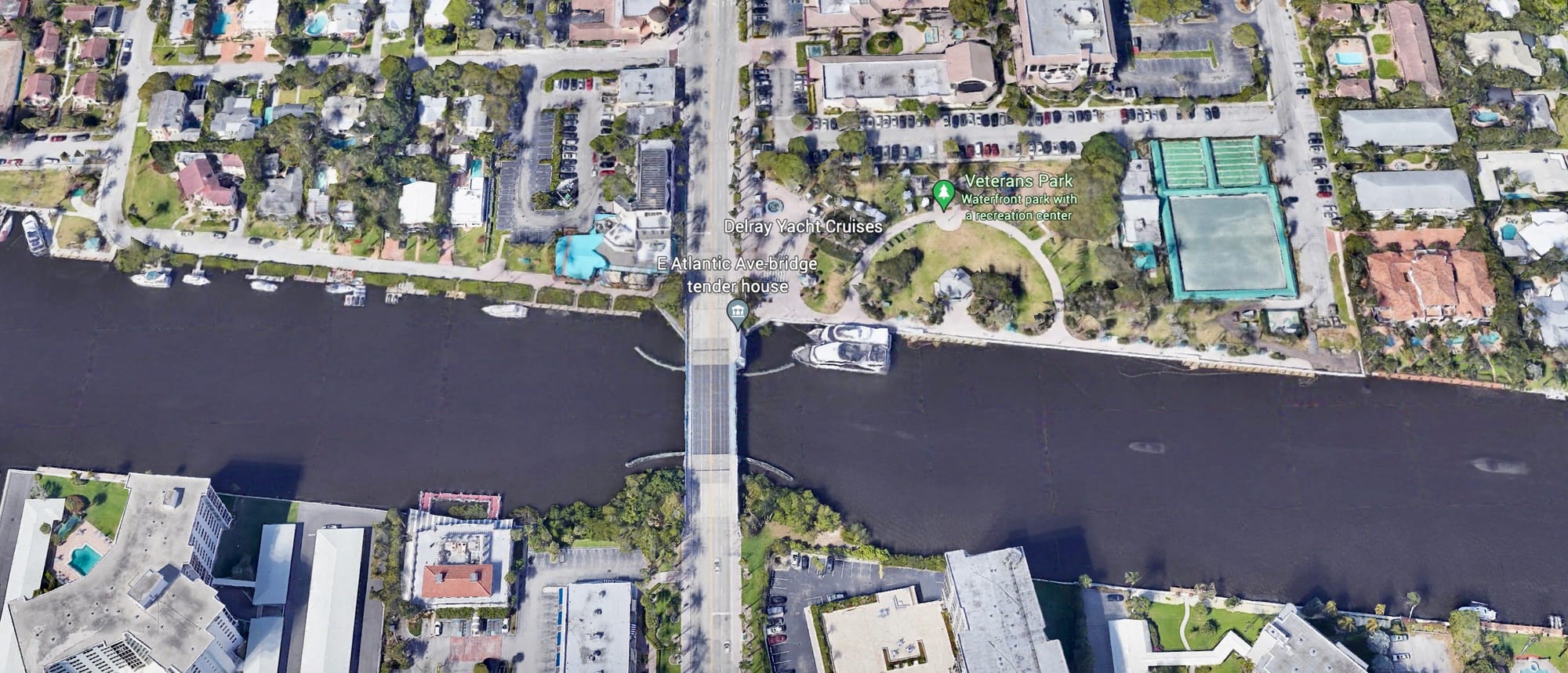
Veterans Park could become an active square like waterfront destination
Benchmark to Learn From - Paris Plage
Paris has perhaps the best waterfront in the world. There is such a variety of activities, amenities, assets and programs on the Paris Plage which pops up every summer. Even small activations, when arranged side-by-side in clusters, create an impressive destination. This model can be used to create a destination for even a small section of the Intracoastal waterfront like the one in Delray.
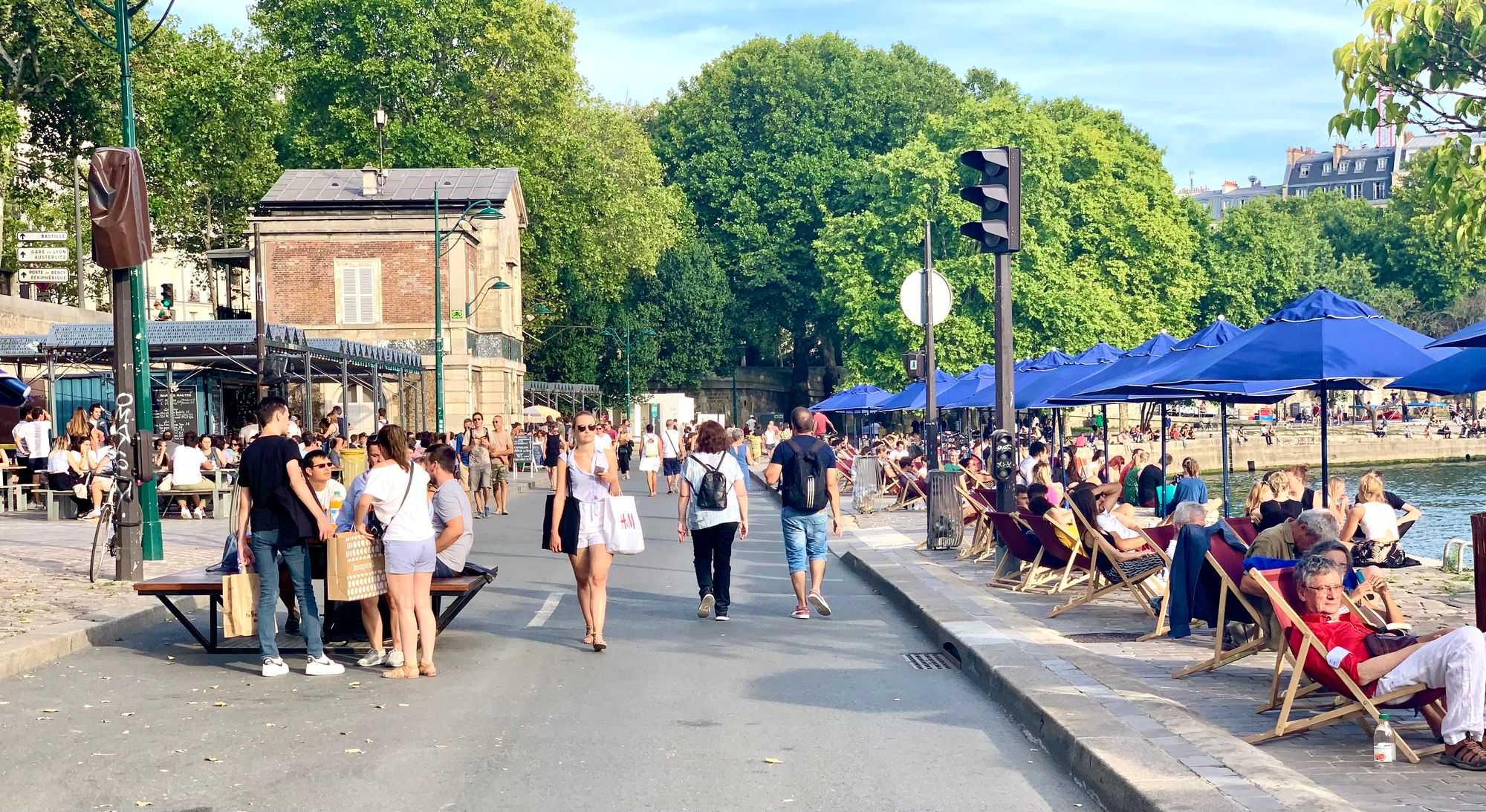
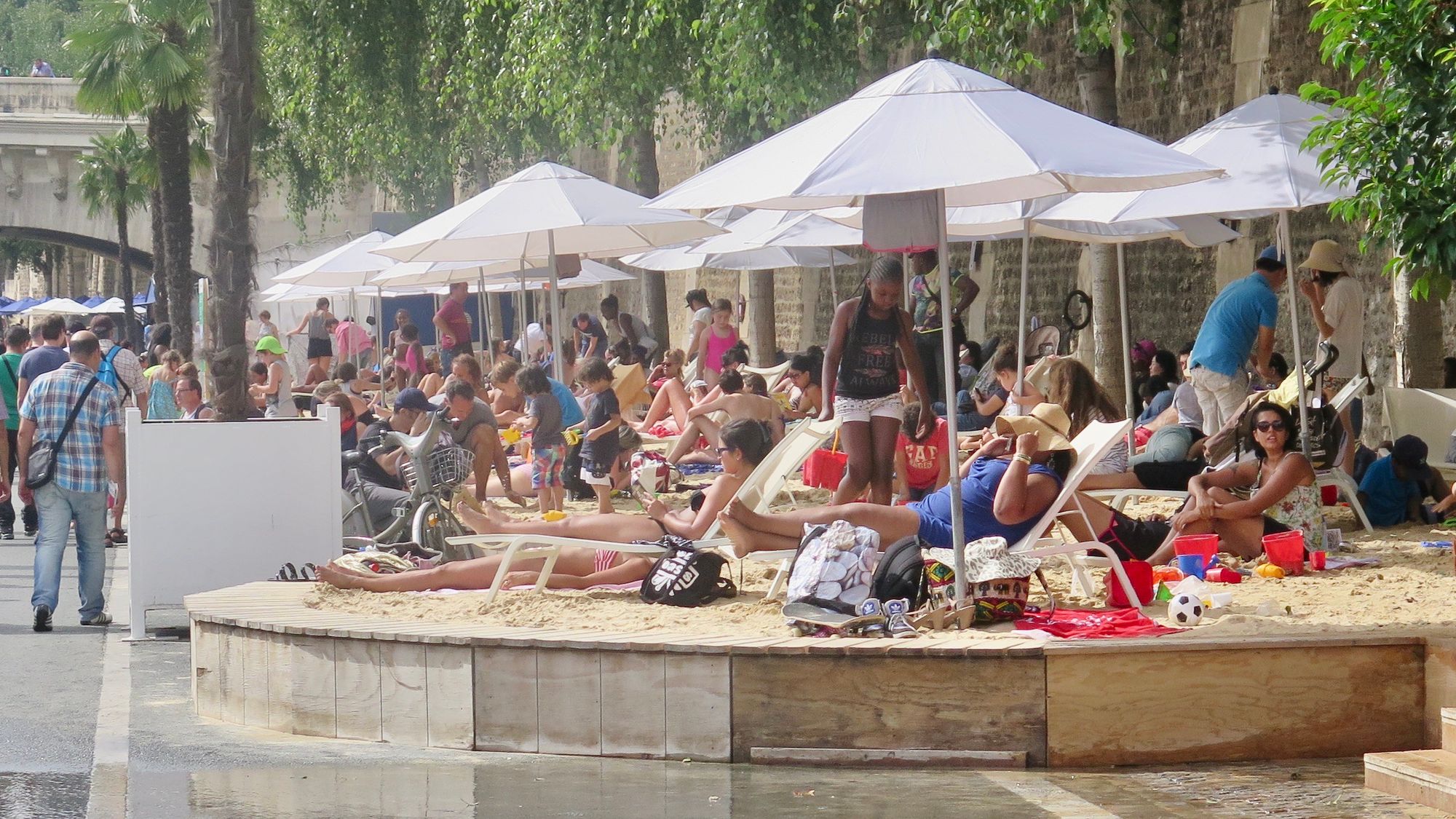
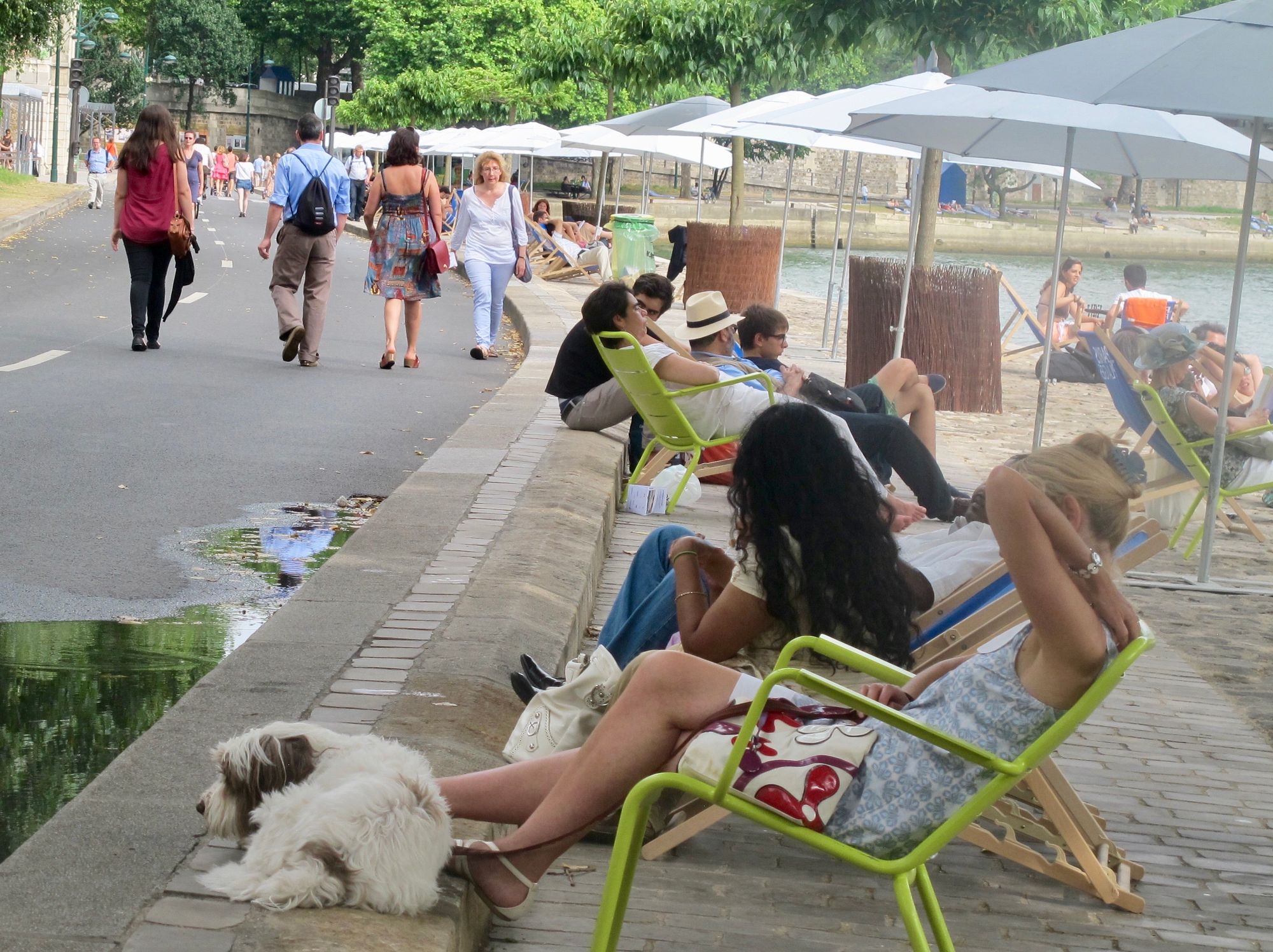
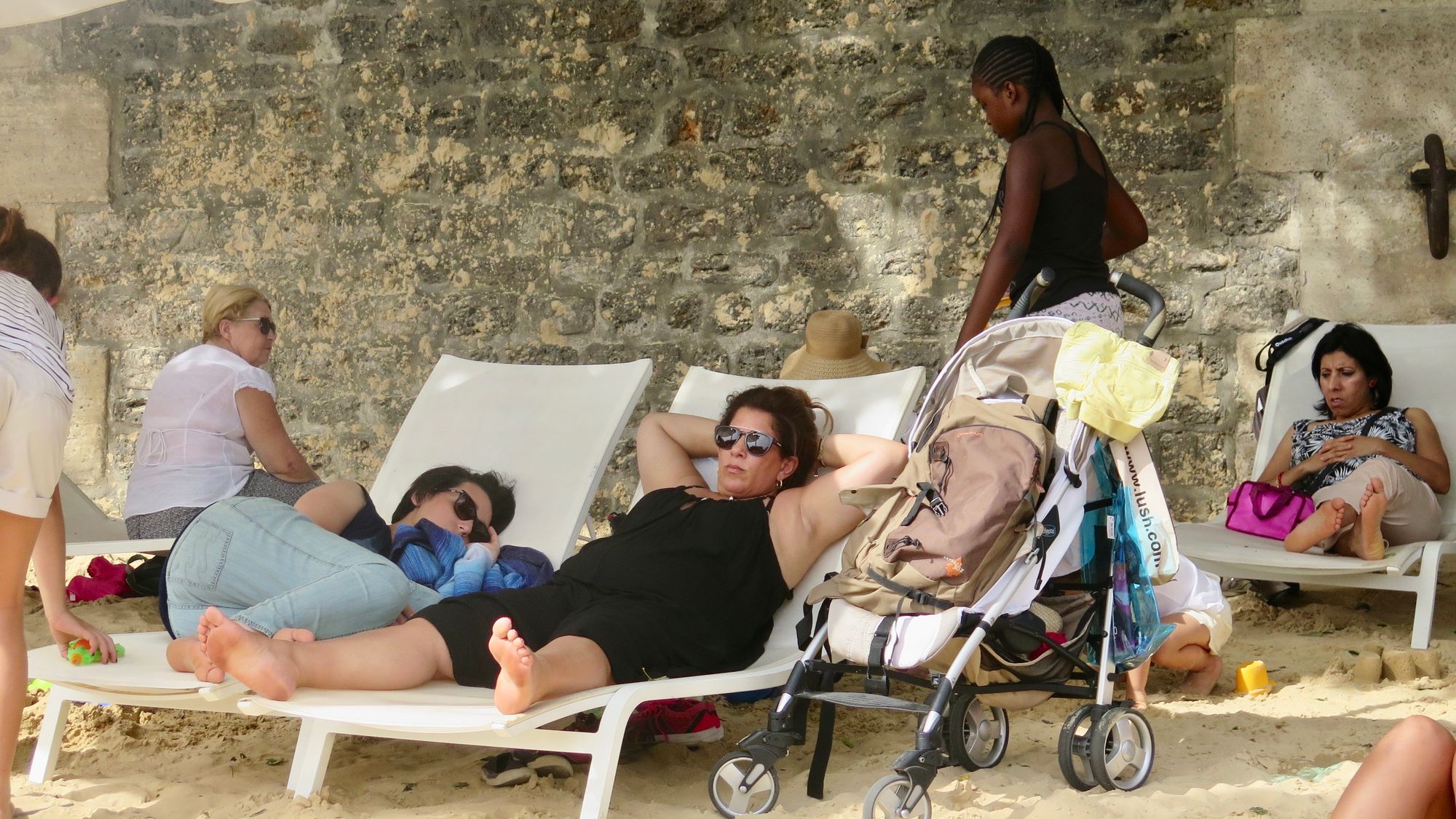
Pop-up restaurants can be found all along the Seine, welcoming people to stop, rest, and enjoy some refreshment.
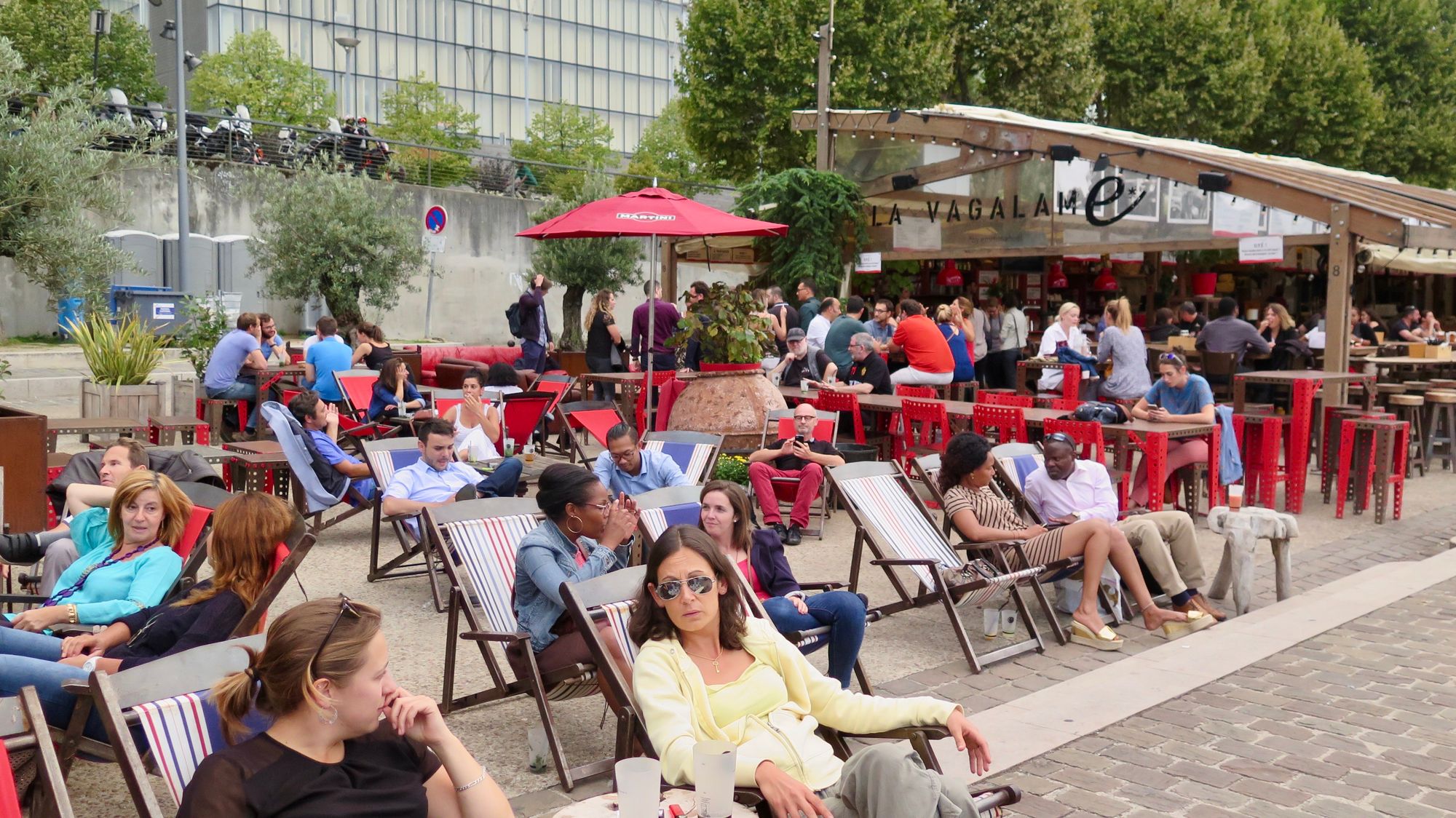
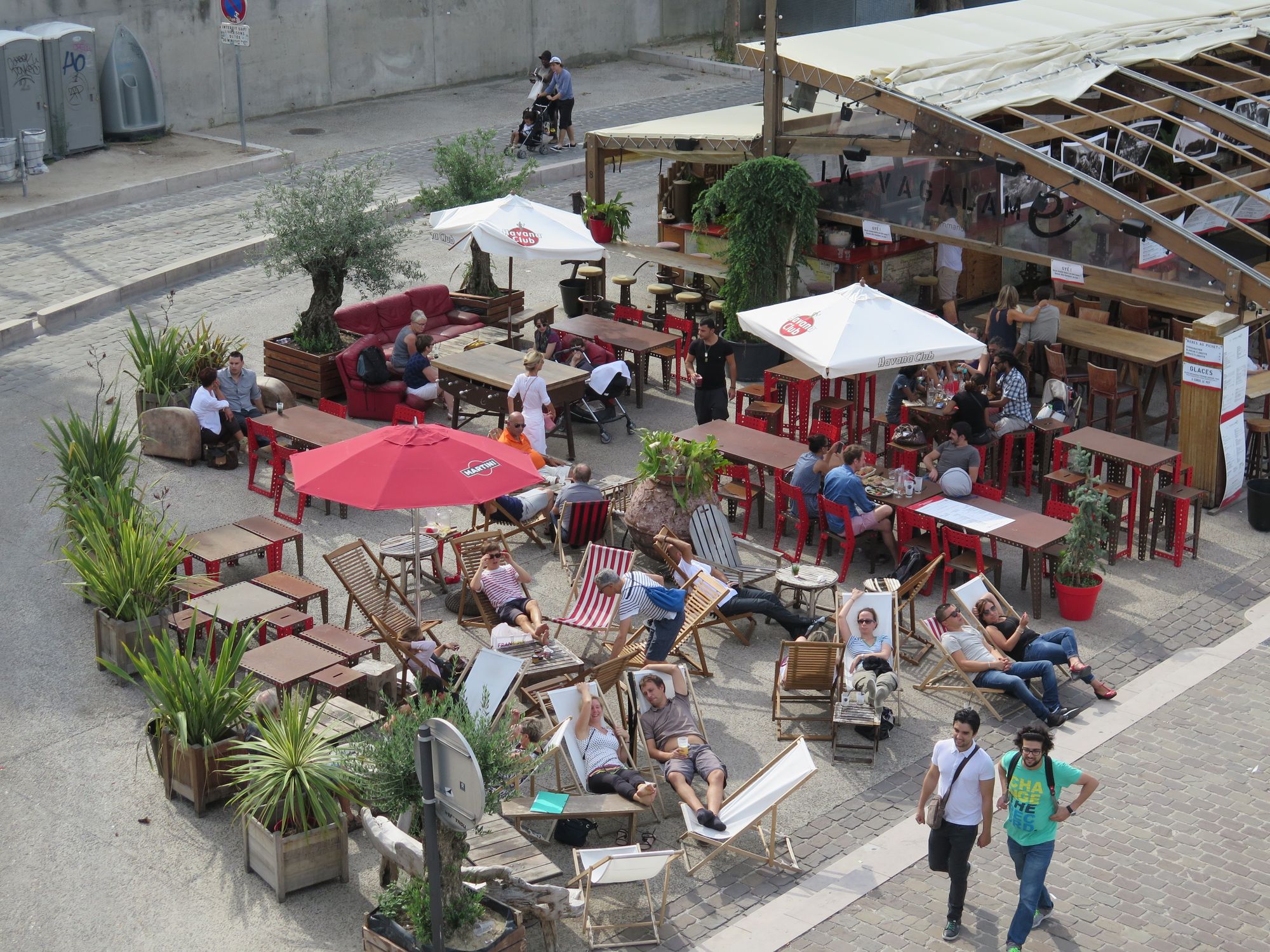
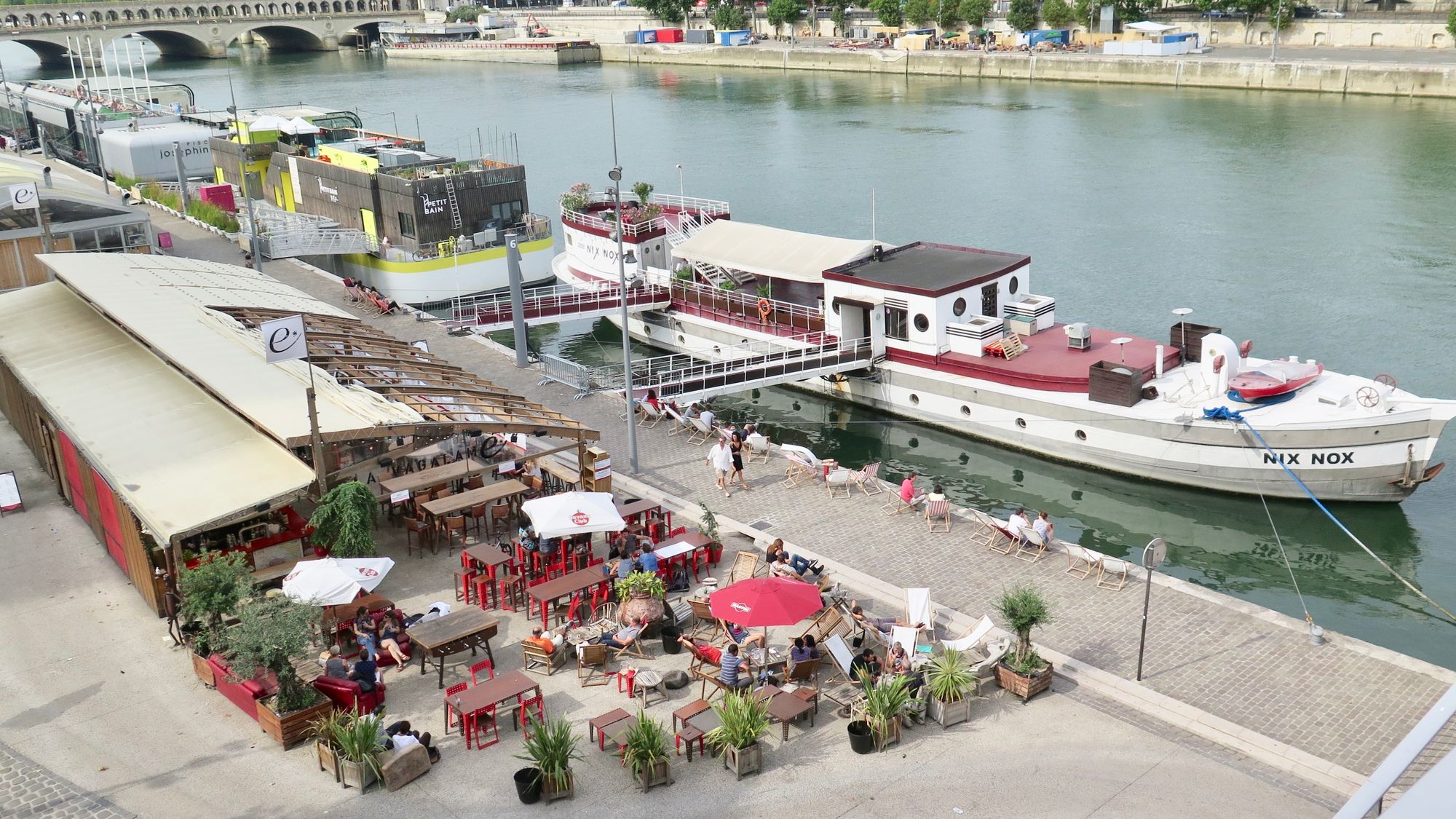
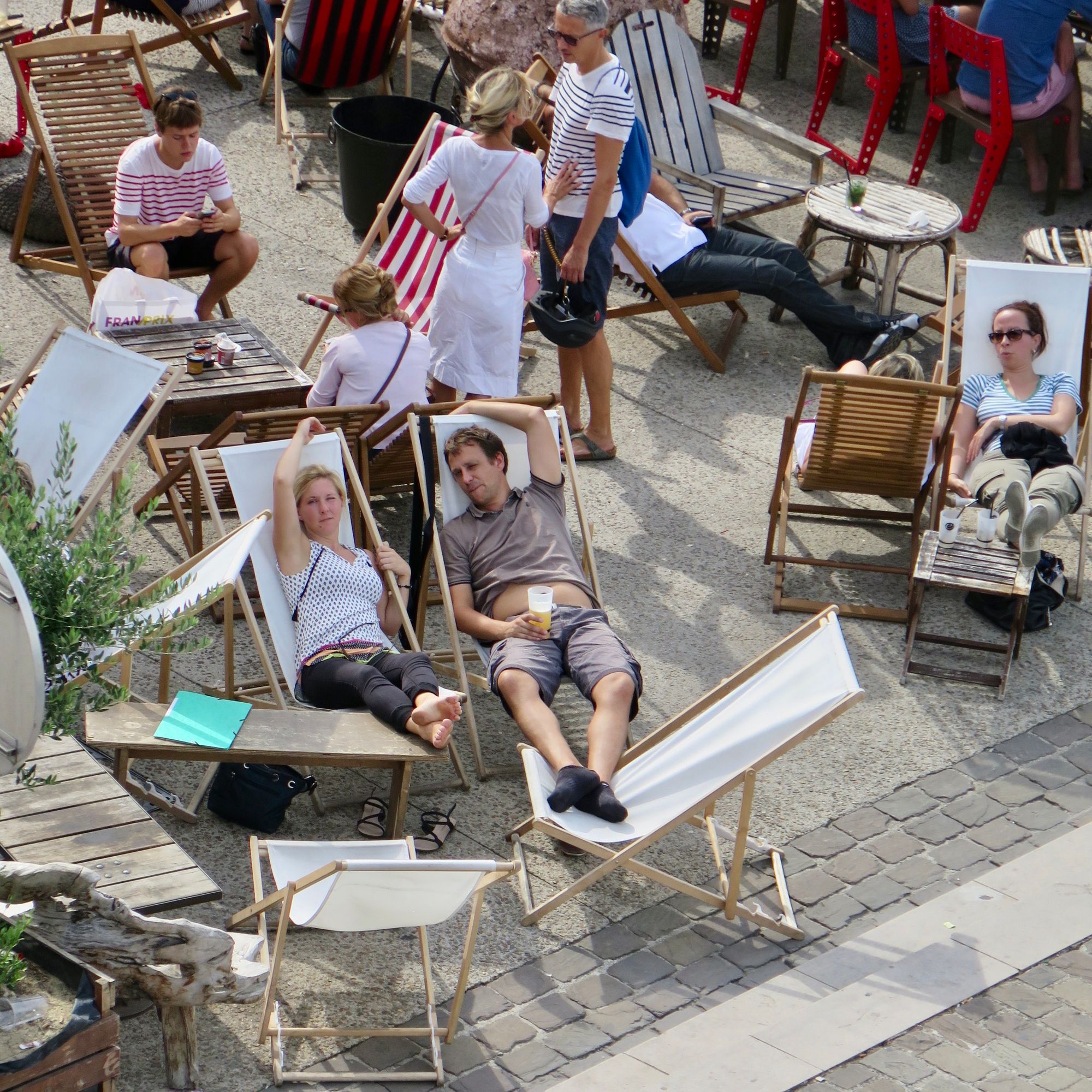
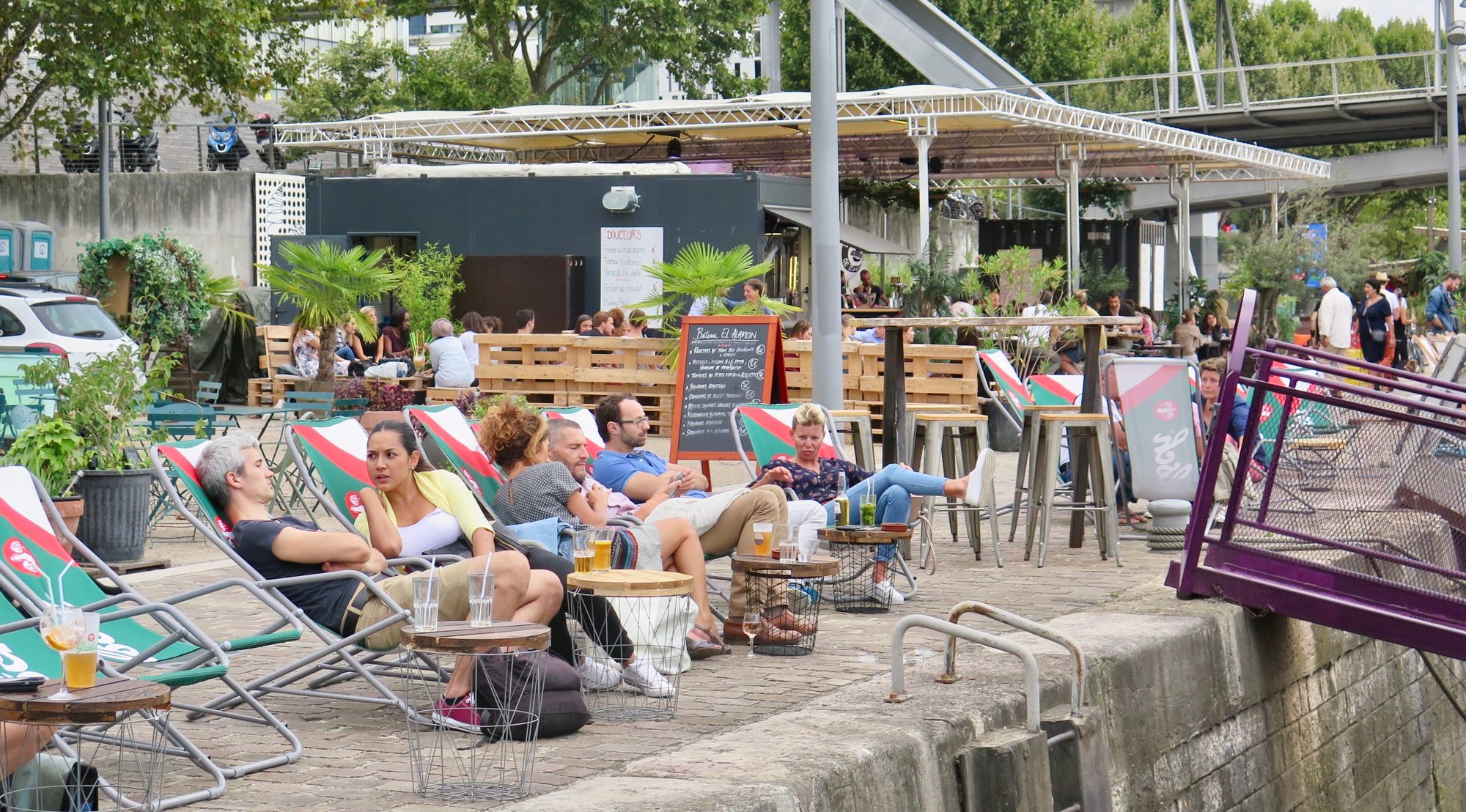
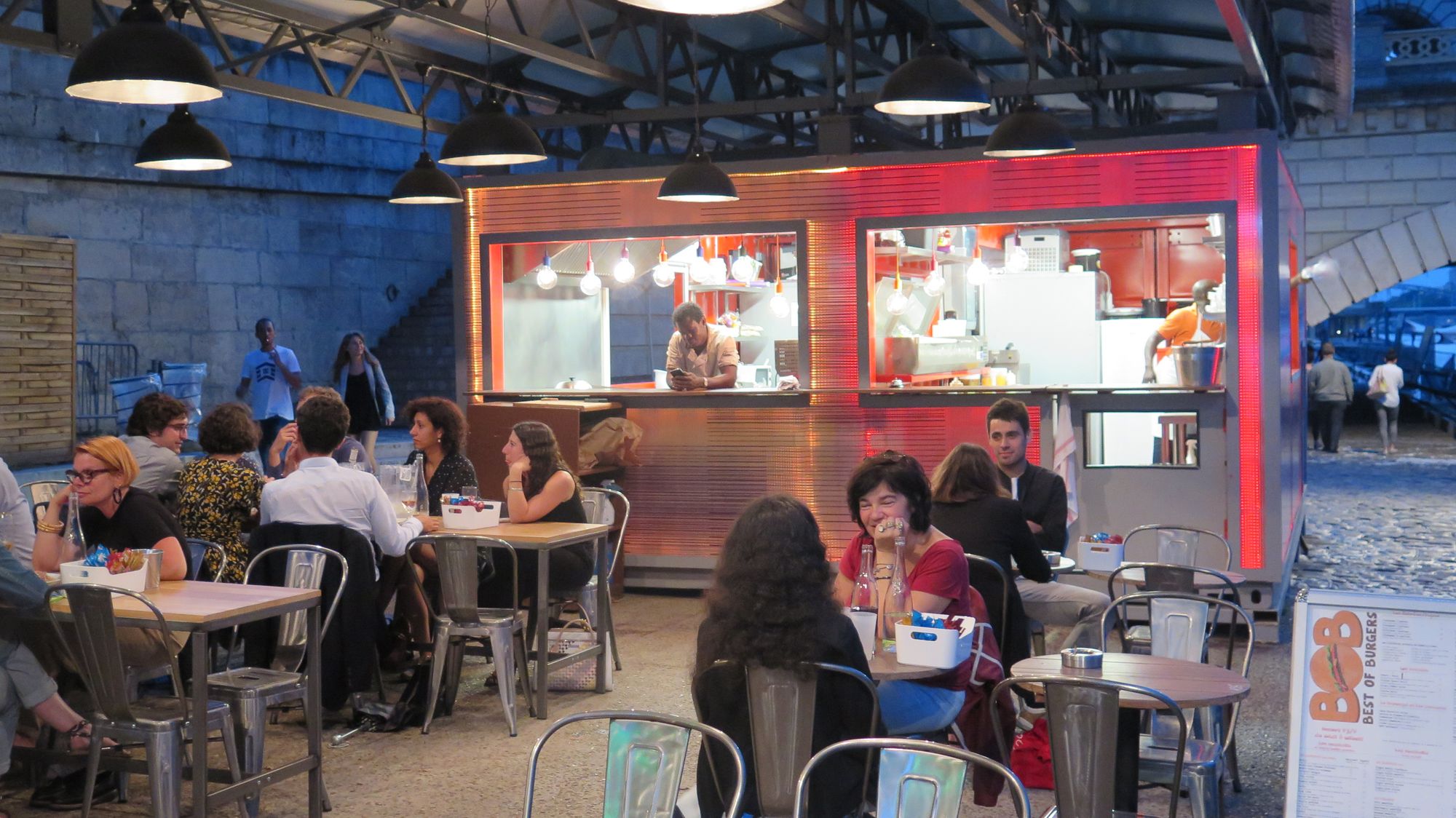
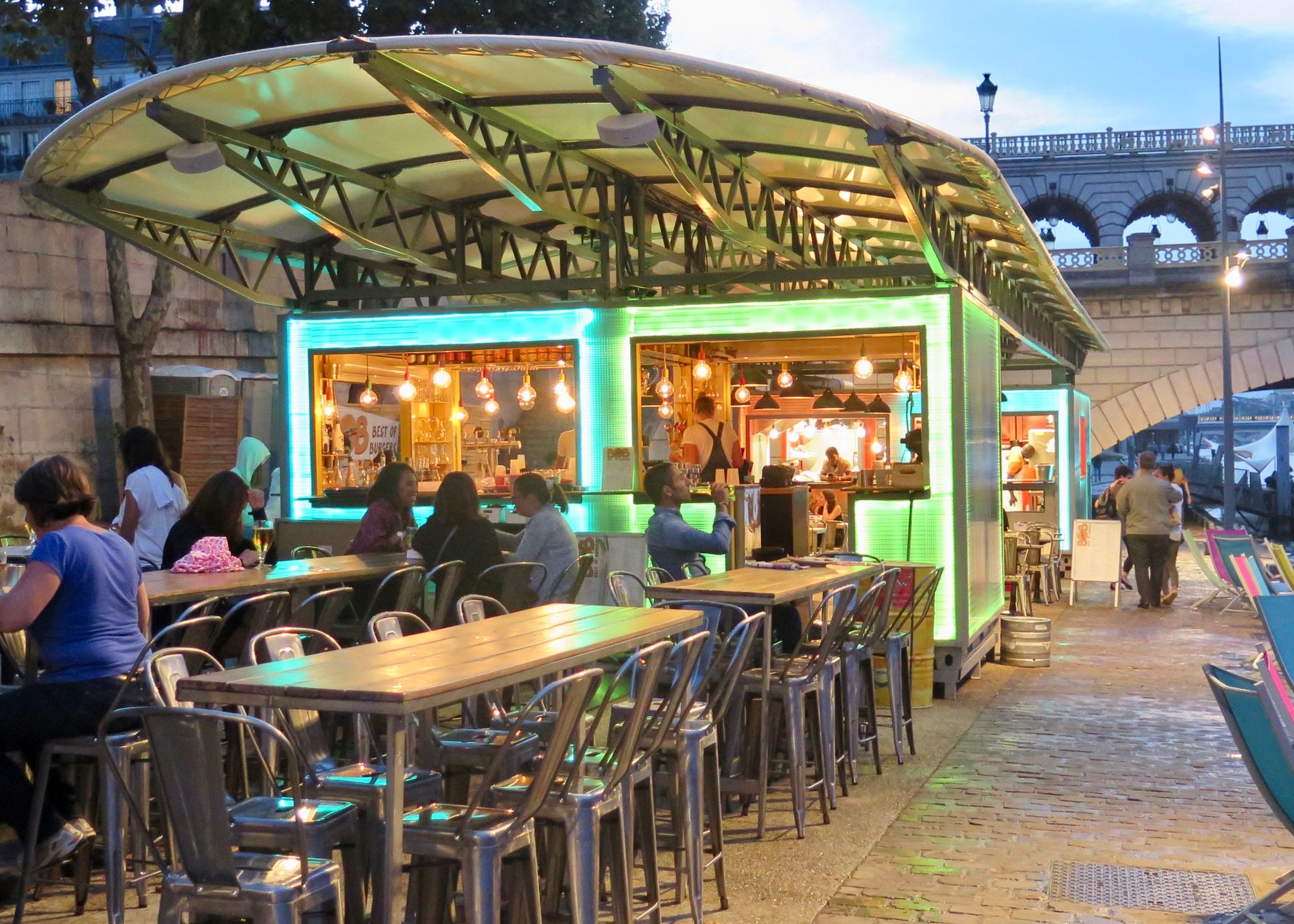
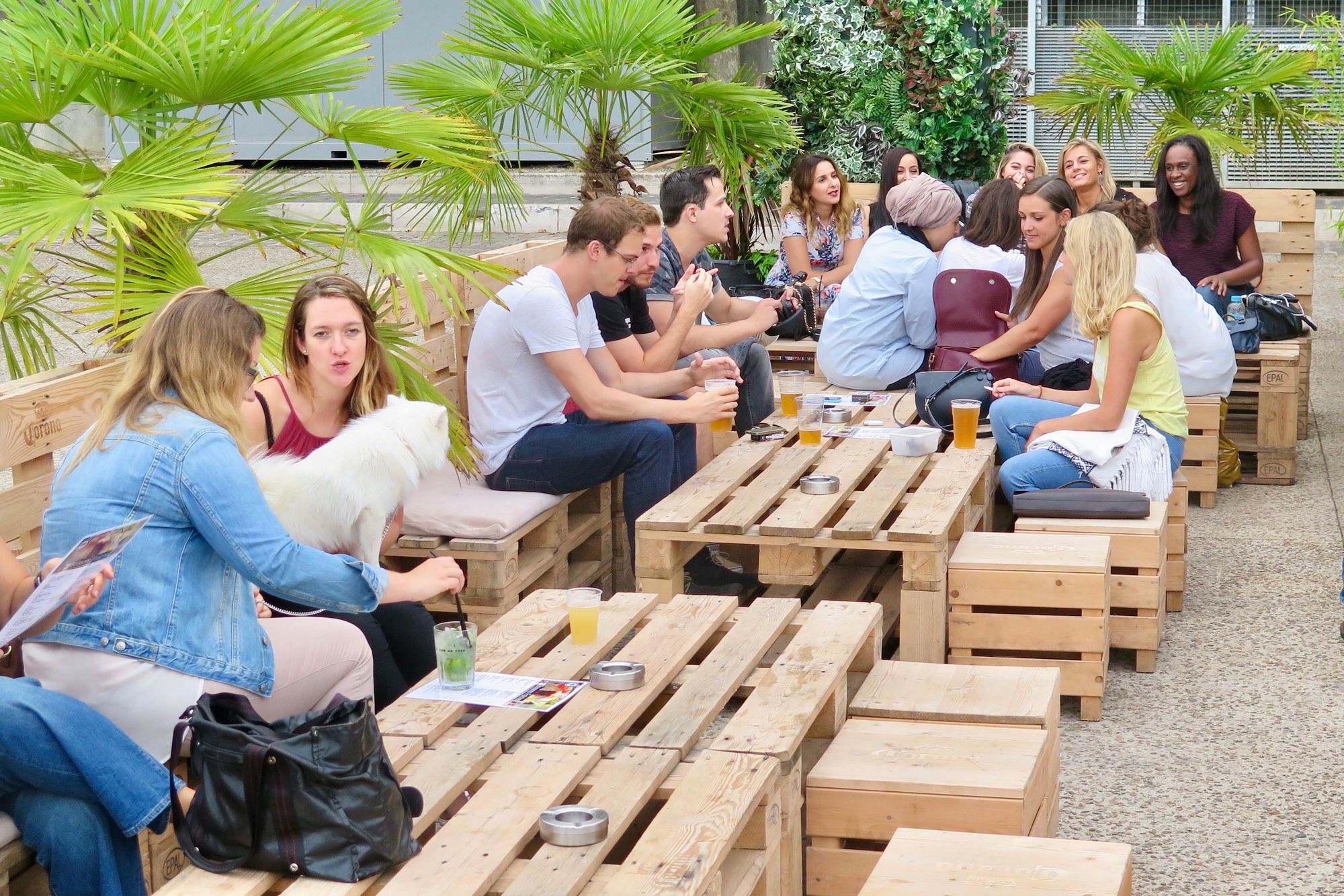
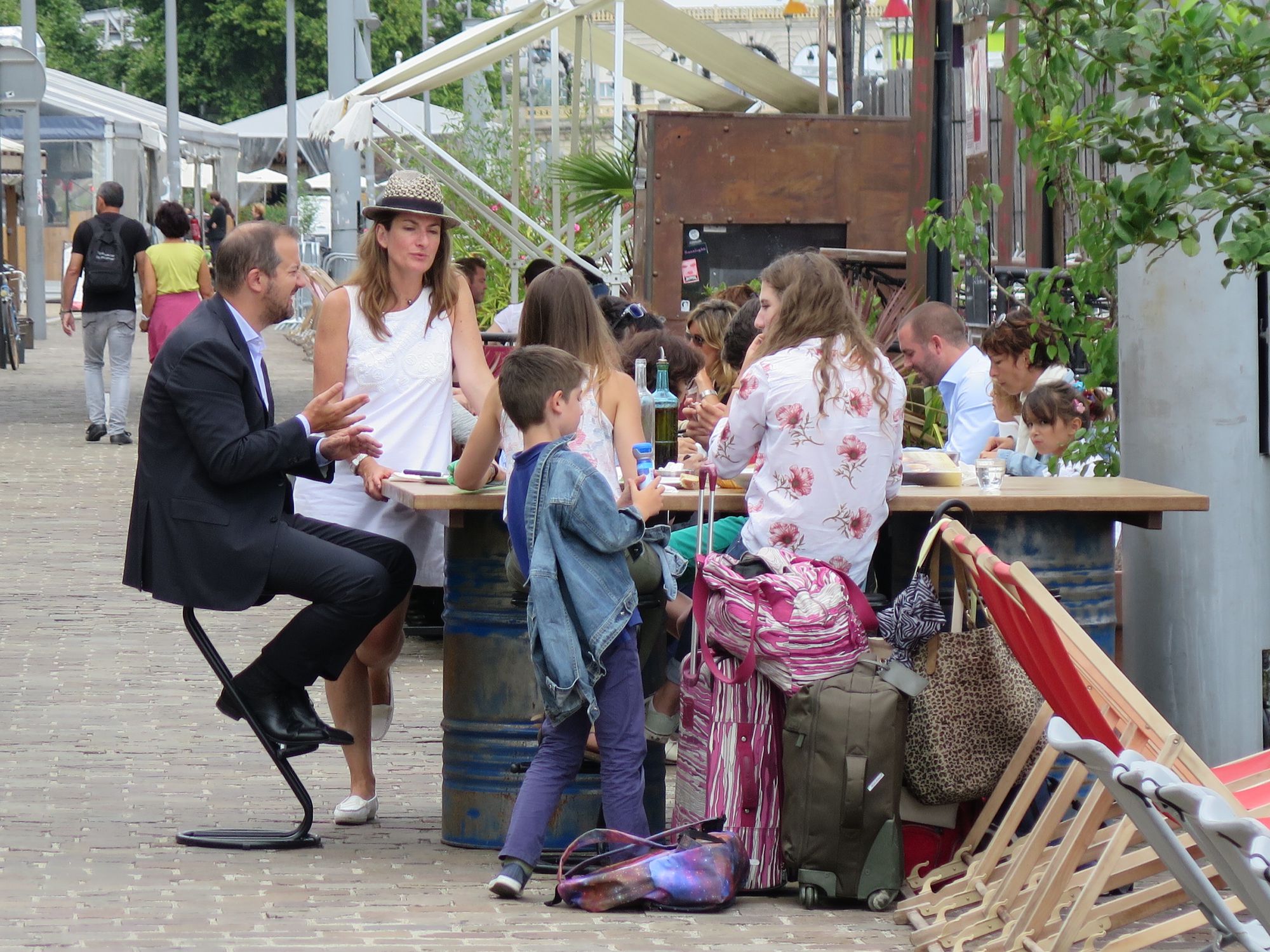
Casual dining and just hanging out is the main draw on this part of the upper Seine
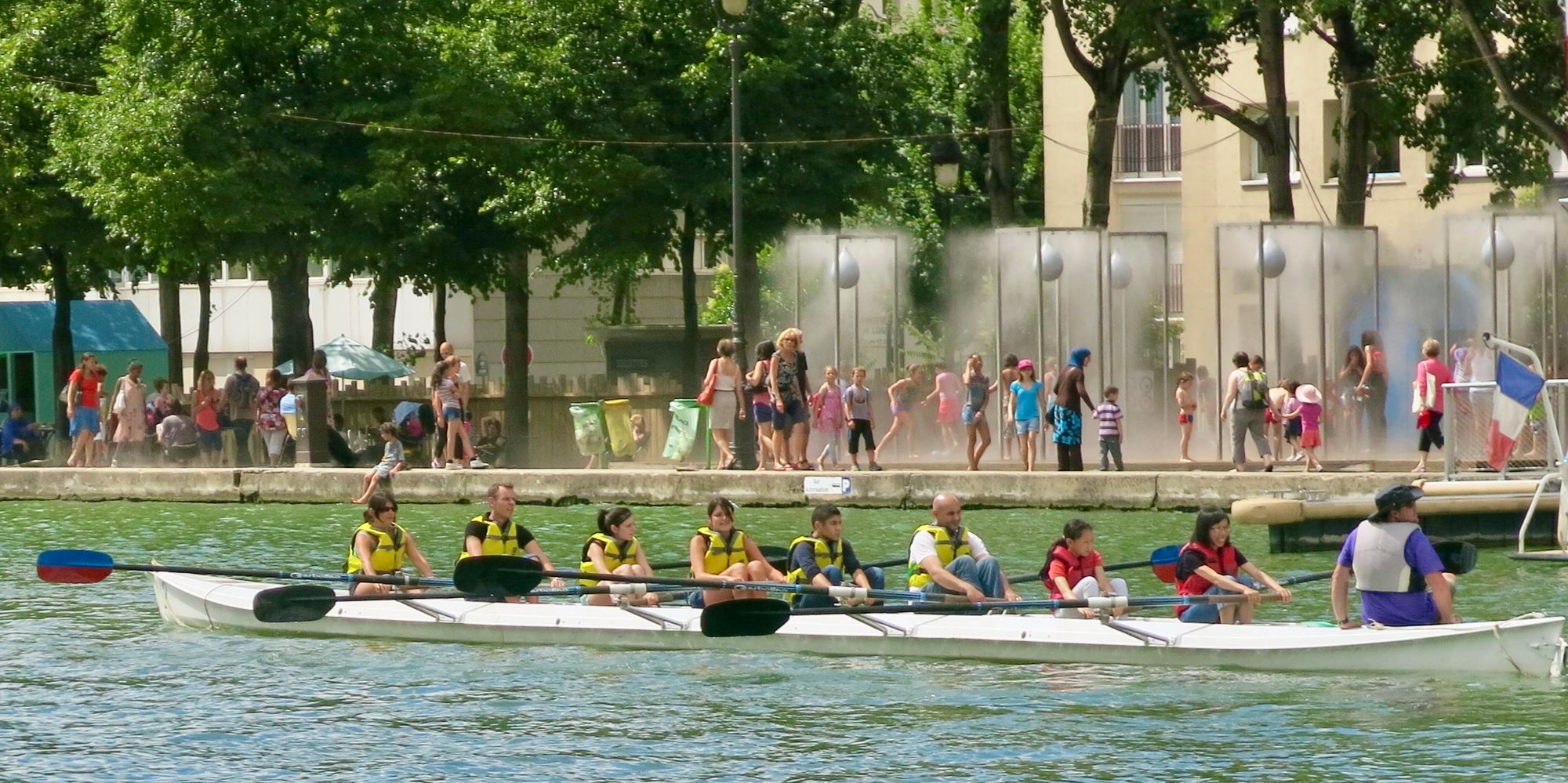
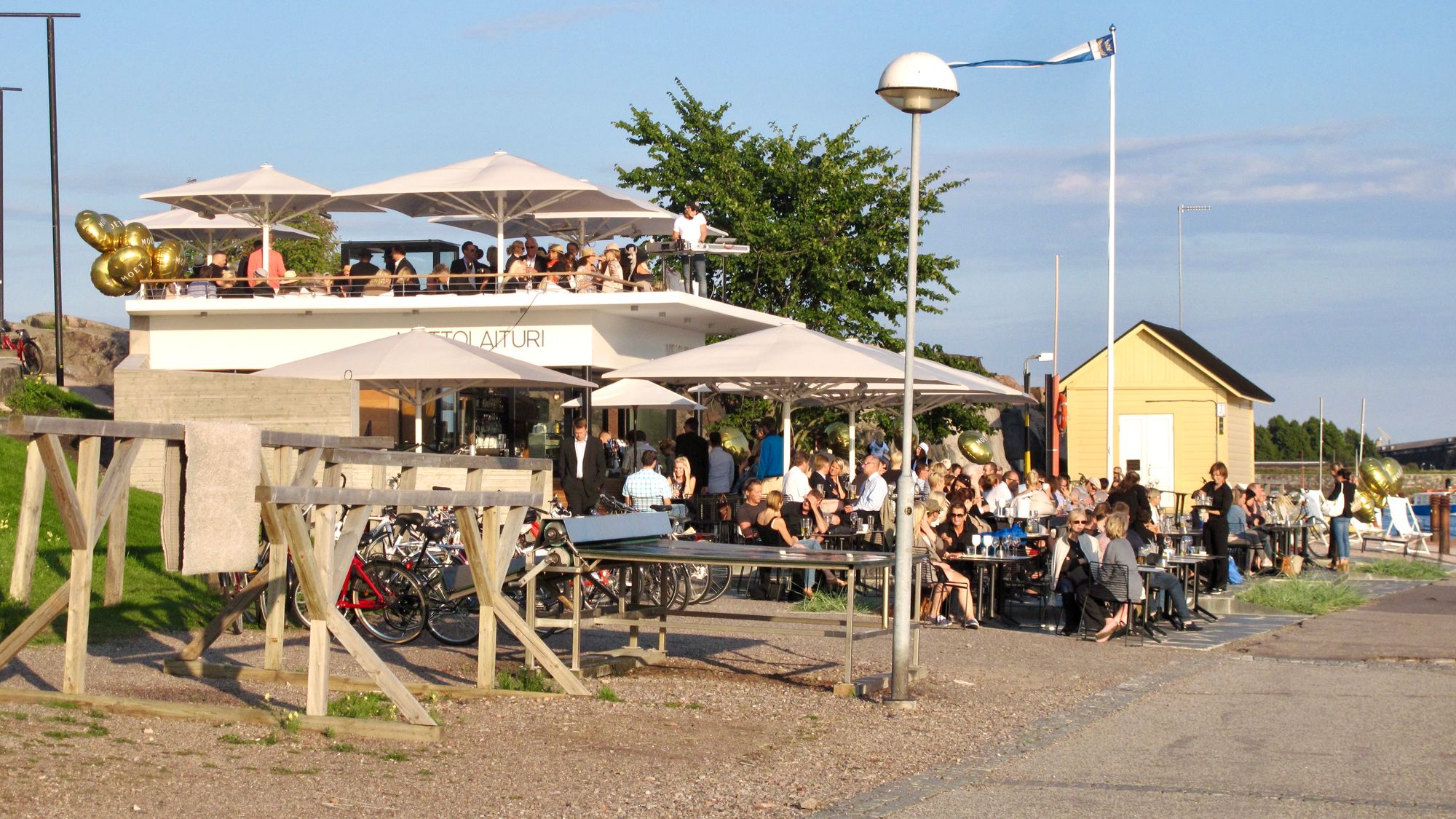
Between the Intracoastal and A1A
The next stretch of Atlantic Avenue as it approaches A1A needs a lot of work as there is much room for improvement here. There is so little to see and do currently, even though it leads to the city's greatest asset – the ocean.
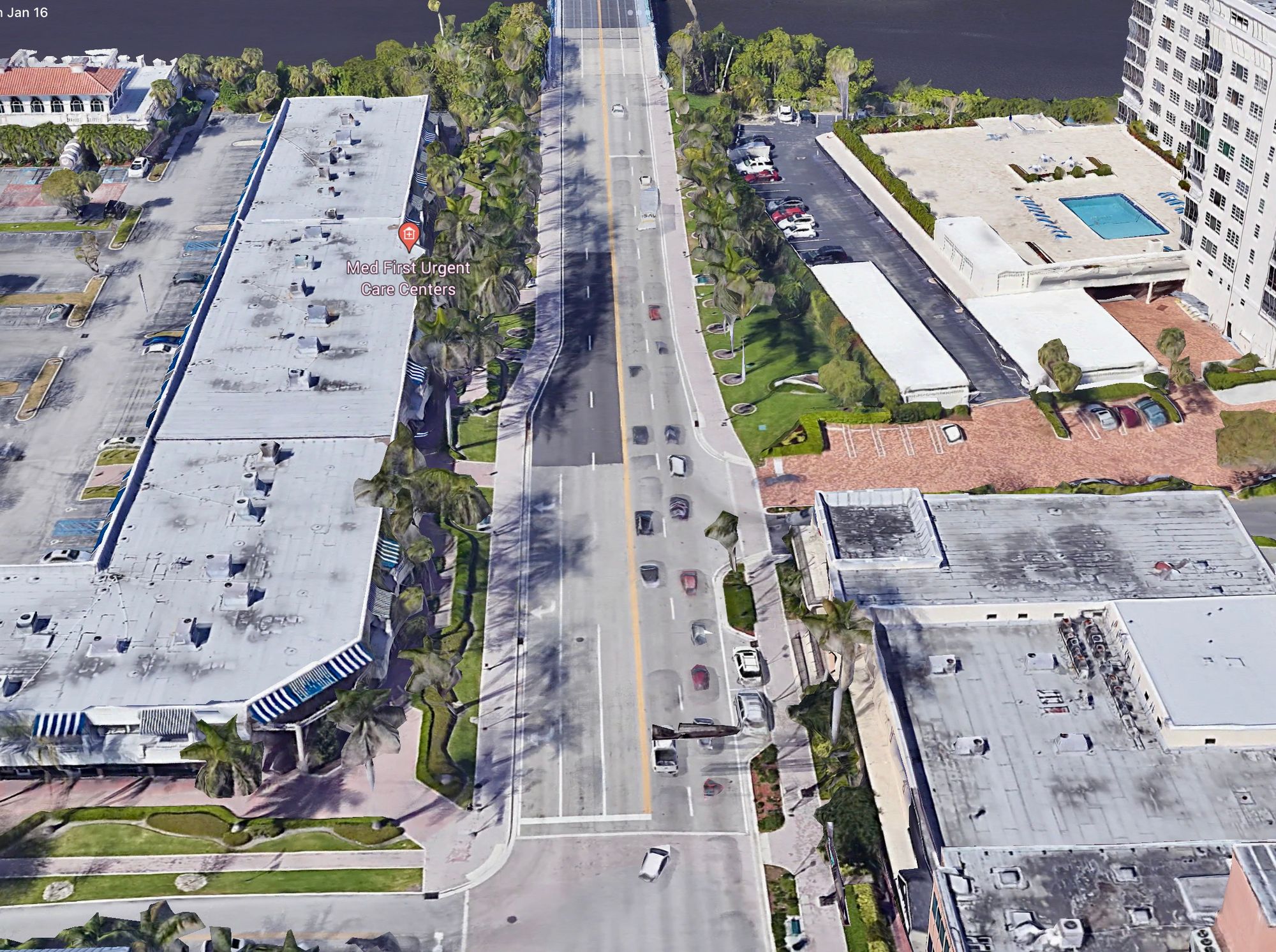
This segment of the street could be an experimental zone where incubator stalls for small businesses are located, supporting the development of local business and making the street more vibrant and interesting. Gabriel's Wharf did something like this in an underdeveloped part of town and it has been a resounding success.
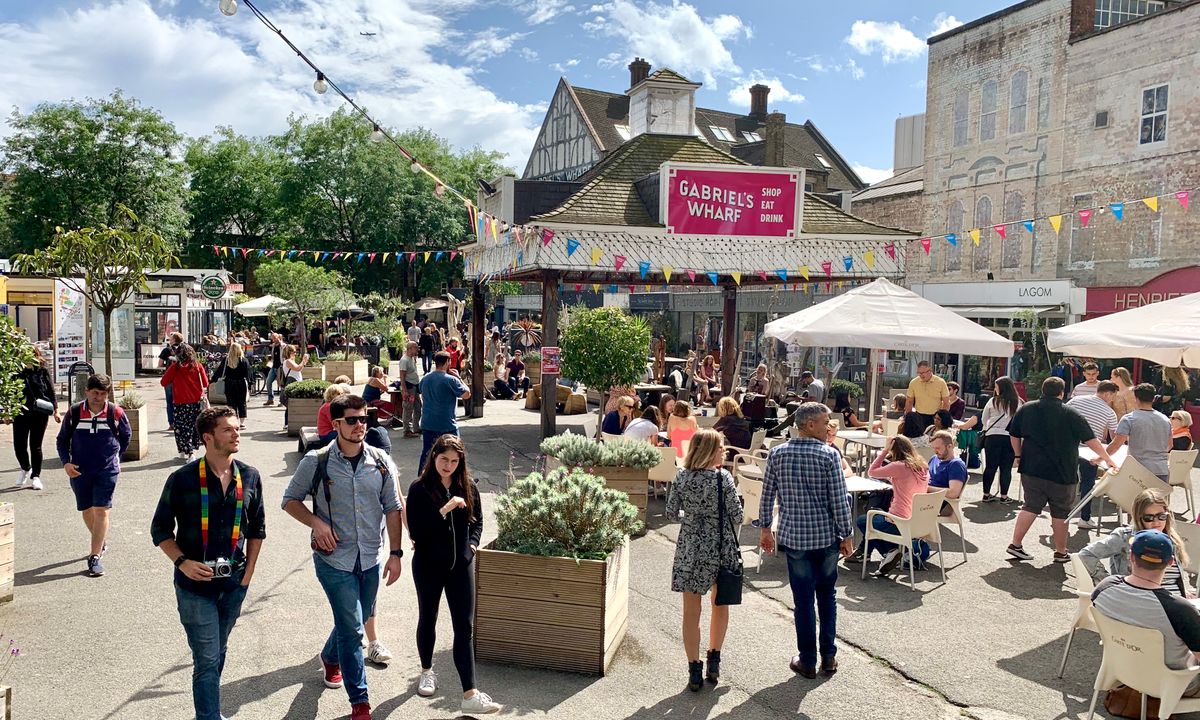

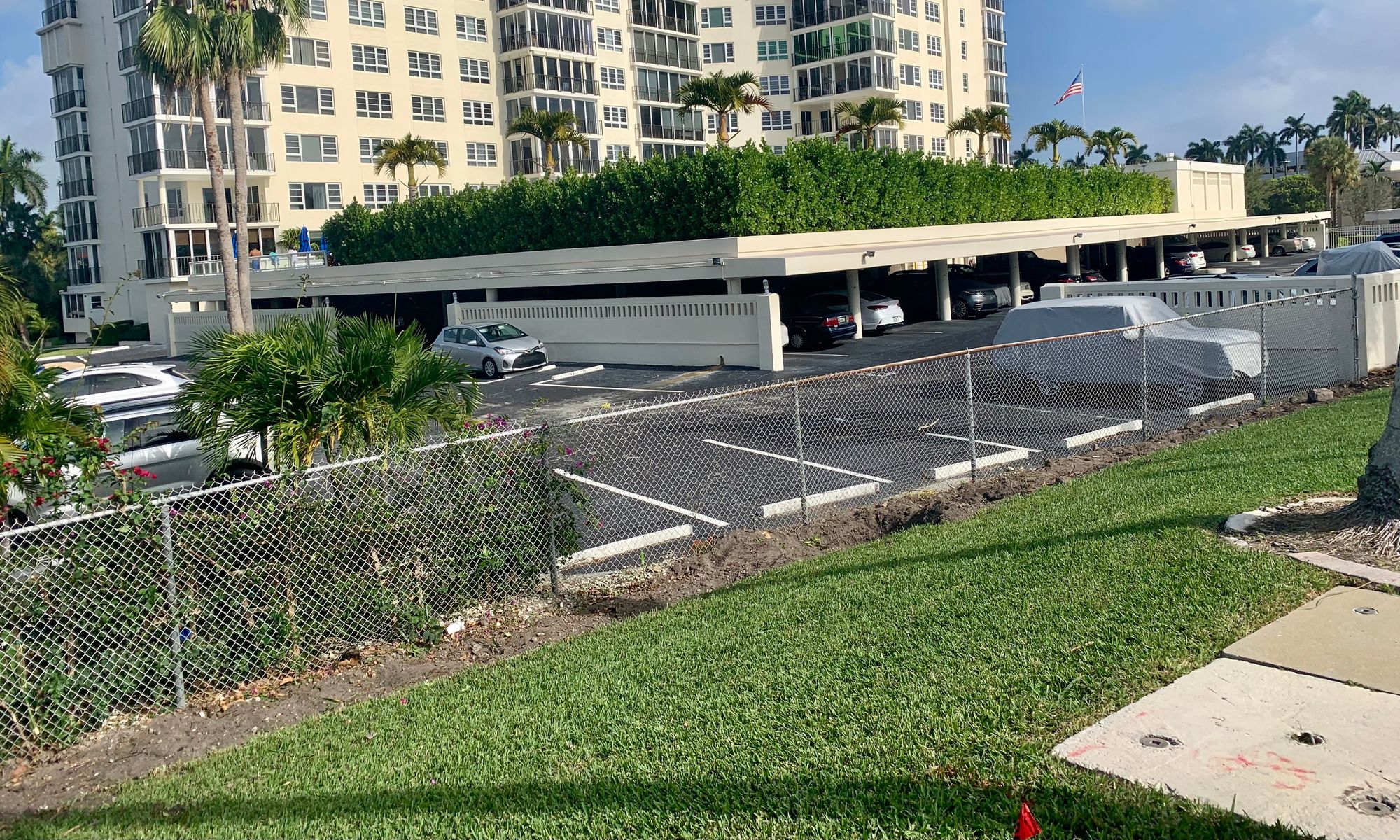
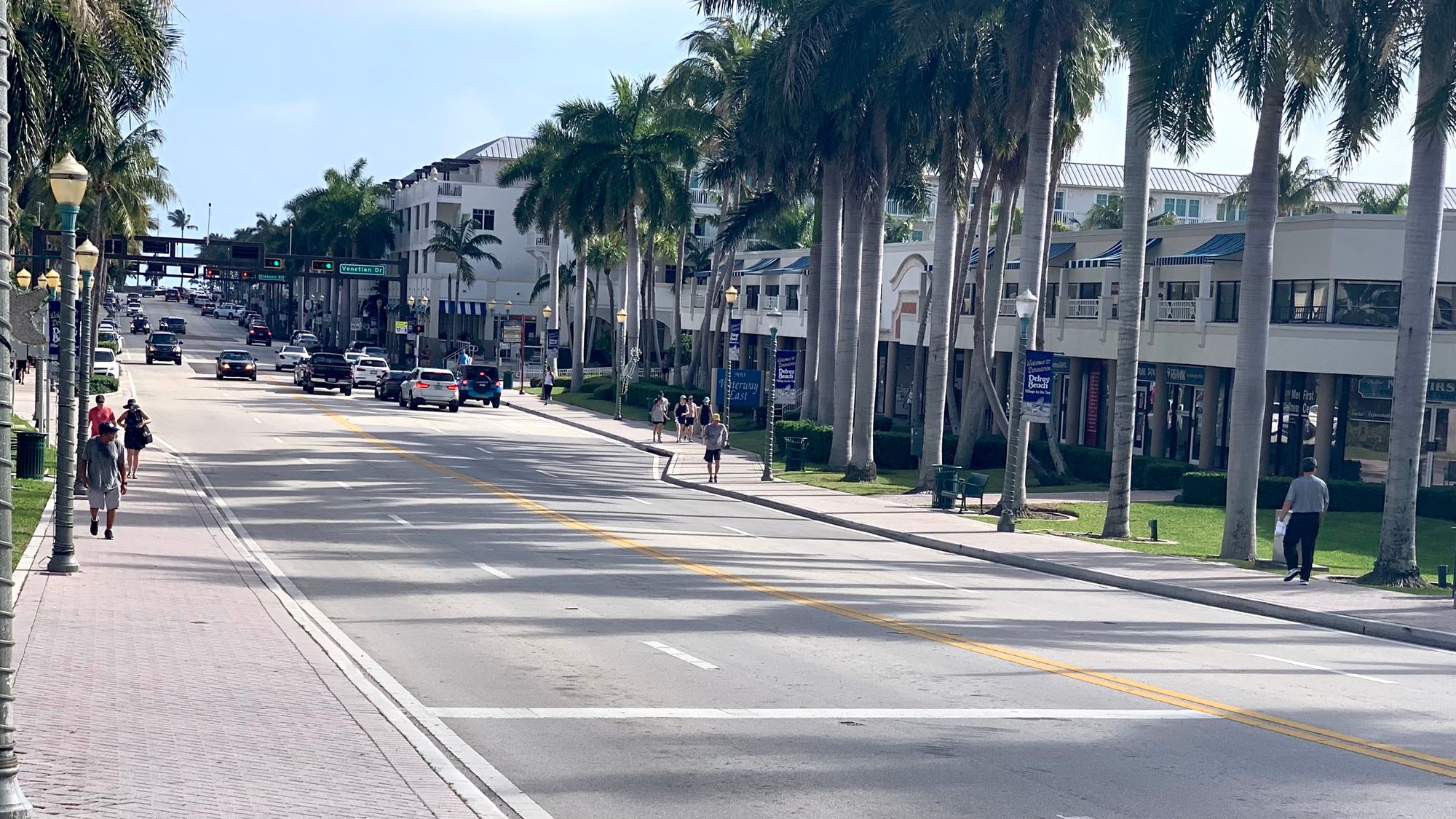
Stockholm has a promenade leading to the Baltic Sea that could be a great benchmark for Atlantic Avenue.
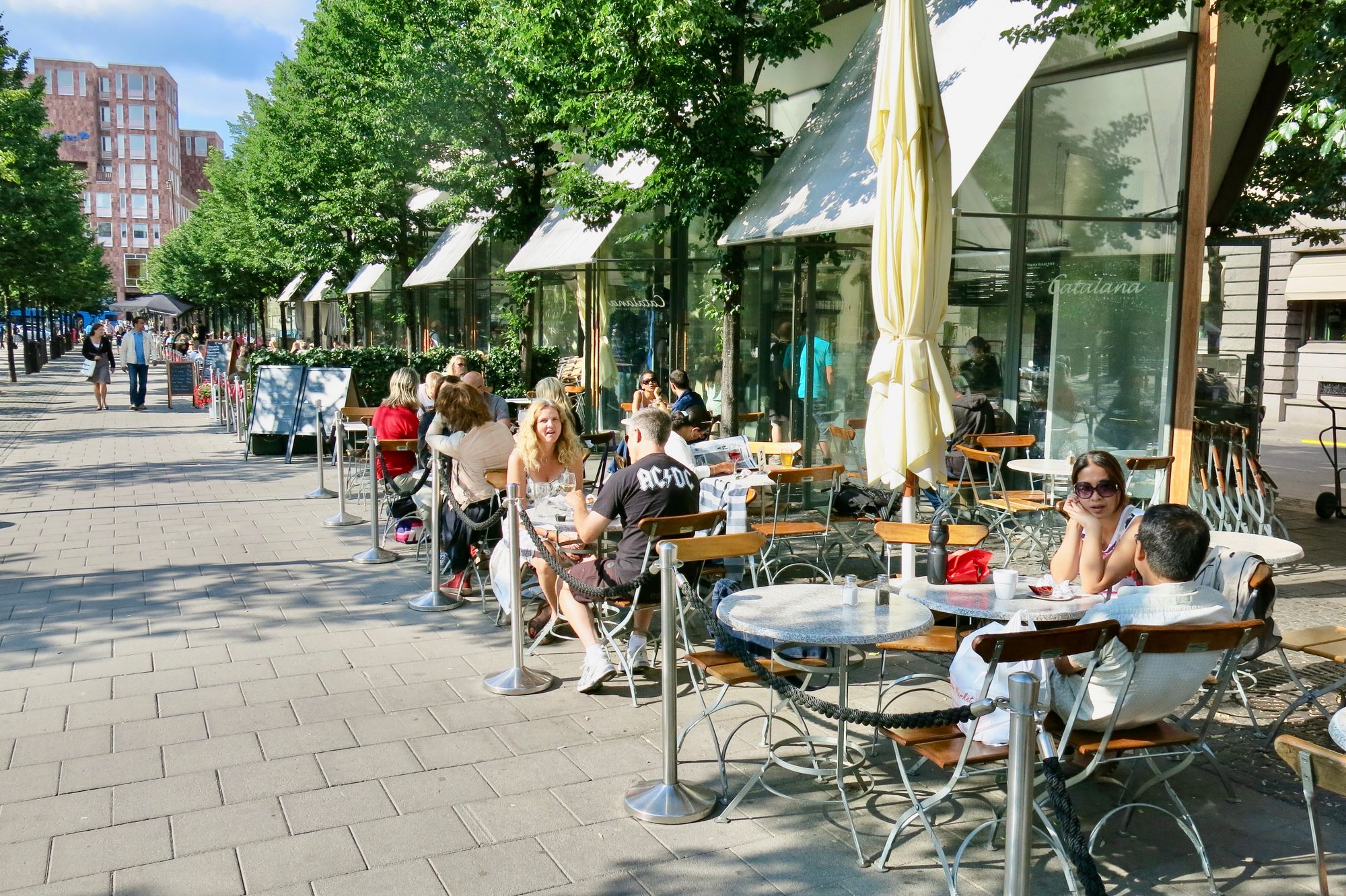
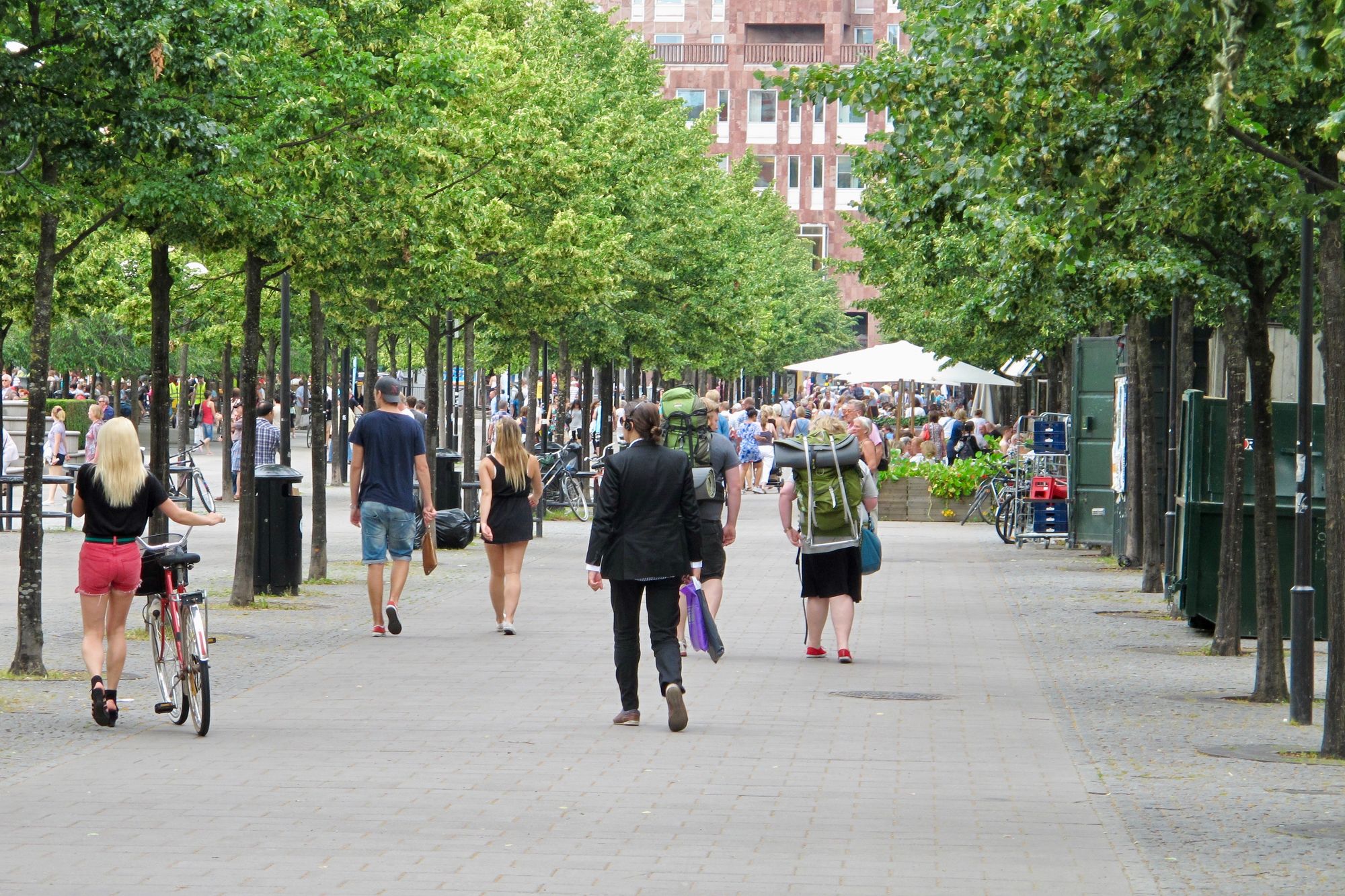
The Hotels
The three hotels with blank walls and set-apart sidewalks in this area don't contribute to the character of town and add little of value to their surroundings.
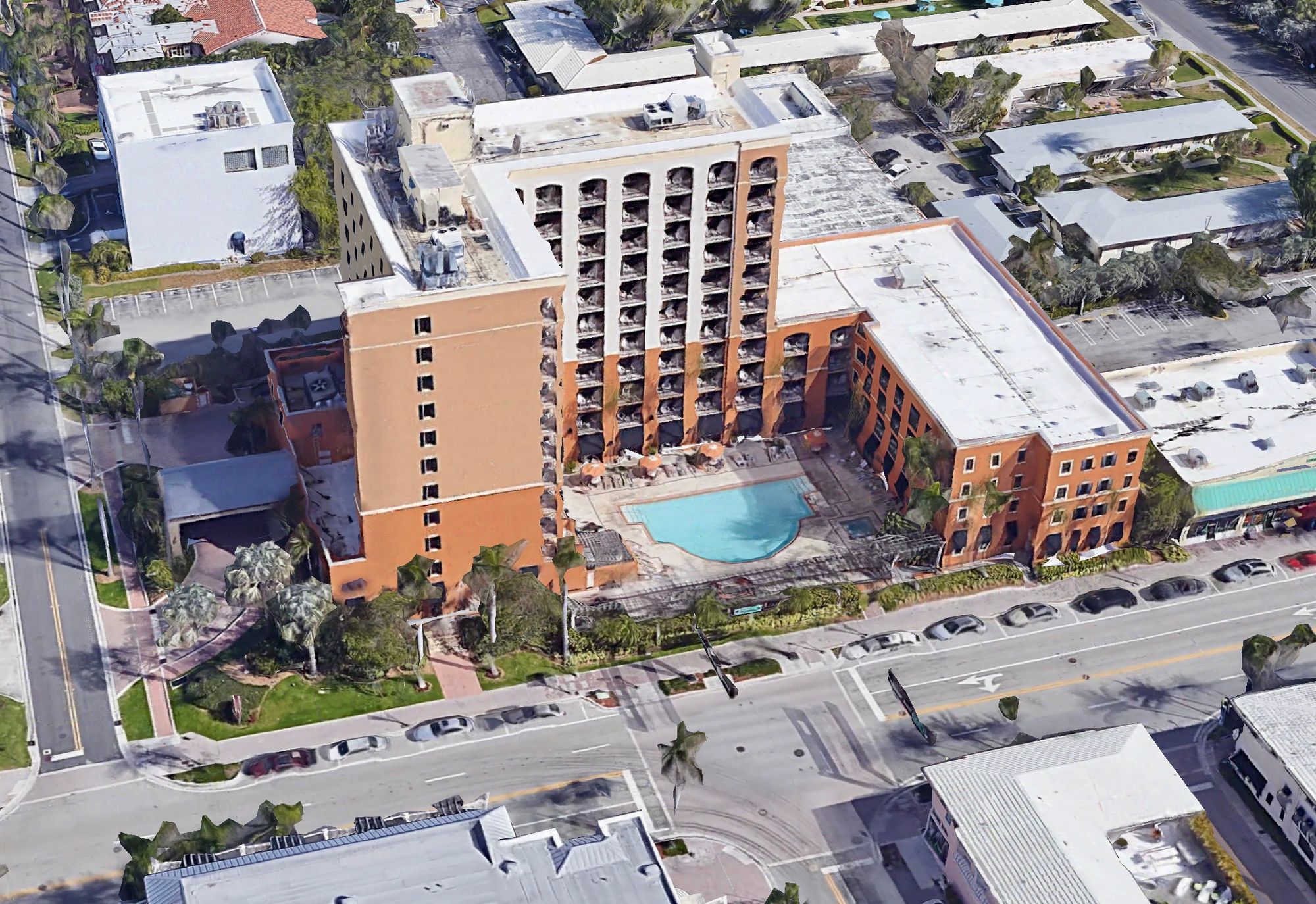
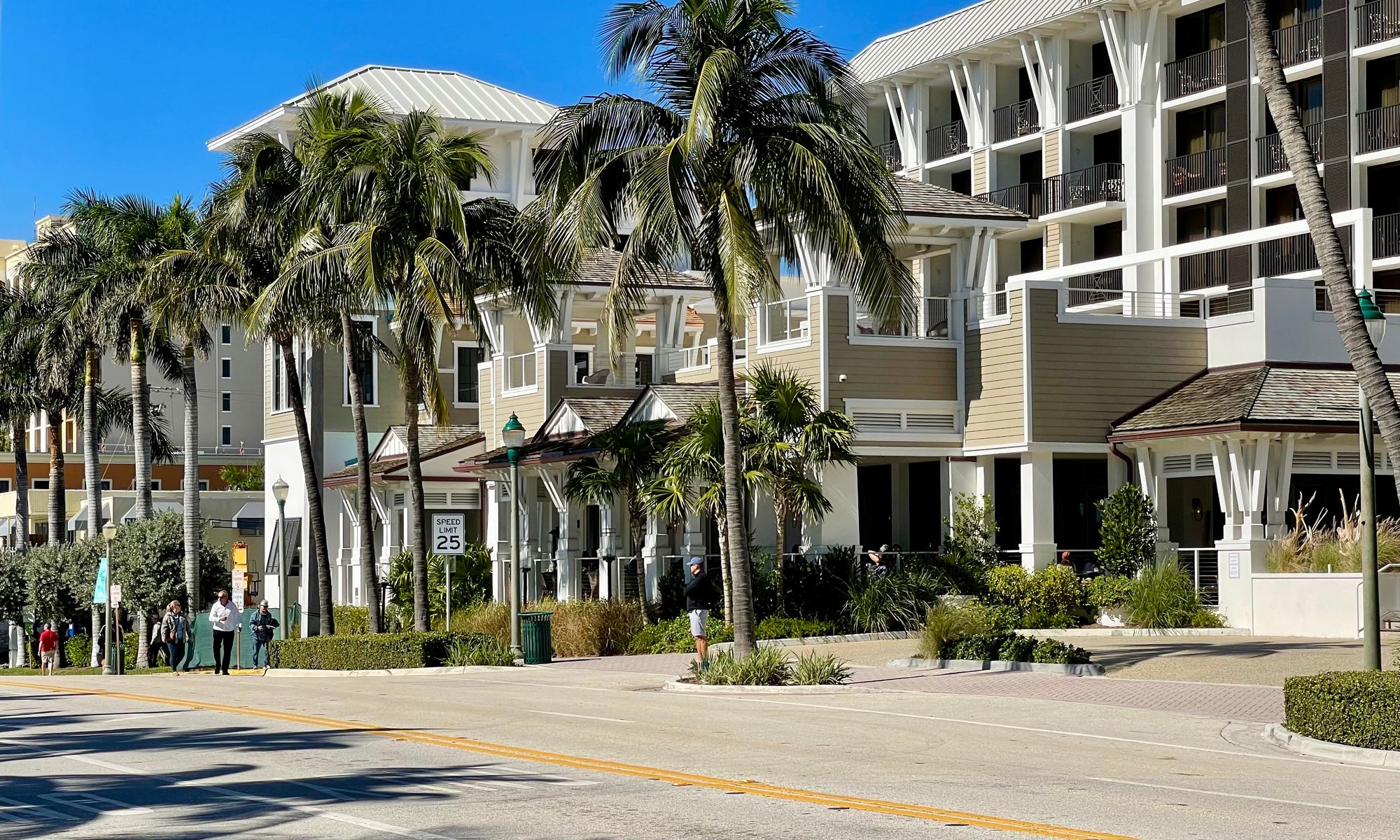
Marriott and Opal Grand have no presence on the Avenue
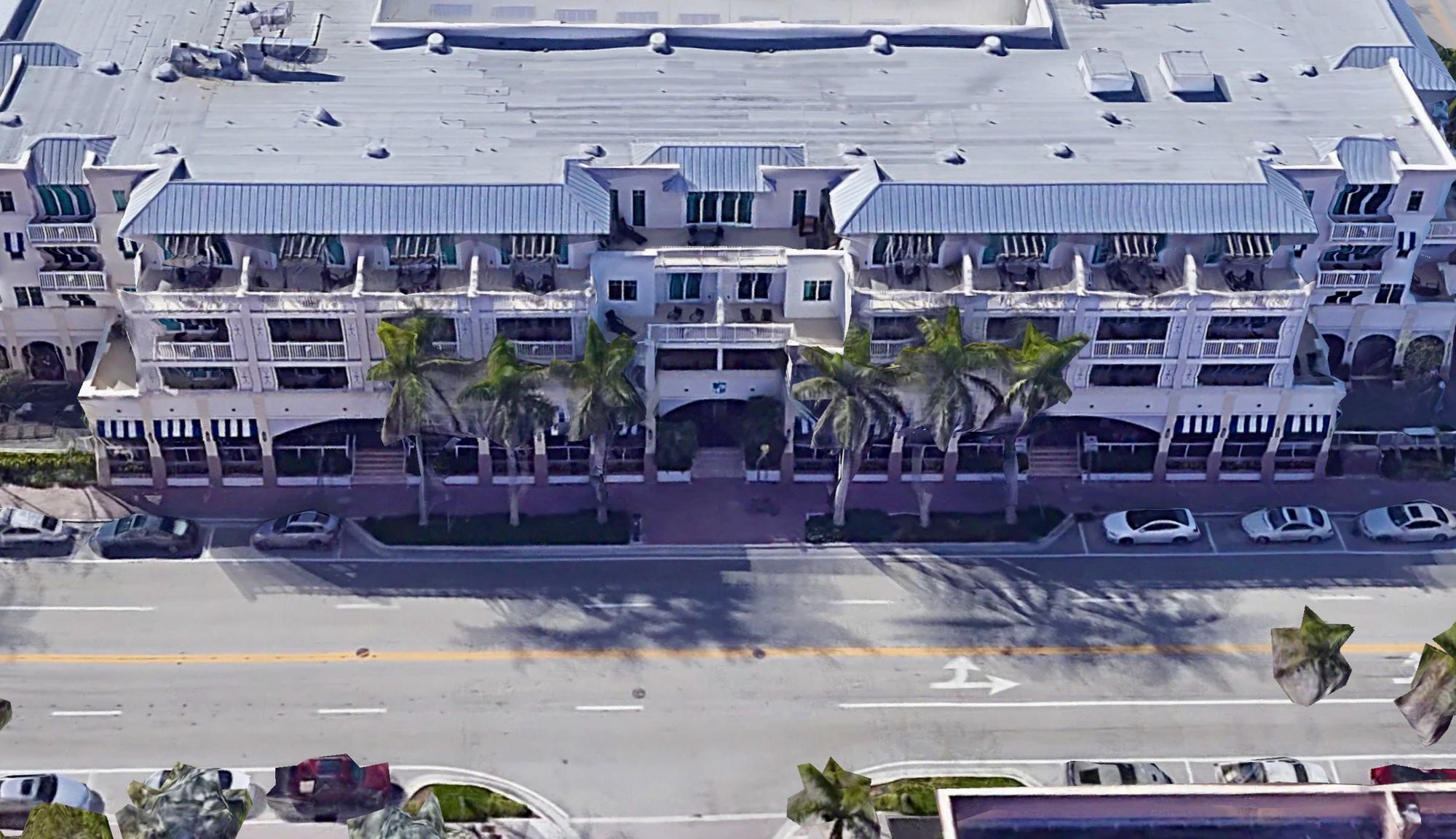
The A1A and Atlantic Ave Intersection
This intersection is the most valuable property for the city of Delray Beach because the main street meets the ocean. There is therefore a strong need to create a true destination here. Deerfield Beach, Boca Raton, Fort Lauderdale, Palm Beach and all the communities between Fort Lauderdale and Miami Beach have beachfront destinations that define their city. Right now, the meeting of AIA and Atlantic Avenue is just another bland intersection on a crowded road.
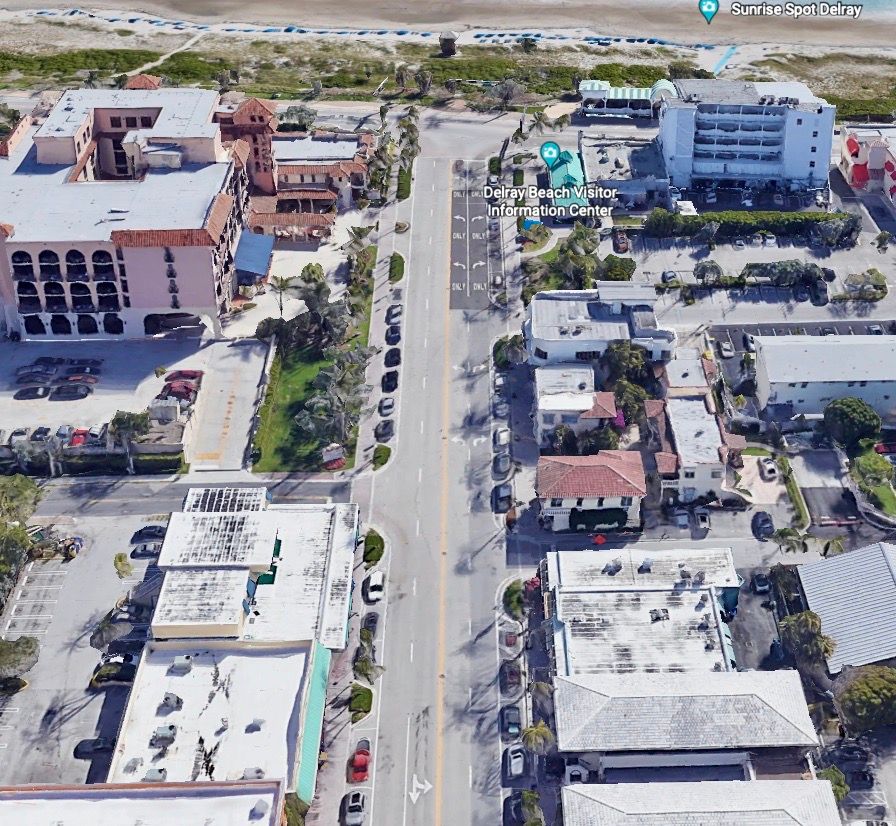
Atlantic Avenue A1A Intersection: Six lane section with parking and an intersection at the ocean that is a big nothing
The sidewalks leading up to this important point should be expanded and full of interesting places that people want to visit, thus building up interest that would culminate in an impressive ocean-side destination.
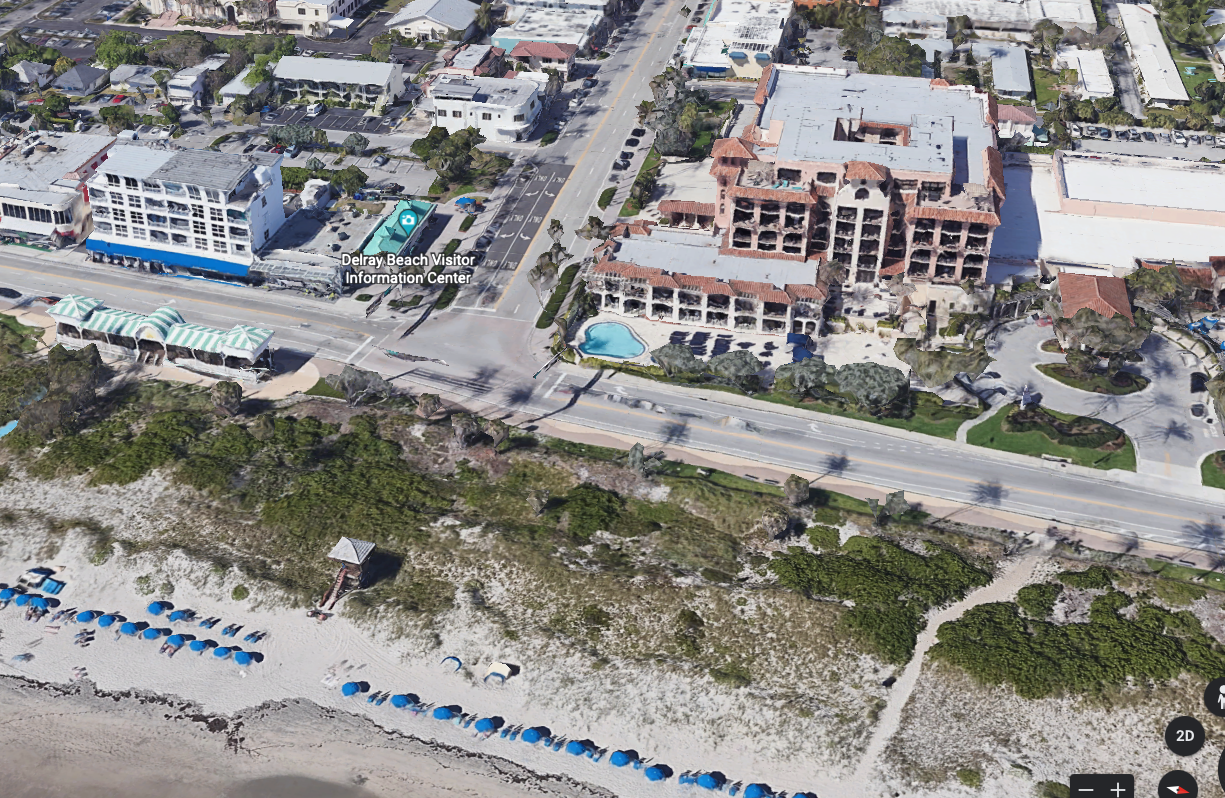
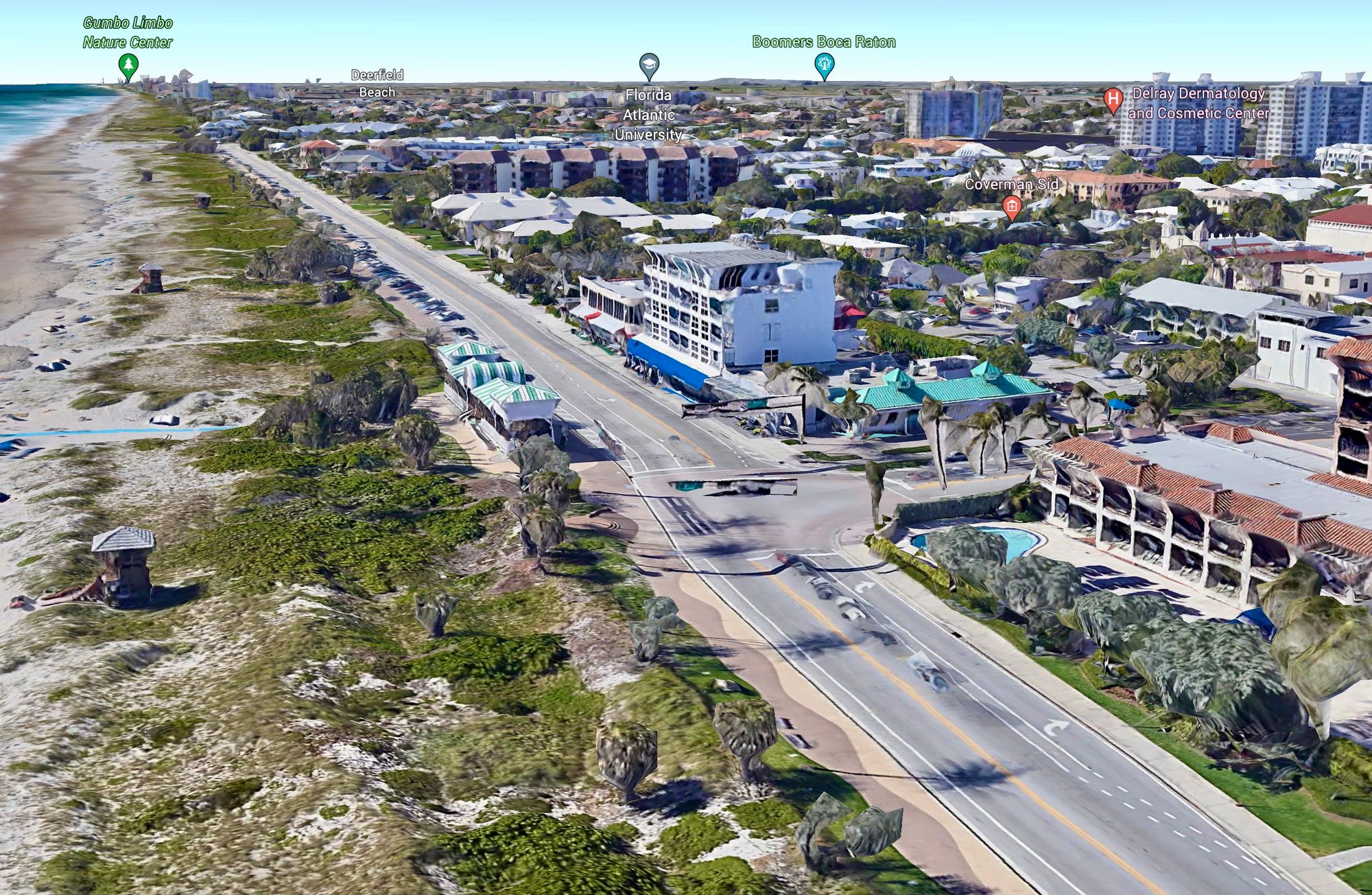
A1A occupies the main space along the coast
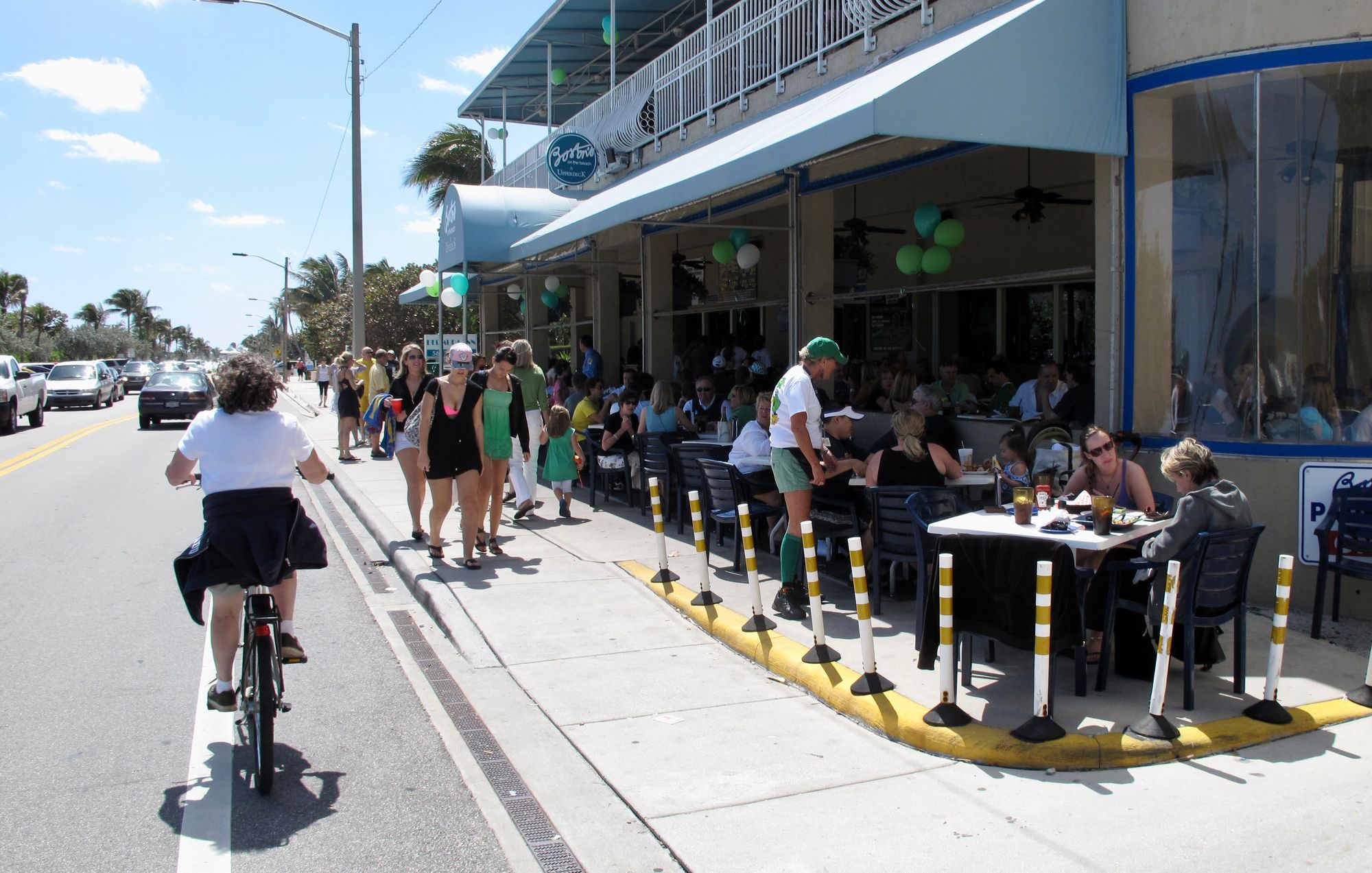
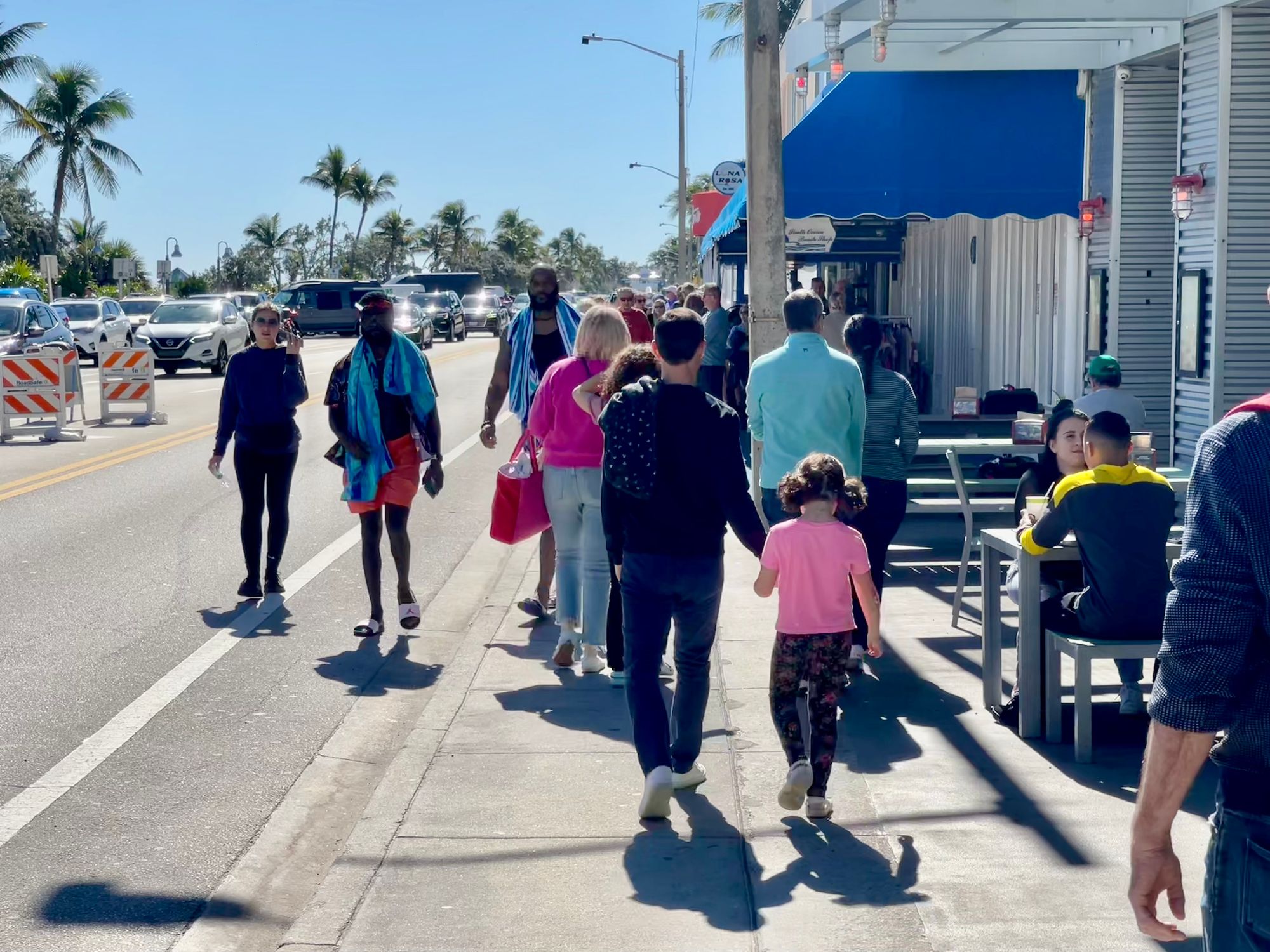
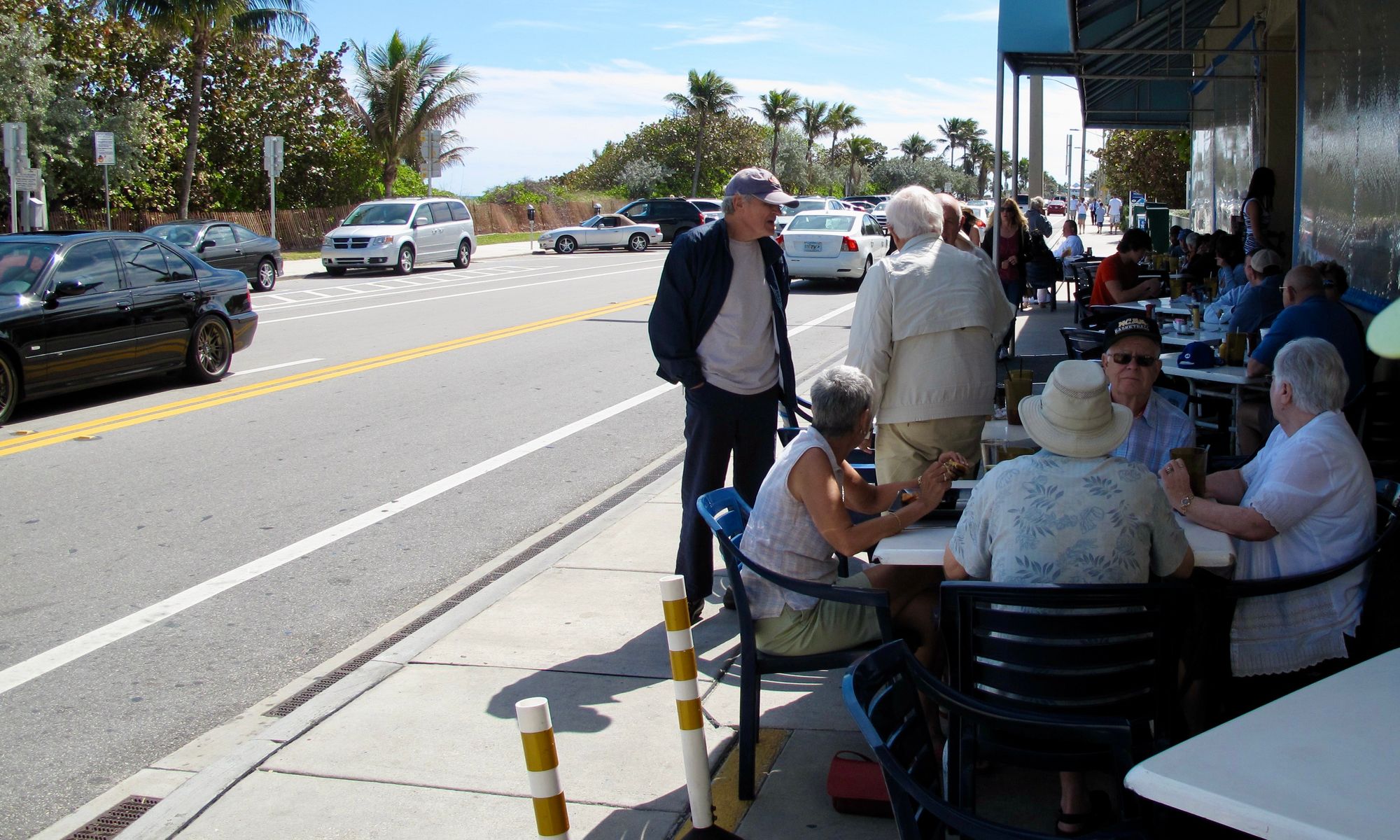
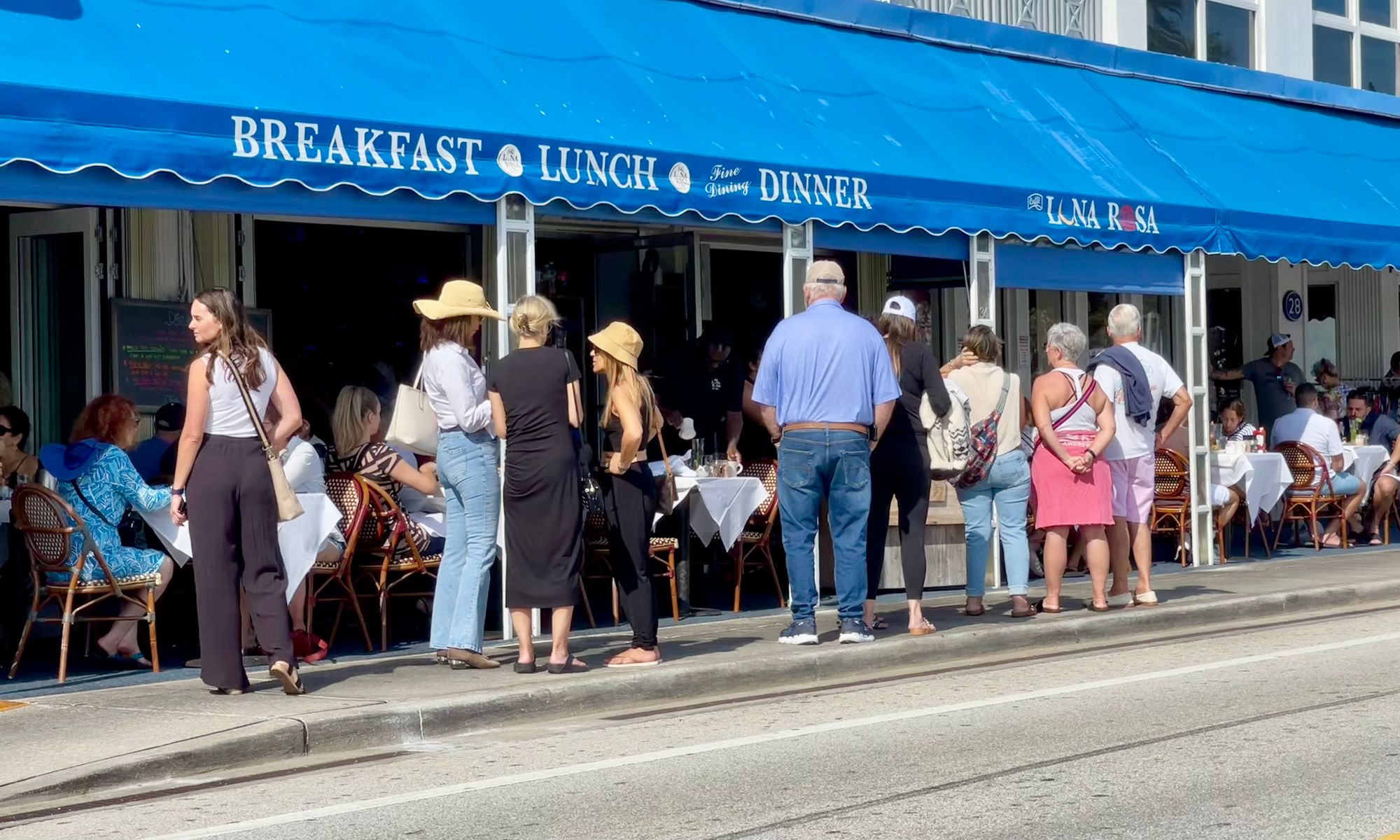
Atlantic Avenue a Needs a Dramatic Focal Point and Promenade
Narrow sidewalks on the prime site for ocean views is a waste. Other waterfront cities along the Atlantic Ocean are defined by their promenade and beach activities. Miami Beach, Deerfield Beach, Palm Beach and larger cities such as San Francisco, Santa Monica, Paris, Hong Kong and Chicago highlight their waterfronts as primary assets. Delray should do the same.
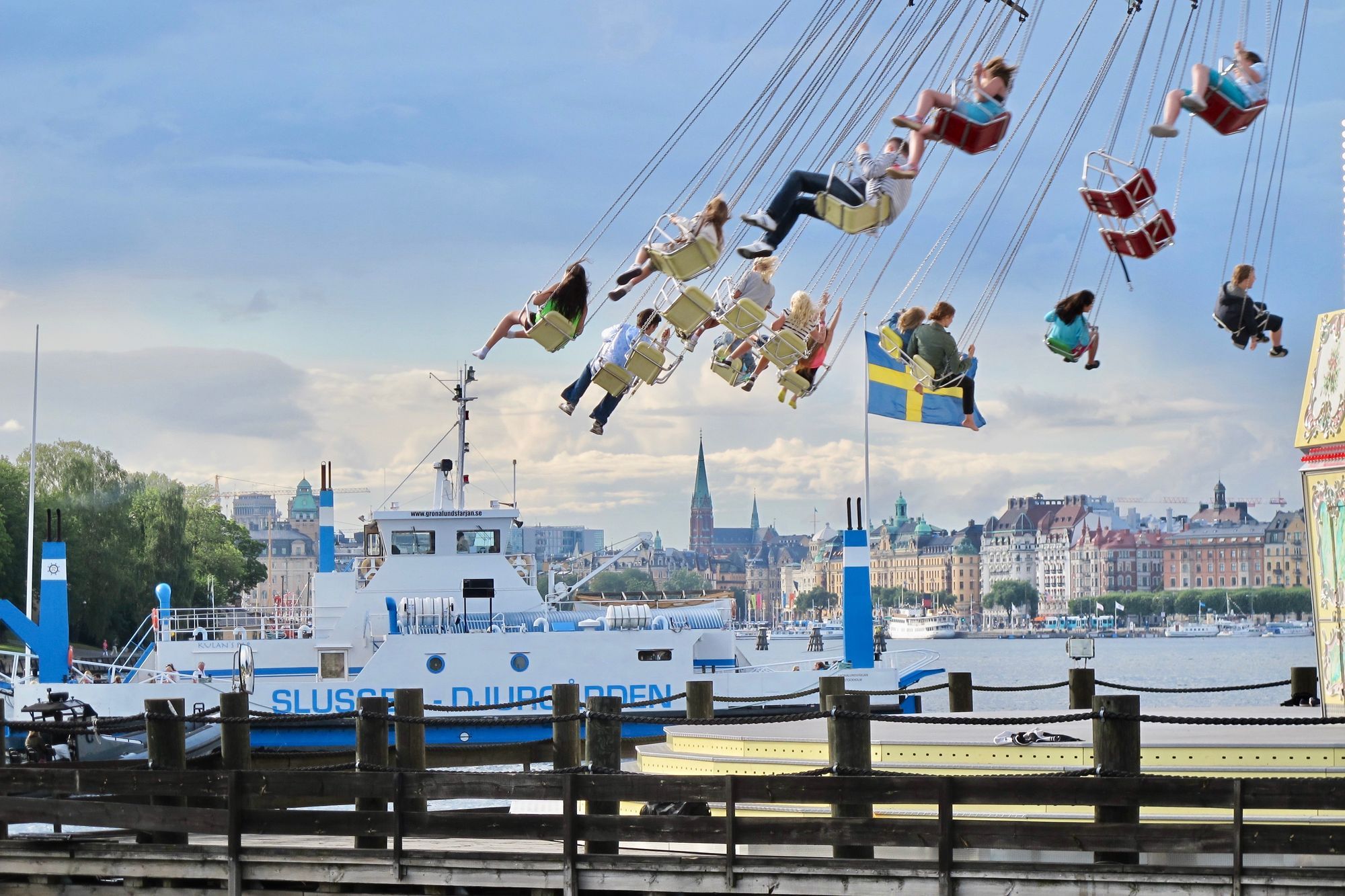
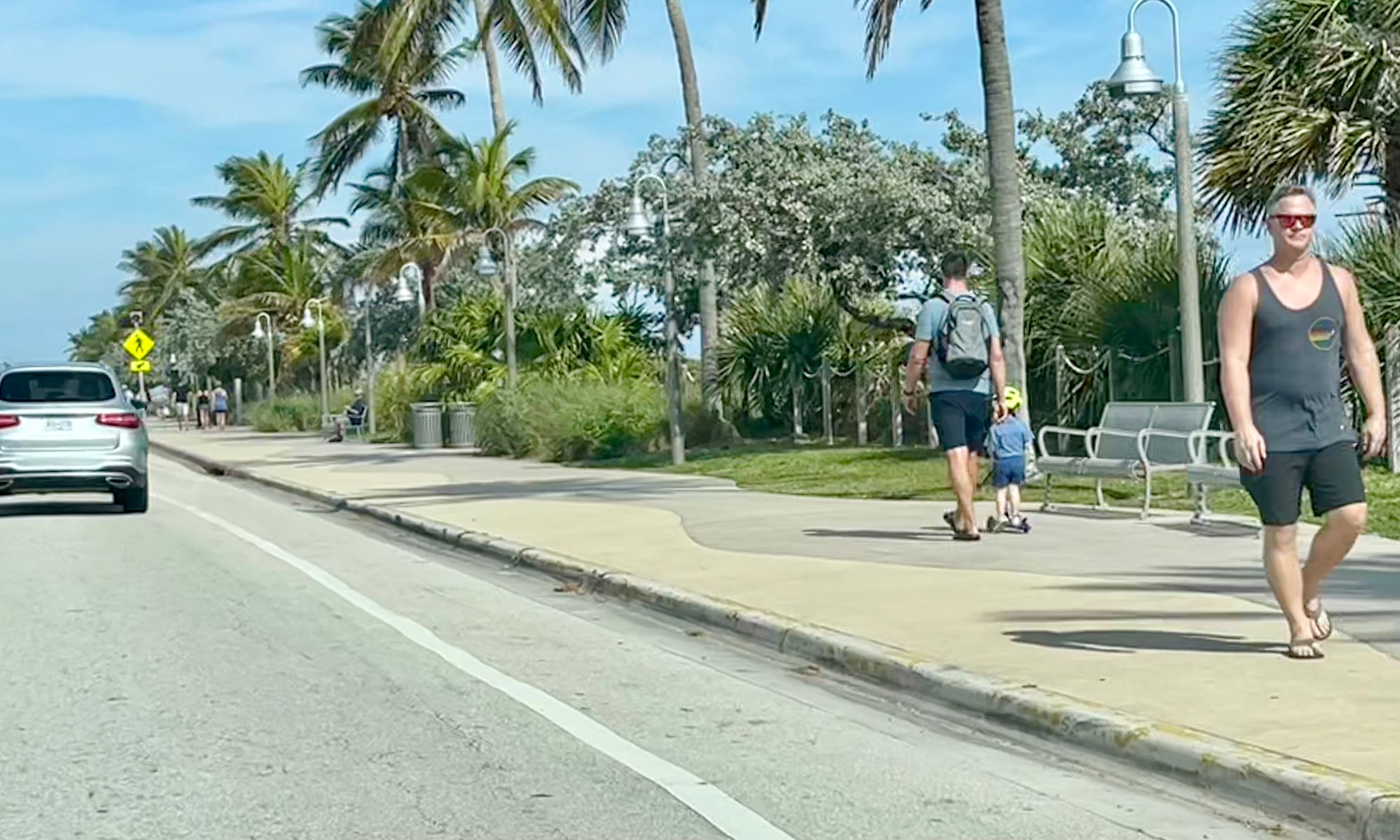
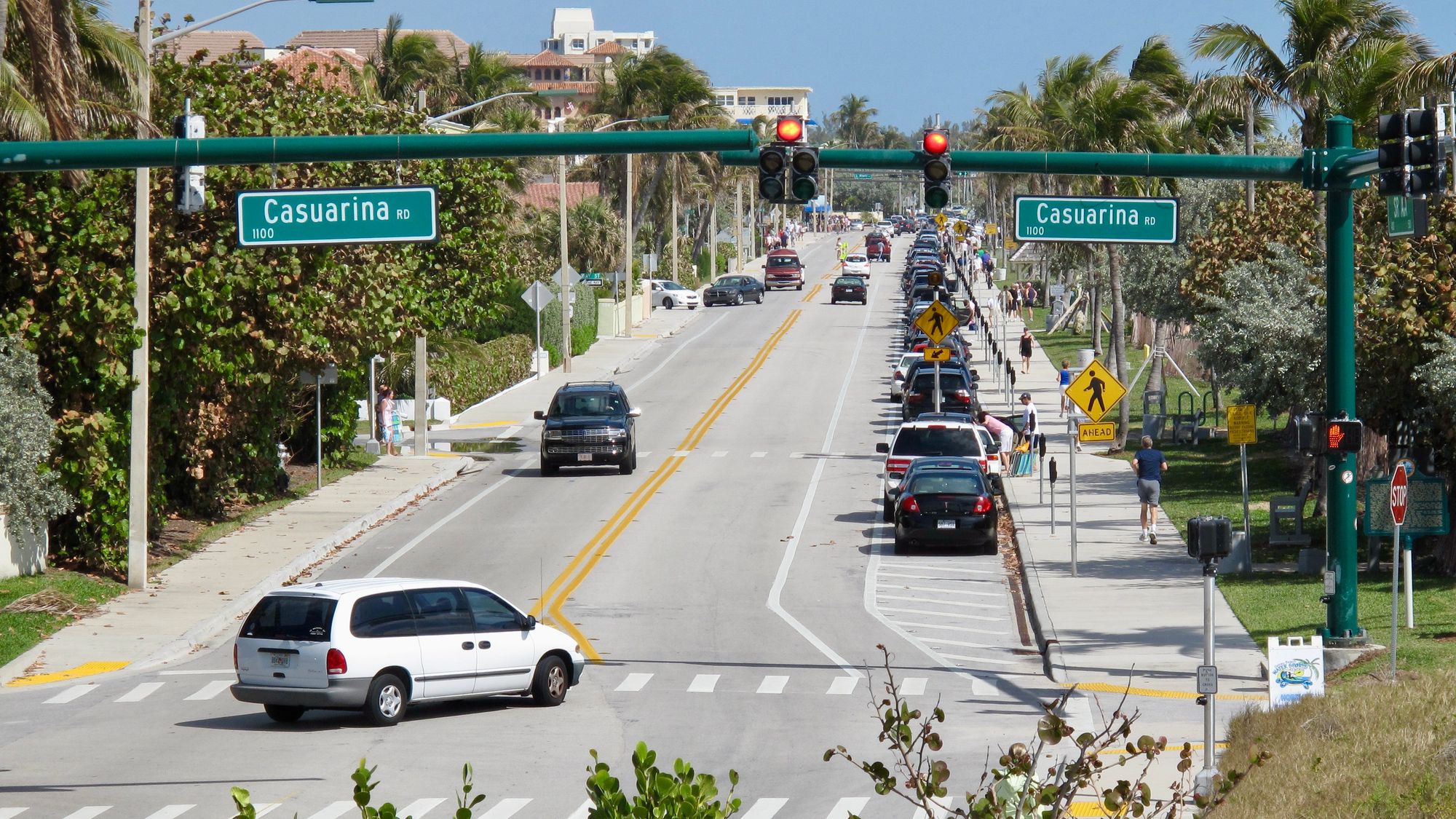
The street has turning lanes and parking spots in place of where a destination could give it the opportunity to shine that it deserves. Letting cars be the only ones to experience this amazing stretch of ocean-front passageway as they speed along it is unfair.
It would greatly benefit from a wide promenade that people can stroll along as they take in the views, much like in Otranto, Naples and Venice in Italy, Barcelona in Spain, and Halifax in Canada, among many others. A promenade would put pedestrians and nature center stage, thus making this a popular and iconic route.
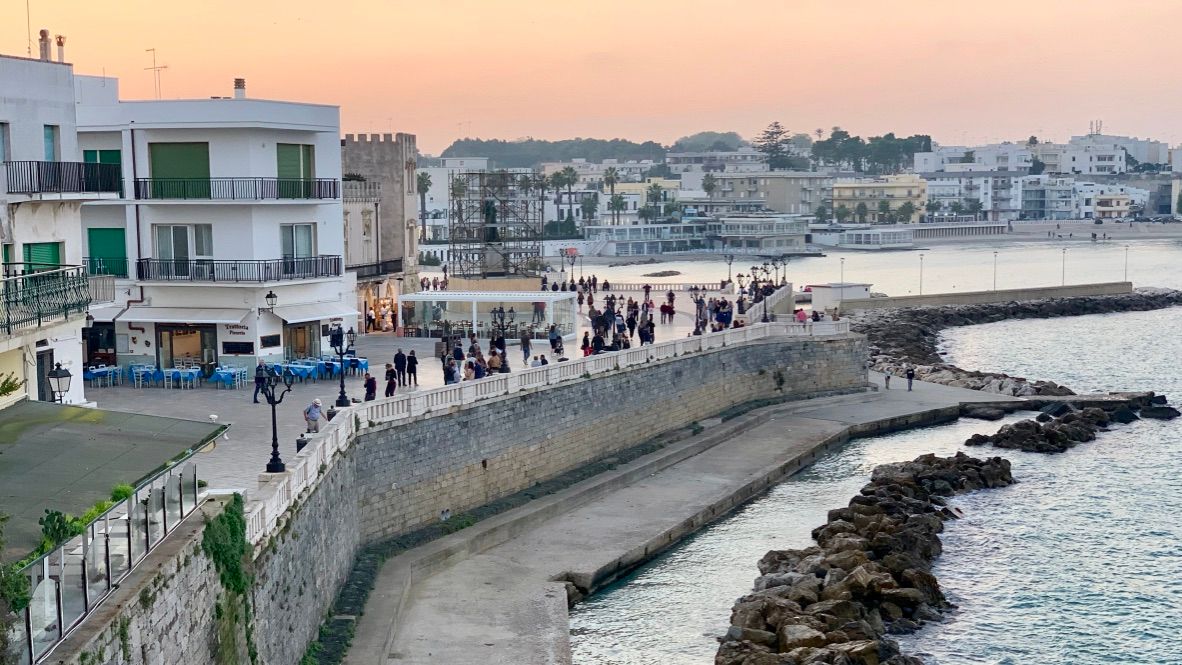
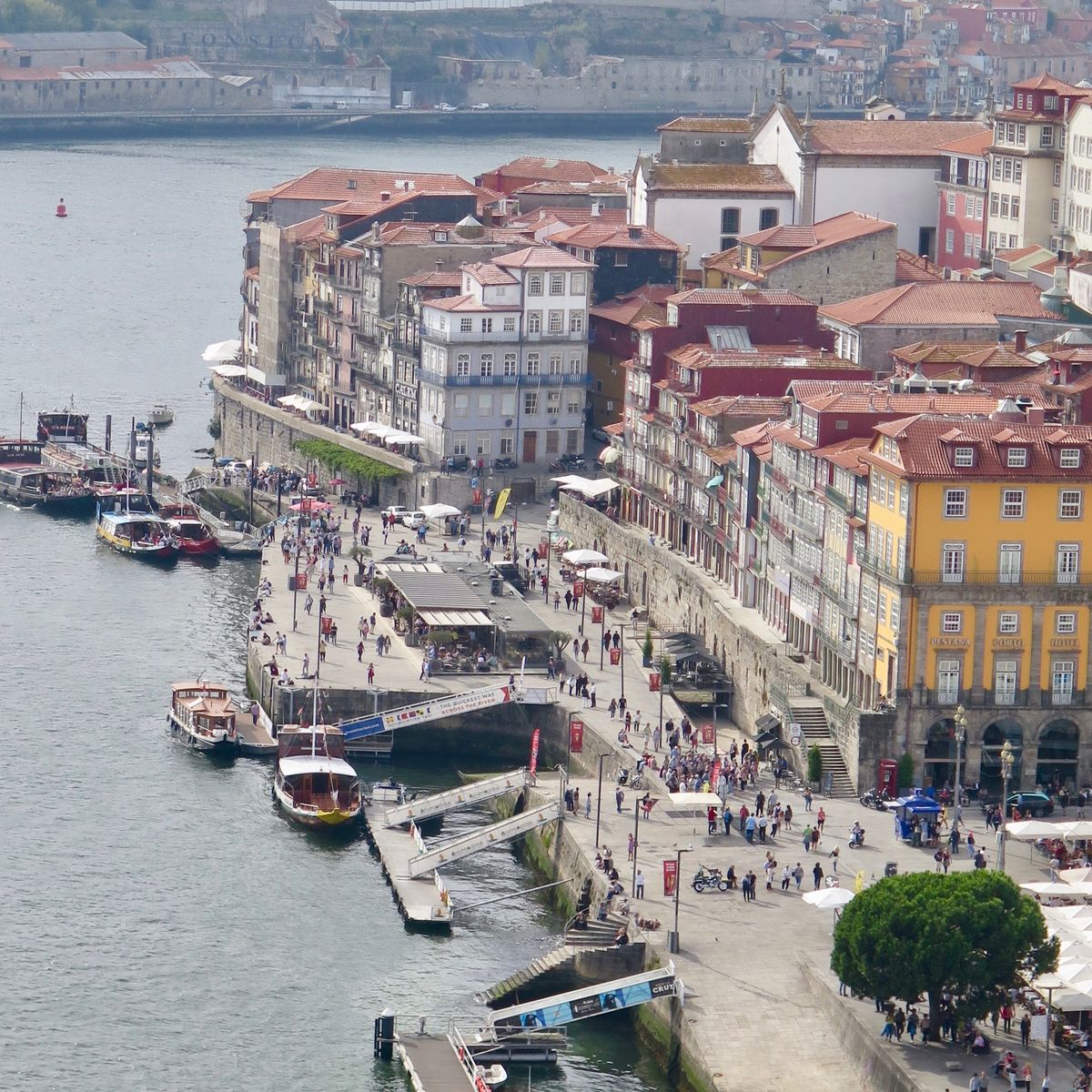

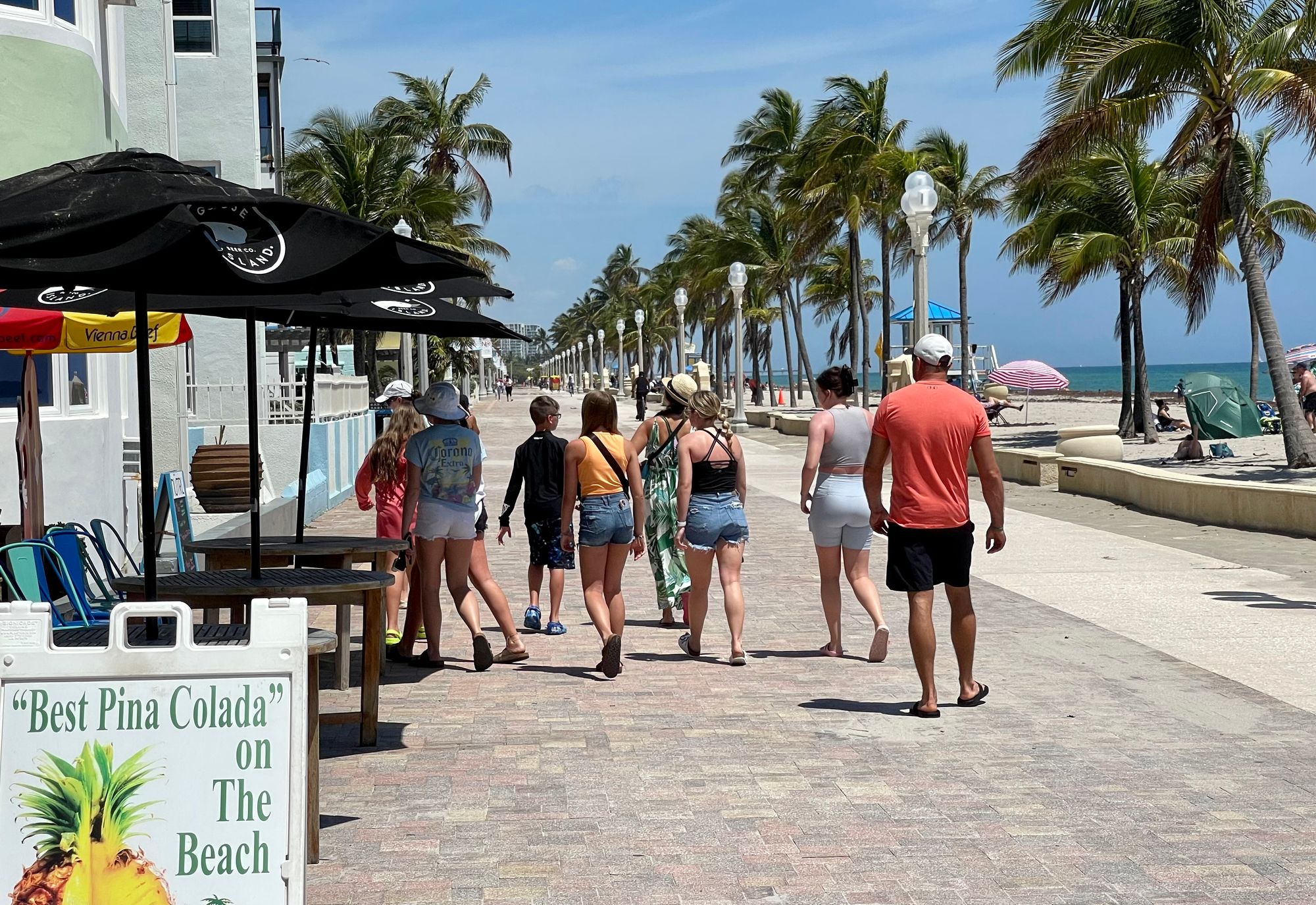
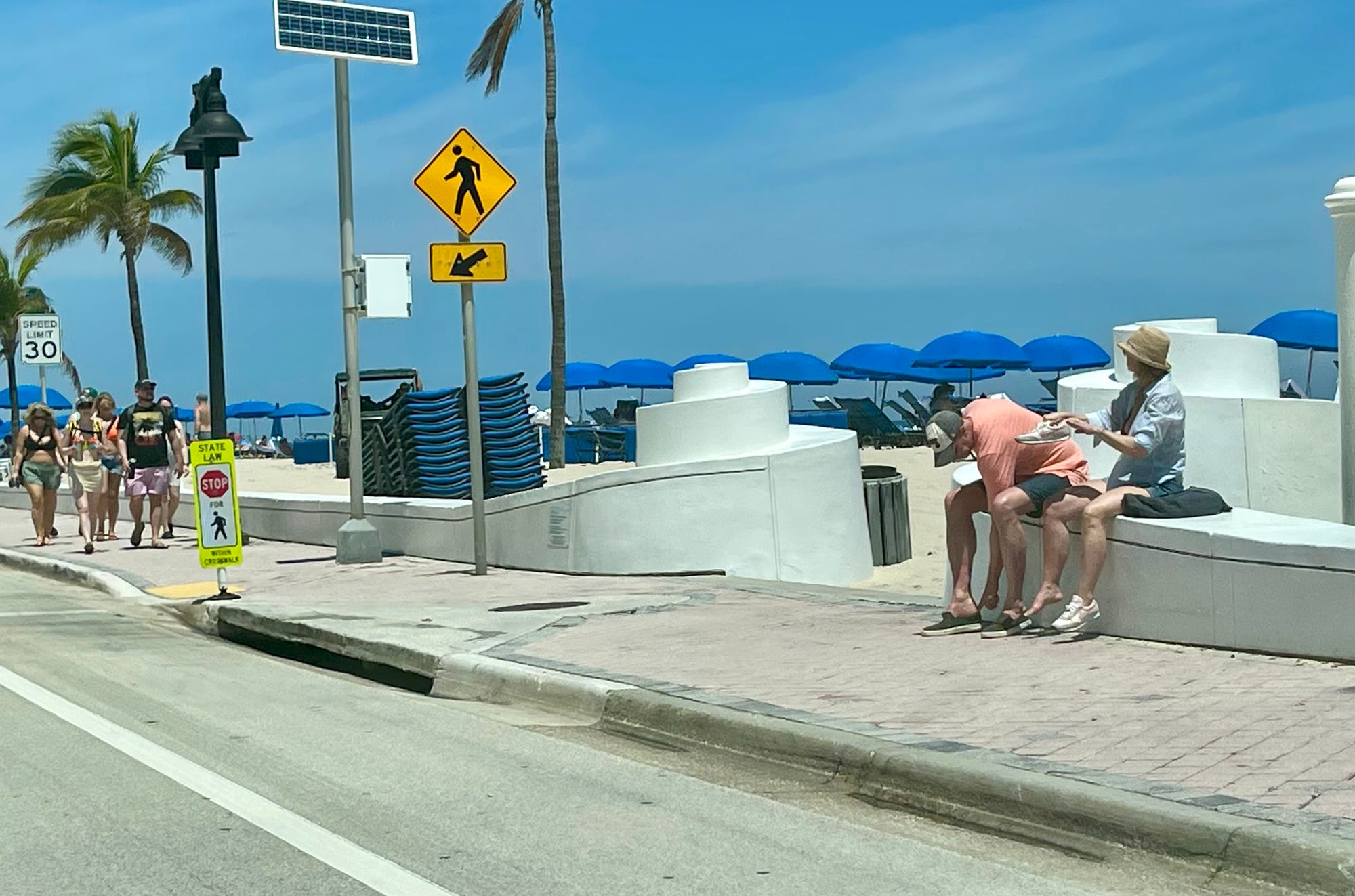
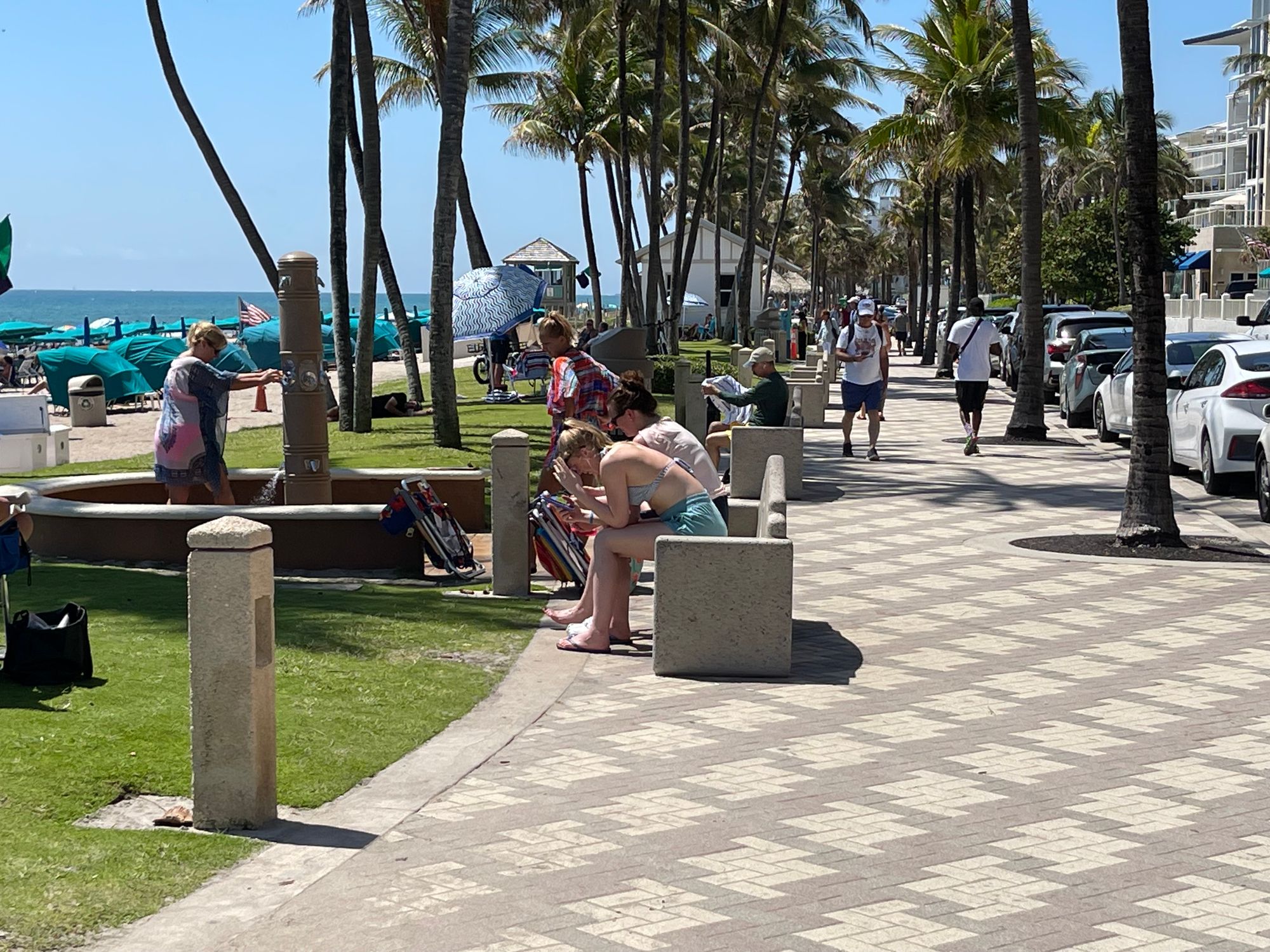
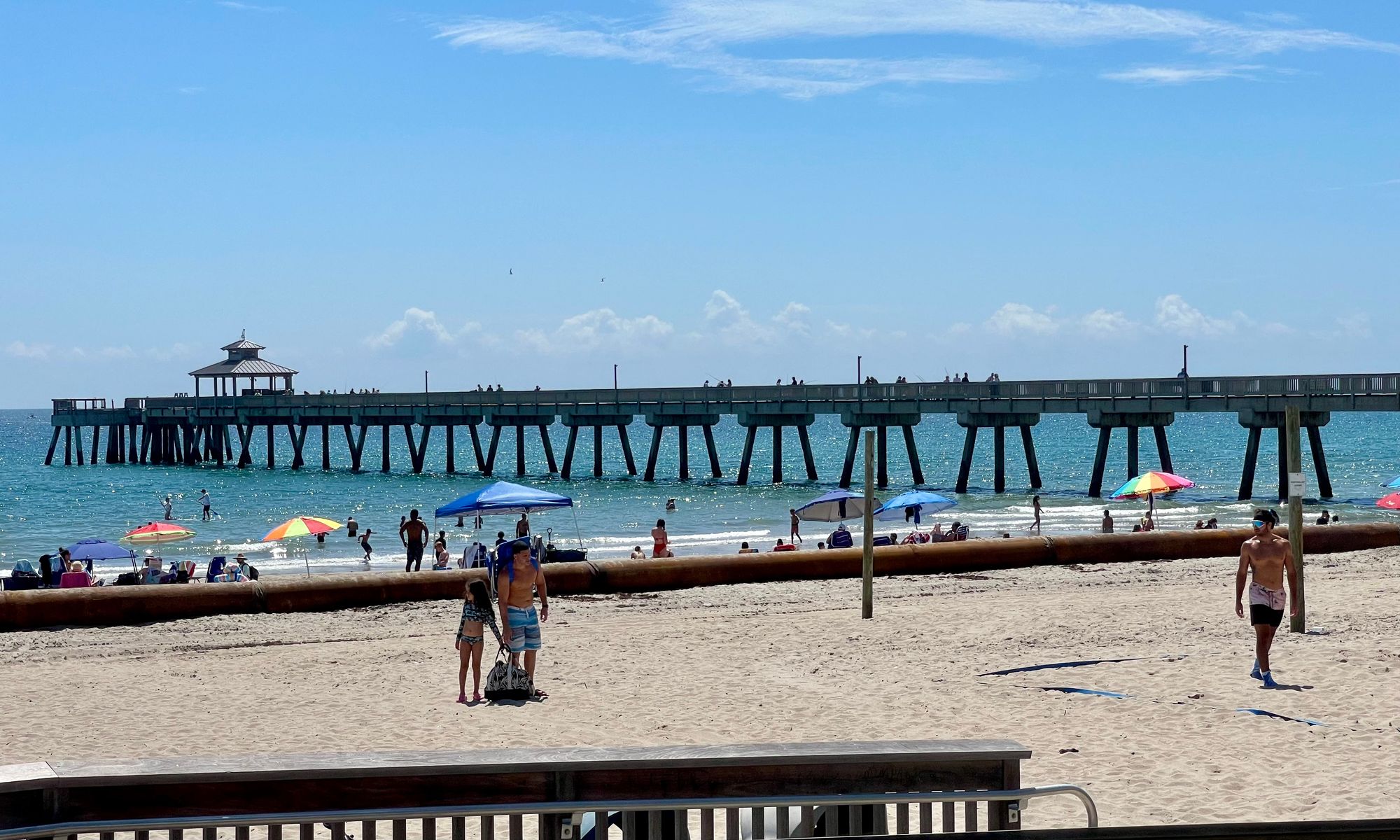
Hollywood - North Beach. Fort Lauderdale and Deerfield Beach
Takeaways
Start with the sidewalks
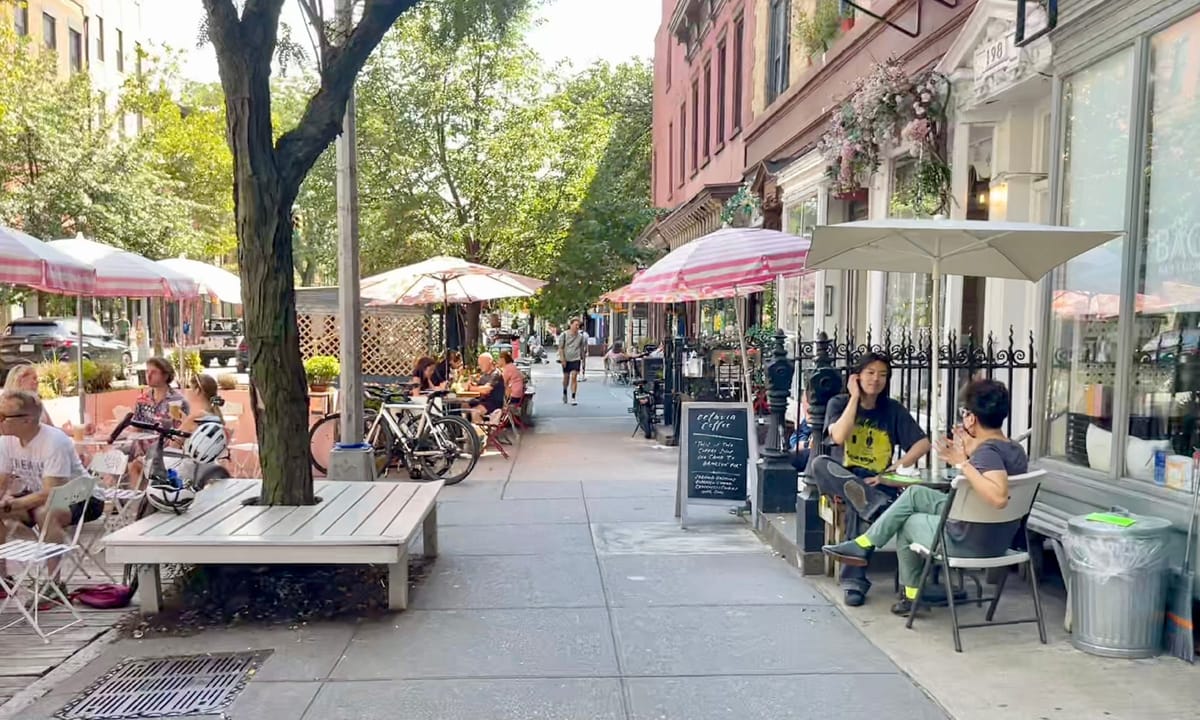
The impacts of overly wide streets and intersections are not limited to the streets themselves. They affect the whole town because of how they stifle the development of everything around said intersection. In Delray, terrible intersections bookend the downtown and cut it short. The active part of the main street could be significantly longer with so many more opportunities for social life and commercial life in both directions if these intersections and streets supported such activity rather than prioritizing the throughput of as many vehicles as possible.
The following recommendations are key to revitalizing this main street and many others like it:
- A street with one to two lanes facilitates vibrant social and commercial life. But with a three lane street or wider, the atmosphere changes, the area feels hostile since cars create a sense of danger and anxiety, and almost none of the social or economic activity that makes a place come alive can occur. Four lanes or more with parking creates an even stronger barrier to connecting; there is too much distance between both sides of the street for crossing to feel safe and comfortable, and there is too much stress caused by the dominant presence of cars.
- Transforming intersections into gateways to the offerings of the city has to become a priority. This means narrowing the street, eliminating turning lanes, and extending sidewalks at crossroads to bring life back to communities. We can and should move away from a situation where crossings are dominated by cars. We need to make corners focal points of social and commercial life.
- The uses and amenities on corners can stretch up the cross streets and into the surrounding neighborhoods in all directions, thus inviting people to visit valuable assets there too, not just reserve their patronage to the main street. This would encourage neighborhoods to expand their offerings, thus making the town a more multi-layered destination.
- The Atlantic Avenue sections where turn lanes have been added are places where the most possible opportunities are to rebuild and grow Atlantic's value moving into the future. Giving more space to streets, through turn lanes, means taking away space from people and businesses. This suffocates the social and commercial growth of the city. For example, starting at Federal (Route 1) South Bound, Atlantic Avenue returns to a four lane road with parking which totally destroys any semblance of being a thriving part of downtown Atlantic Avenue.
- Overly wide roads together with generic architecture that has no sense of character have created greatly under-performing areas. Taking back space from cars for social life as well as opening up isolated buildings so that they can interact with public life and become "members of the community" in their own right will be key to revitalizing this street.
- And finally, highlighting Atlantic Avenue's amazing natural assets like the ocean and Intracoastal can raise this street to iconic levels. Atlantic Avenue has so much potential to become one of the great main streets in the US, and these changes will help it live up to that.
Who We Are

We think of ourselves as long time part time residents of Delray Beach. Kathy, her sister and their parents started coming here over 70 years ago, and Kathy has been coming here for 68 years. We have biked on every street in Delray between I-95 and A1A, some over hundreds of times, and we have seen the creeping devastation erupting in certain neighborhoods. We have witnessed seeds of destruction beginning to take hold in our neighborhoods. This is happening all across the nation as we continue to turn our priorities toward cars vs. people. Our goal is to "go back to the future" and make people and social life a top priority in communities again.
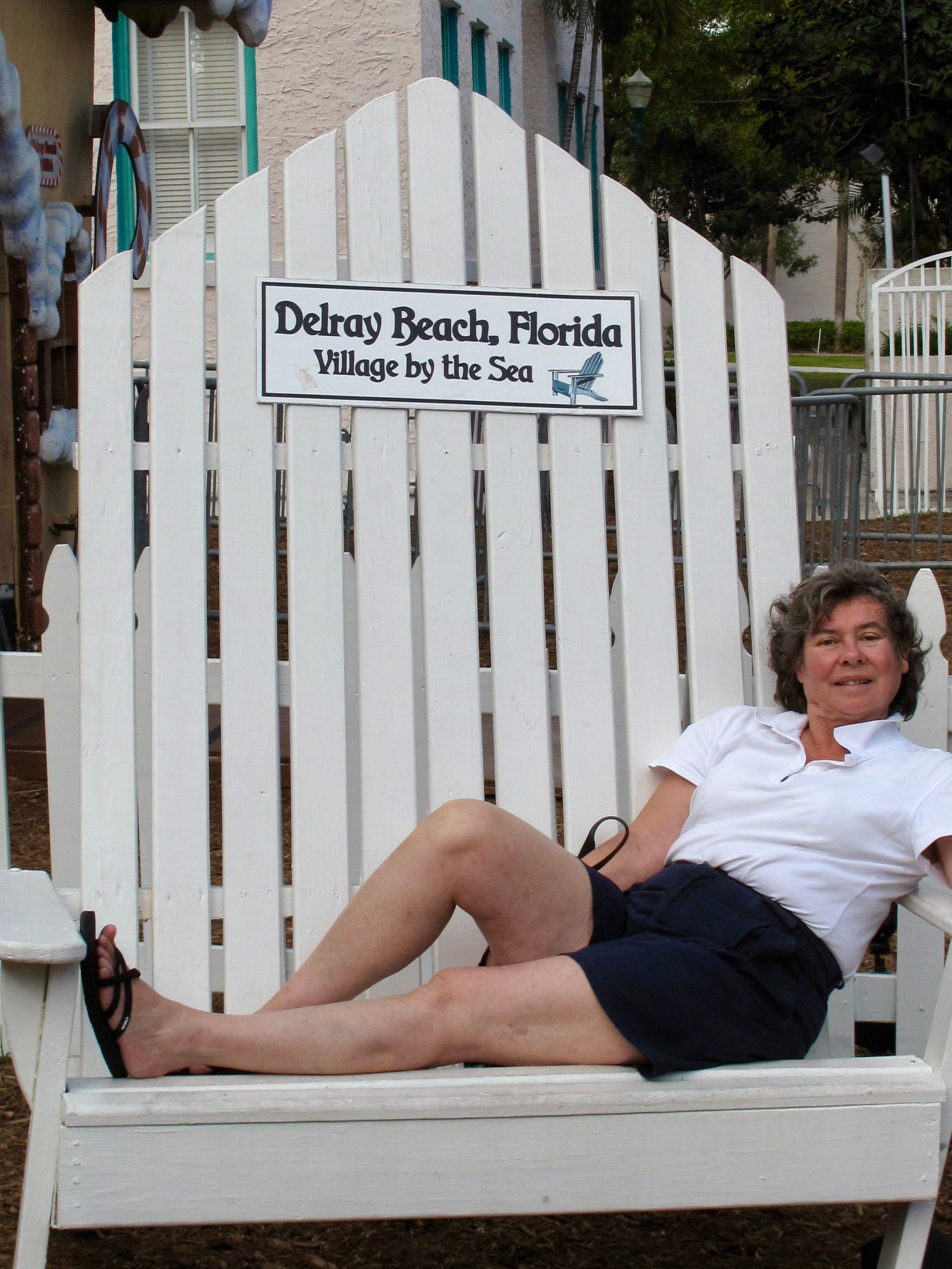
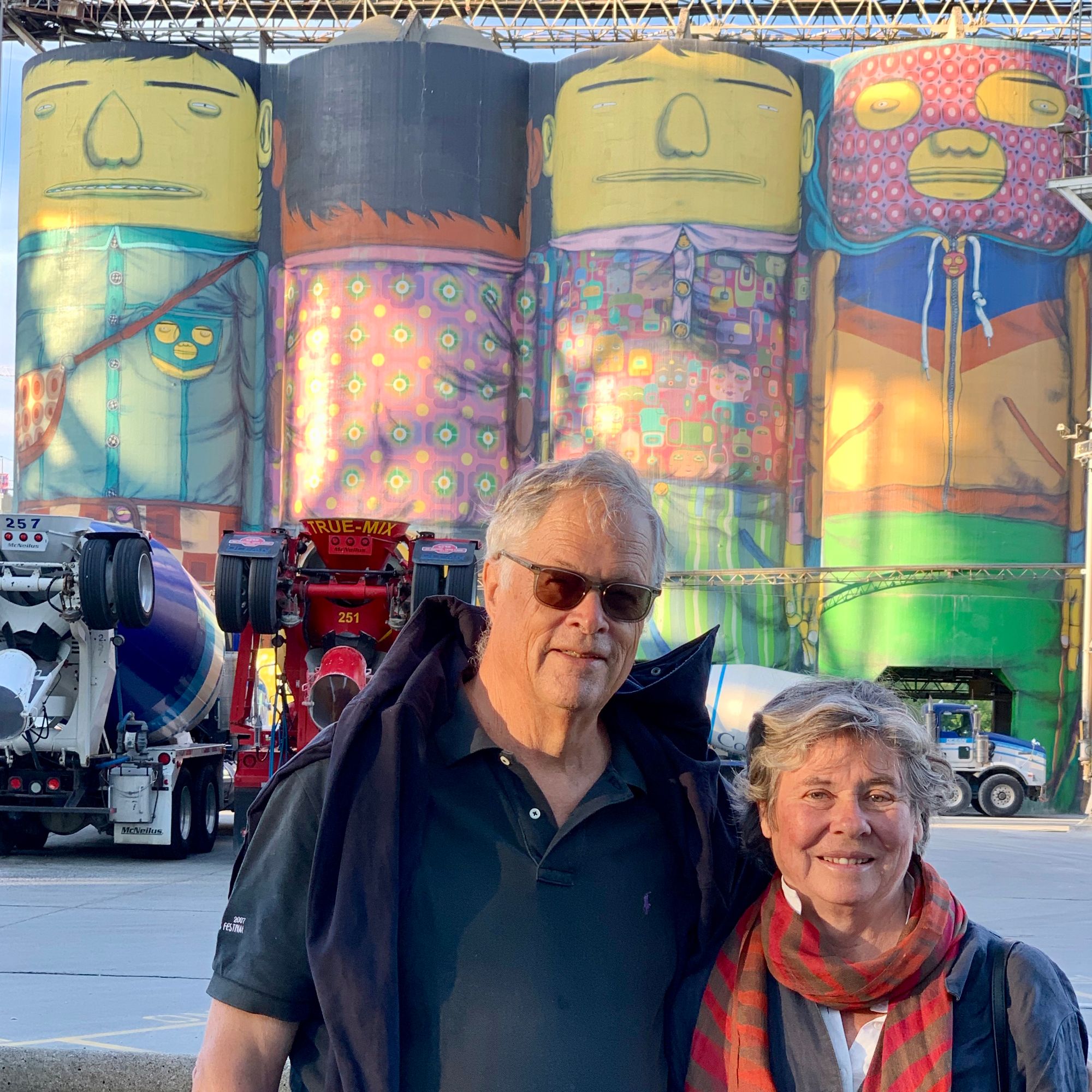
We are long time advocates for the placemaking movement as we have experienced what it's like to live in walkable, community-oriented neighborhoods with great public places, and how wonderful it is. While our second home is in Delray, our main home is in Brooklyn where our two sons and their families live in a walkable neighborhood called Cobble Hill, in a community within a community described as a "Pocket Neighborhood."
